Ear Surgery
Patient 1
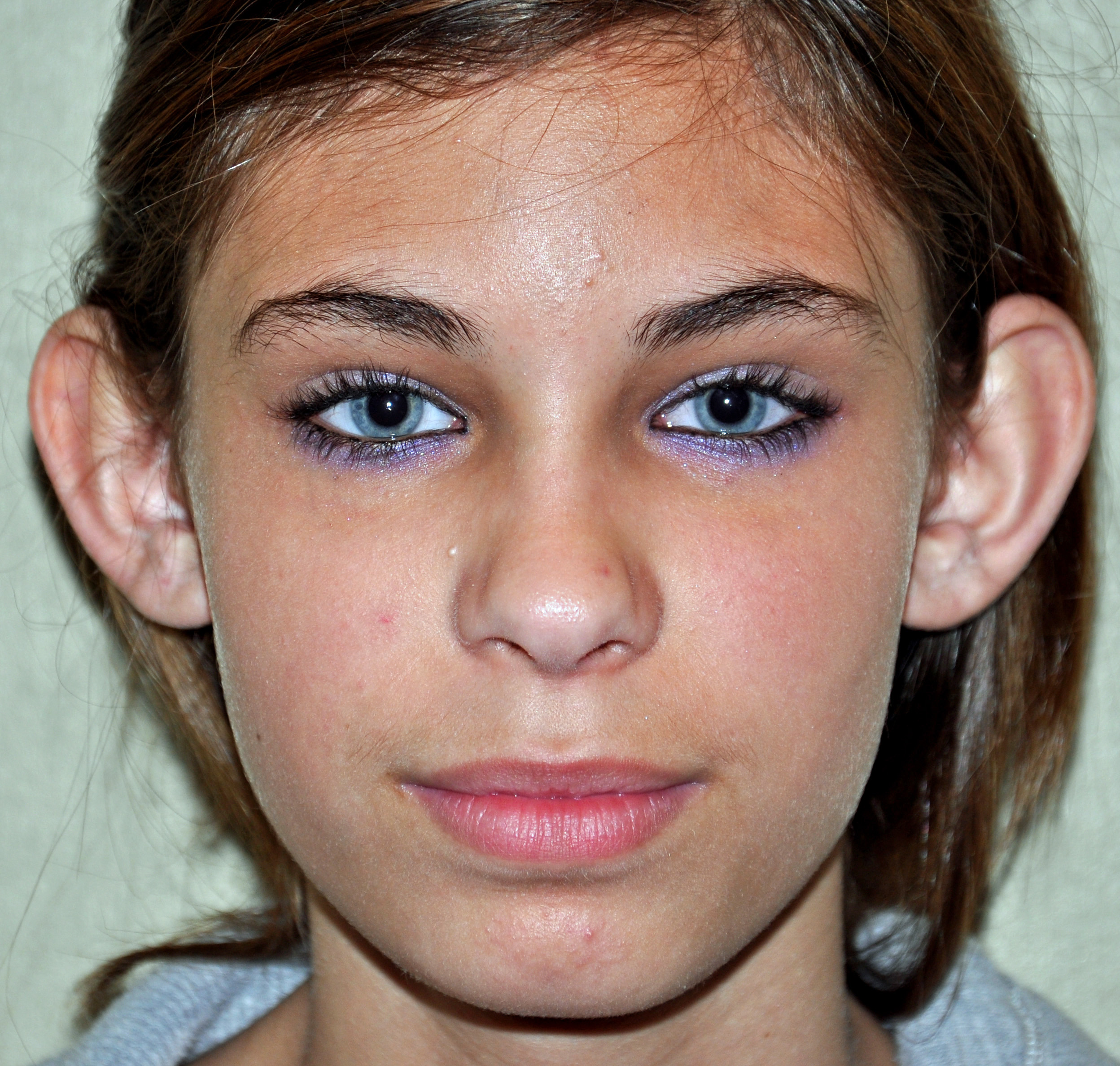

Desire for correction of protruding ears
Correction of protruding ears by cartilage reshaping/setback techniques done on the back of the ears.


Desire for correction of protruding ears
Correction of protruding ears by cartilage reshaping/setback techniques done on the back of the ears.
Patient 2
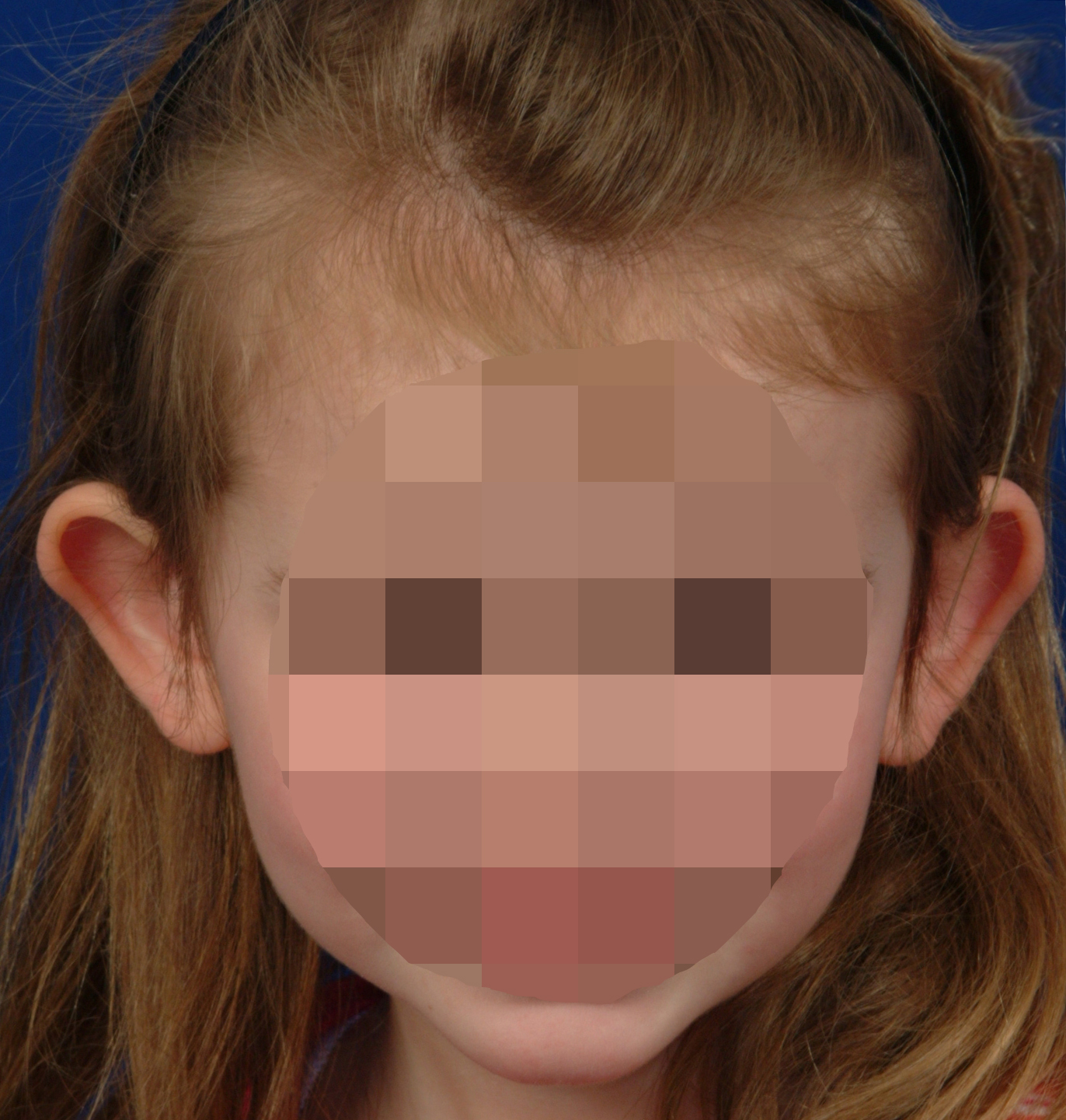
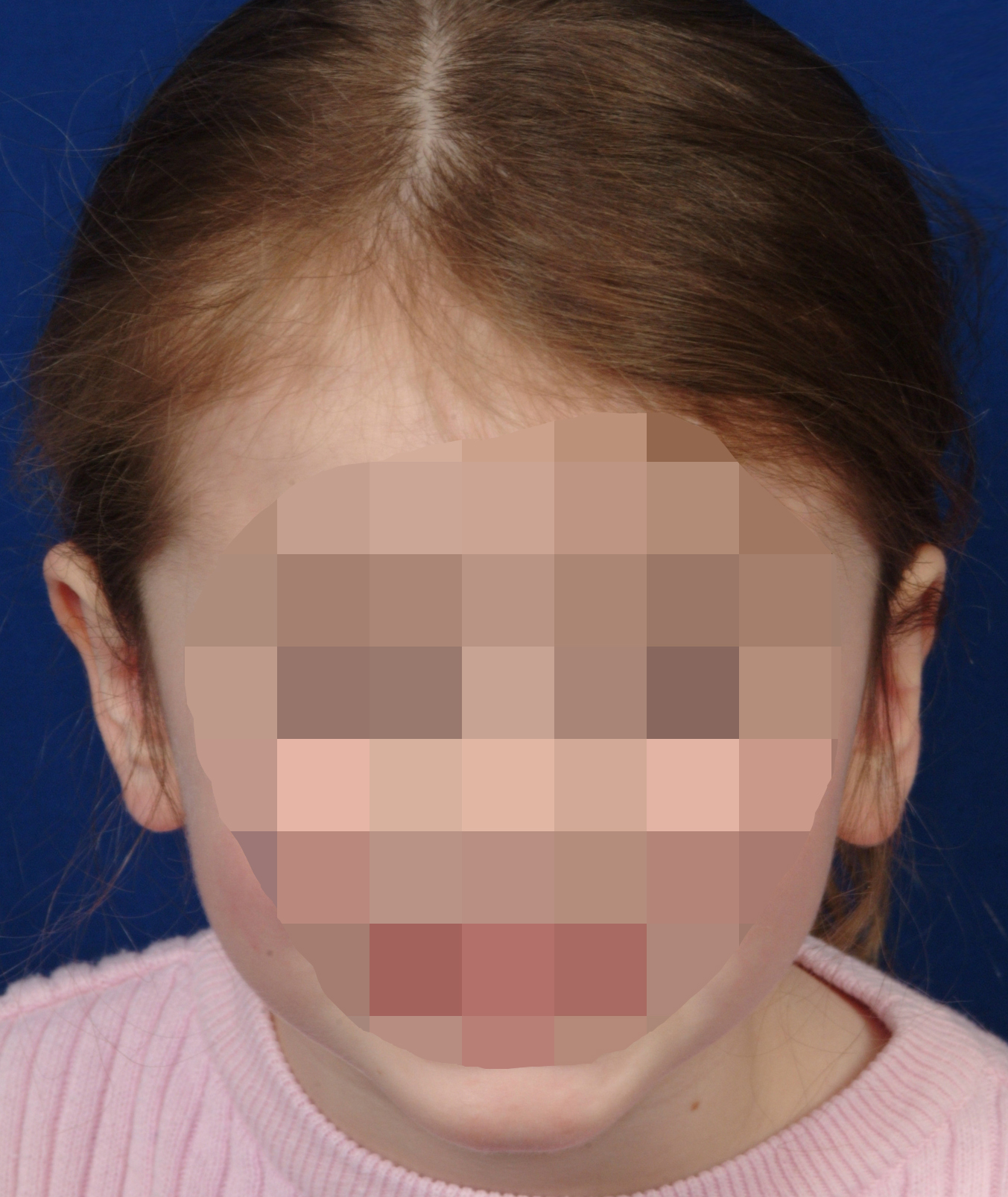
Desire for correction of protruding ears before starting school.
Setback otoplasties using horizontal mattress sutures on the back of the ear cartilage to create a more visible antihelical fold.


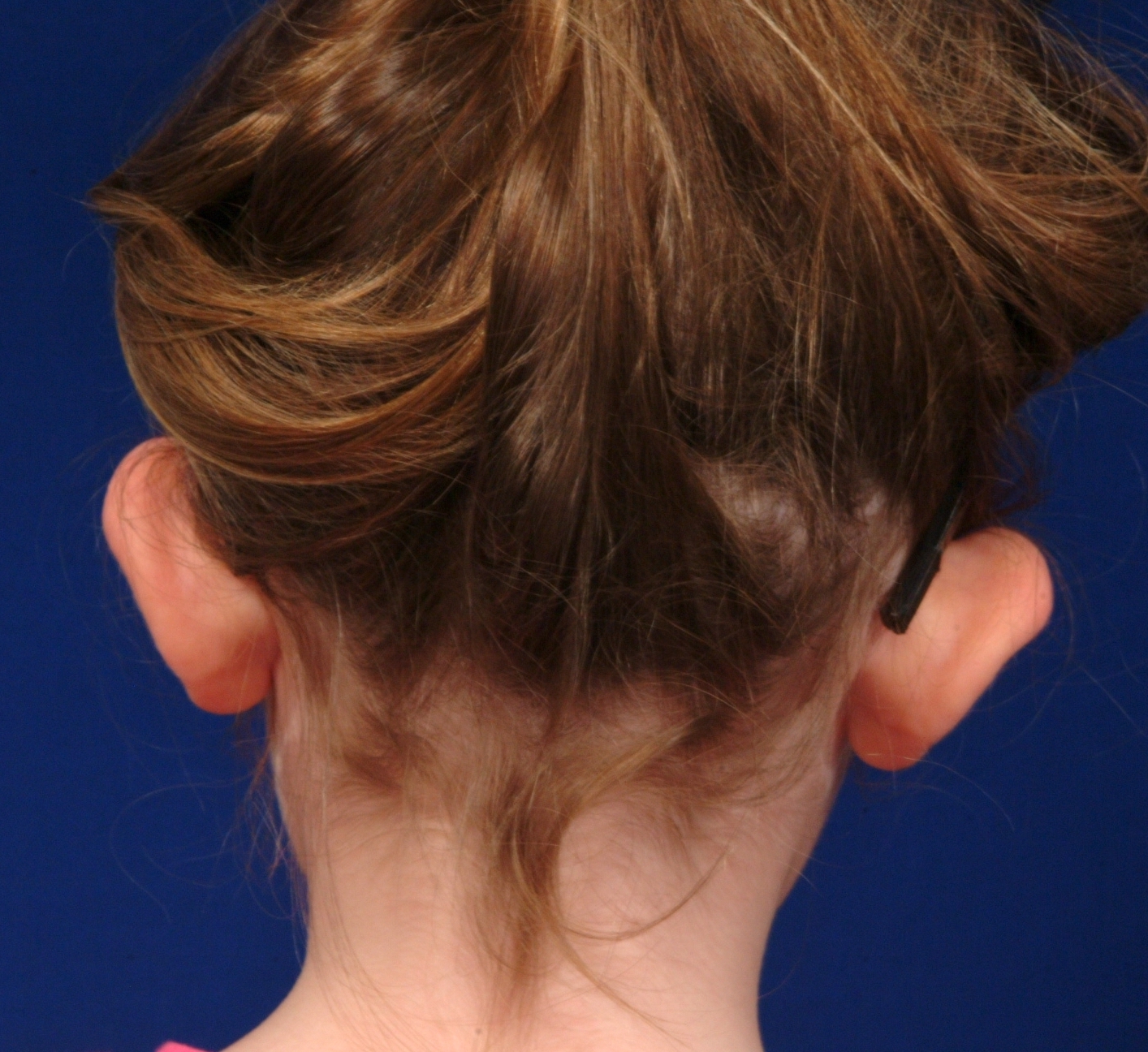

Desire for correction of protruding ears before starting school.
Setback otoplasties using horizontal mattress sutures on the back of the ear cartilage to create a more visible antihelical fold.
Patient 3
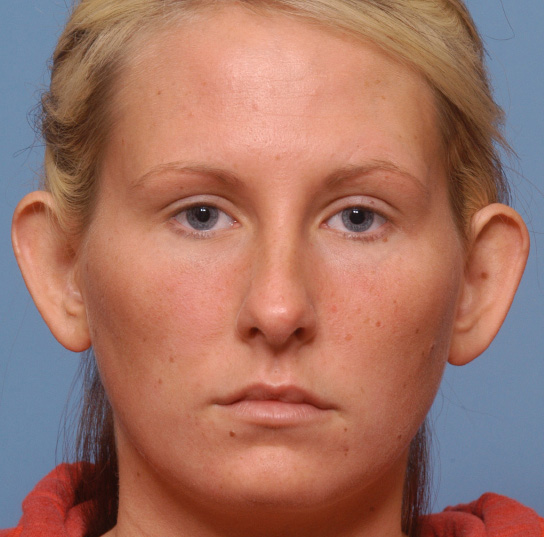
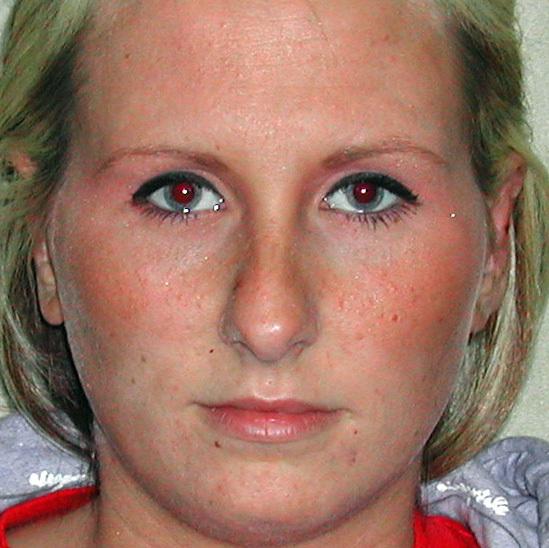
Desire for correction of prominent ears.
Correction of prominent ears by a combination of anti helical fold creation sutures as well as concha-mastoid sutures with conchae bowl weakening by cartilage scoring.


Desire for correction of prominent ears.
Correction of prominent ears by a combination of anti helical fold creation sutures as well as concha-mastoid sutures with conchae bowl weakening by cartilage scoring.
Patient 4
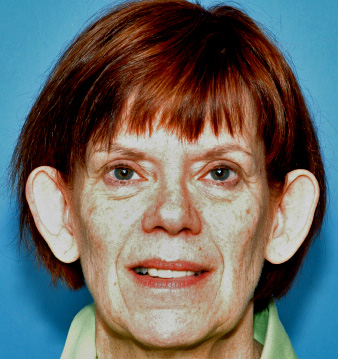

Desire for setback of protruding ears which has bothered her for many years.
Setback otoplasties using cartilage reshaping techniques.


Desire for setback of protruding ears which has bothered her for many years.
Setback otoplasties using cartilage reshaping techniques.
Patient 5
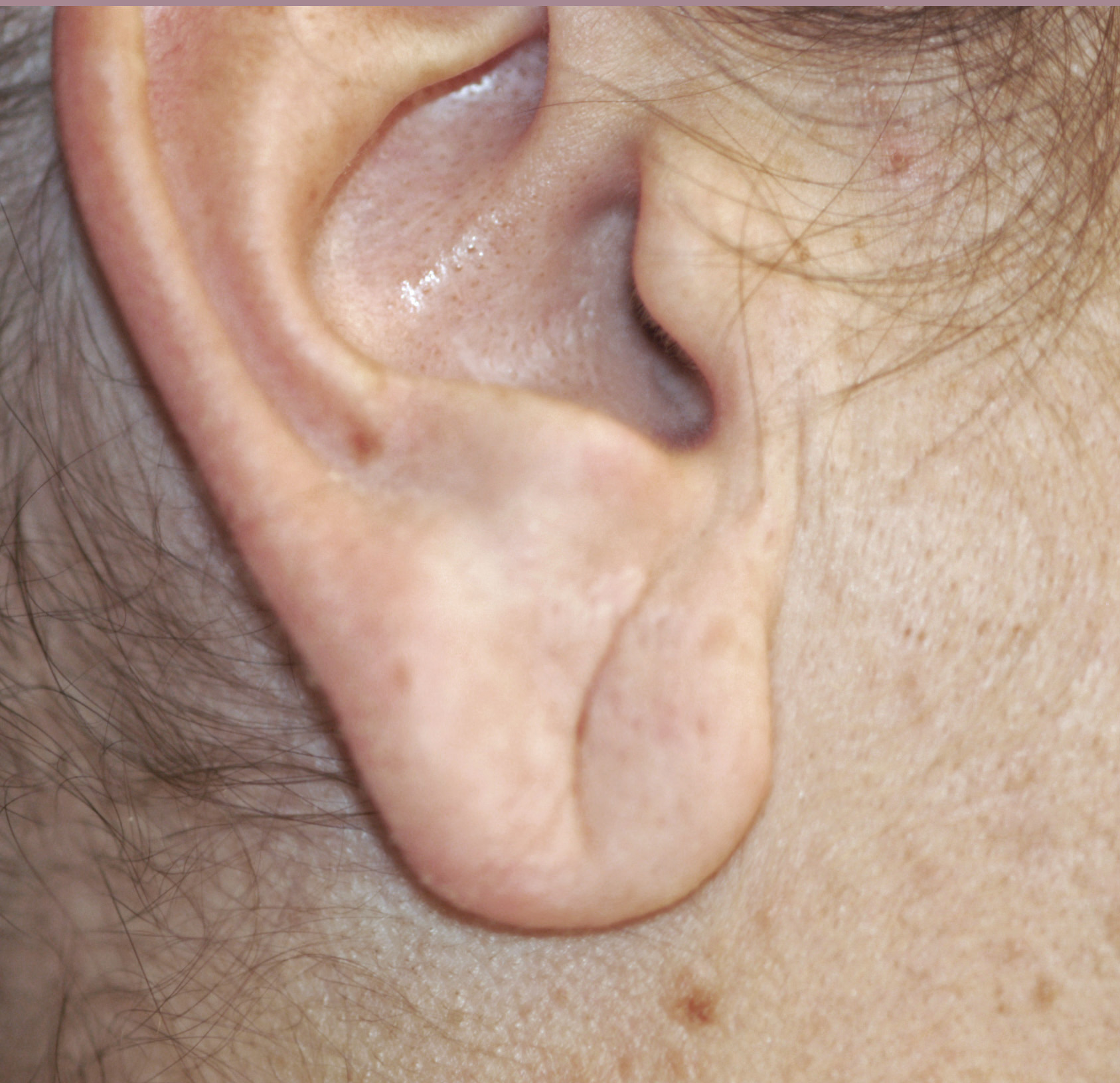
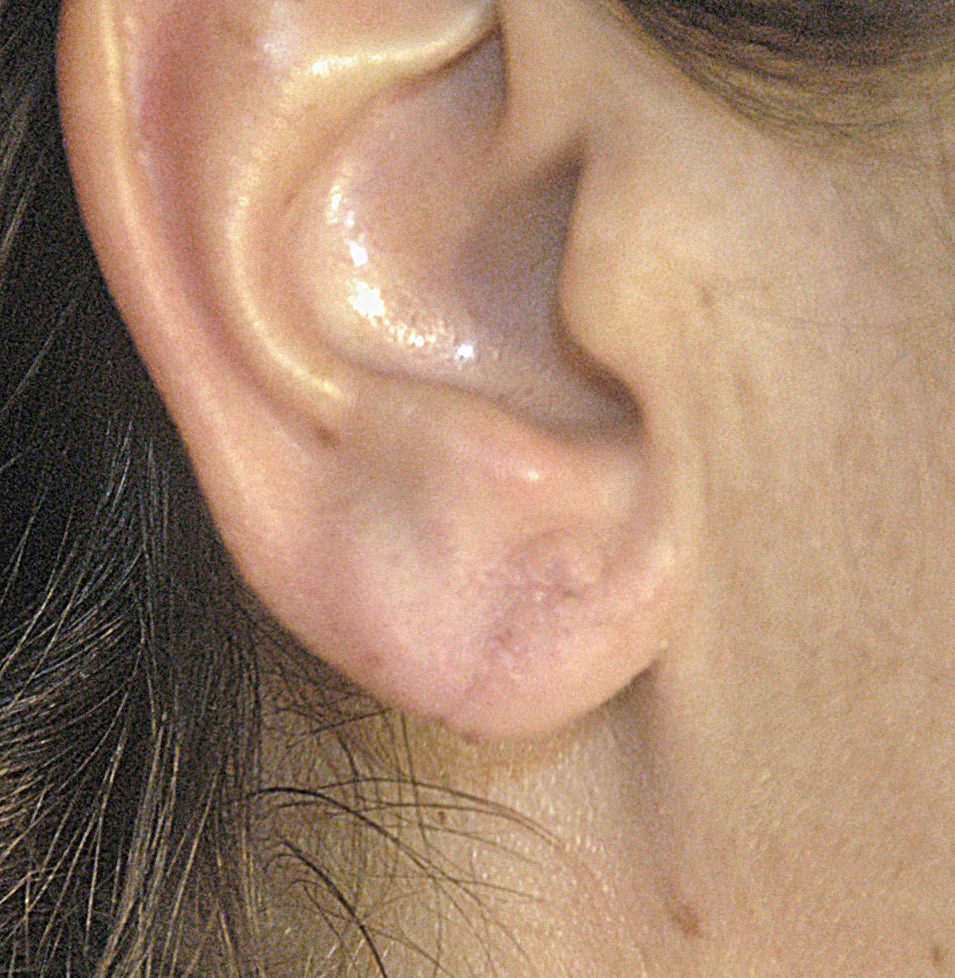
Desire for smaller less hanging earlobes.
Earlobe reductions using a wedge excisional technique.


Desire for smaller less hanging earlobes.
Earlobe reductions using a wedge excisional technique.
Patient 6
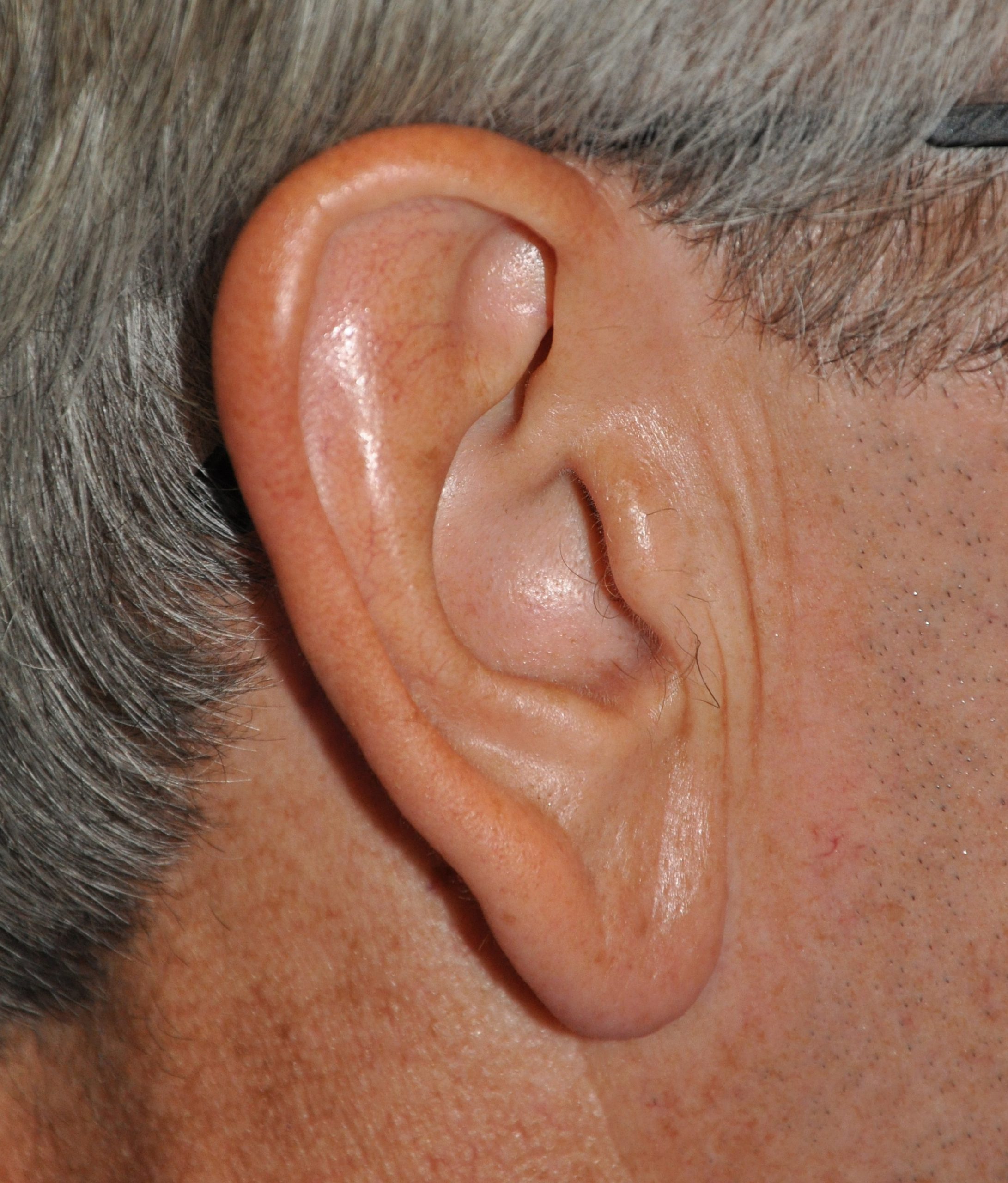
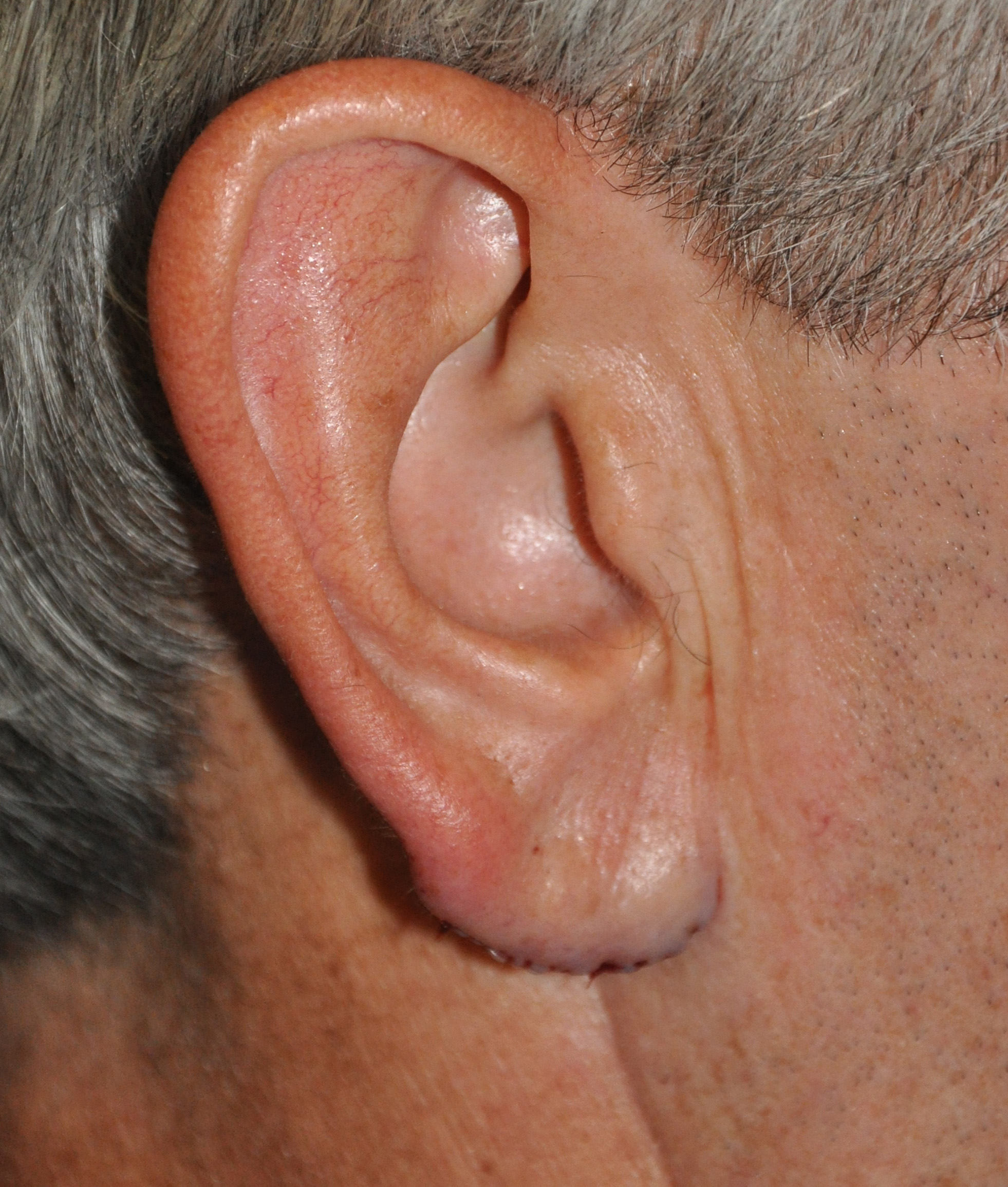
Desire for less long hanging earlobe shape.
Earlobe reductions using am inferior helical rim excisional technique.


Desire for less long hanging earlobe shape.
Earlobe reductions using am inferior helical rim excisional technique.
Patient 7
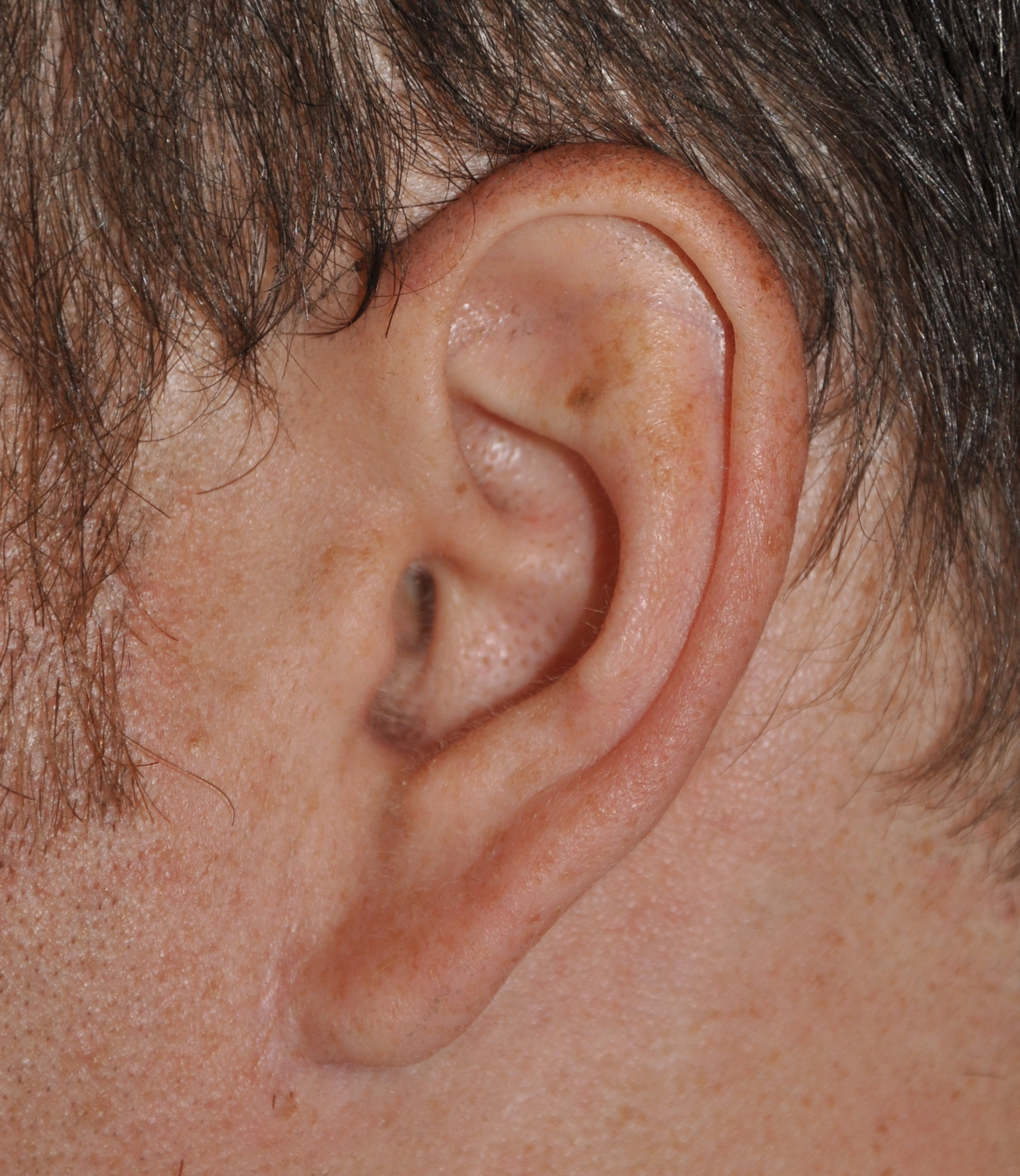
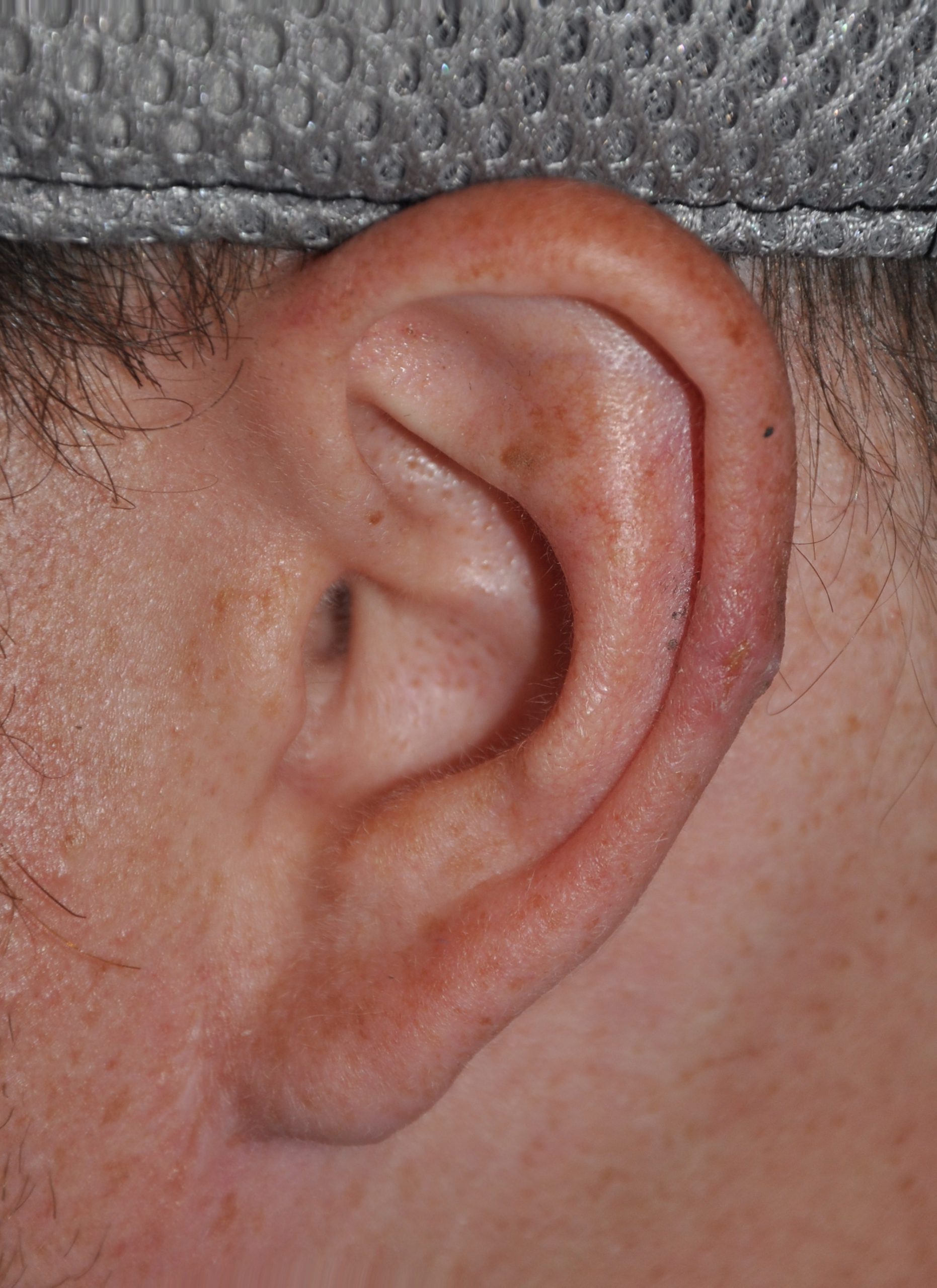
Desire for smaller ear height which currently measures at 72mms.
Vertical ear reduction (macrotia) surgery with the creation of a smaller ear (62mms) through upper and lower ear tissue excisions.


Desire for smaller ear height which currently measures at 72mms.
Vertical ear reduction (macrotia) surgery with the creation of a smaller ear (62mms) through upper and lower ear tissue excisions.
Patient 8
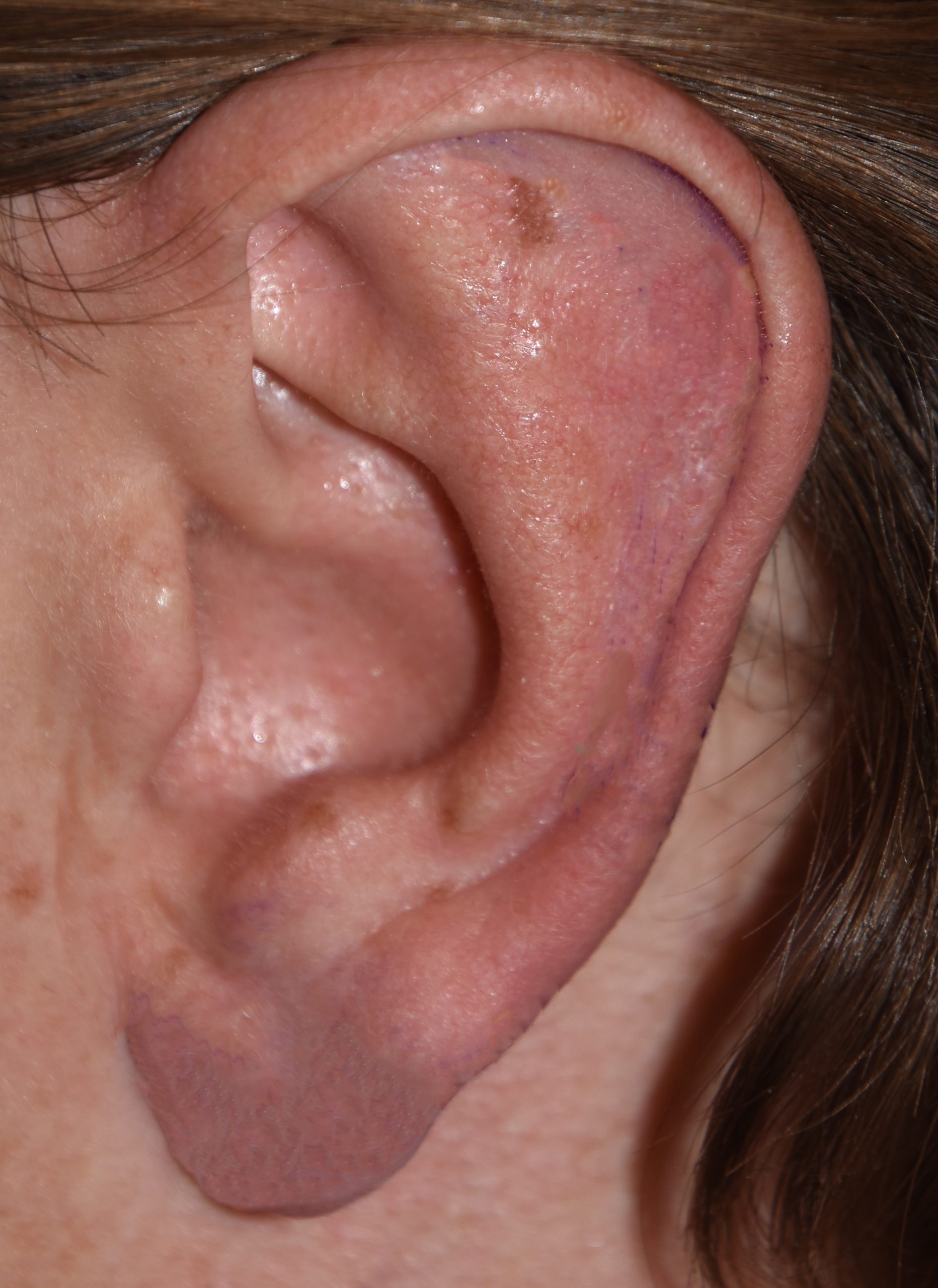
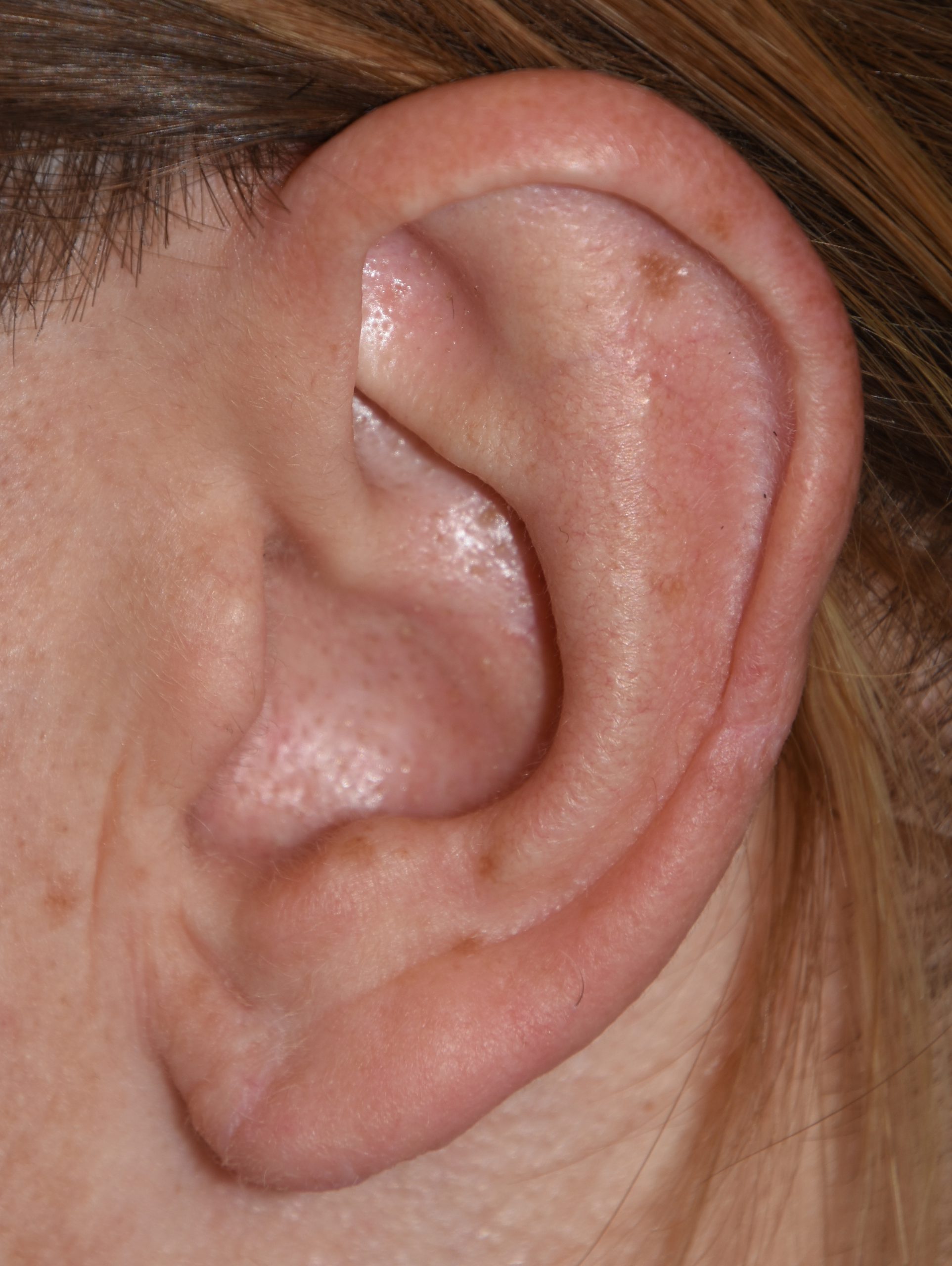
Desire for smaller ear height.
Macrotia reduction surgery using a superior scapula flap and inferior earlobe tissue removal techniques.


Desire for smaller ear height.
Macrotia reduction surgery using a superior scapula flap and inferior earlobe tissue removal techniques.
Patient 9
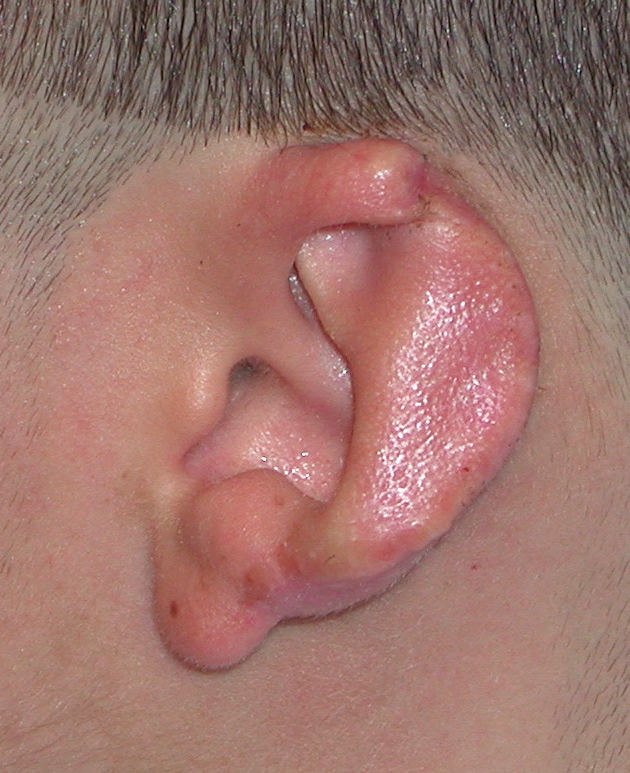
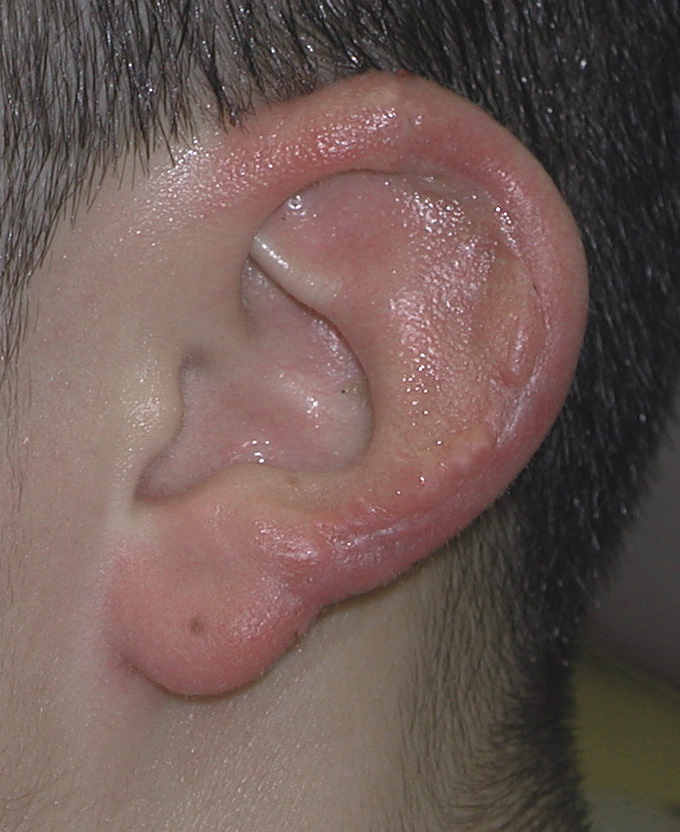
Desire for restoration of more normal ear appearance after partial amputation from a bite injury.
Two stage ear reconstruction using a postauricular flap (first stage) and a flap release and helical rim augmentation with ePTFE tube implants. (second stage)


Desire for restoration of more normal ear appearance after partial amputation from a bite injury.
Two stage ear reconstruction using a postauricular flap (first stage) and a flap release and helical rim augmentation with ePTFE tube implants. (second stage)
Patient 10
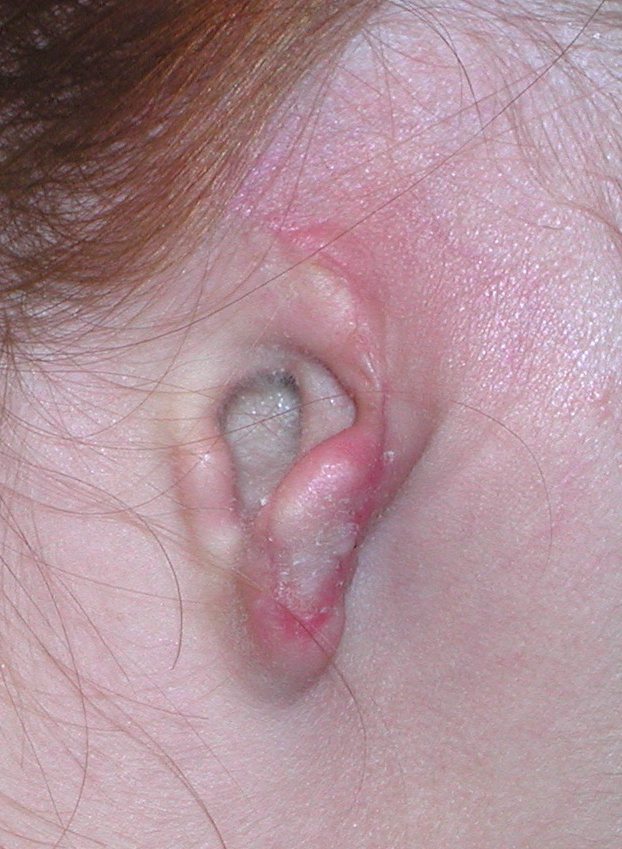
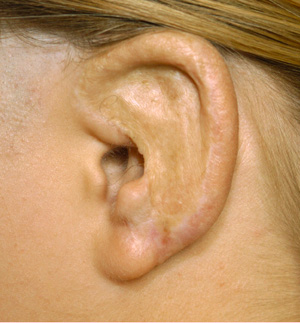
Desire for ear reconstruction after total amputation from car accident.
Two stage total ear reconstruction using a rib cartilage framework covered by a temporoparietal fascial flap and skin graft (first stage) followed by a secondary ear shape refinements. (second stage)


Desire for ear reconstruction after total amputation from car accident.
Two stage total ear reconstruction using a rib cartilage framework covered by a temporoparietal fascial flap and skin graft (first stage) followed by a secondary ear shape refinements. (second stage)
Patient 11
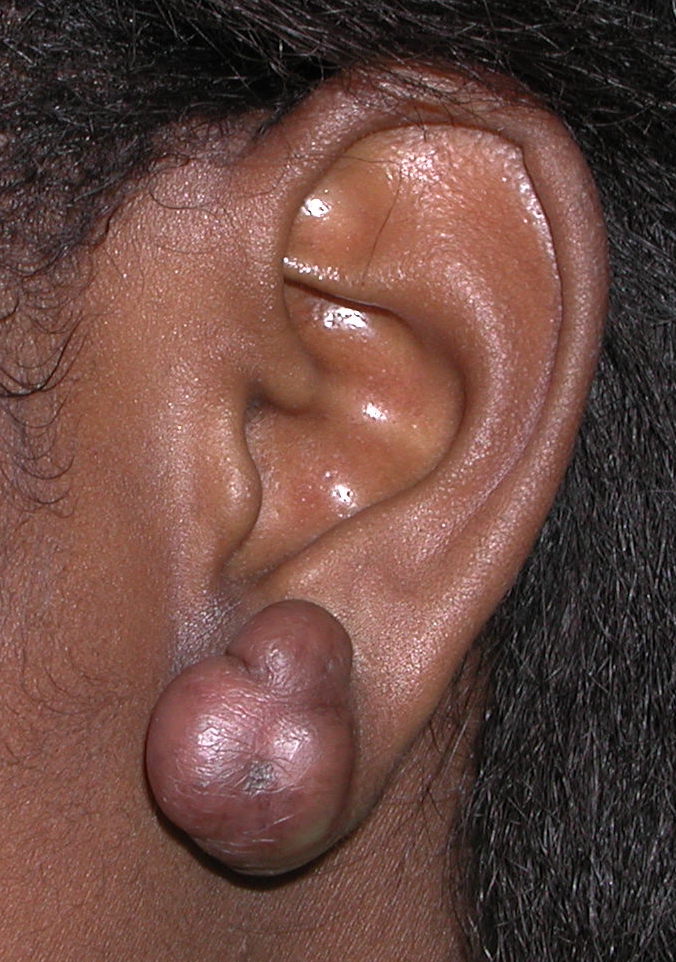
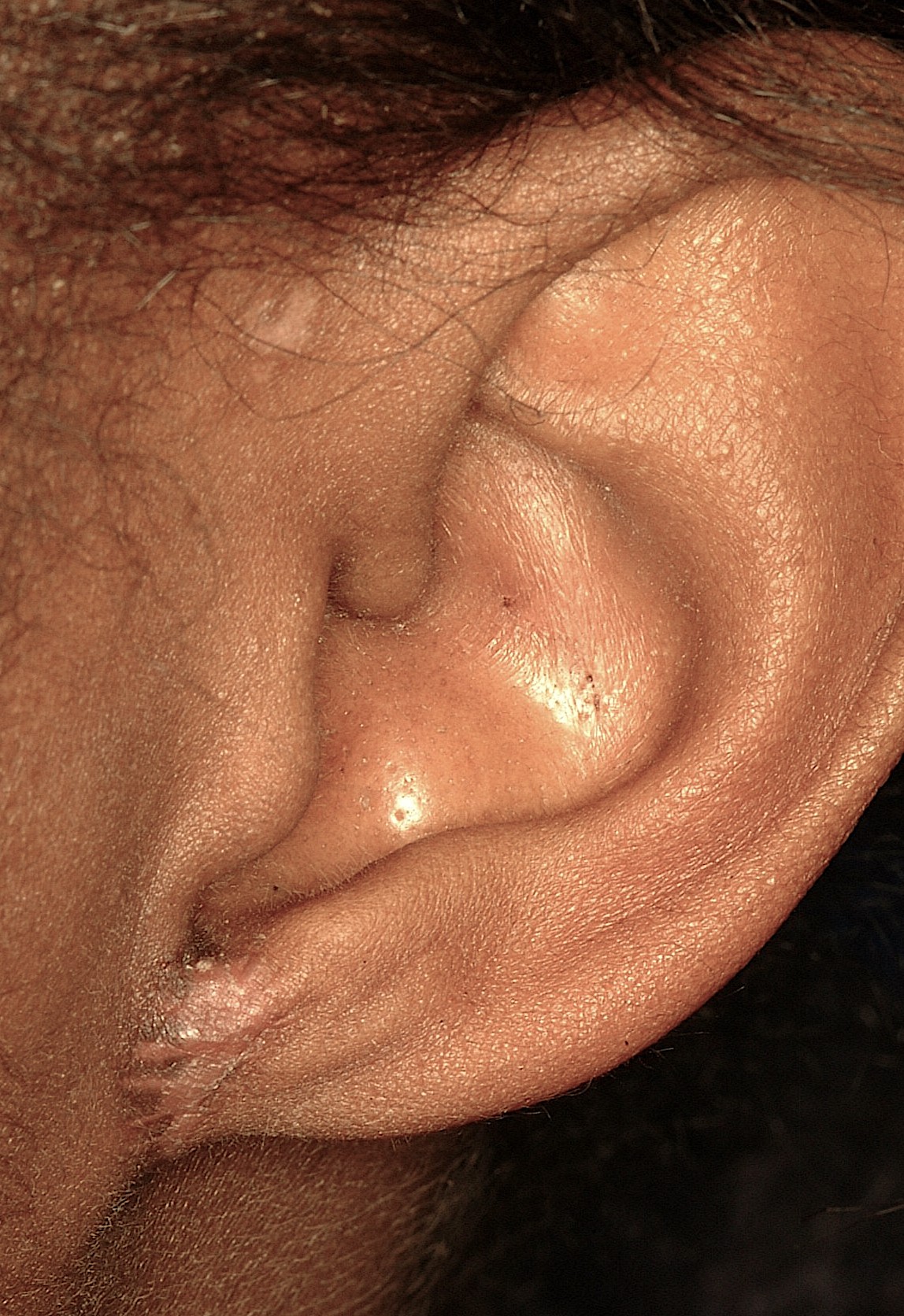
Desire for keloid removal from earlobe after ear piercing.
Excisions of large ear keloid with placement of dermal-fat graft for earlobe reconstruction.


Desire for keloid removal from earlobe after ear piercing.
Excisions of large ear keloid with placement of dermal-fat graft for earlobe reconstruction.
Patient 12
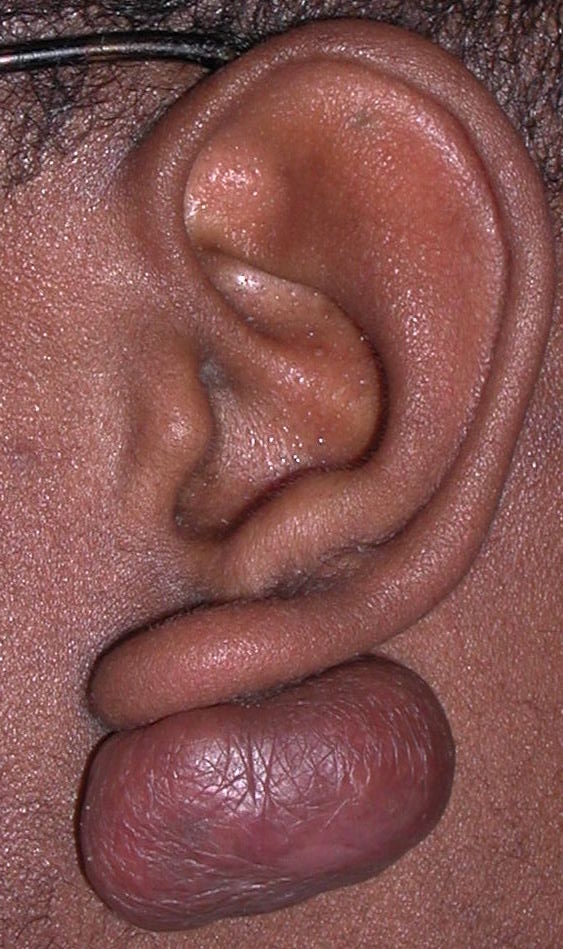
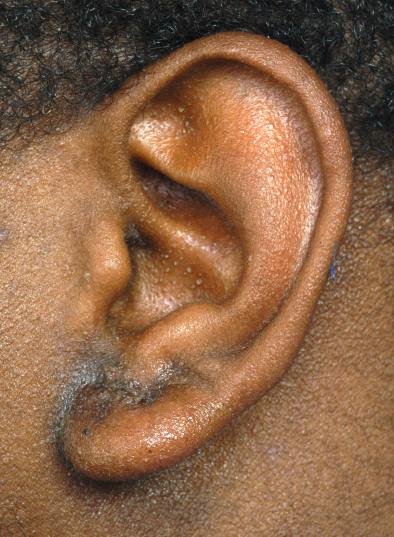
Desire for removal of large keloid on back of earlobe.
Excision of large keloid from back of earlobe with full thickness skin graft reconstruction.


Desire for removal of large keloid on back of earlobe.
Excision of large keloid from back of earlobe with full thickness skin graft reconstruction.
Patient 13
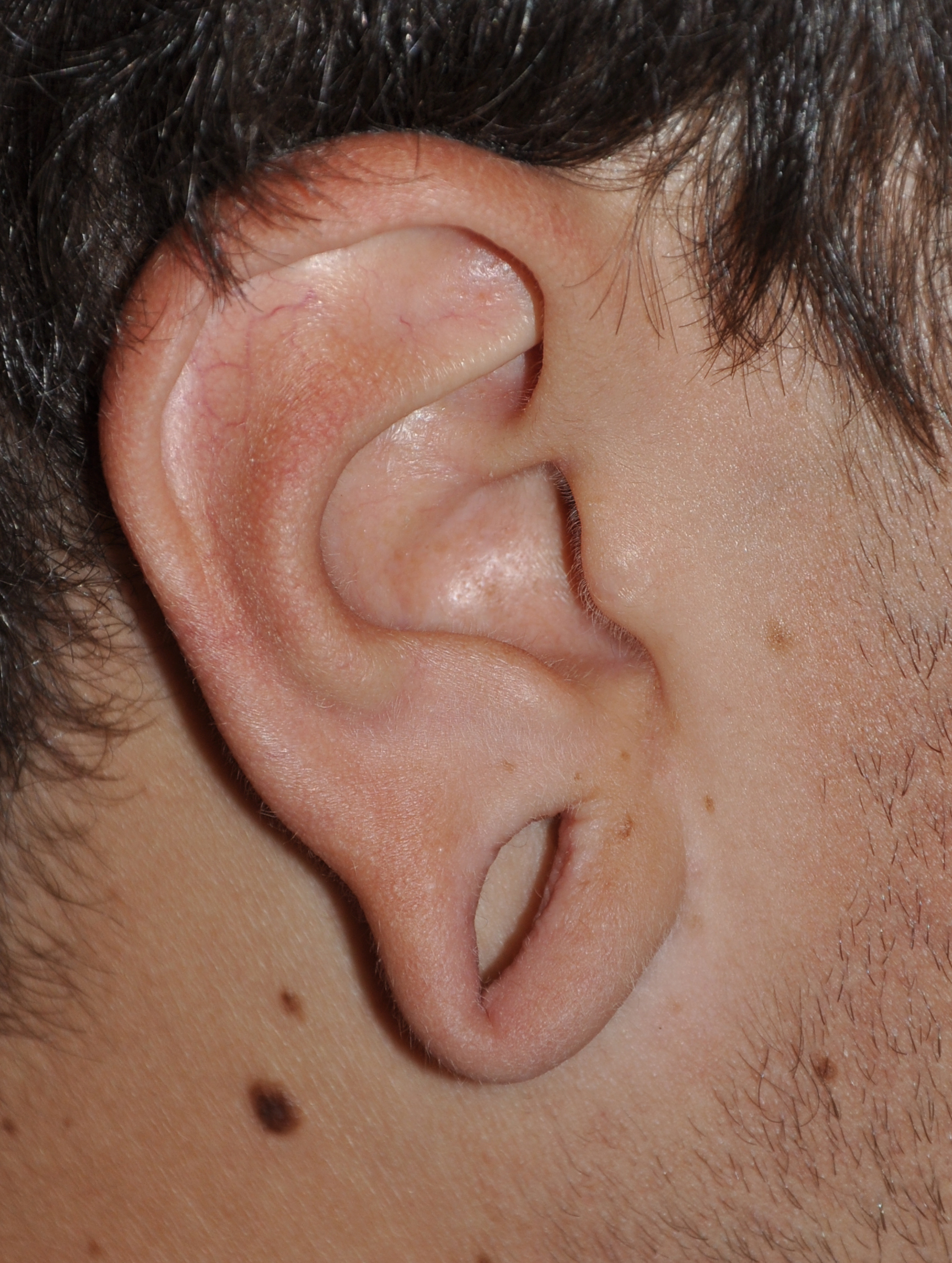
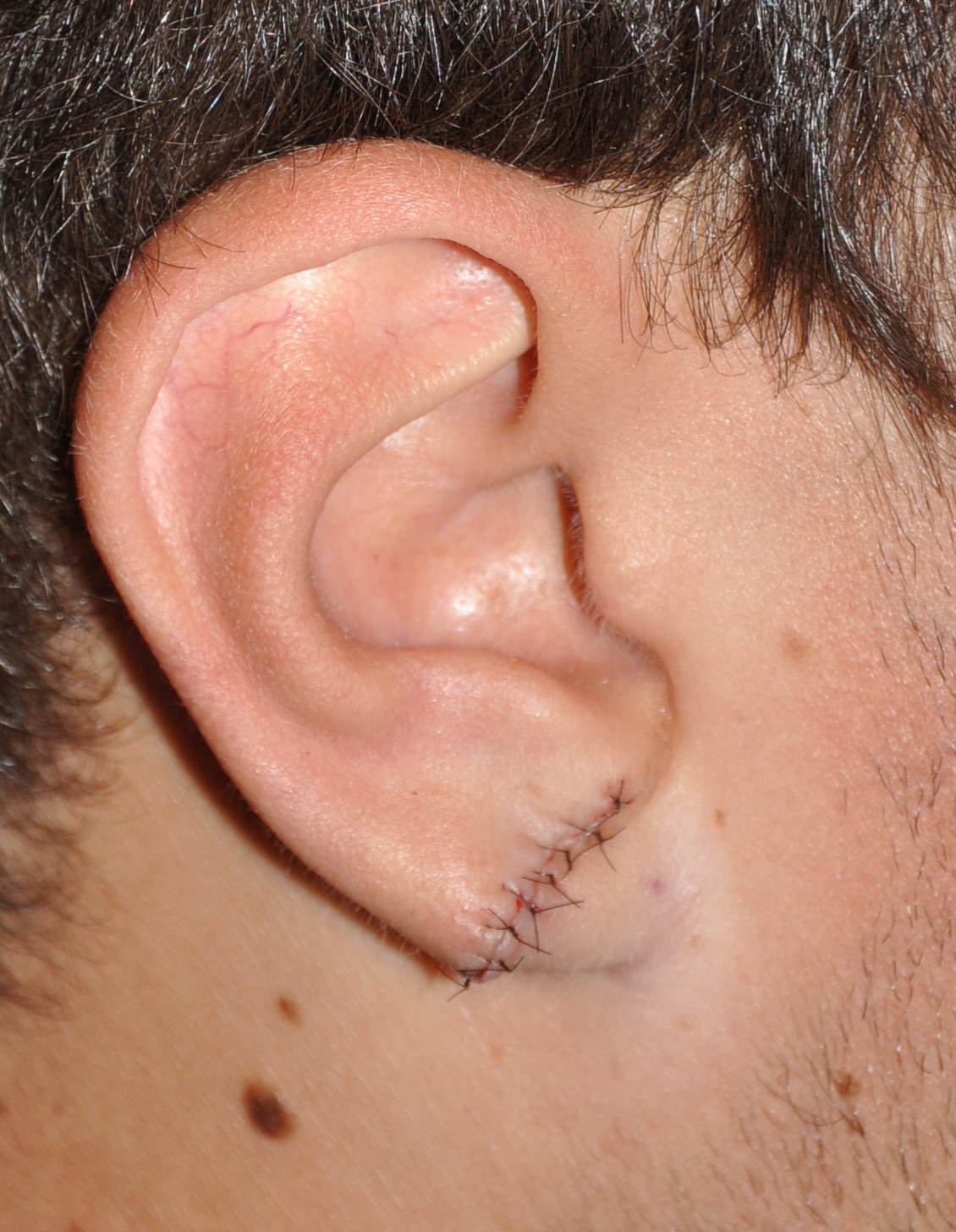
Immediate result of gauged earlobe reconstruction with excision large wedge of tissue including the gauged hole.


Immediate result of gauged earlobe reconstruction with excision large wedge of tissue including the gauged hole.
Patient 14
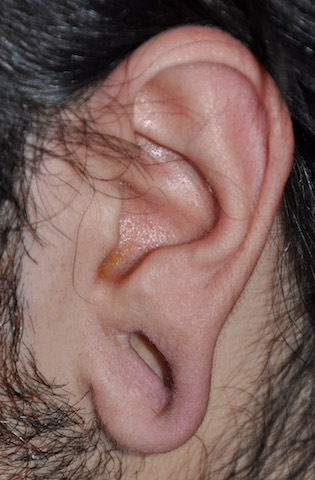
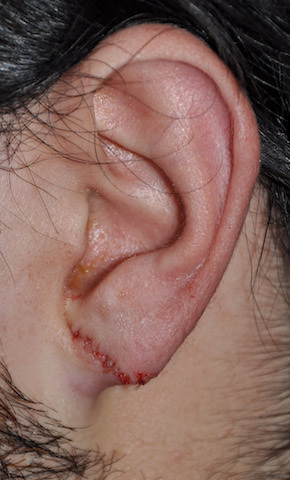
Desire for removal of gauged earlobes and restoration of a more normal earlobe appearance.
Excision of gauged holes and earlobe reconstruction with immediate result.


Desire for removal of gauged earlobes and restoration of a more normal earlobe appearance.
Excision of gauged holes and earlobe reconstruction with immediate result.
Patient 15
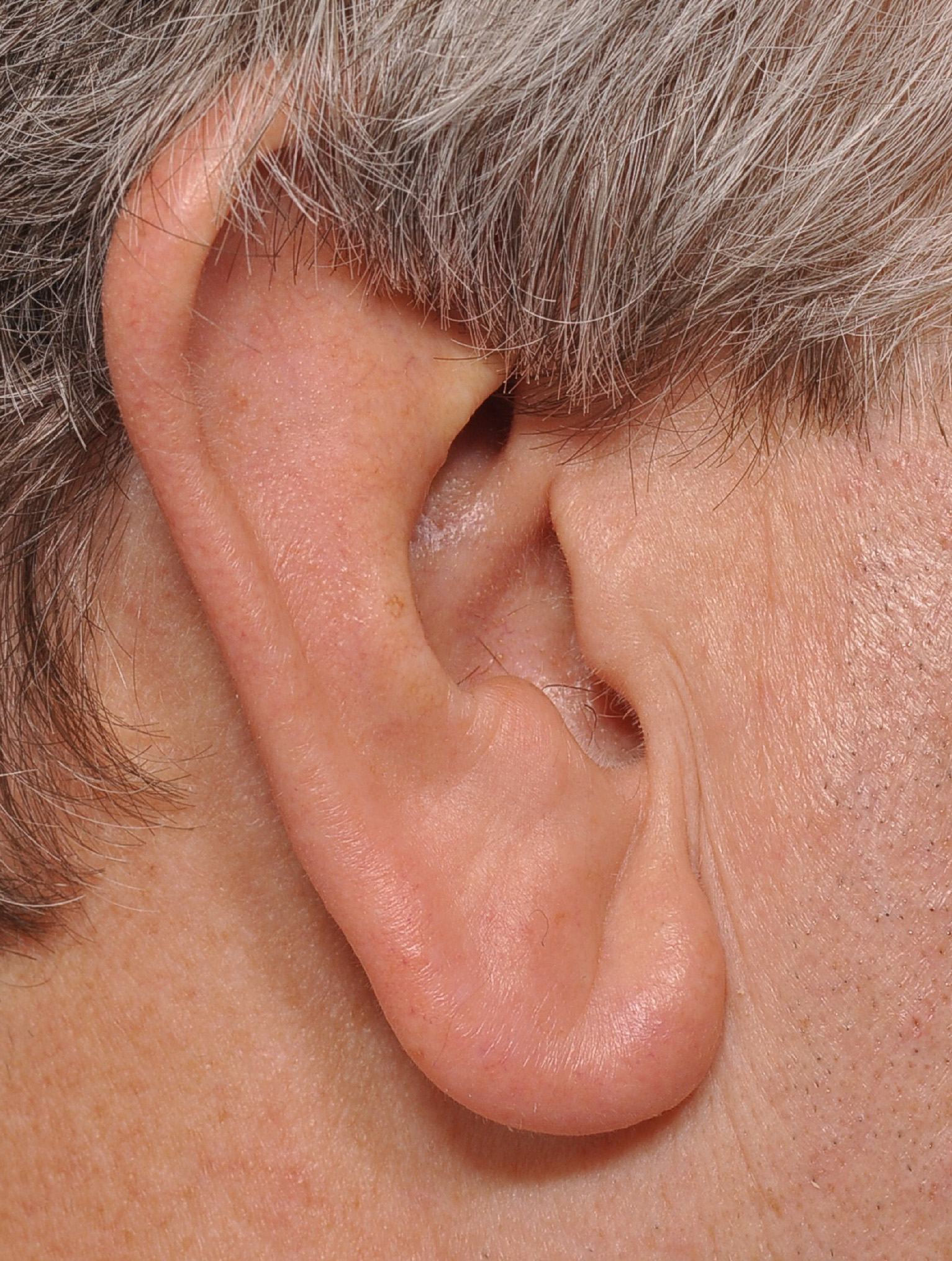
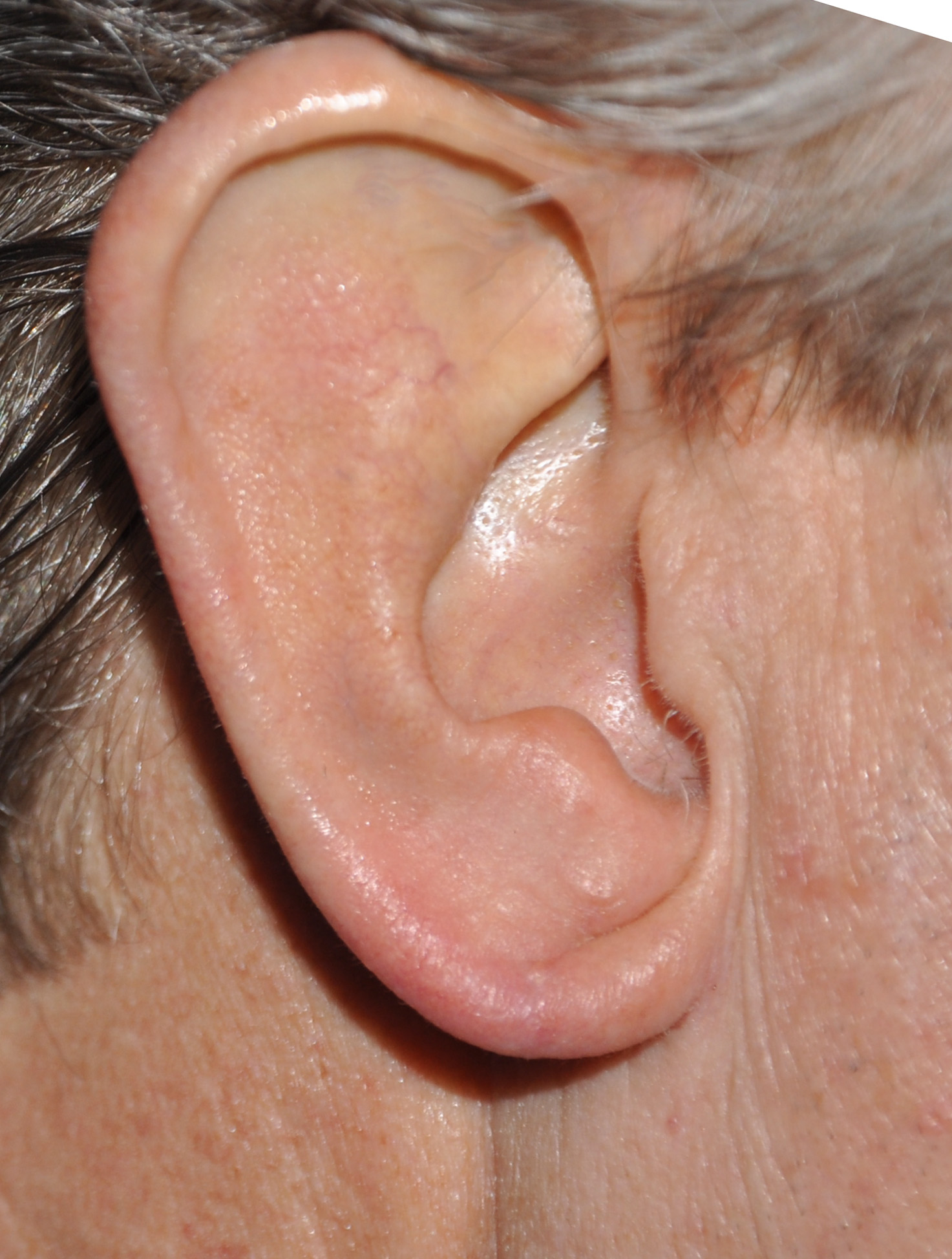
Desire for reduction of large earlobes.
Earlobe reduction using a wedge excision and flap closure technique.


Desire for reduction of large earlobes.
Earlobe reduction using a wedge excision and flap closure technique.
Patient 16
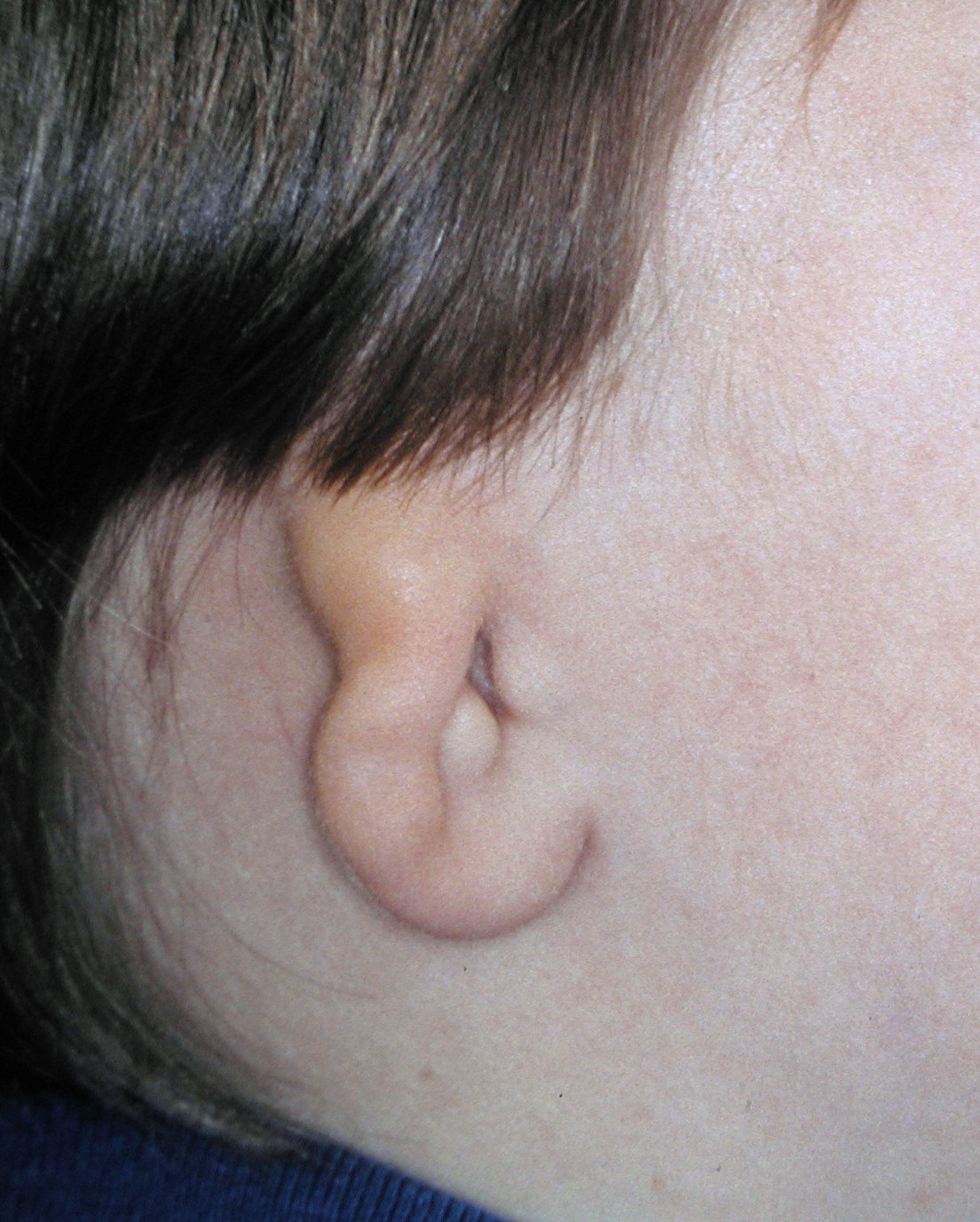
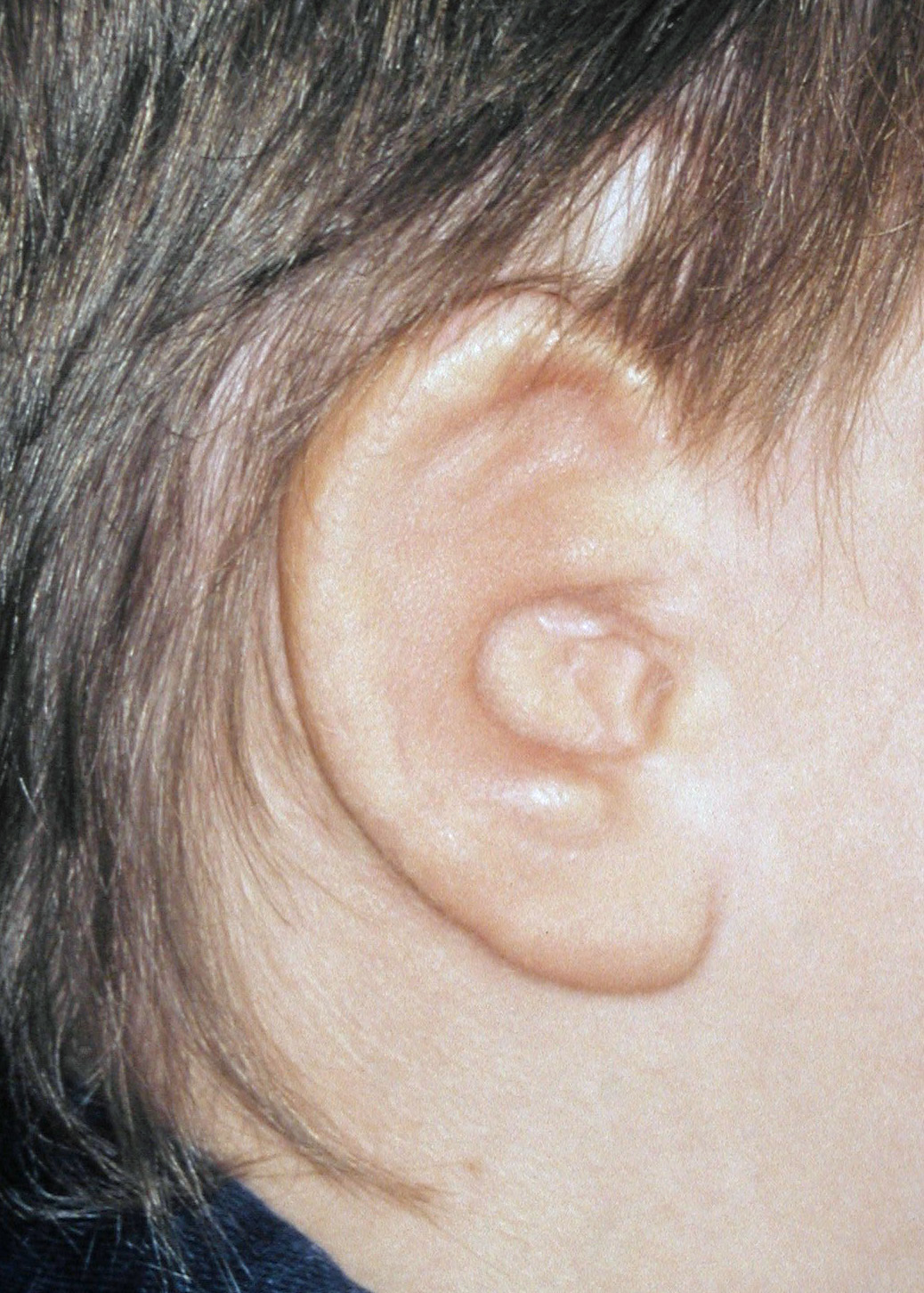
Congenital near complete microtia in a young child.
Three stage microtia reconstruction using a primary rib cartilage framework.


Congenital near complete microtia in a young child.
Three stage microtia reconstruction using a primary rib cartilage framework.
Patient 17
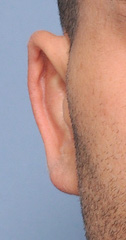
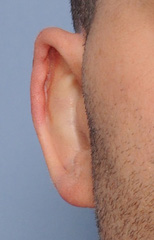
Desire for correction of overdone setback otoplasty.
Otoplasty reversal with cartilage release and tissue bank rib graft placement in the middle third of the ear.


Desire for correction of overdone setback otoplasty.
Otoplasty reversal with cartilage release and tissue bank rib graft placement in the middle third of the ear.
Patient 18
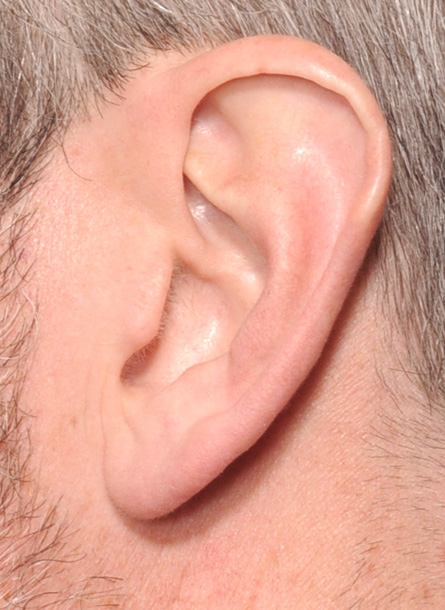
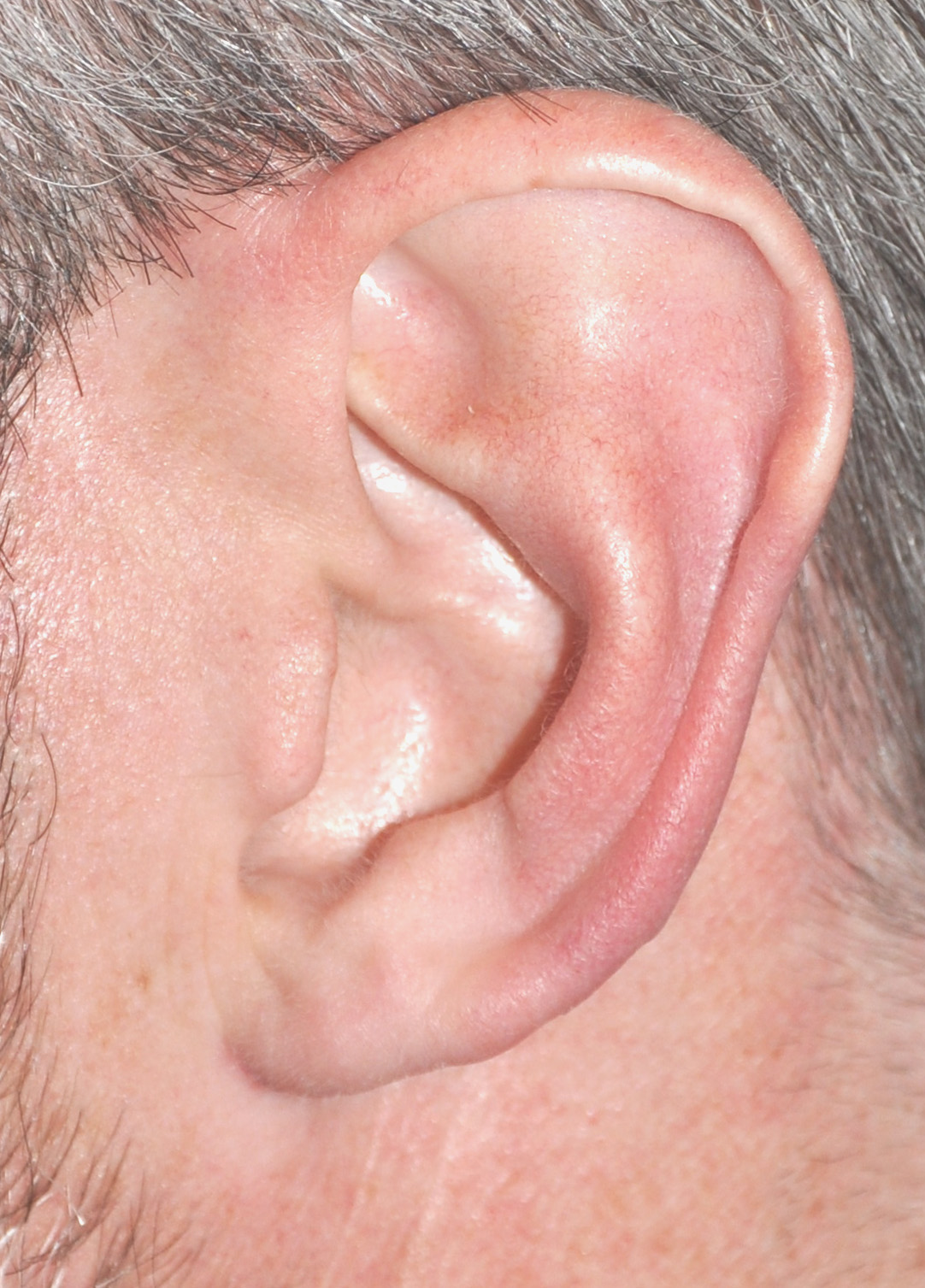
Desire for earlobe size reduction.
Mal earlobe reductions using an inferior helical rim excisional technique.


Desire for earlobe size reduction.
Mal earlobe reductions using an inferior helical rim excisional technique.
Patient 19
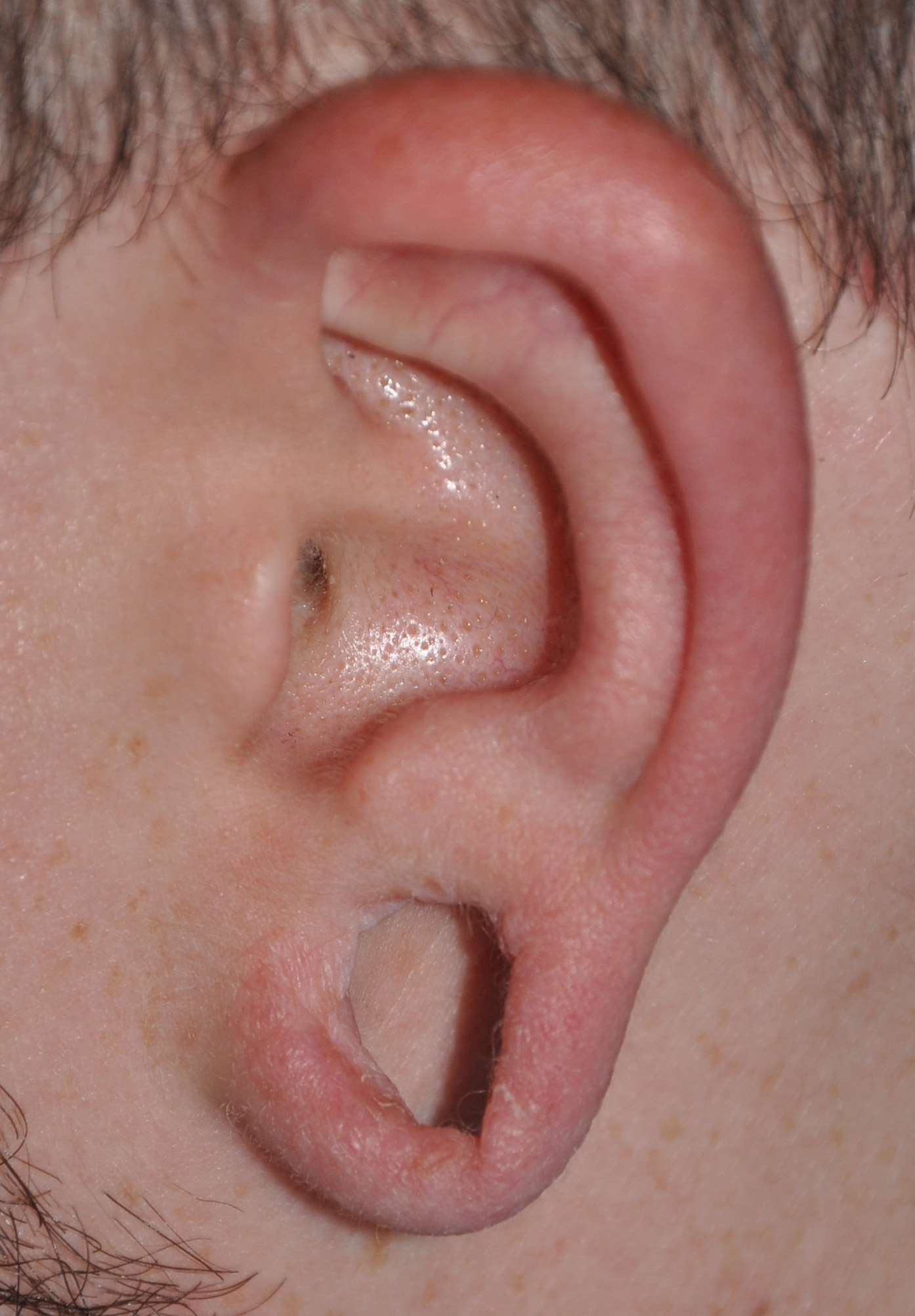
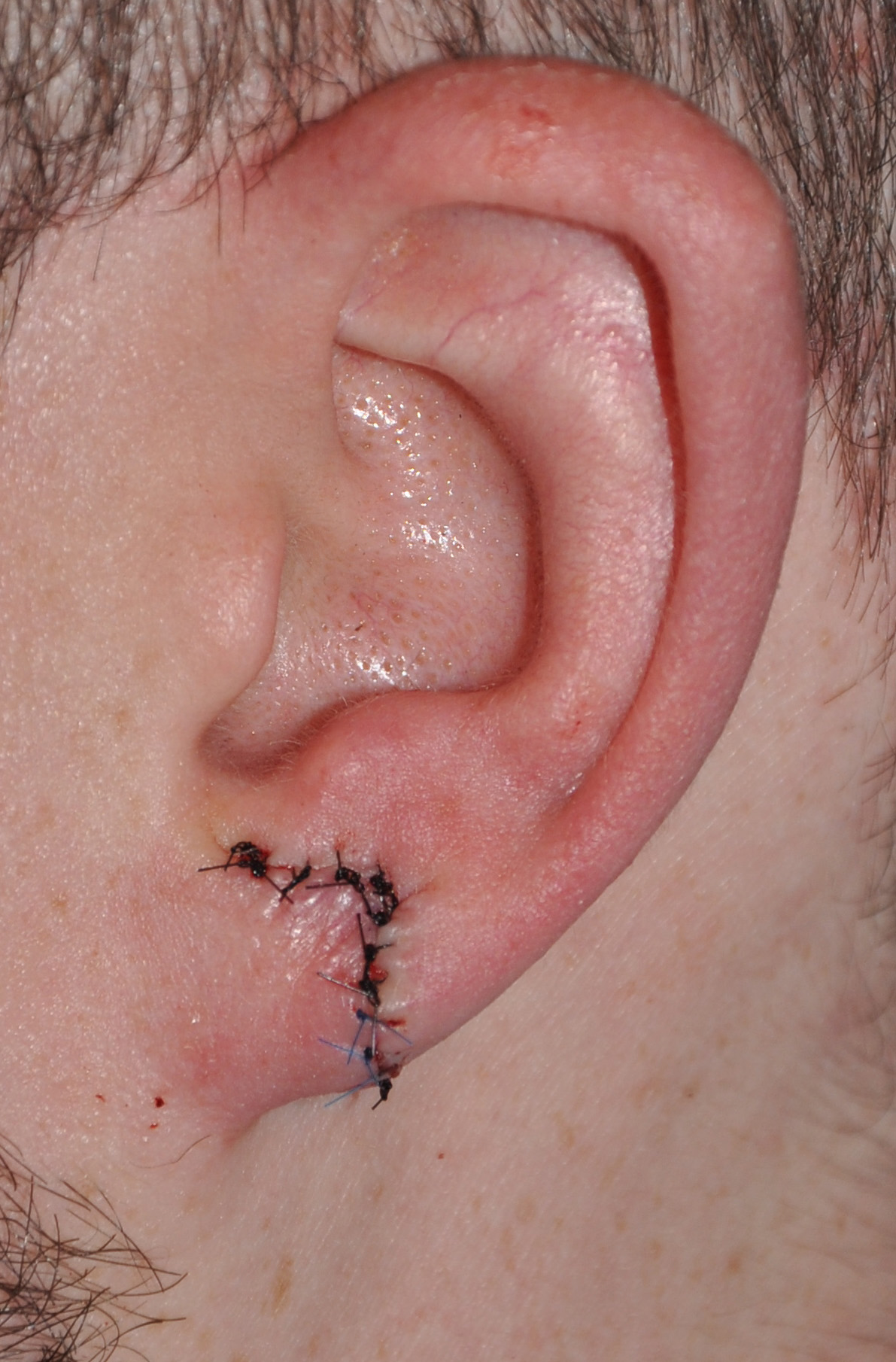
Desire for removal of gauged ears.
Gauged earlobe repairs using hole excision and flap rearrangement technique with immediate result.


Desire for removal of gauged ears.
Gauged earlobe repairs using hole excision and flap rearrangement technique with immediate result.
Patient 21
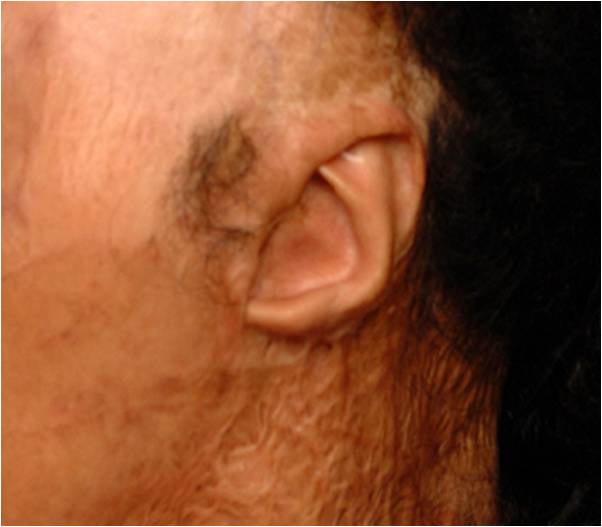
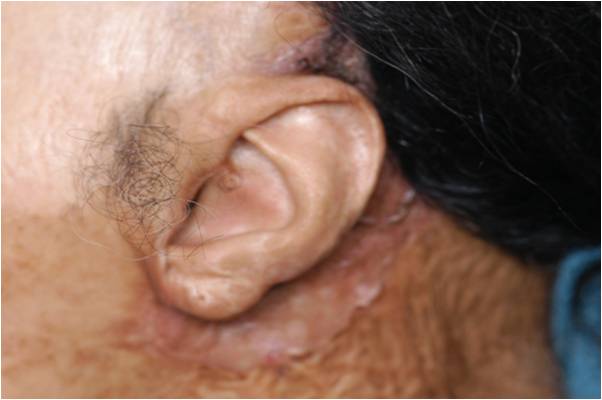
Desire for ear reconstruction after severe burn injury.
Burn ear reconstruction using skin release and postauricular skin grafting after first stage tissue expansion.


Desire for ear reconstruction after severe burn injury.
Burn ear reconstruction using skin release and postauricular skin grafting after first stage tissue expansion.
Patient 22
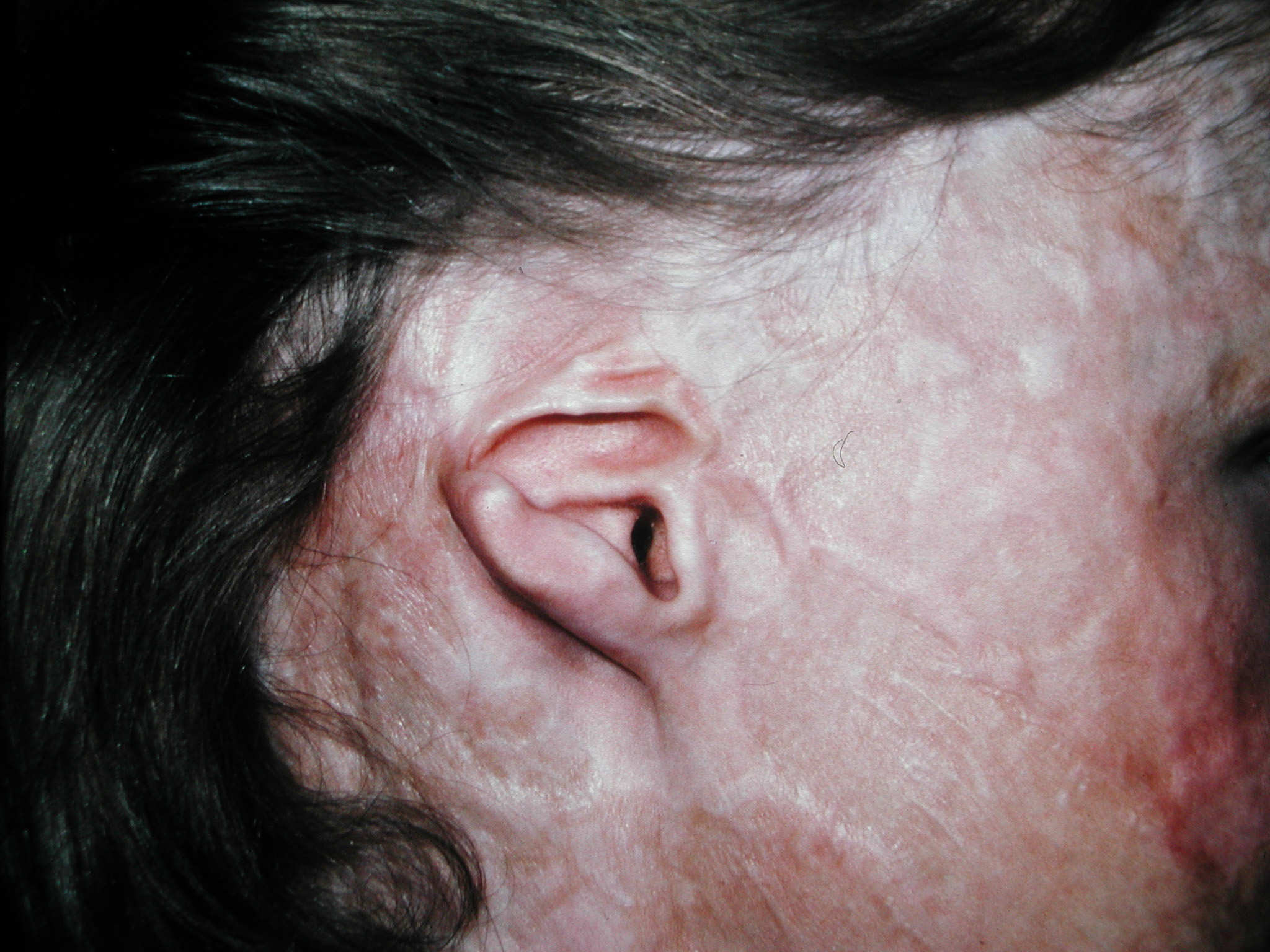
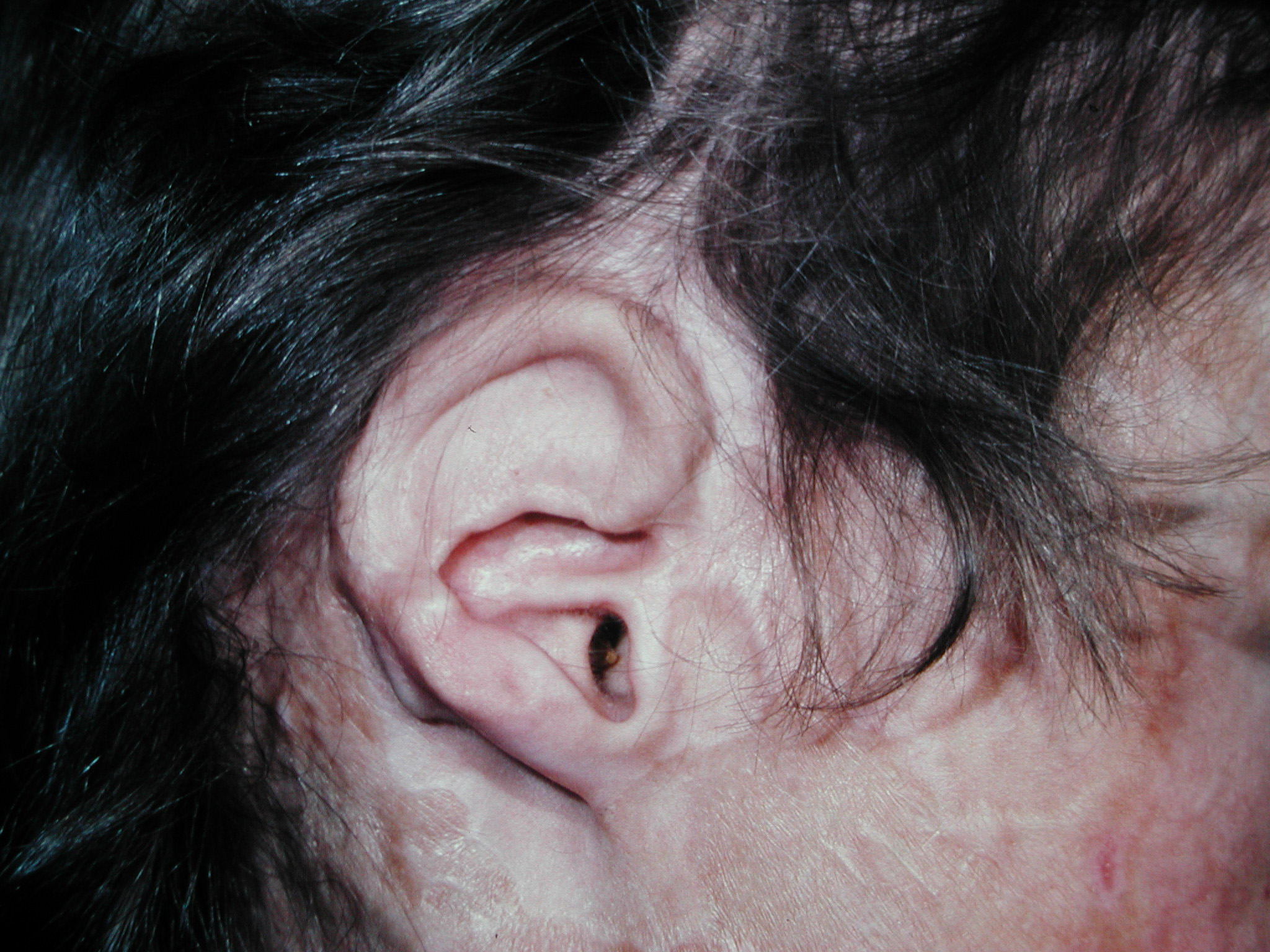
Desire for more normal appearing ear after severe burn injury.
Rib graft cartilage framework reconstruction to restore the missing upper half of the ear.


Desire for more normal appearing ear after severe burn injury.
Rib graft cartilage framework reconstruction to restore the missing upper half of the ear.
Patient 23
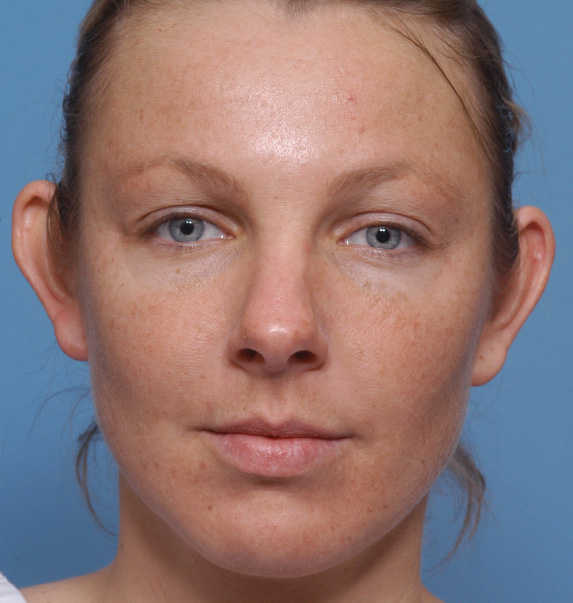
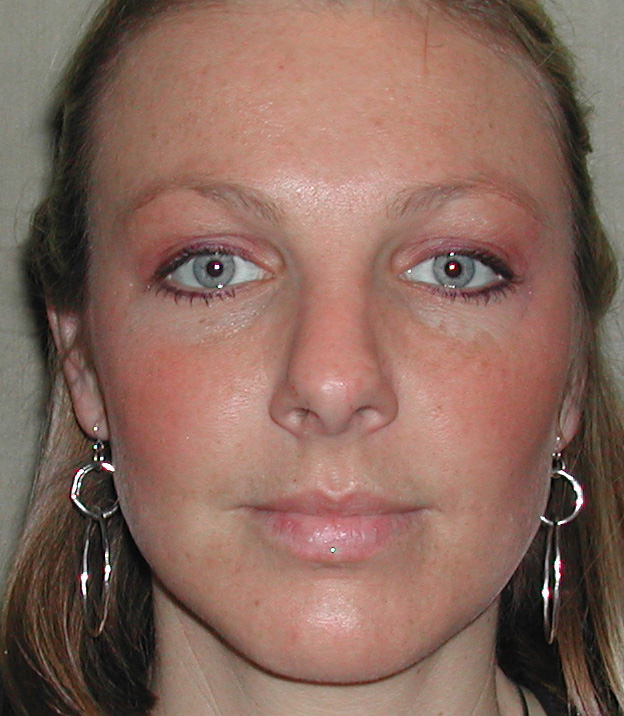
Desire for reduction of prominent ears.
Setback otoplasties performed through postauricular cartilage reshaping techniques.


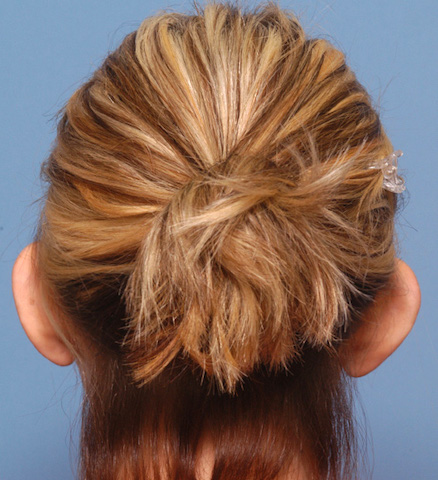
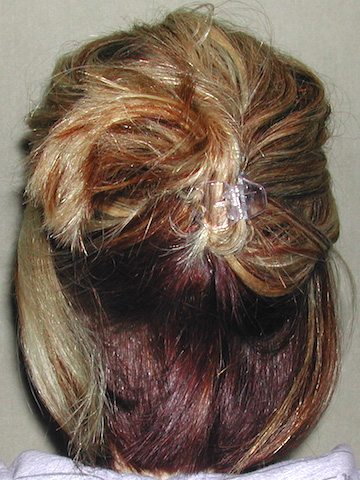
Desire for reduction of prominent ears.
Setback otoplasties performed through postauricular cartilage reshaping techniques.
Patient 24
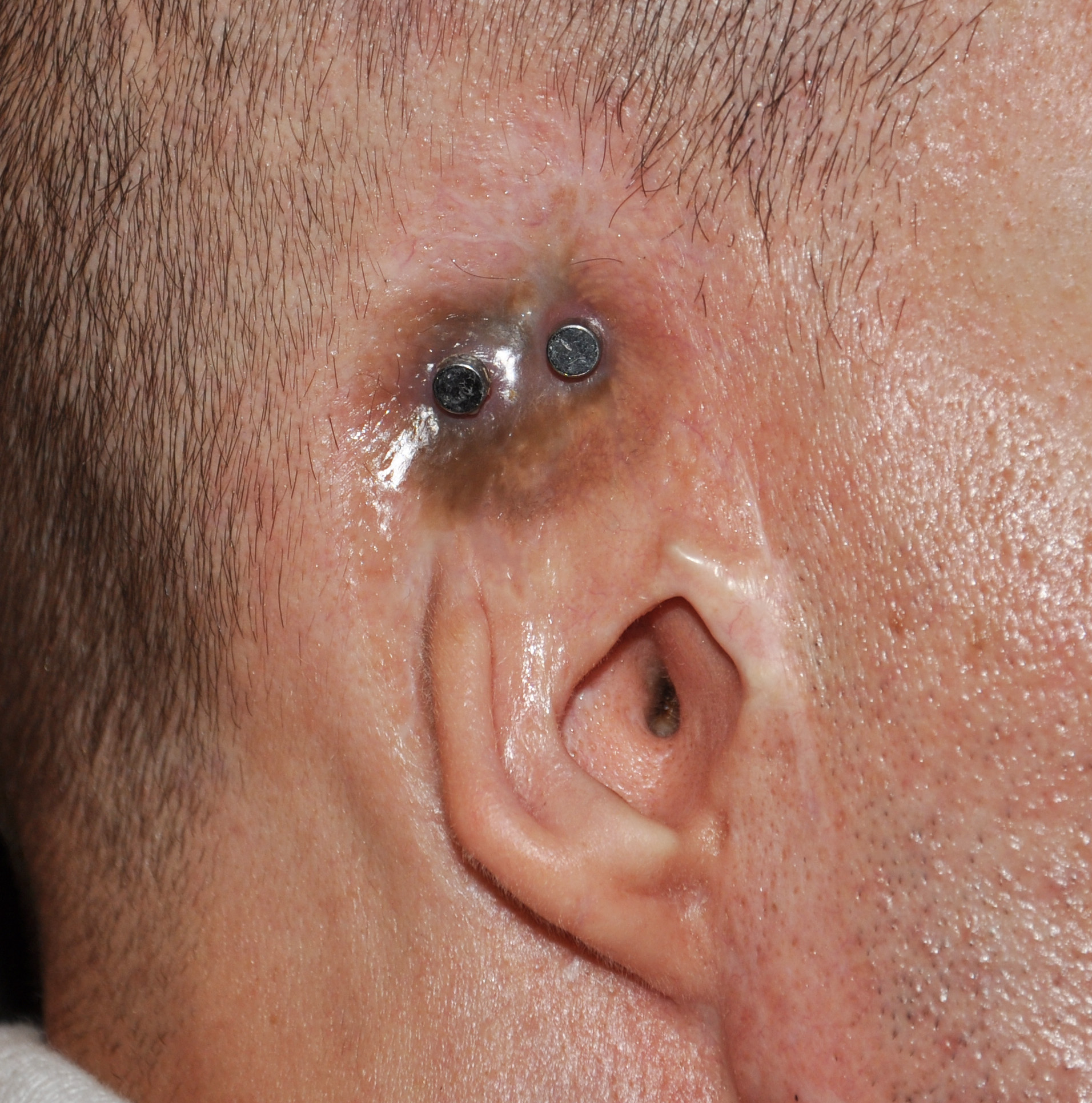
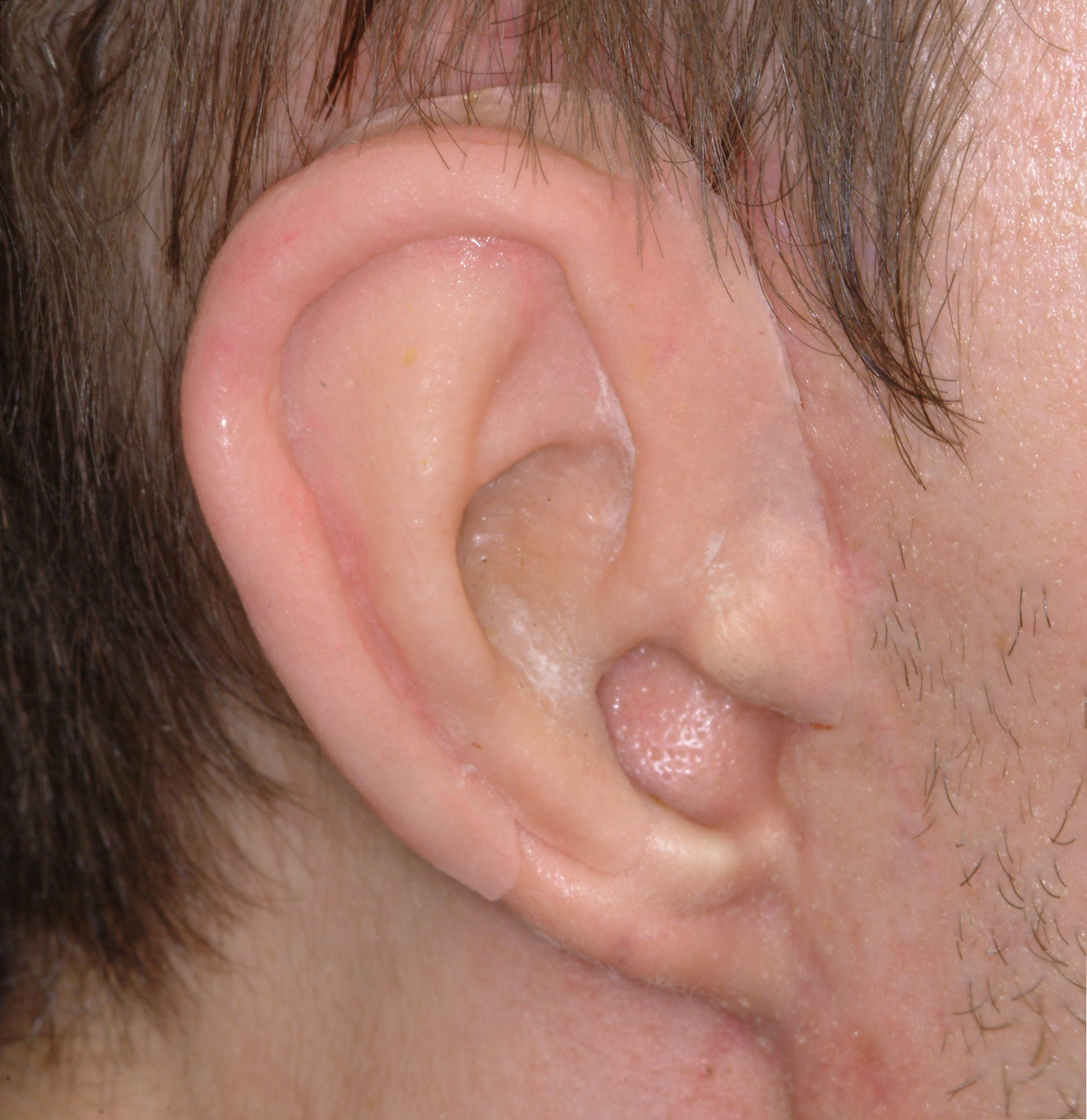
Desire for creation of external ear after dog bite avulsion injury.
Patient opted for prosthetic ear reconstruction using osseointegrated implant anchors with magnetic prosthetic external ear.


Desire for creation of external ear after dog bite avulsion injury.
Patient opted for prosthetic ear reconstruction using osseointegrated implant anchors with magnetic prosthetic external ear.
Patient 25
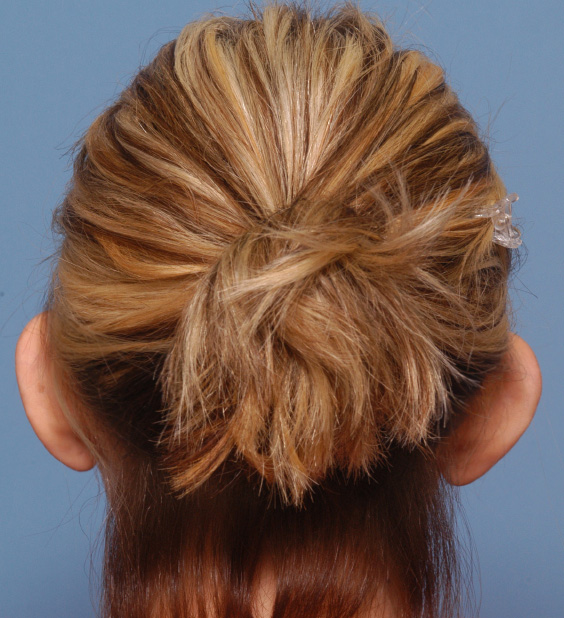
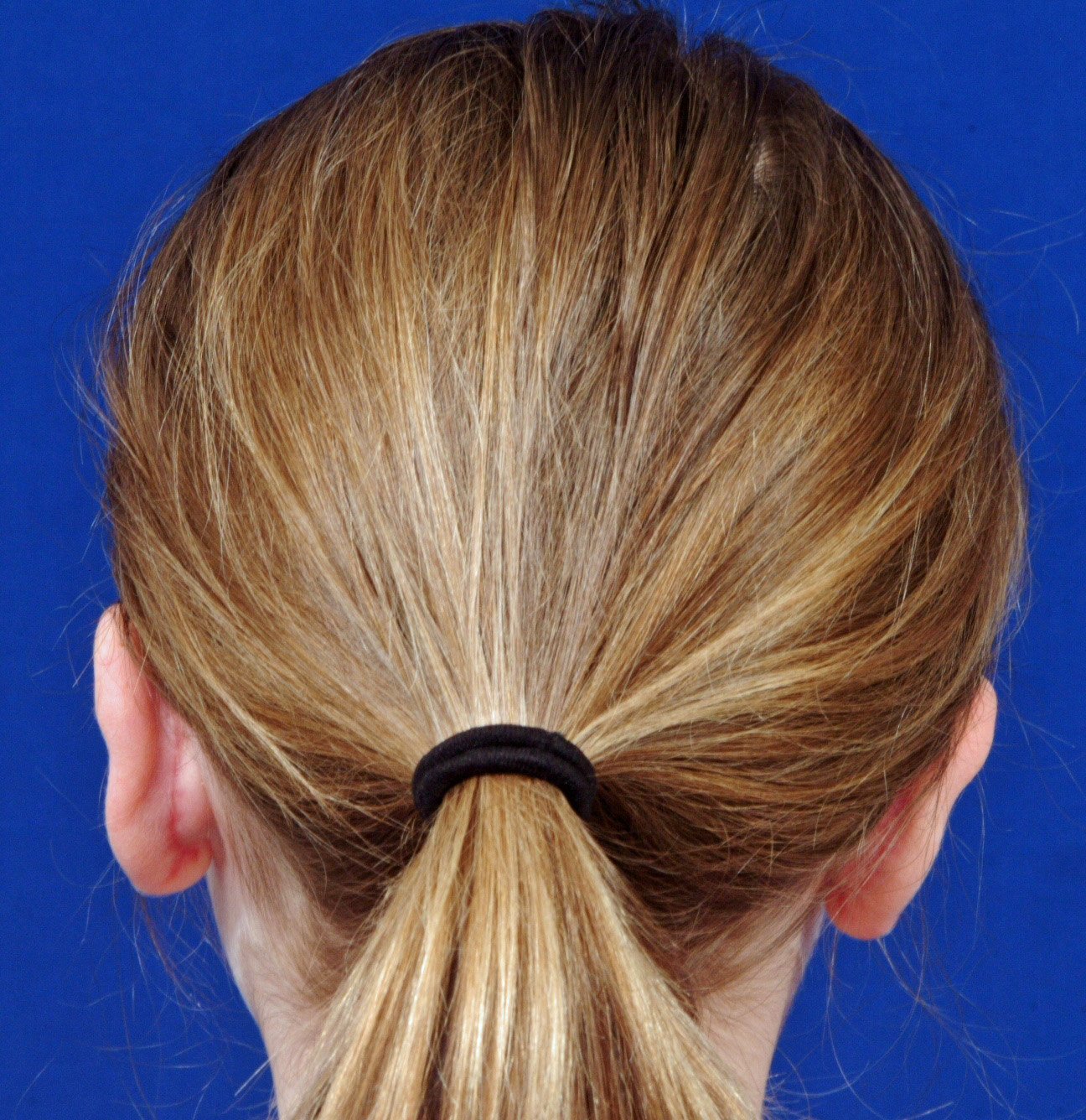
Desire for less prominent appearing ears.
Postauricular view of setback otoplasties and the incision location.


Desire for less prominent appearing ears.
Postauricular view of setback otoplasties and the incision location.
Patient 25
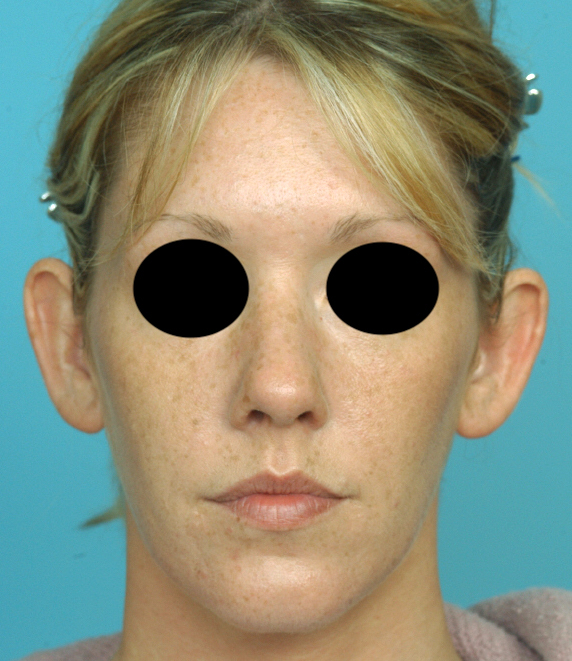
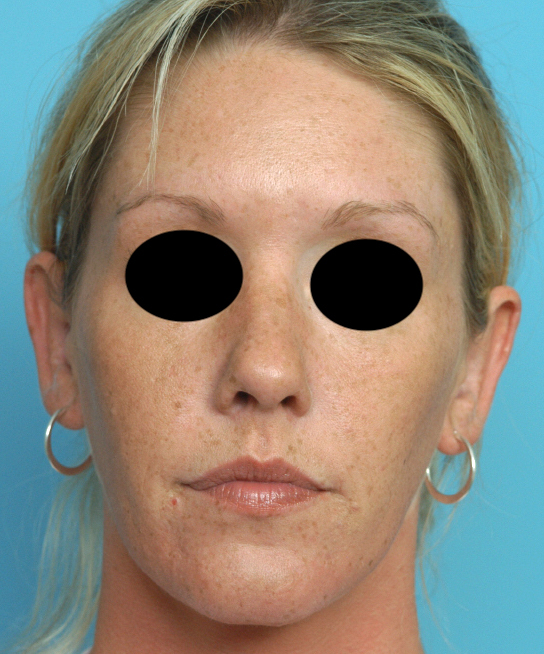
Desire for reduced ear prominence.
Setback otoplasties to decrease the auriculocephalic angle of the ears to the side of the head.


Desire for reduced ear prominence.
Setback otoplasties to decrease the auriculocephalic angle of the ears to the side of the head.
Patient 26
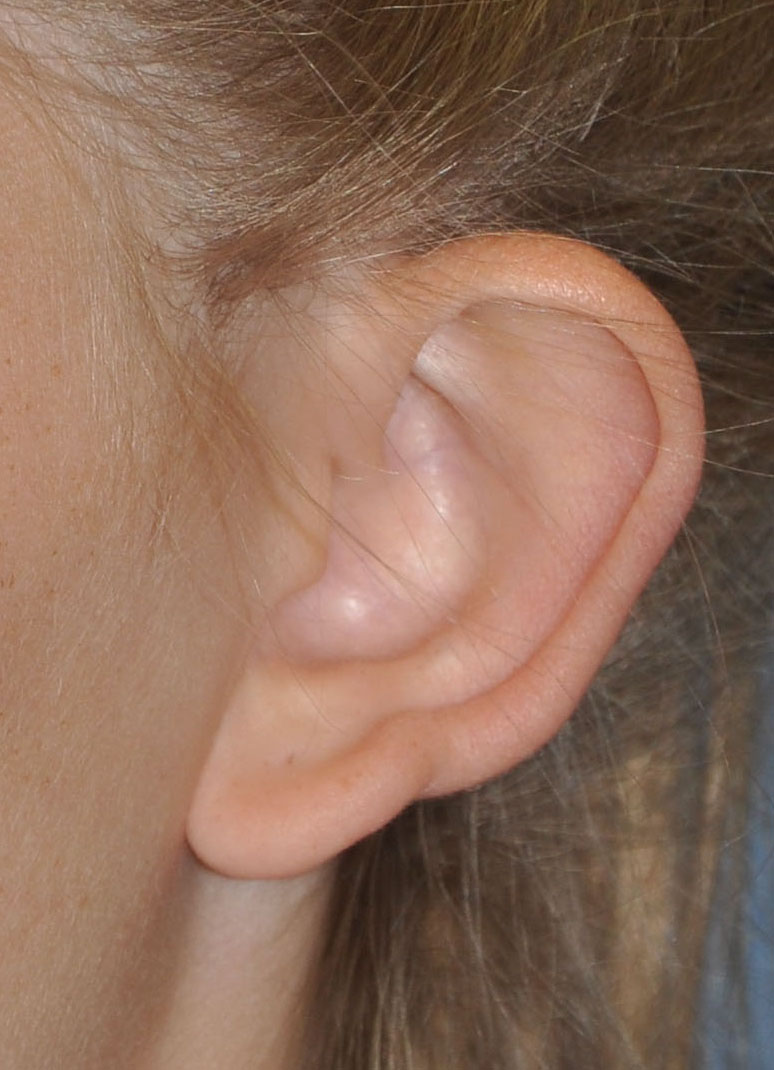
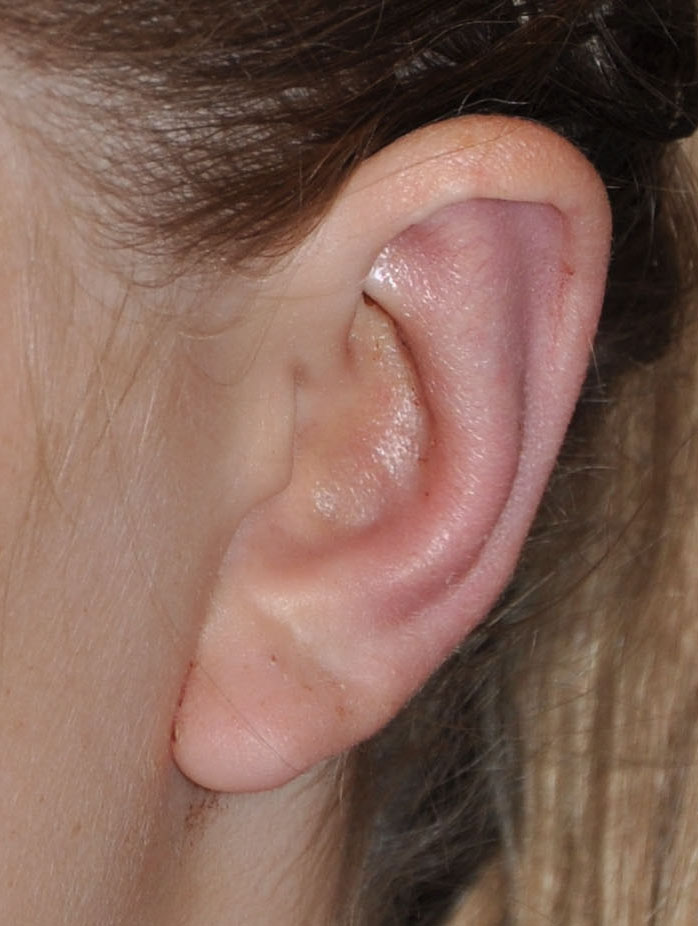
Desire for less prominent ears.
Side view of setback otoplasty result showing the increased antihelical fold of the ear by suture reshaping.


Desire for less prominent ears.
Side view of setback otoplasty result showing the increased antihelical fold of the ear by suture reshaping.
Patient 27
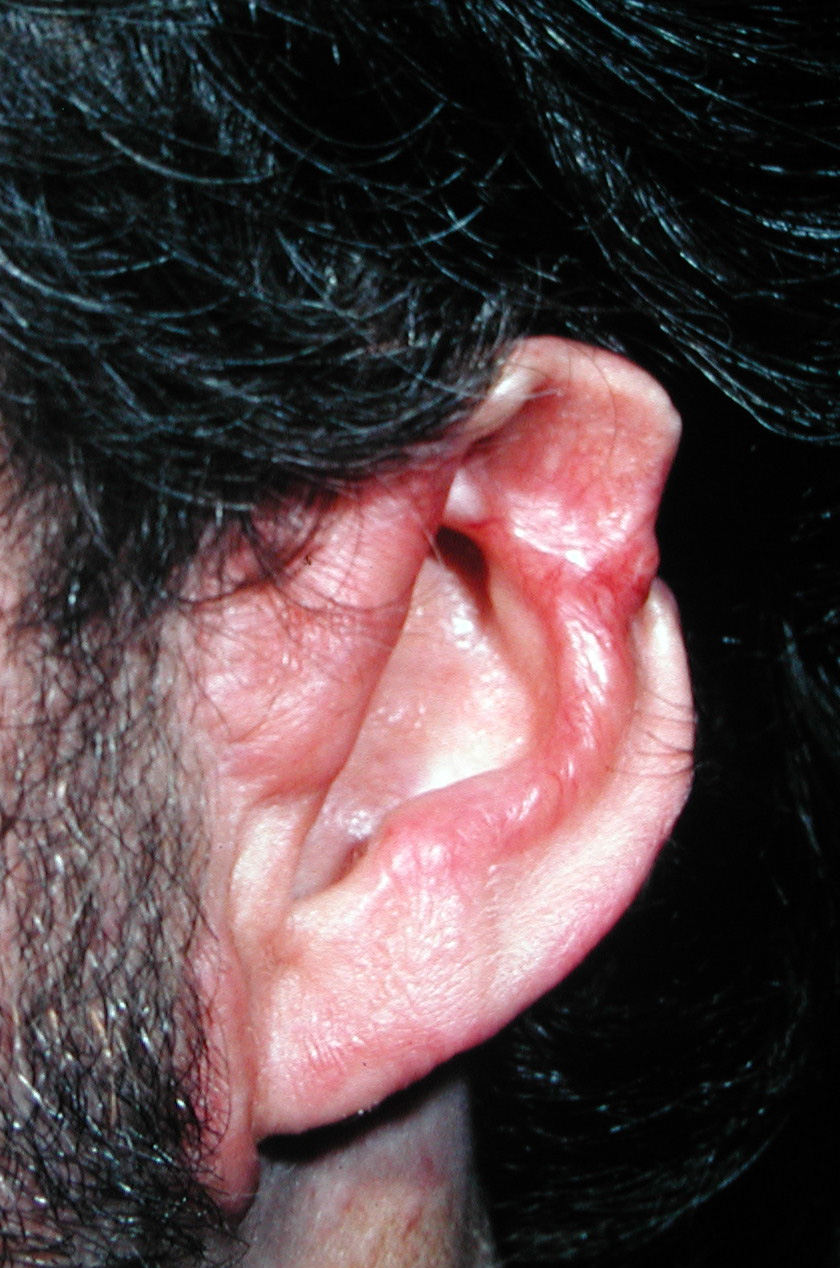
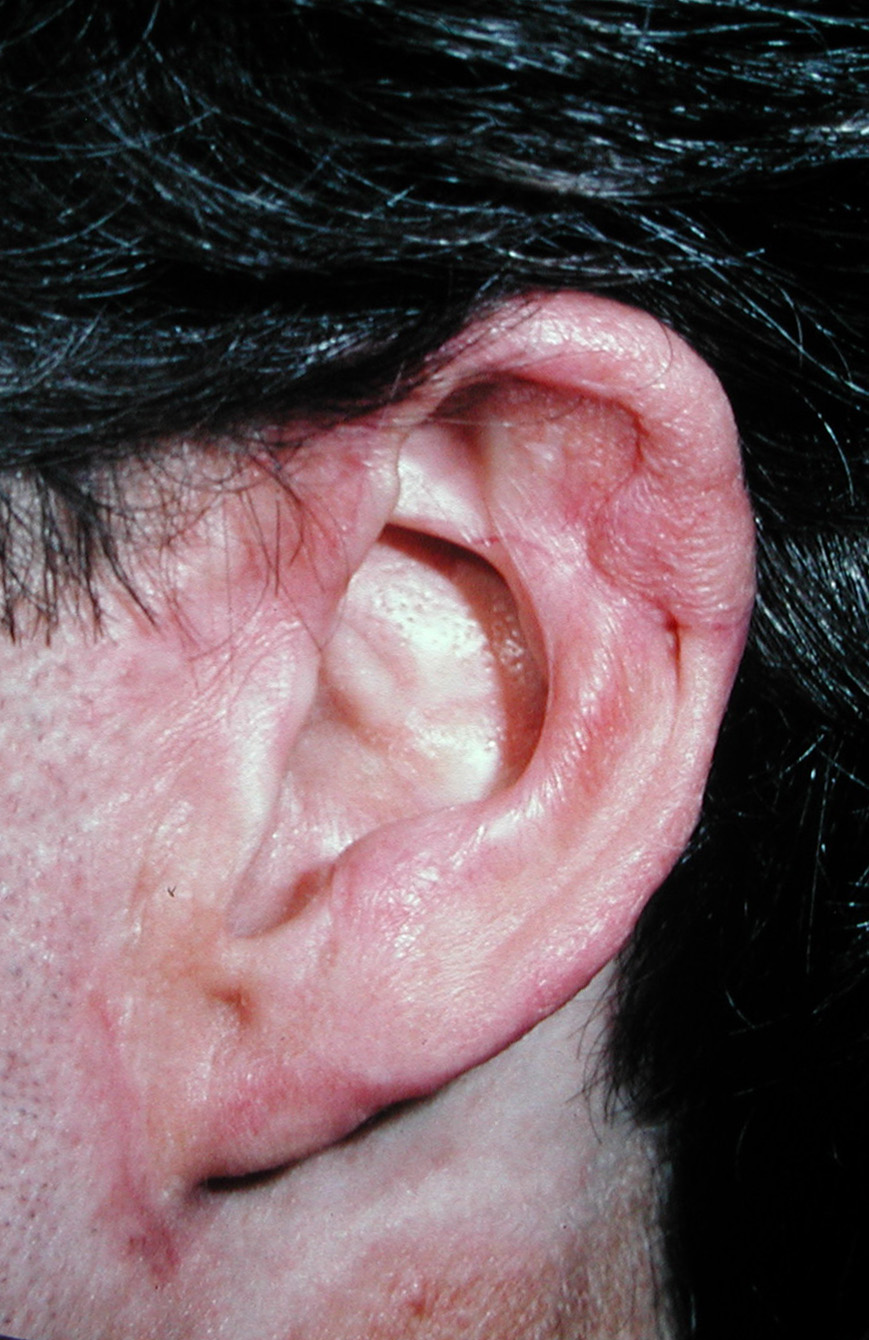
Desire for restoration of ear shape after avulsion injury from horse bite.
Two stage ear reconstruction using postauricular skin flap inset (first stage) followed by second stage release with helical rim creation by a rig graft.


Desire for restoration of ear shape after avulsion injury from horse bite.
Two stage ear reconstruction using postauricular skin flap inset (first stage) followed by second stage release with helical rim creation by a rig graft.
Patient 28
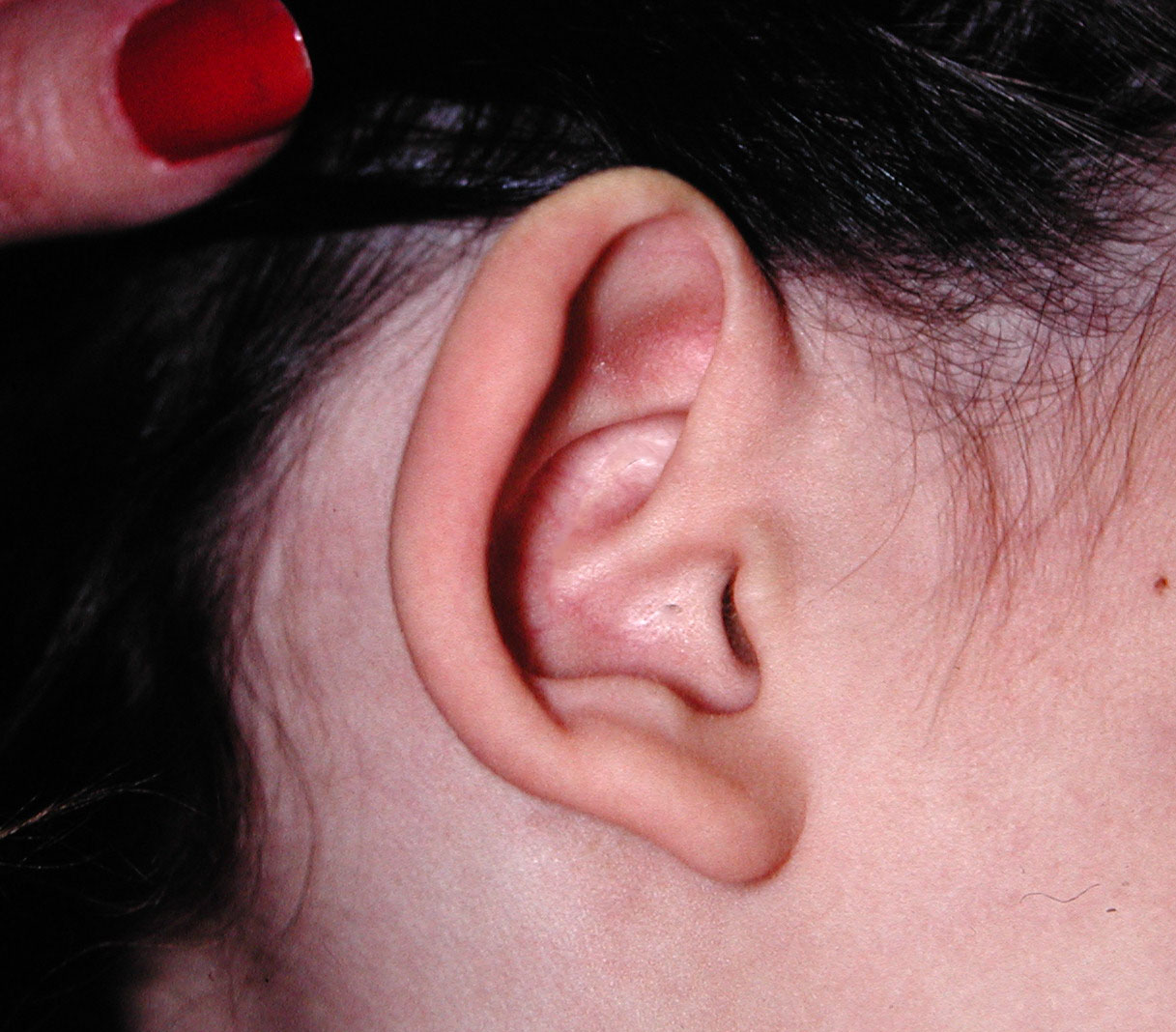
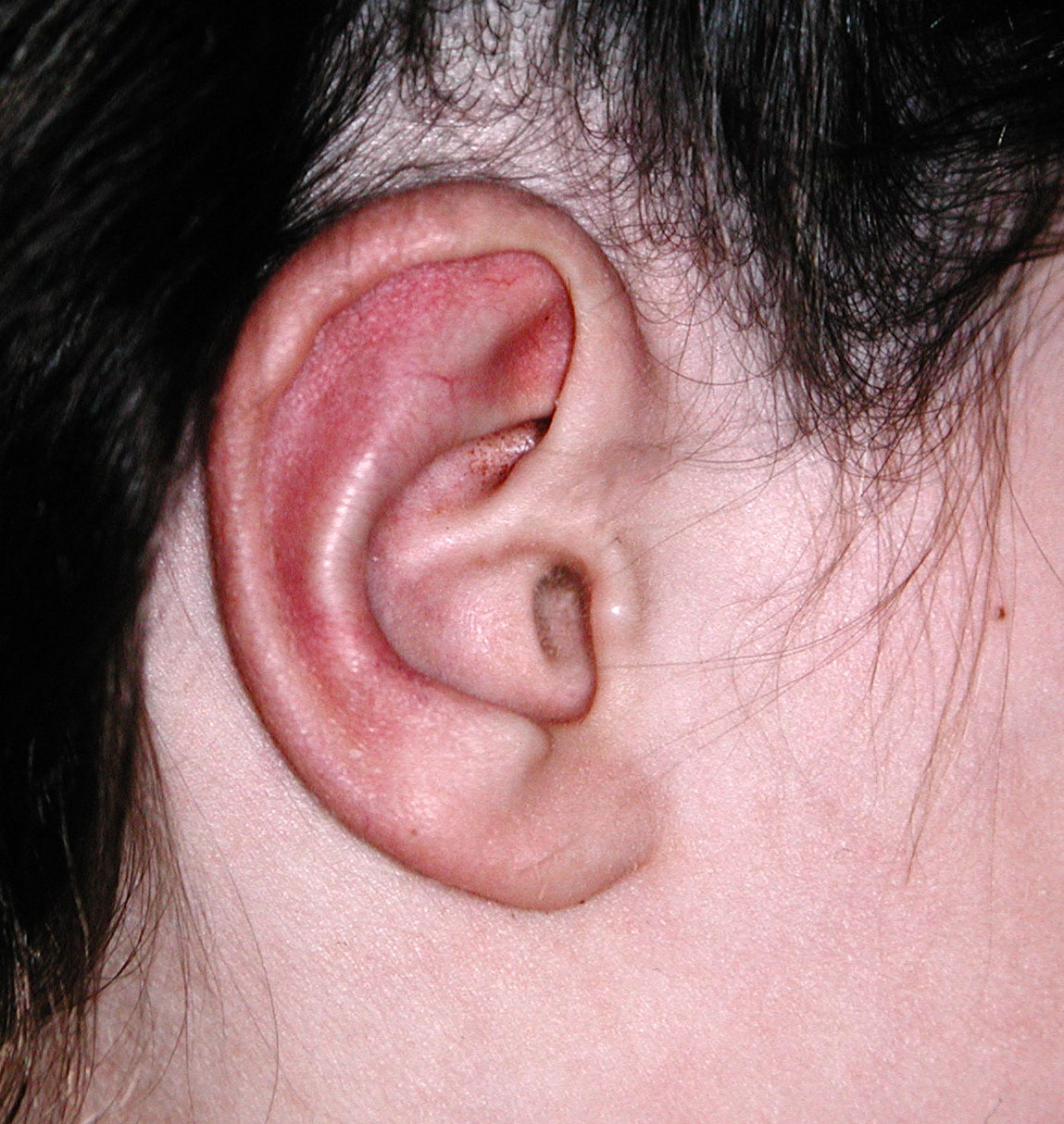
Desire for reduction of prominent ears in a child.
Side view result of setback otoplasty showing the visible definition of the antihelical fold and the posterior relocation of the helical rim using suture techniques.


Desire for reduction of prominent ears in a child.
Side view result of setback otoplasty showing the visible definition of the antihelical fold and the posterior relocation of the helical rim using suture techniques.
Patient 29
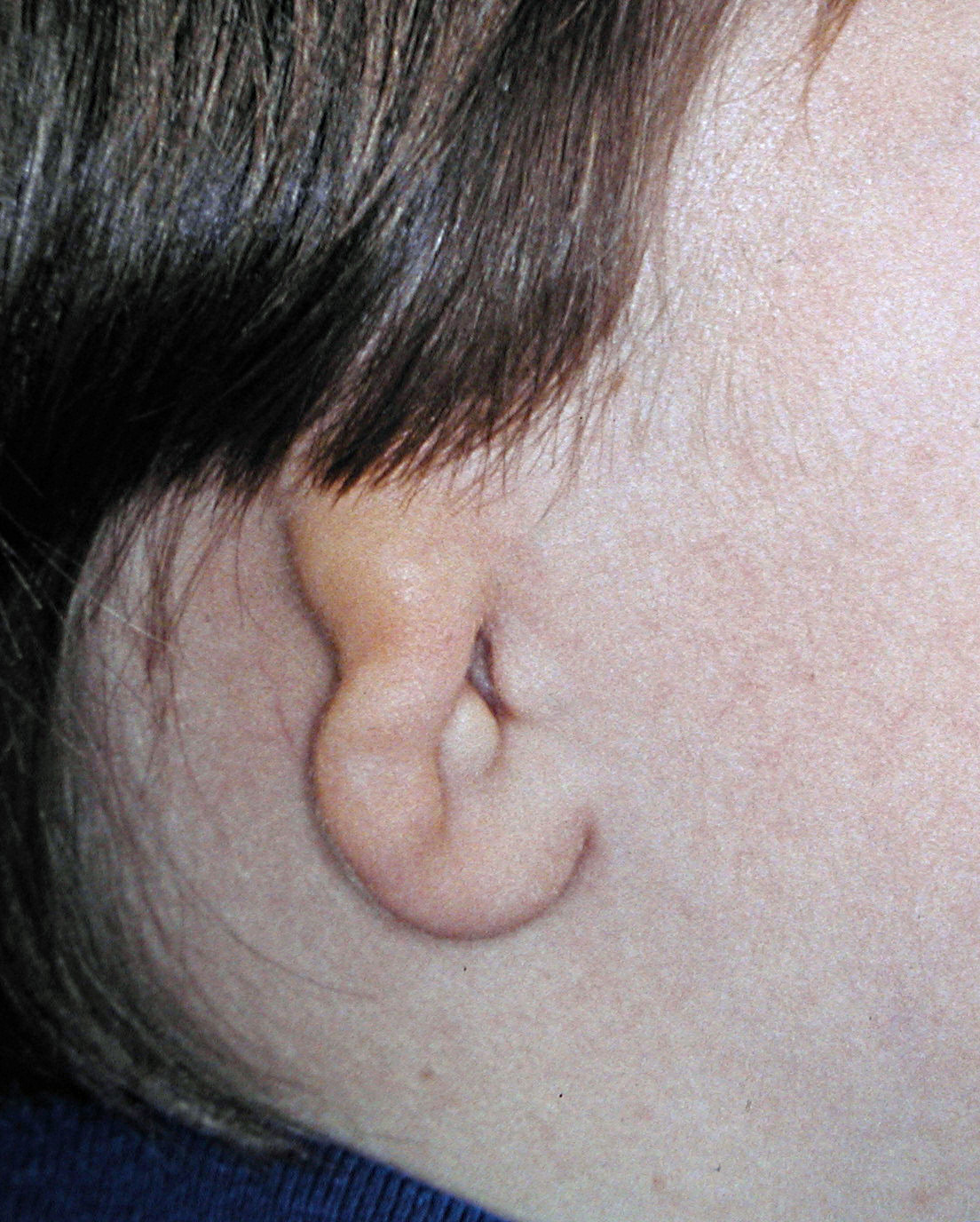
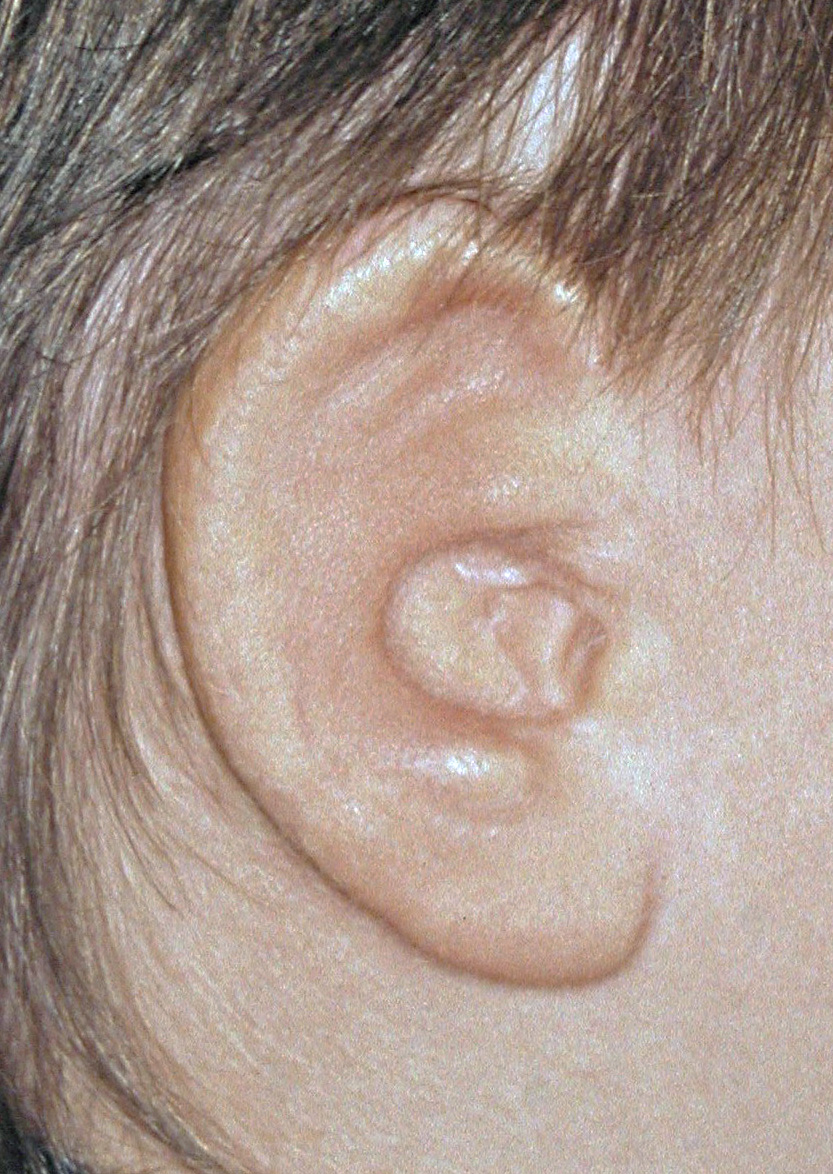
Microtia ear reconstruction using a first stage rib graft framework, second stage earlobe flap transposition and throw stage tragus reconstruction.


Microtia ear reconstruction using a first stage rib graft framework, second stage earlobe flap transposition and throw stage tragus reconstruction.
Patient 30
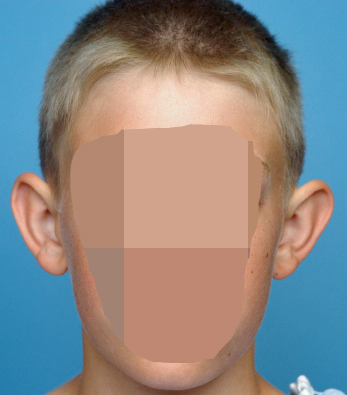
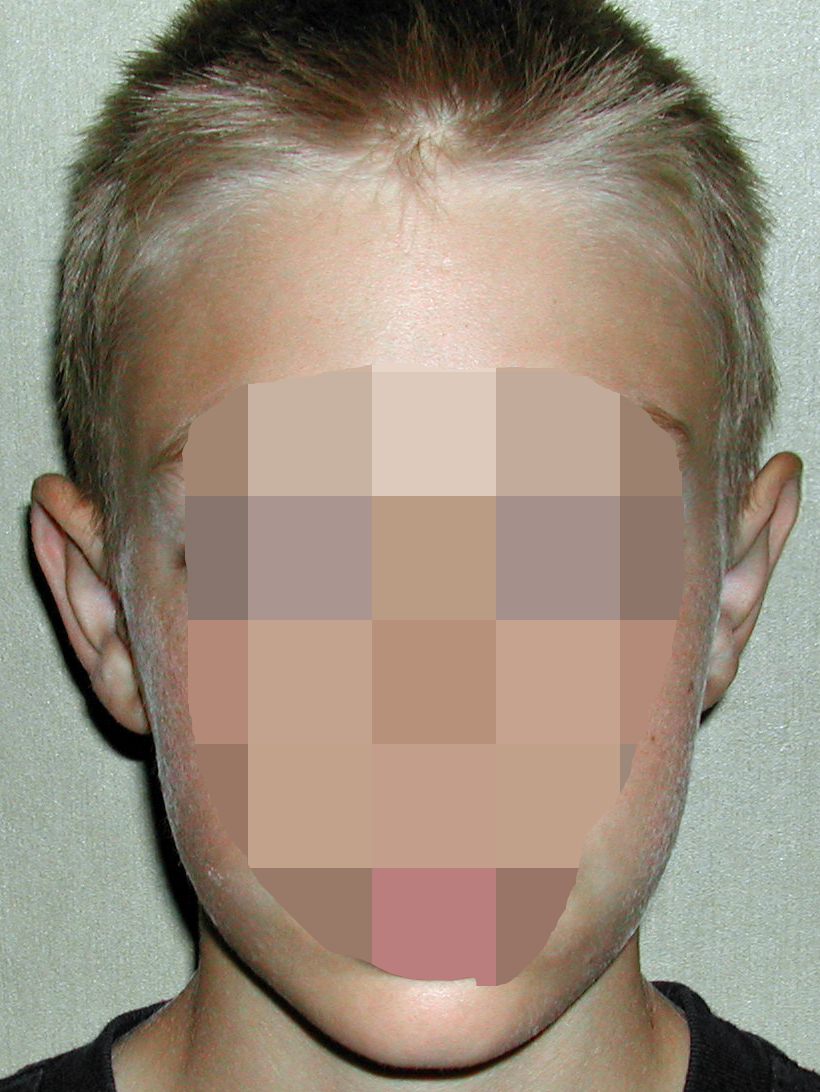
Desire for reduction of prominent ears.
Setback otoplasty result.


Desire for reduction of prominent ears.
Setback otoplasty result.
Patient 31
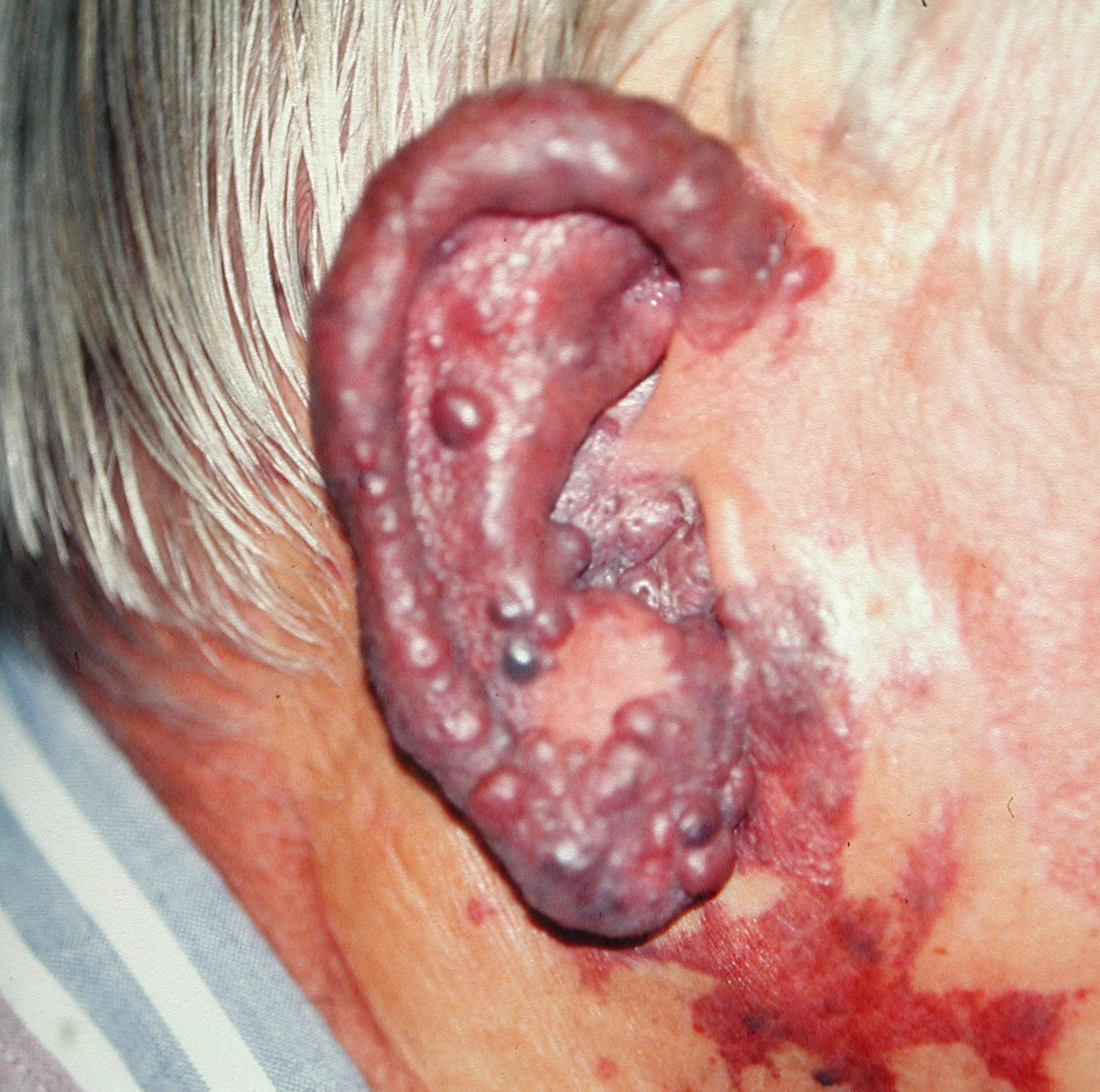
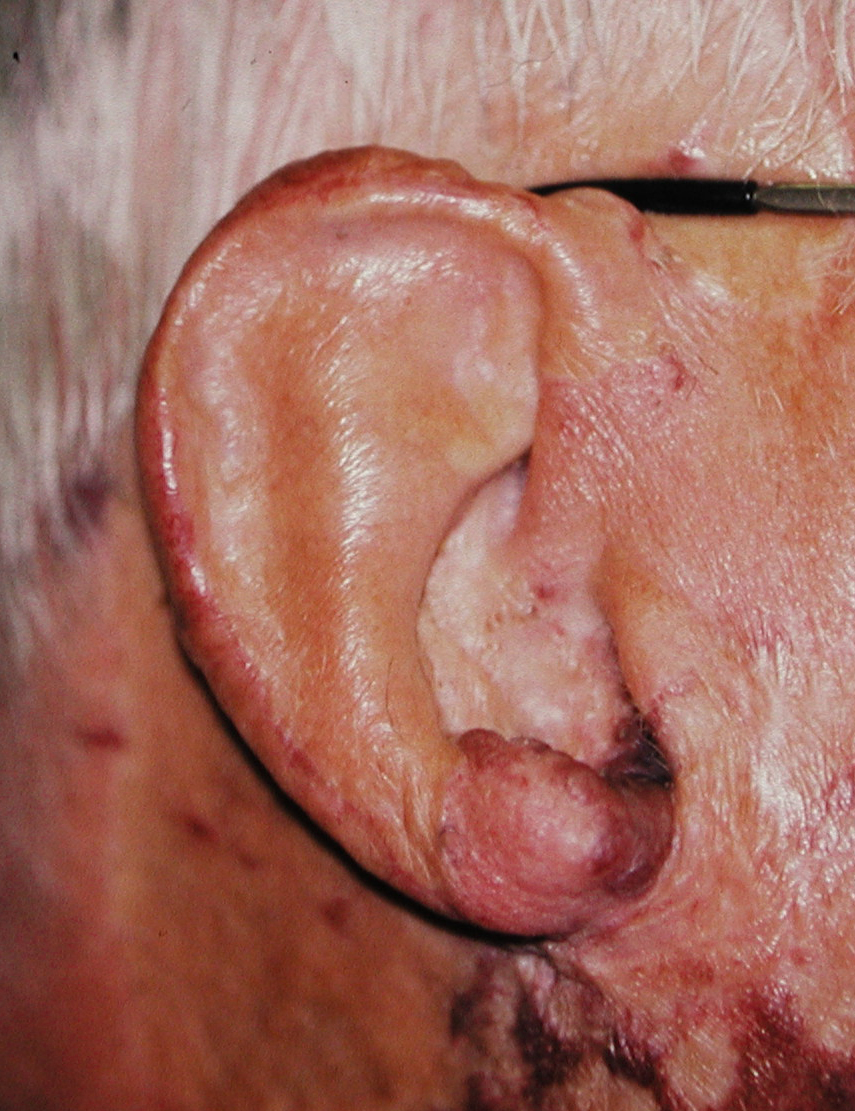
Congenital vascular malformation of ear that was never fully treated.
Excision of vascular malformation of ear with skin graft reconstruction.


Congenital vascular malformation of ear that was never fully treated.
Excision of vascular malformation of ear with skin graft reconstruction.
Patient 32
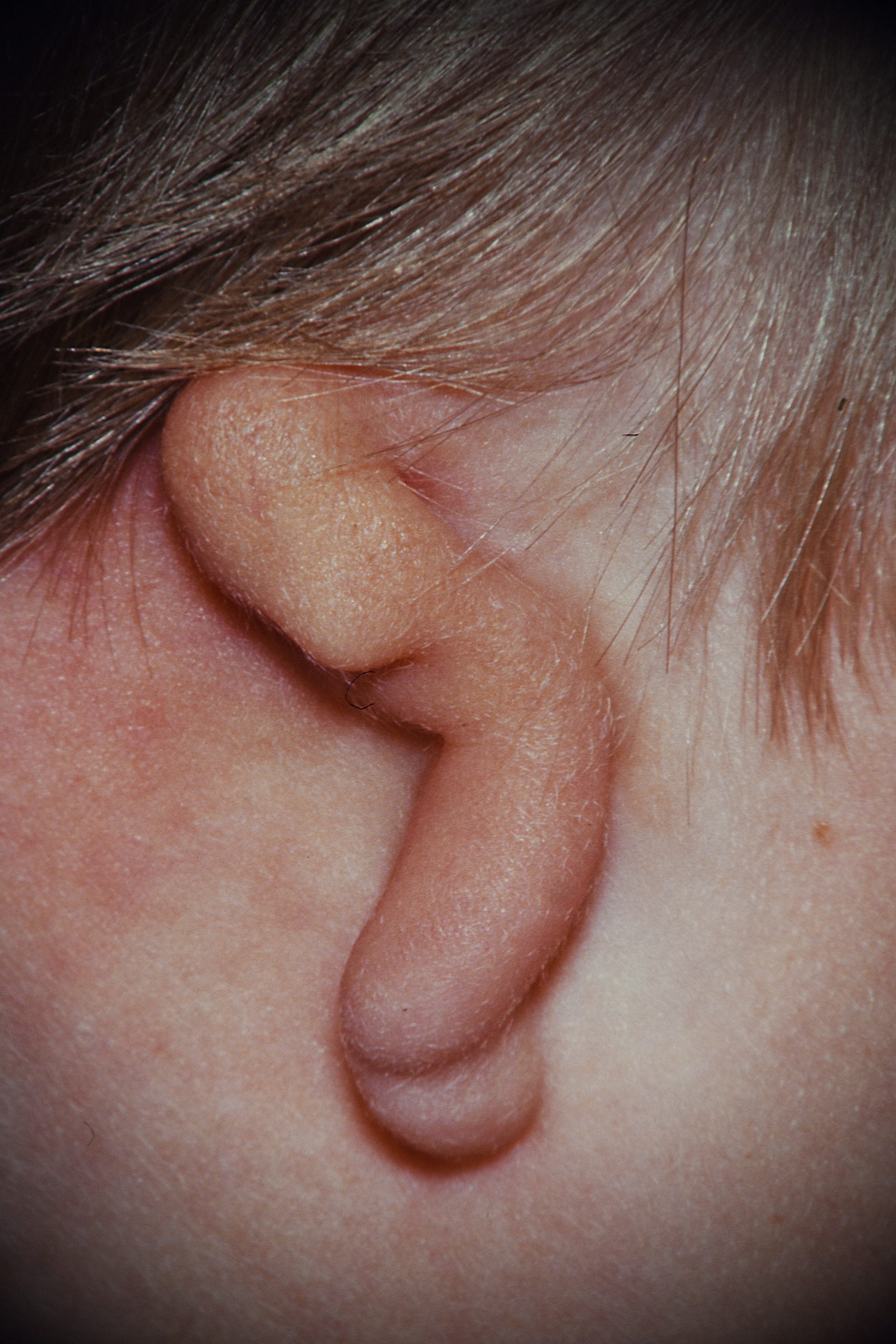
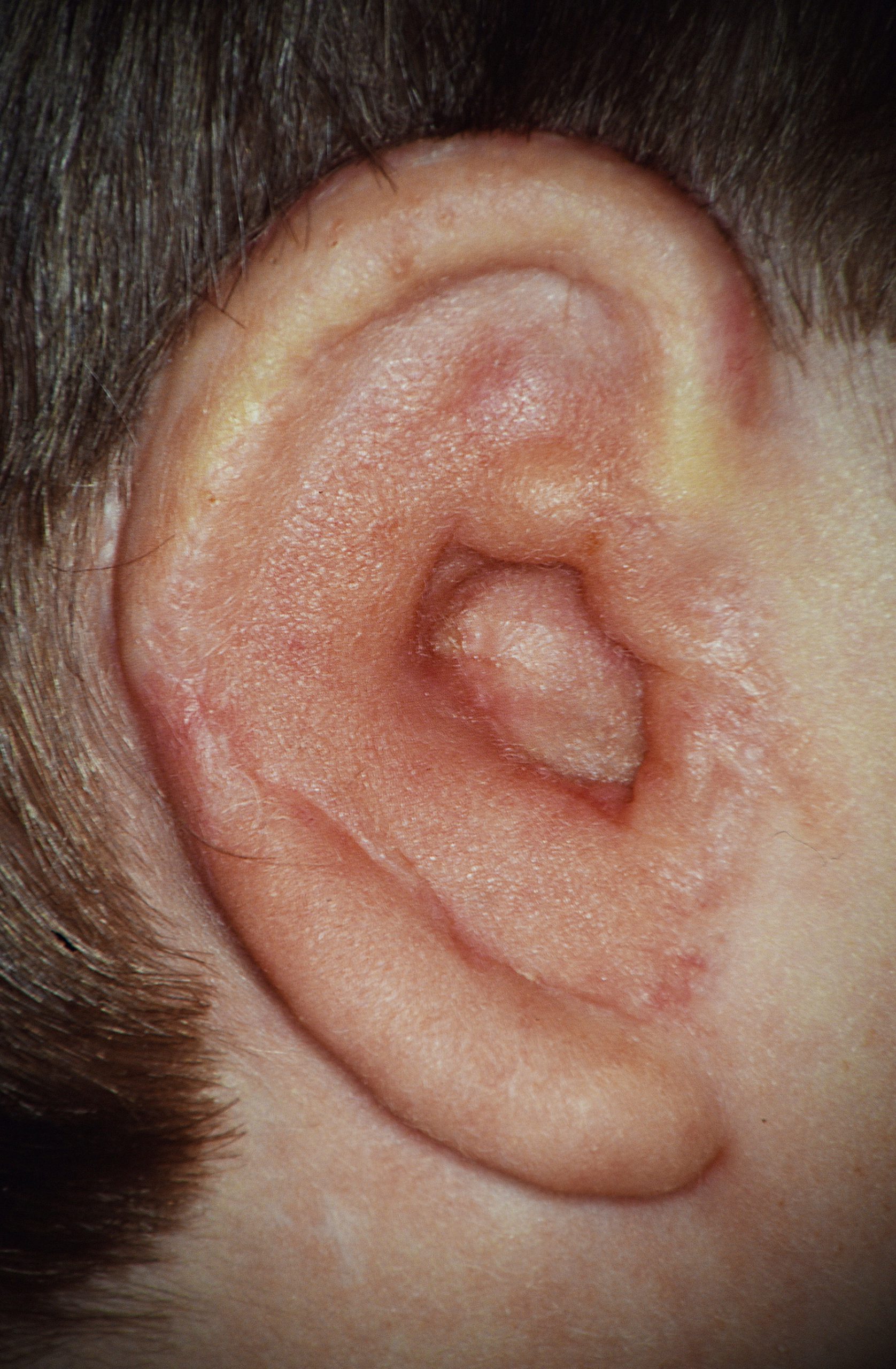
Congenital microtia ear deformity.
Microtia ear reconstruction using a first stage rib graft cartilage framework followed by earlobe transpositions, postauricular release and tragus skin grafting.


Congenital microtia ear deformity.
Microtia ear reconstruction using a first stage rib graft cartilage framework followed by earlobe transpositions, postauricular release and tragus skin grafting.
Patient 33
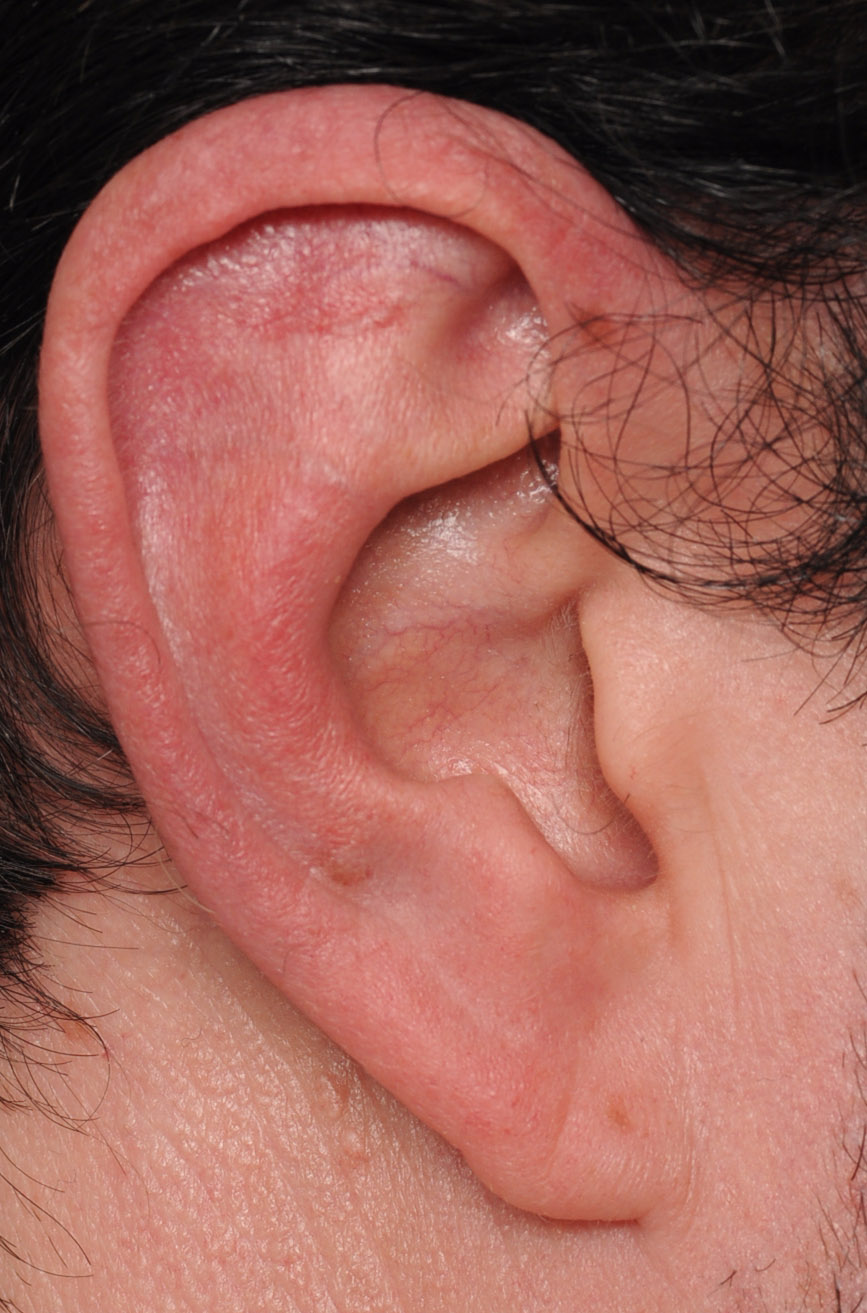
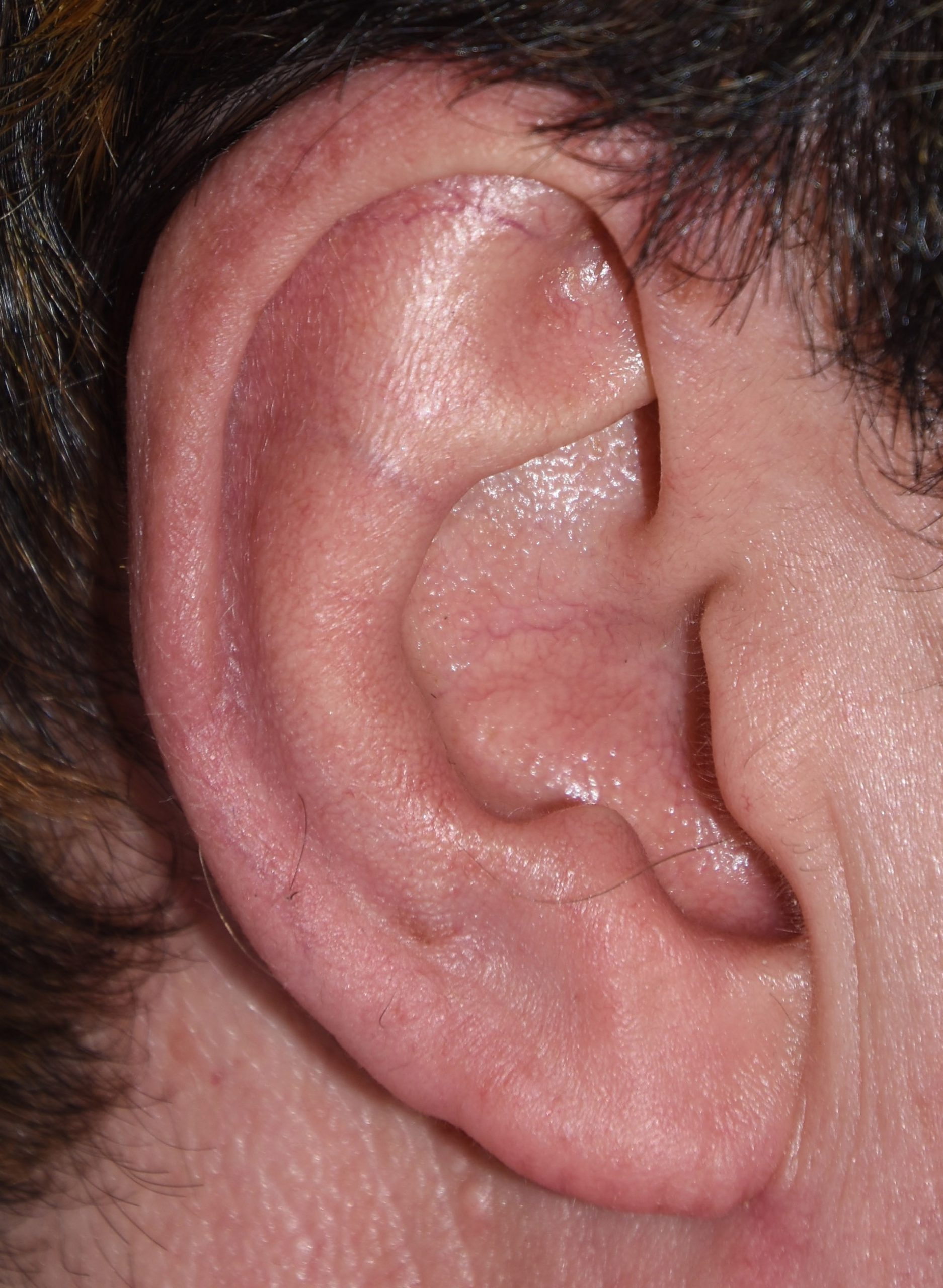
Desire for smaller ear from top to bottom.
Macrotia ear reduction using a superior scapula flap reduction and inferior helical rim reduction.


Desire for smaller ear from top to bottom.
Macrotia ear reduction using a superior scapula flap reduction and inferior helical rim reduction.
Patient 35
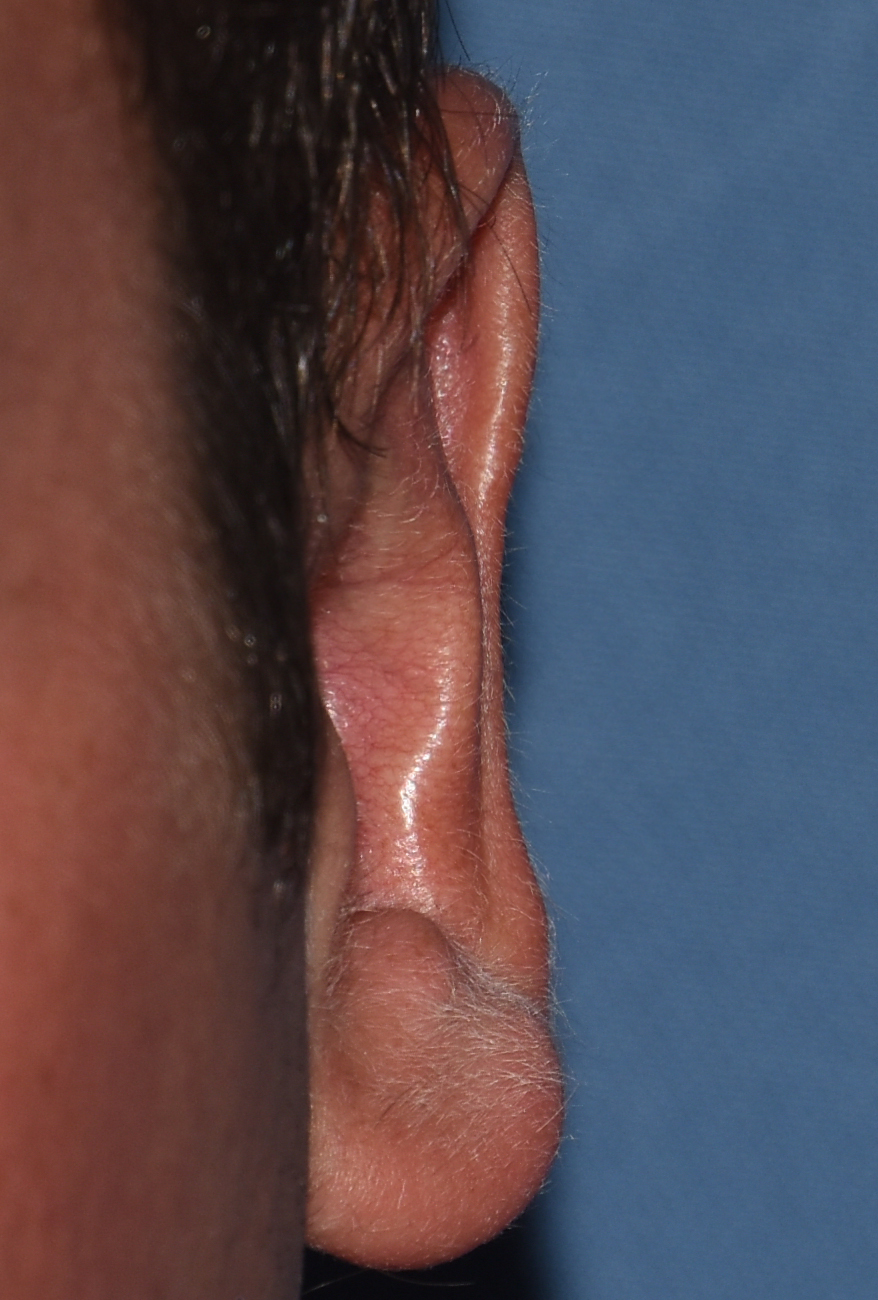
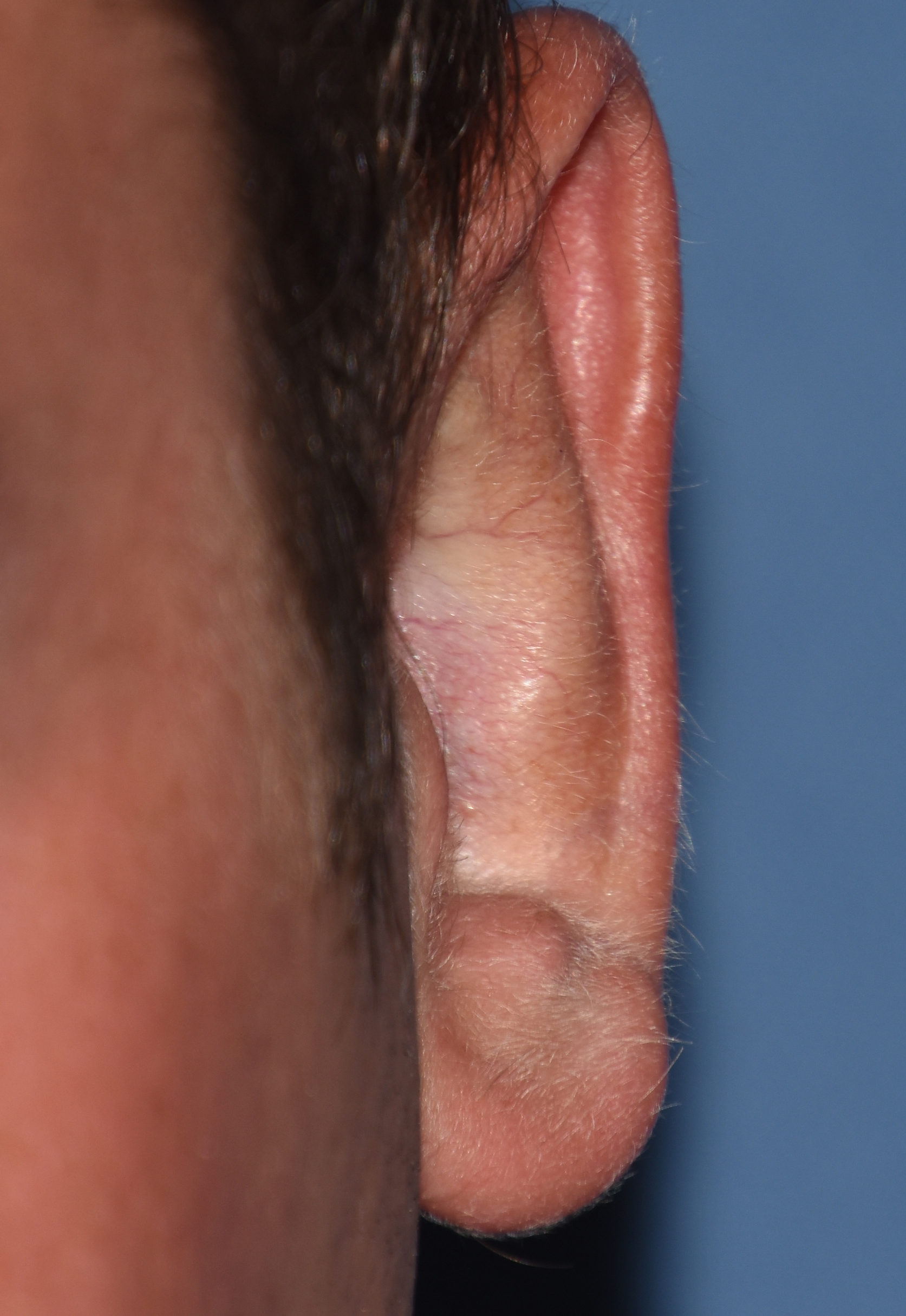
Desire for partial reversal of prior setback otoplasty.
Partial otoplasty reversal using a combination of a release and placement of interpostional cadaveric rib graft through postauricular incisions


Desire for partial reversal of prior setback otoplasty.
Partial otoplasty reversal using a combination of a release and placement of interpostional cadaveric rib graft through postauricular incisions
Patient 36
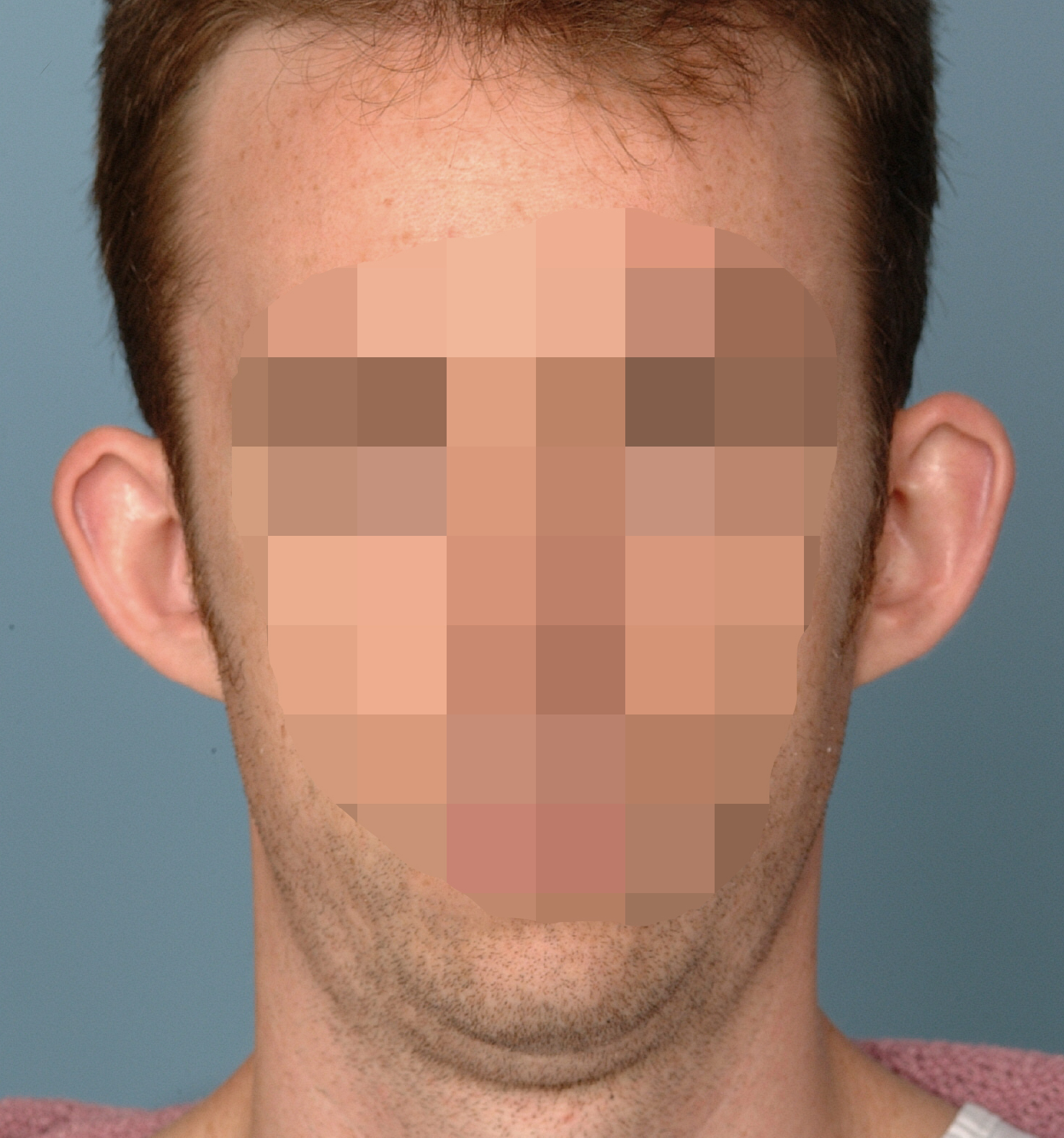
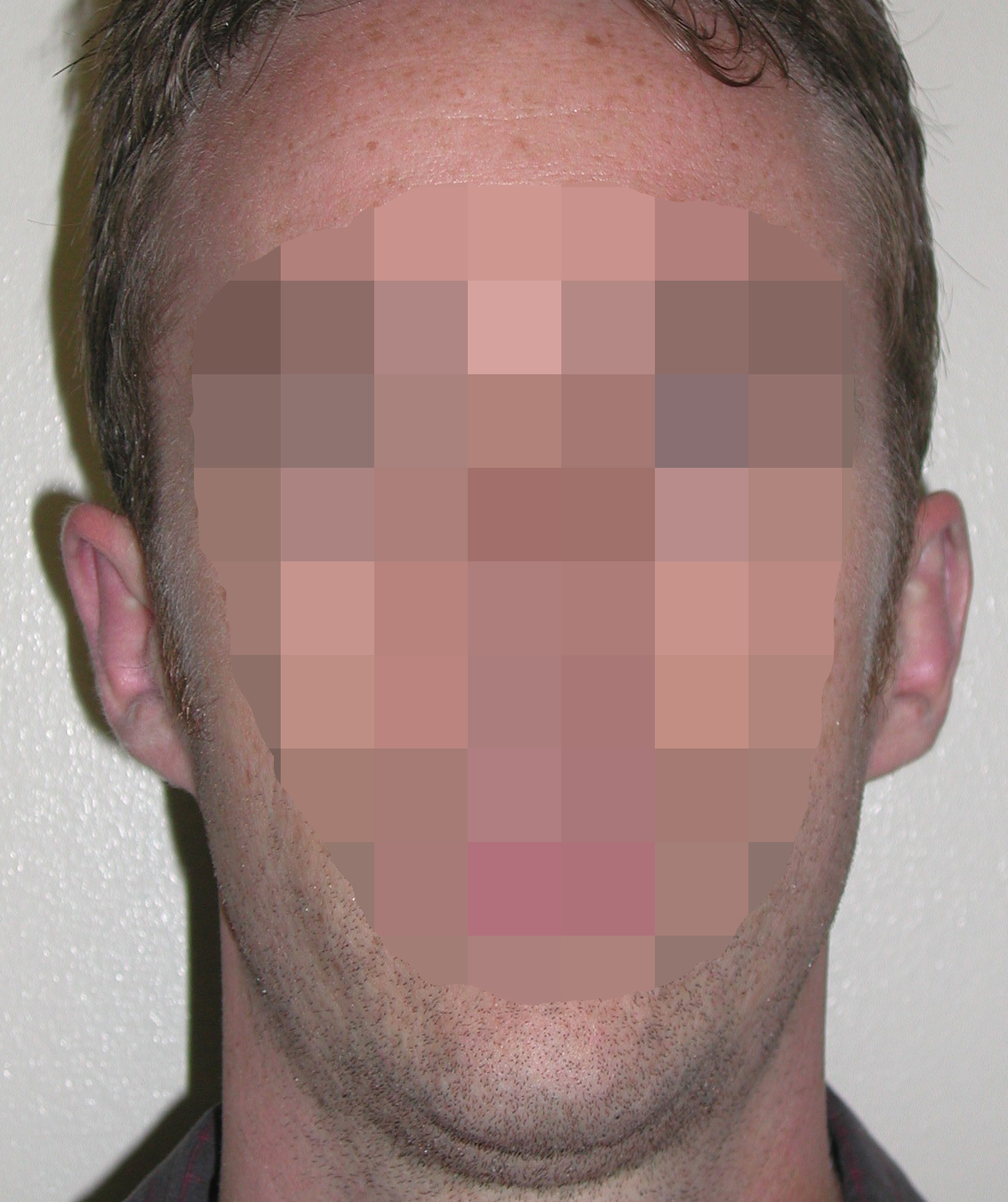
Desire for less prominent ear appearance.
Bilateral setback otoplasties using postauricular cartilage reshaping techniques with permanent sutures.


Desire for less prominent ear appearance.
Bilateral setback otoplasties using postauricular cartilage reshaping techniques with permanent sutures.
Patient 37
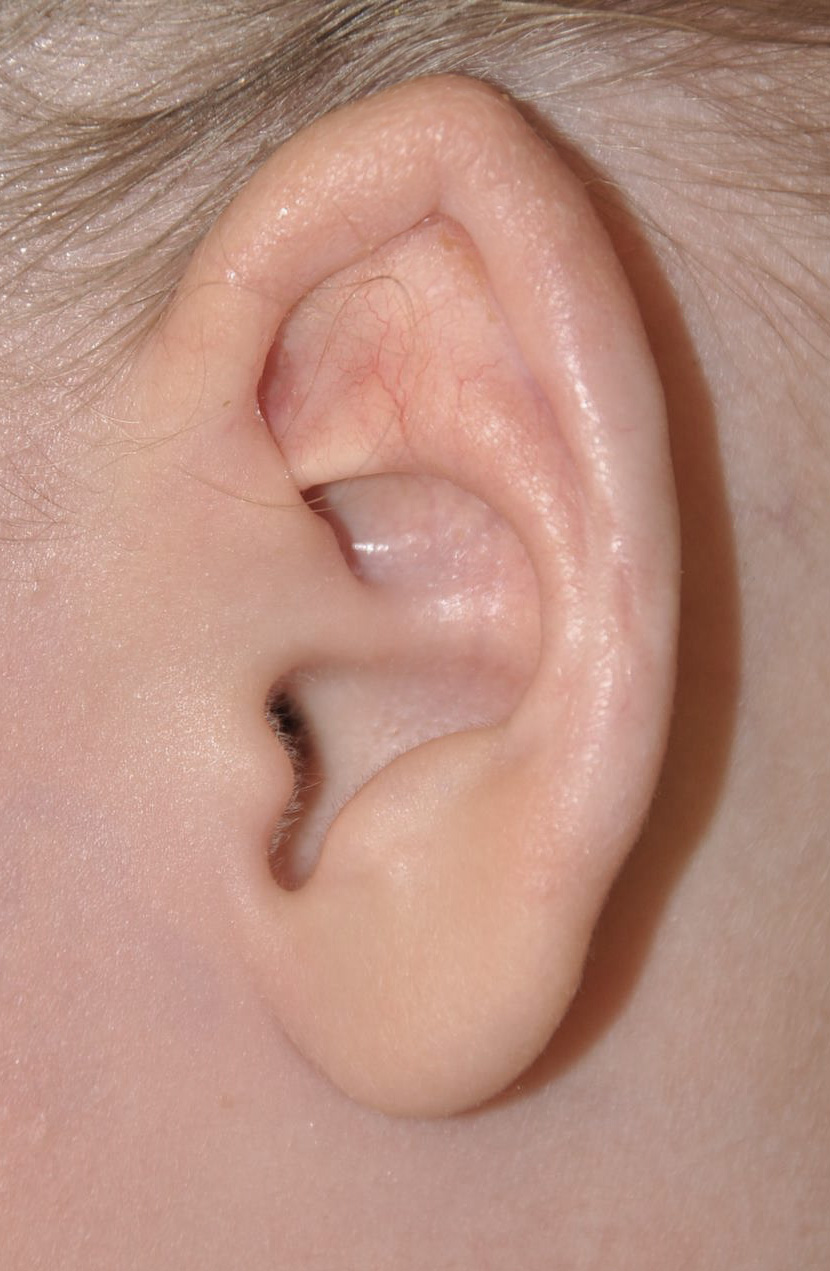
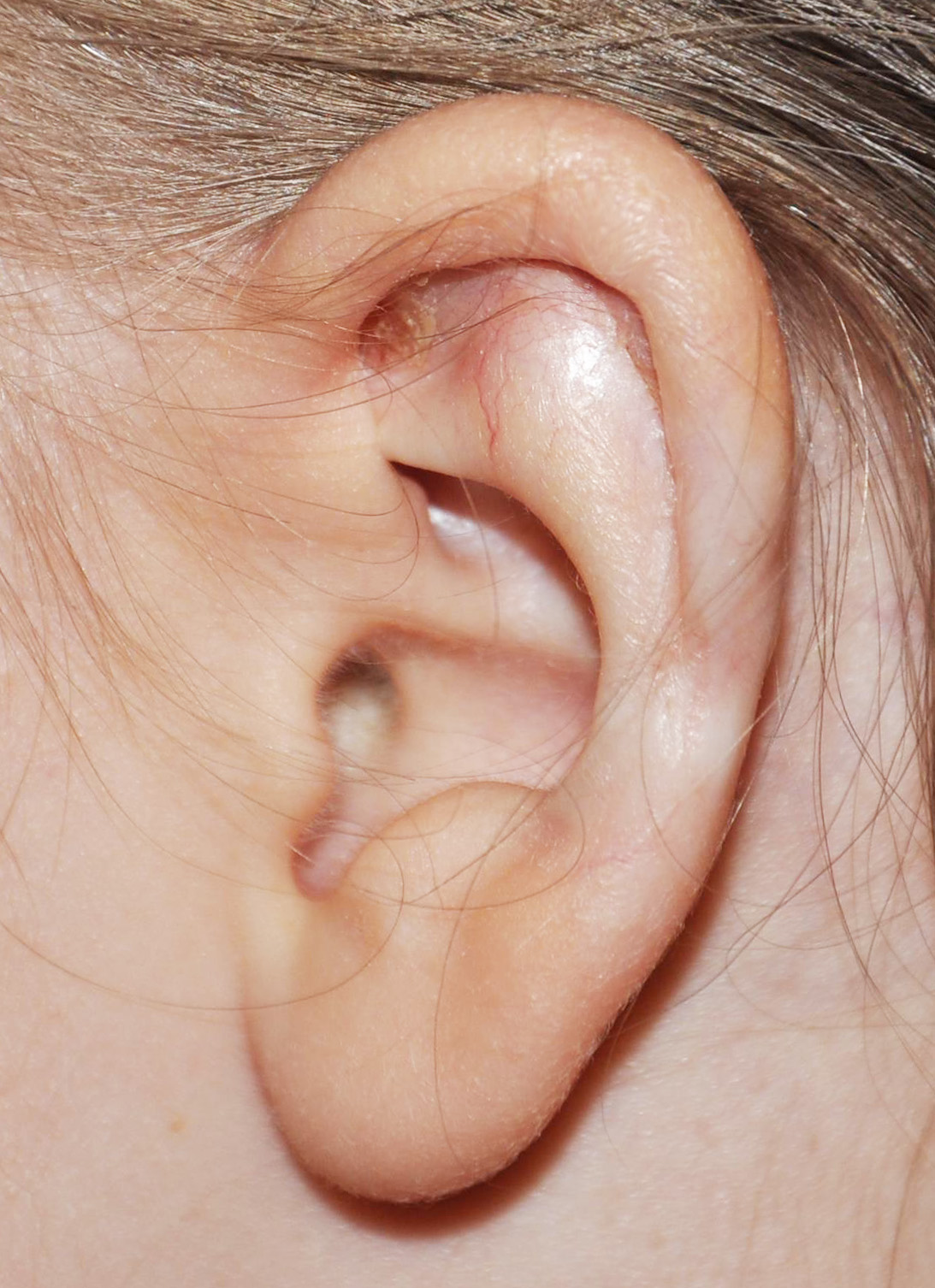
Congenital Spock(Stahl's) ear deformity in which the top of the ear is pointy.
Spock (Stahl's) ear correction using cartilage releases and cartilage graft for upper ear reshaping.


Congenital Spock(Stahl's) ear deformity in which the top of the ear is pointy.
Spock (Stahl's) ear correction using cartilage releases and cartilage graft for upper ear reshaping.
Patient 38
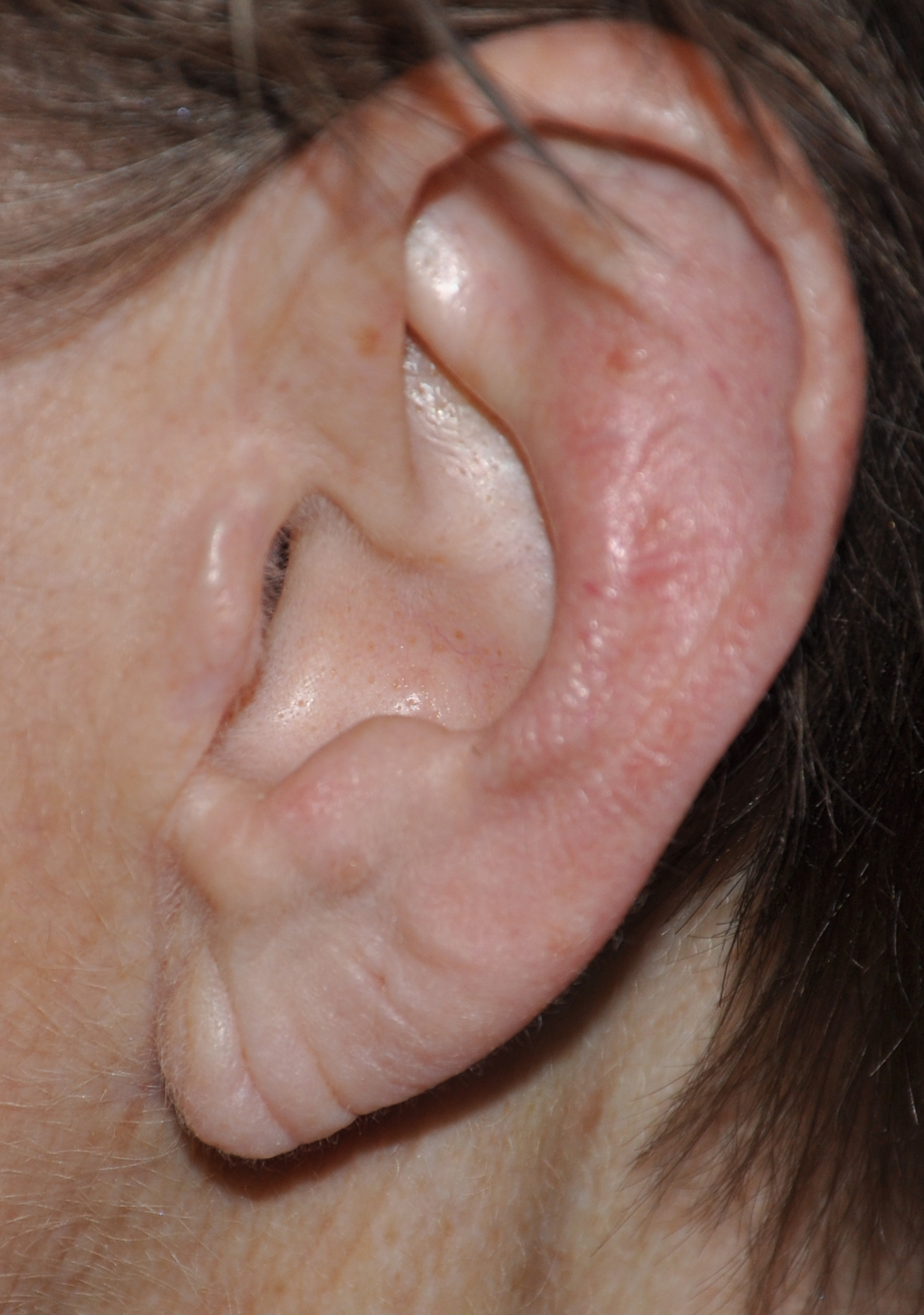
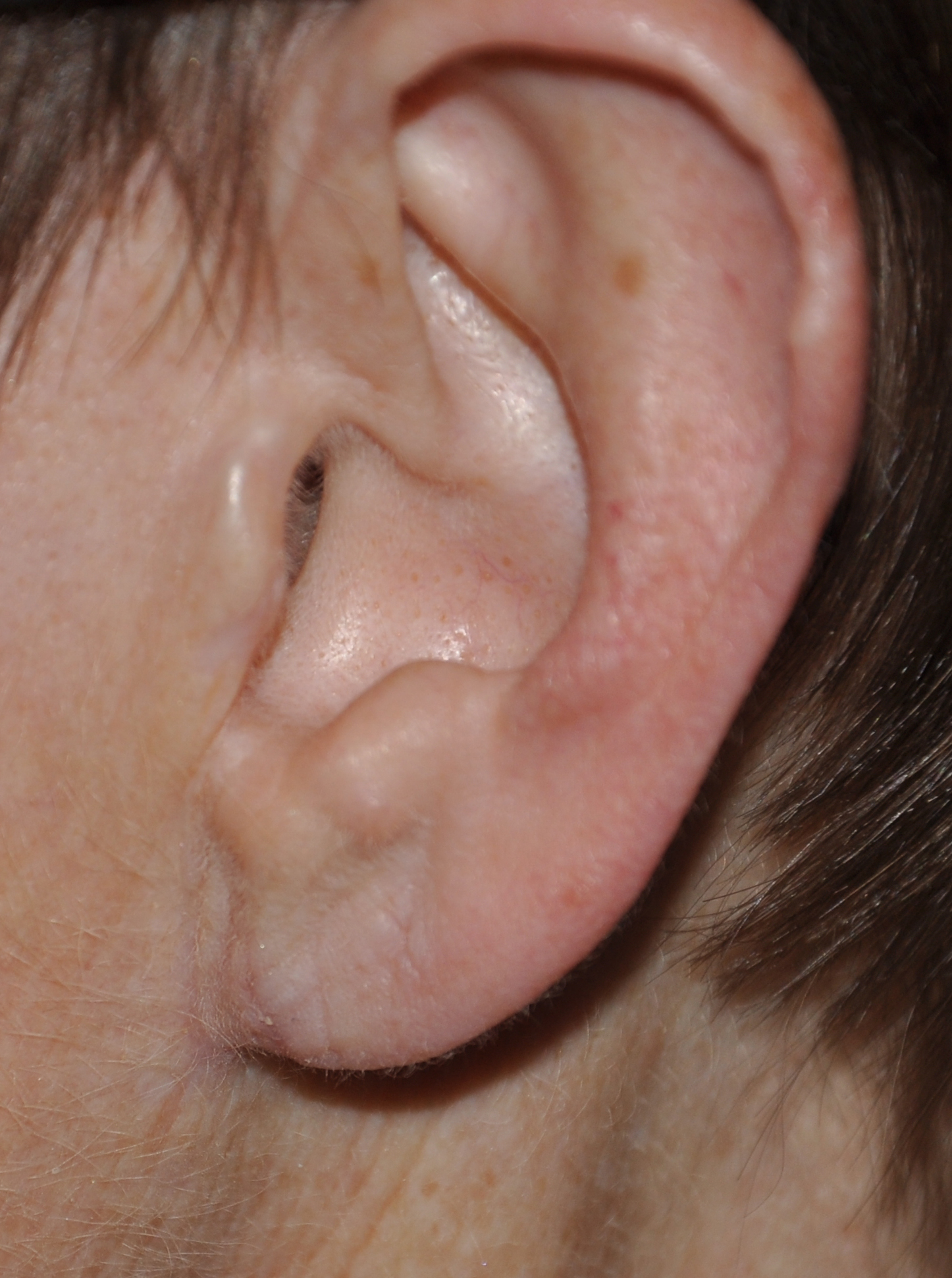
Desire for smaller and younger looking earlobes.
Earlobe rejuvenation done by wedge excision of earlobe through existing wrinkle lines.


Desire for smaller and younger looking earlobes.
Earlobe rejuvenation done by wedge excision of earlobe through existing wrinkle lines.
Patient 39
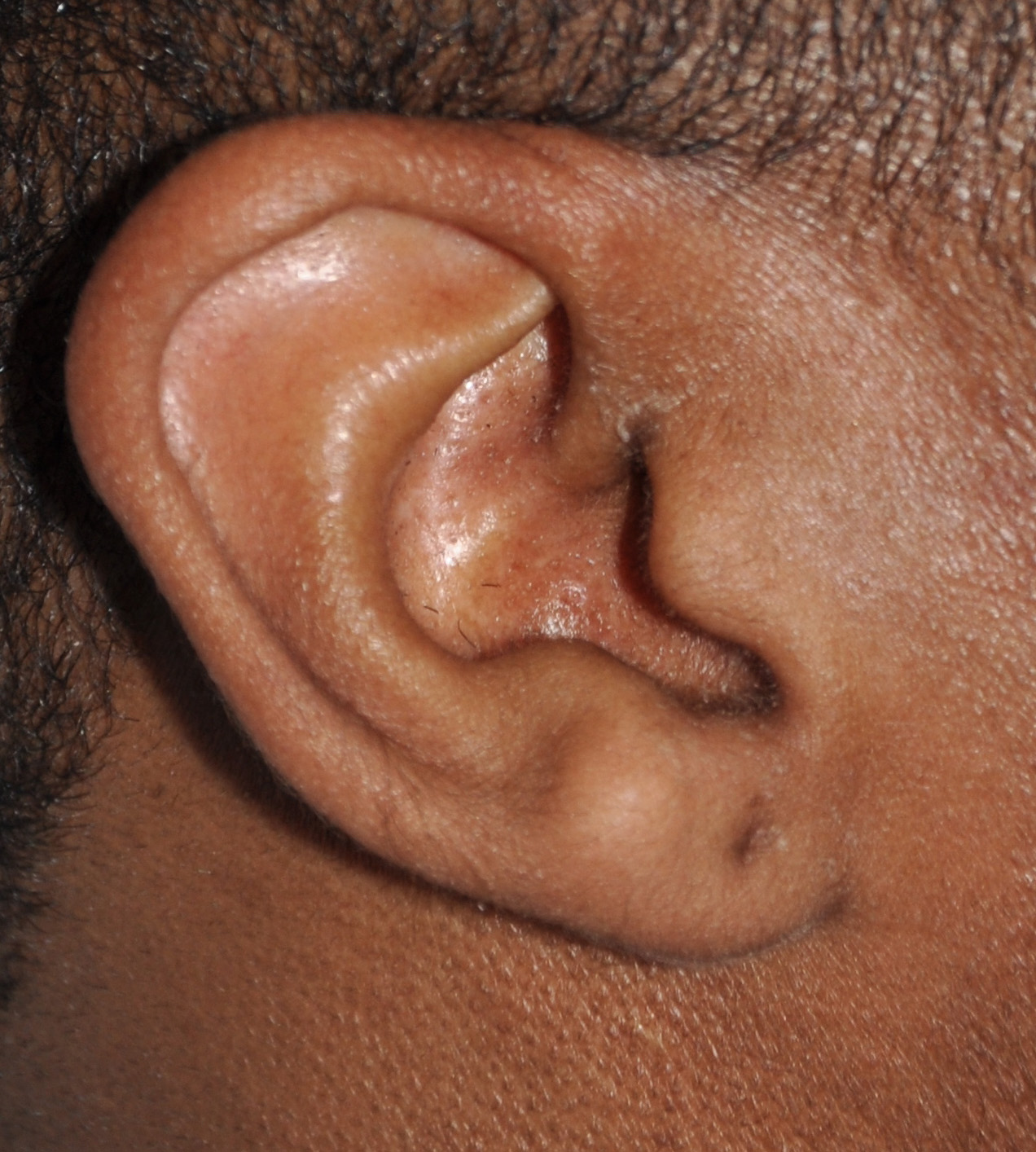
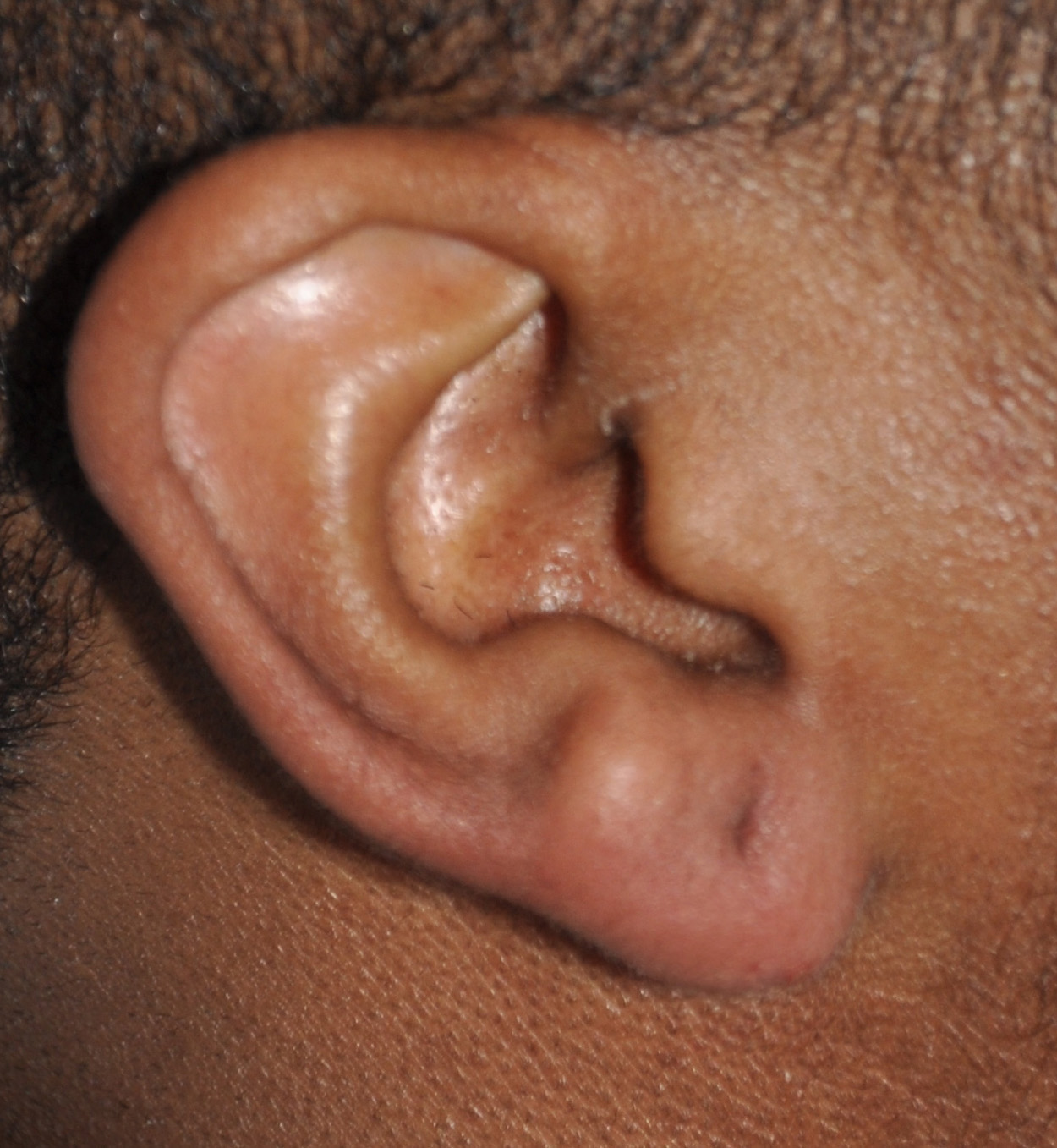
Desire for larger earlobes.
Earlobe enlargement done by fat injections.


Desire for larger earlobes.
Earlobe enlargement done by fat injections.
Patient 40
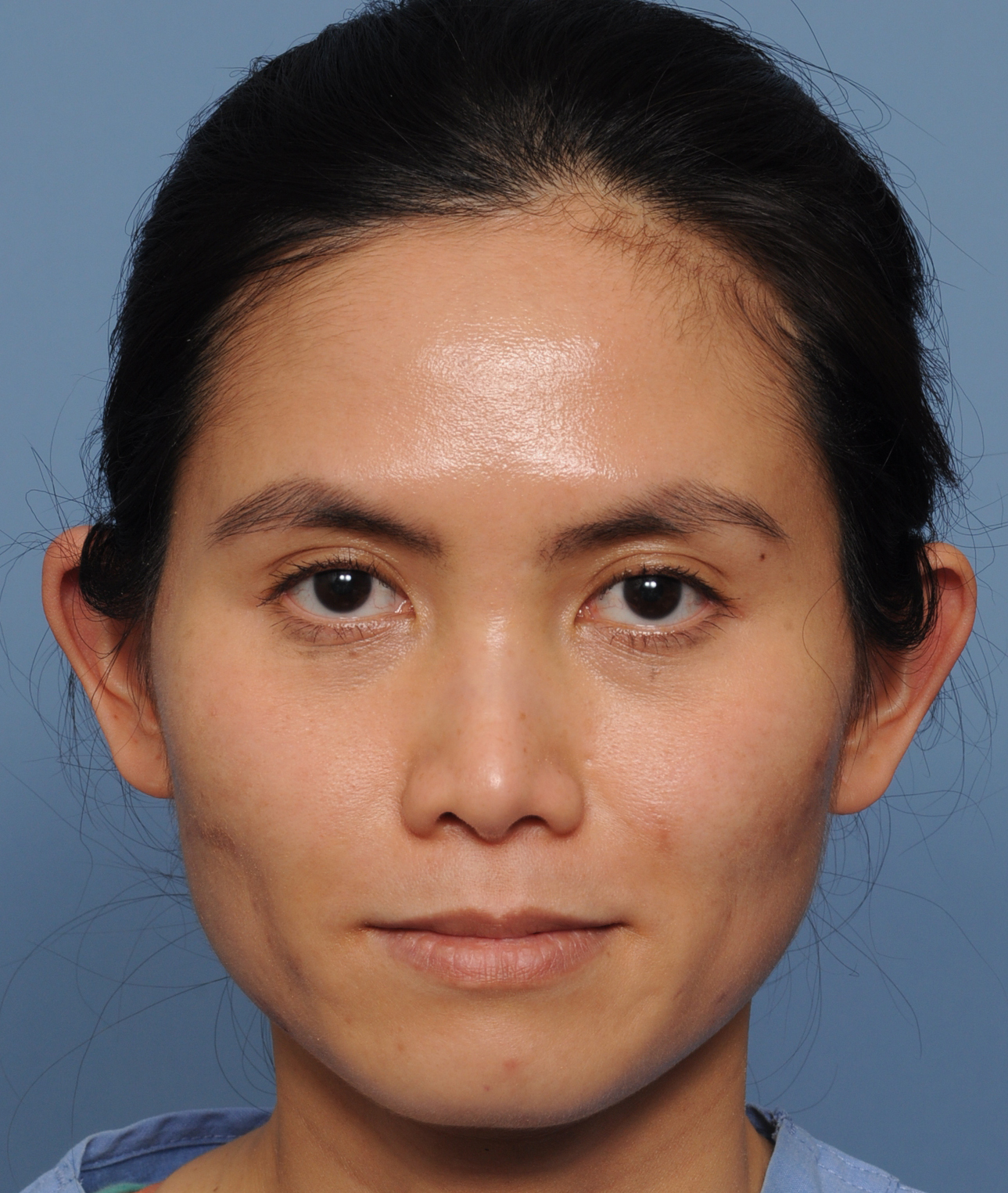

Desire for less prominent ears.
Setback otoplasty dine under local anesthesia with immediate result.


Desire for less prominent ears.
Setback otoplasty dine under local anesthesia with immediate result.
Patient 42
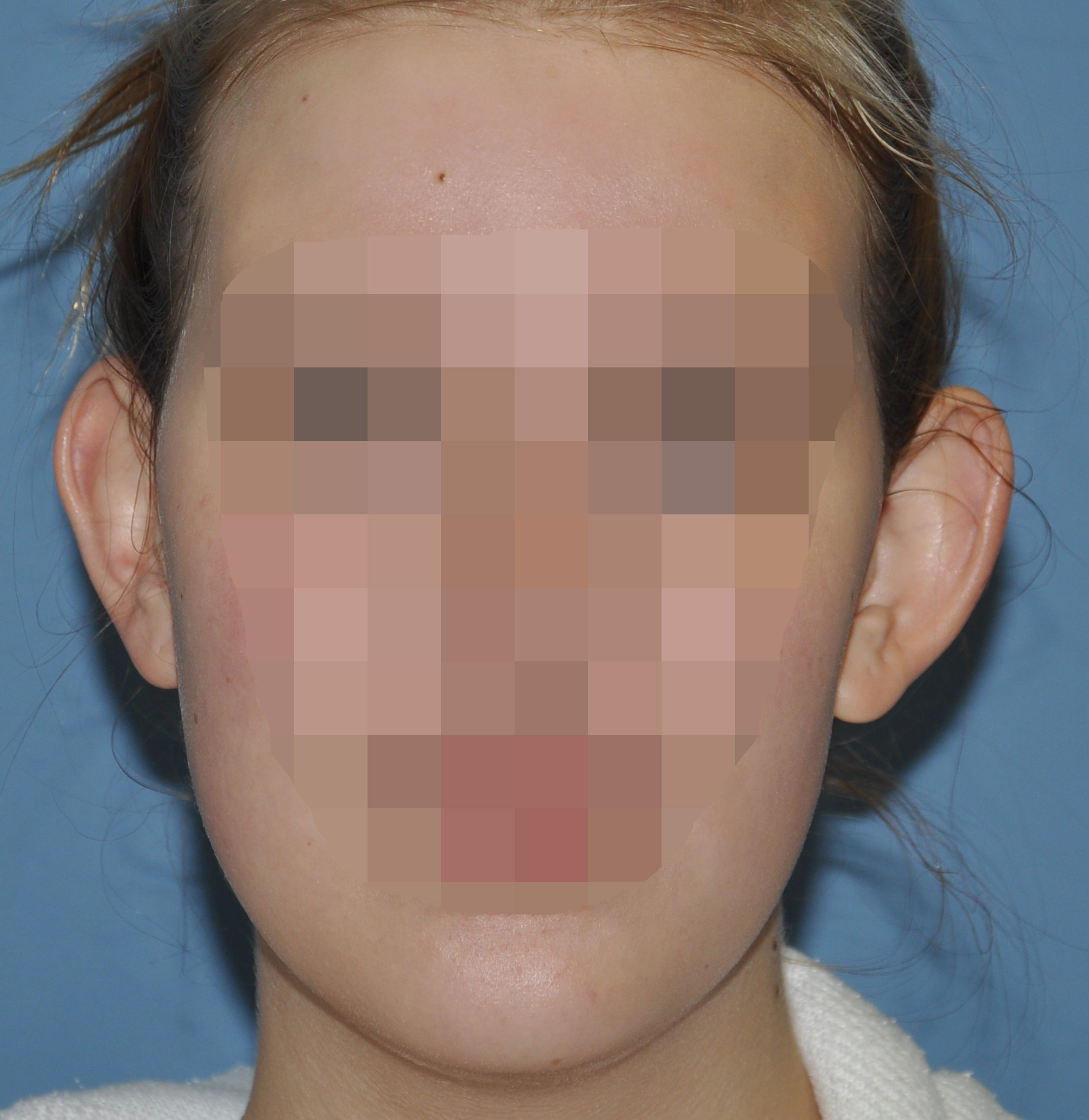
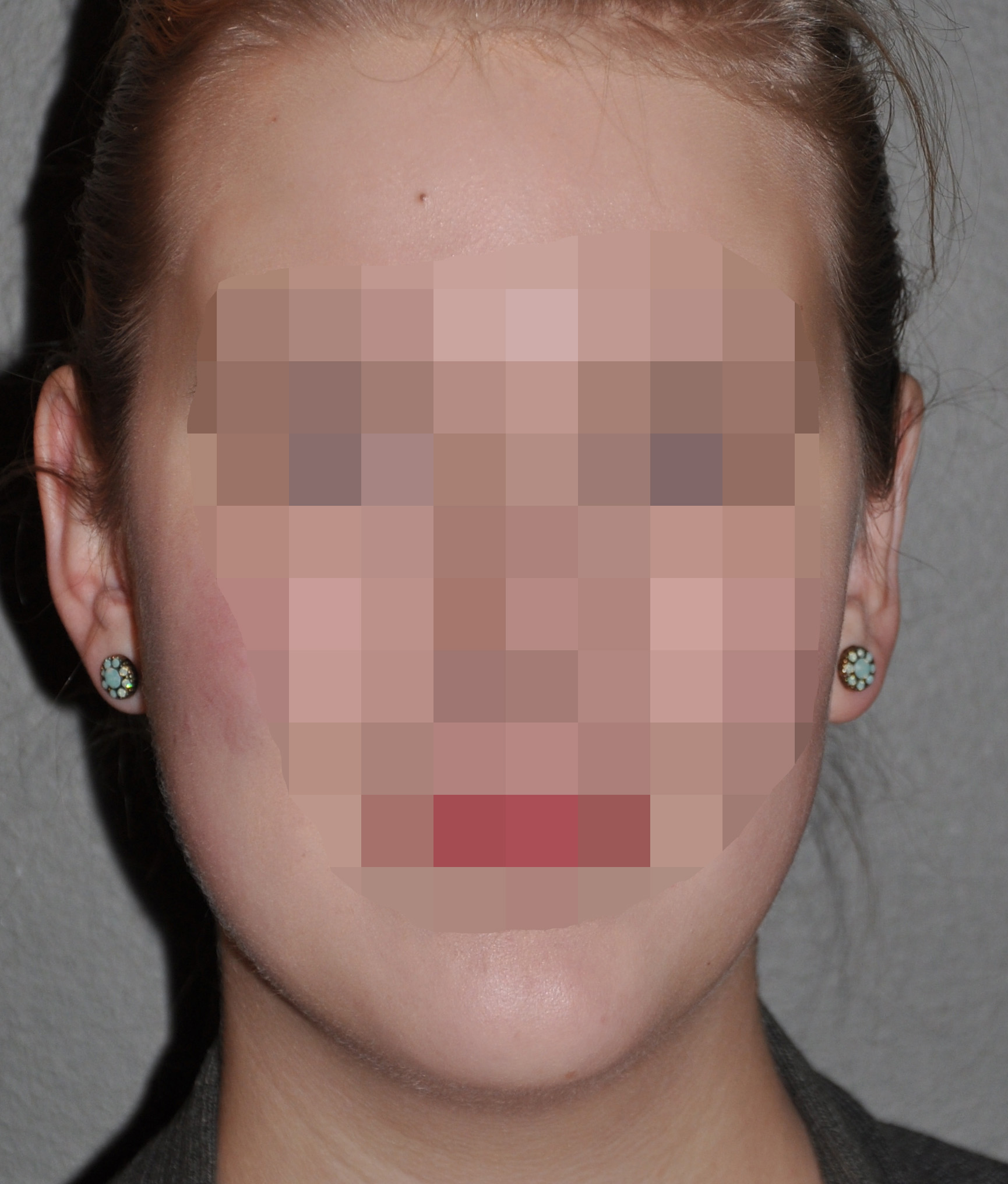
Desire for less prominent ears.
Setback otoplasty using horizontal mattress sutures for the cartilage to gently pull back the ears to a better position on the side of the head.


Desire for less prominent ears.
Setback otoplasty using horizontal mattress sutures for the cartilage to gently pull back the ears to a better position on the side of the head.
Patient 42
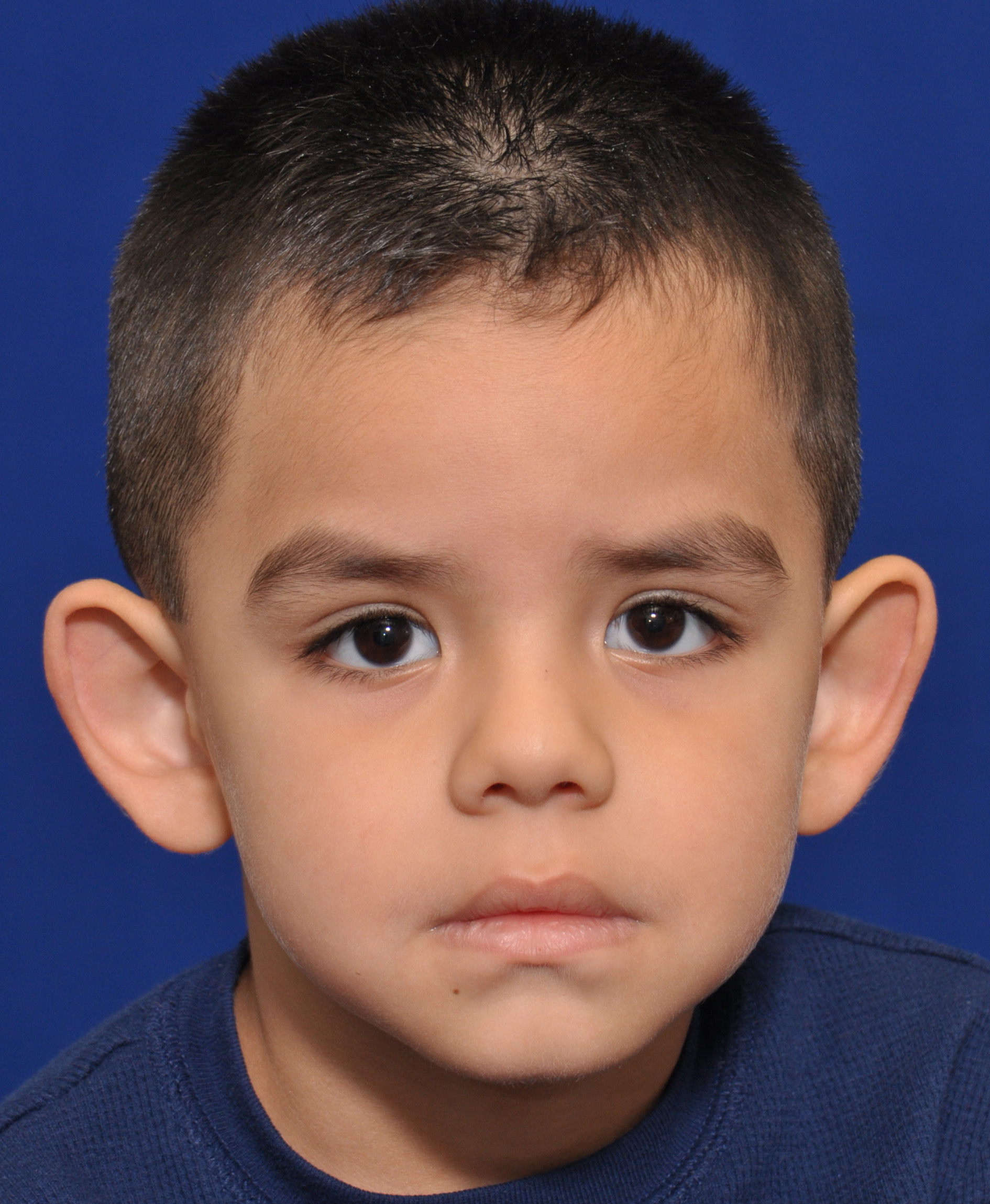
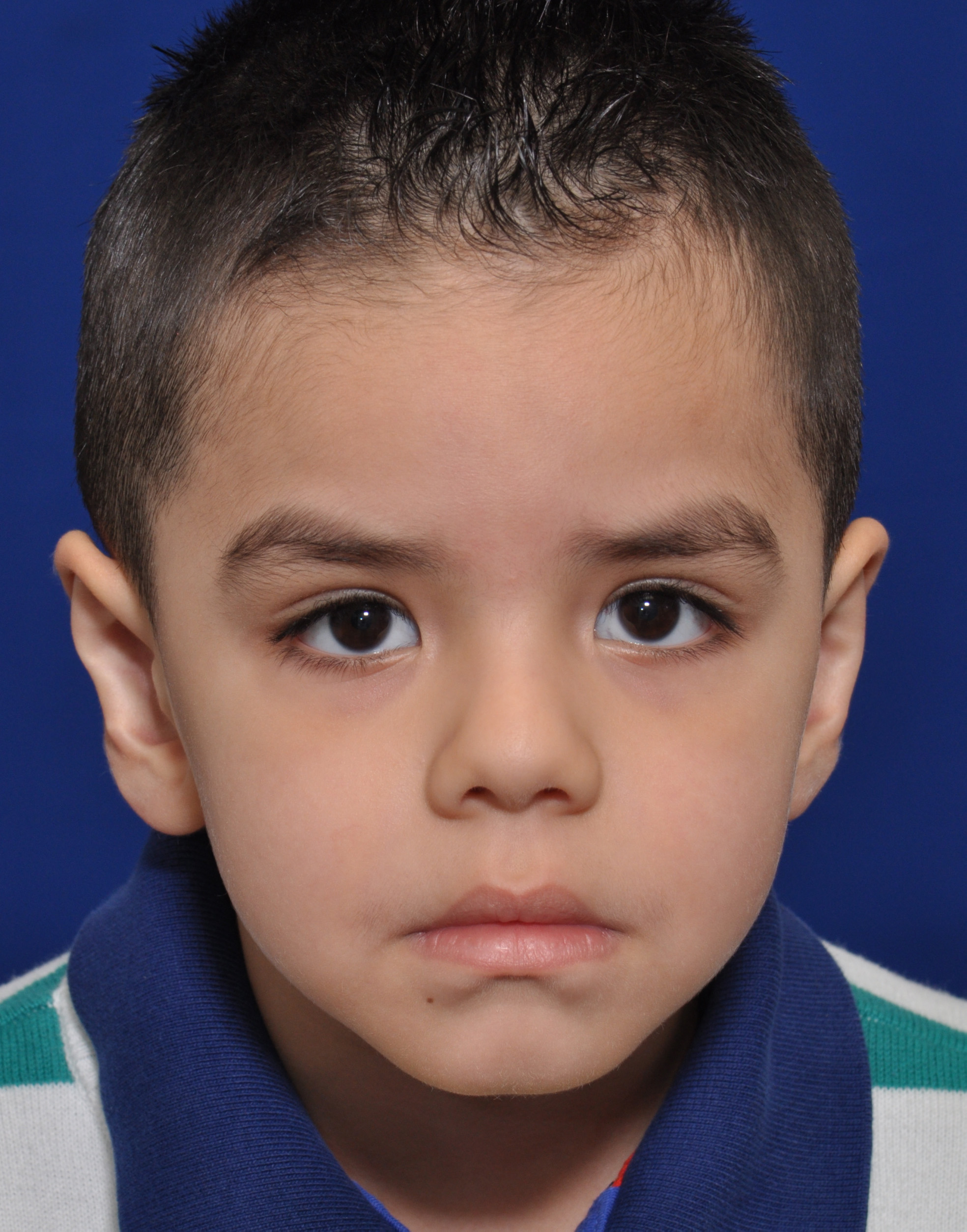
Desire for reduction of large protruding ears in a young child.
Setback otoplasties using postauricular cartilage shaping sutures.


Desire for reduction of large protruding ears in a young child.
Setback otoplasties using postauricular cartilage shaping sutures.
Patient 44
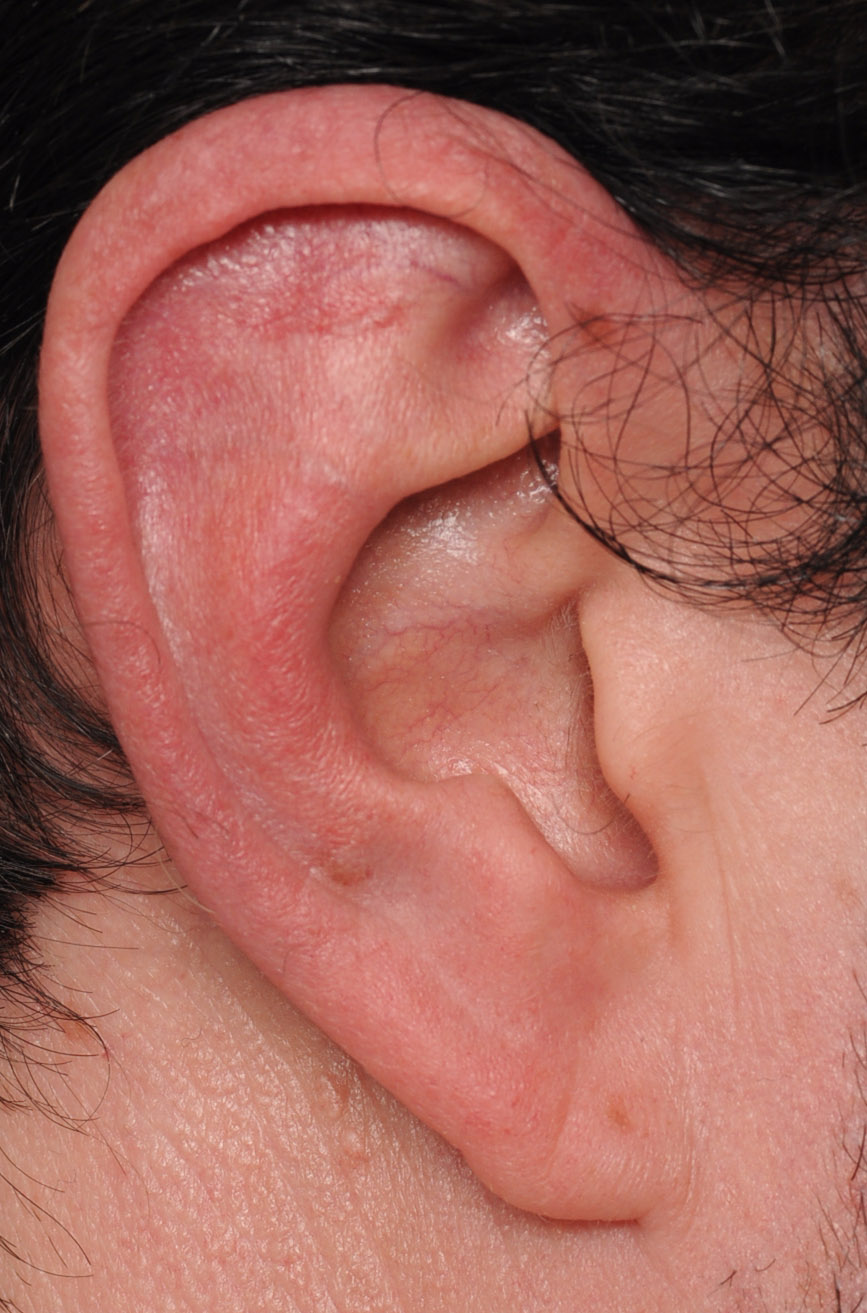
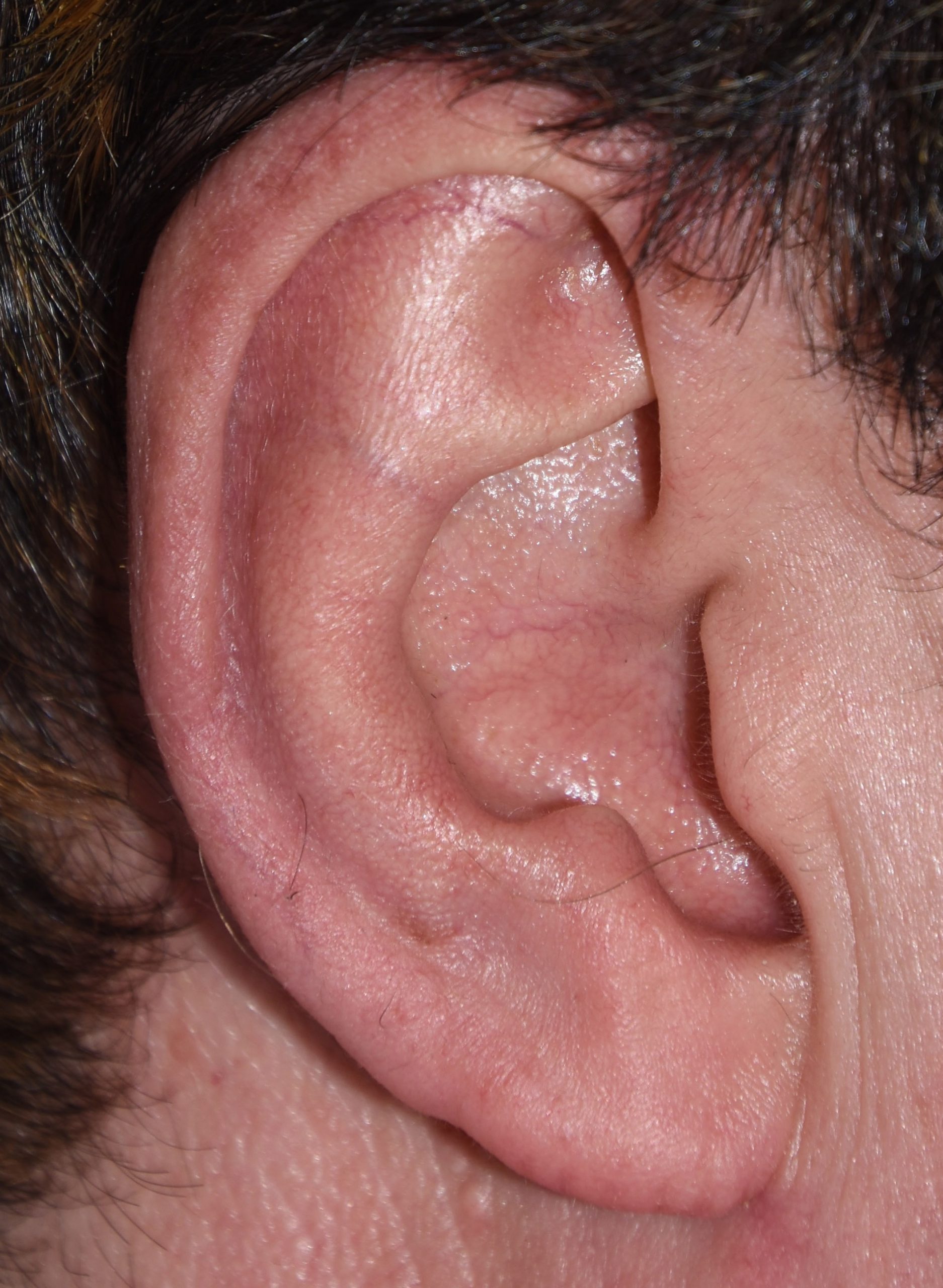
Desire for reduction of overall size of the ear.
Macrotia ear reduction using a scapha flap and inferior helical rim reduction techniques for vertically shorter ears.


Desire for reduction of overall size of the ear.
Macrotia ear reduction using a scapha flap and inferior helical rim reduction techniques for vertically shorter ears.
Patient 45
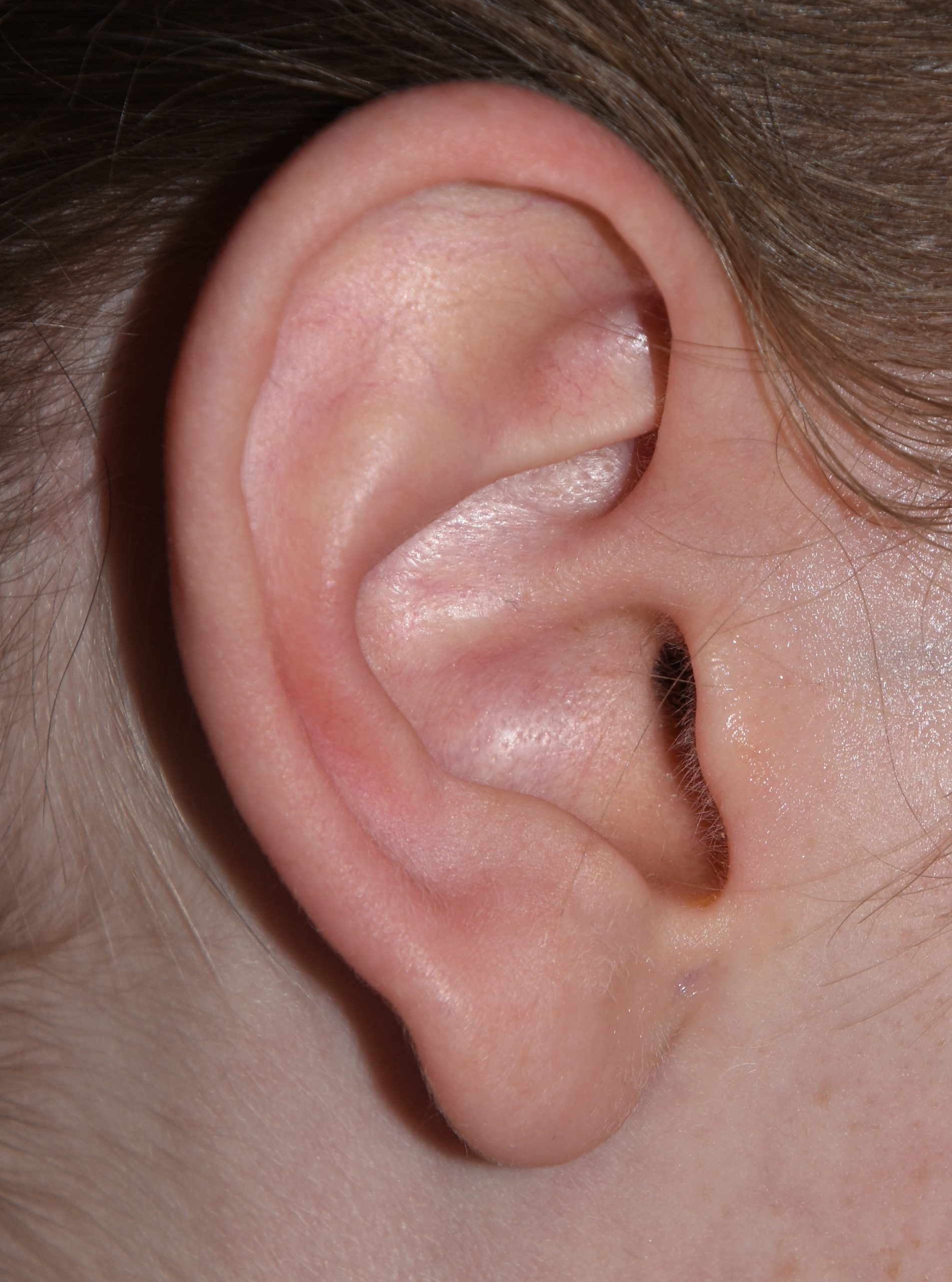
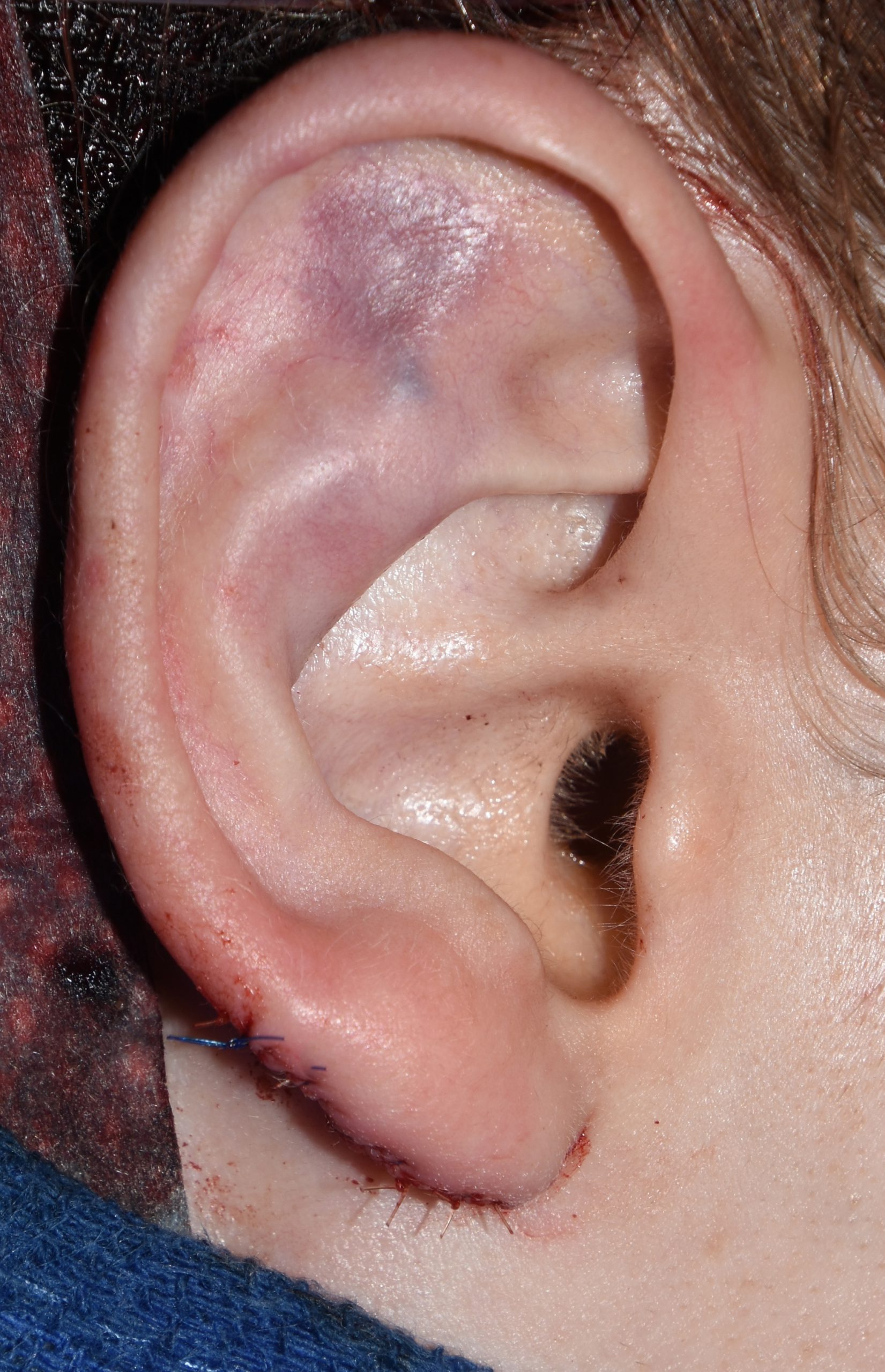
Desire for more feminine earlobe appearance.
Earlobe feminization by surgical reshaping.


Desire for more feminine earlobe appearance.
Earlobe feminization by surgical reshaping.
Patient 46
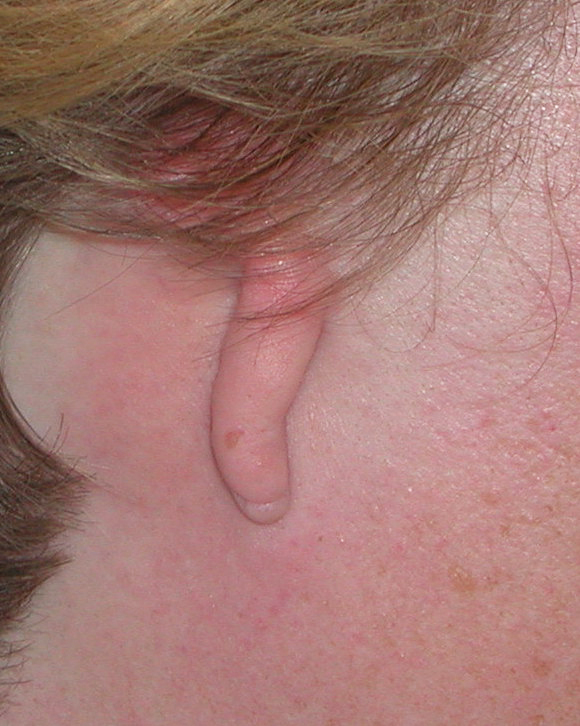
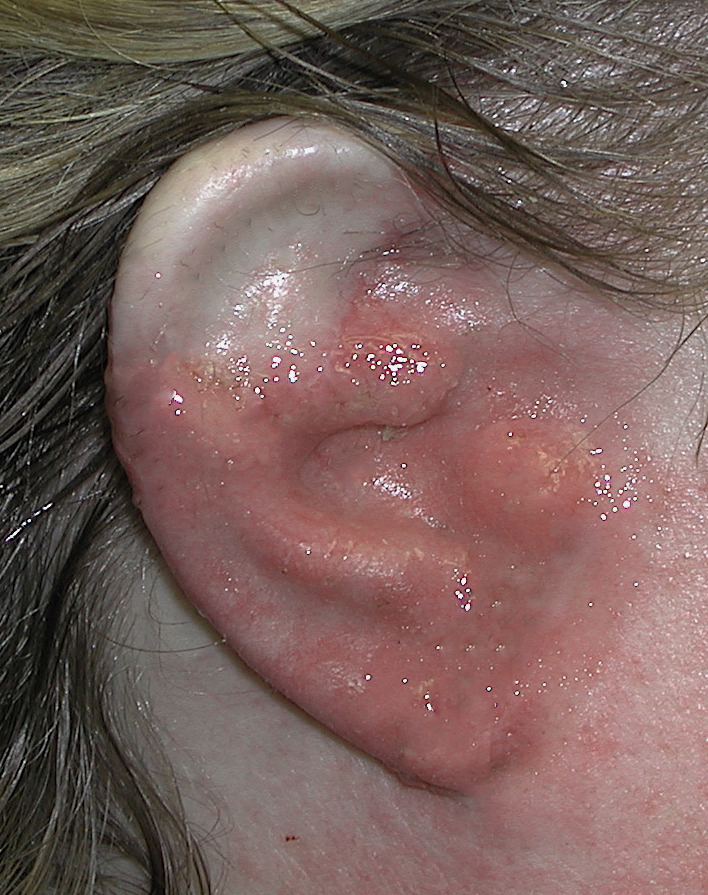
Congenital microtia ear deformity in mode aged adult that was never reconstructed as a child.
Adult microtia reconstruction using a Medpor framework and temporoparietal fascial (TFL) flap.


Congenital microtia ear deformity in mode aged adult that was never reconstructed as a child.
Adult microtia reconstruction using a Medpor framework and temporoparietal fascial (TFL) flap.
Patient 47
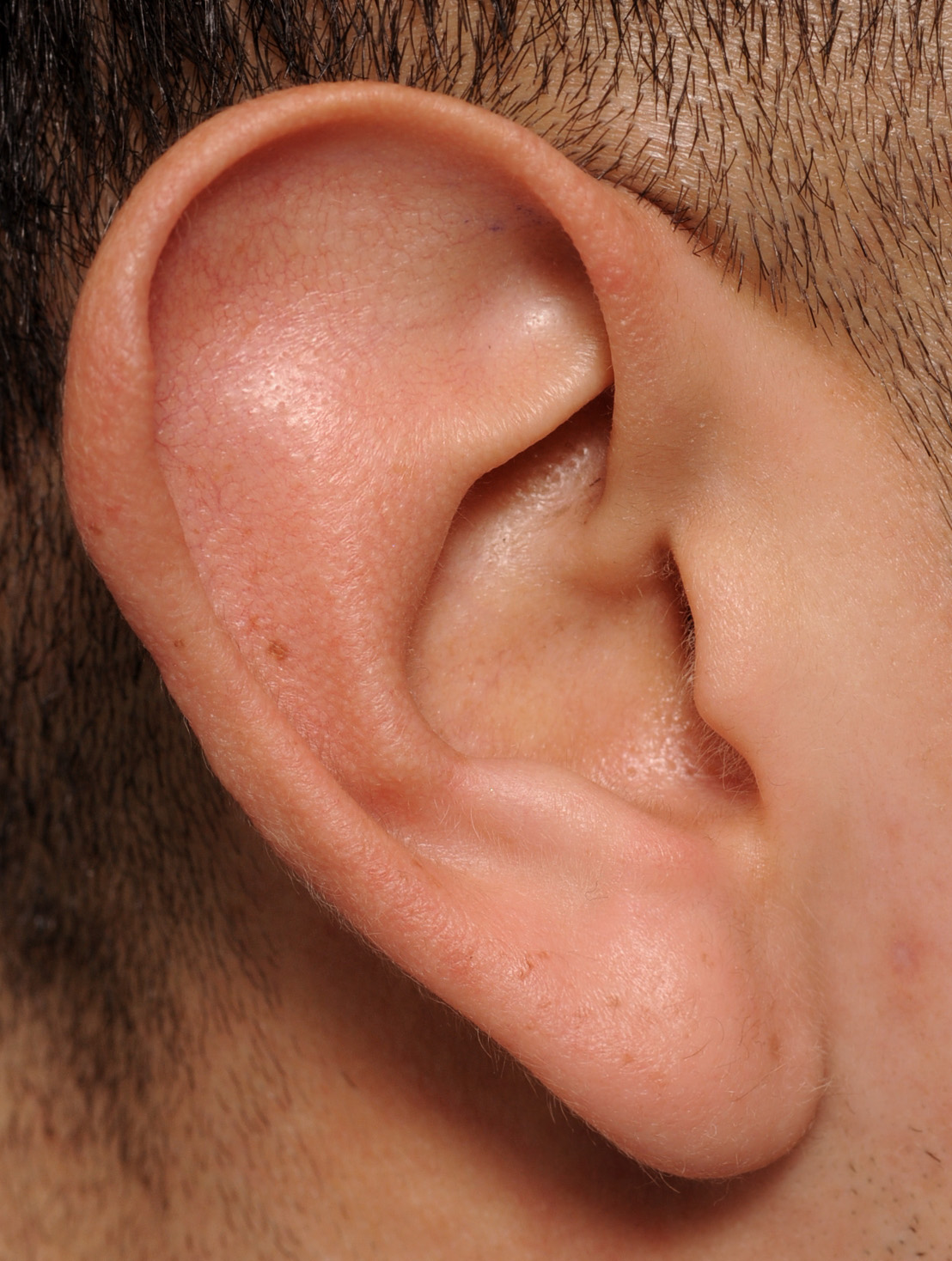

Desire for smaller ears.
Macrotia reduction surgery using superior scapula flap and earlobe reduction techniques.


Desire for smaller ears.
Macrotia reduction surgery using superior scapula flap and earlobe reduction techniques.
Patient 48
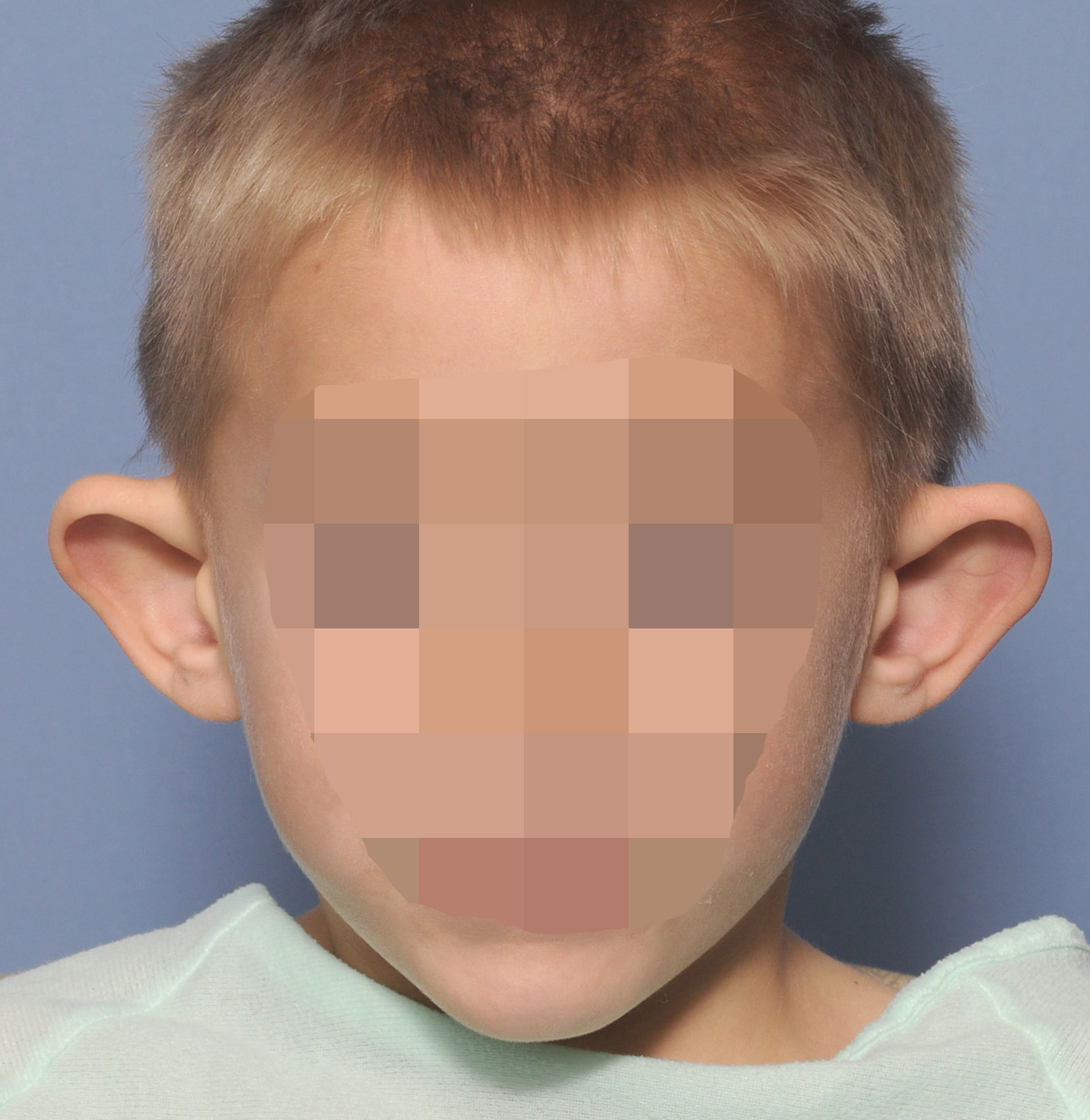
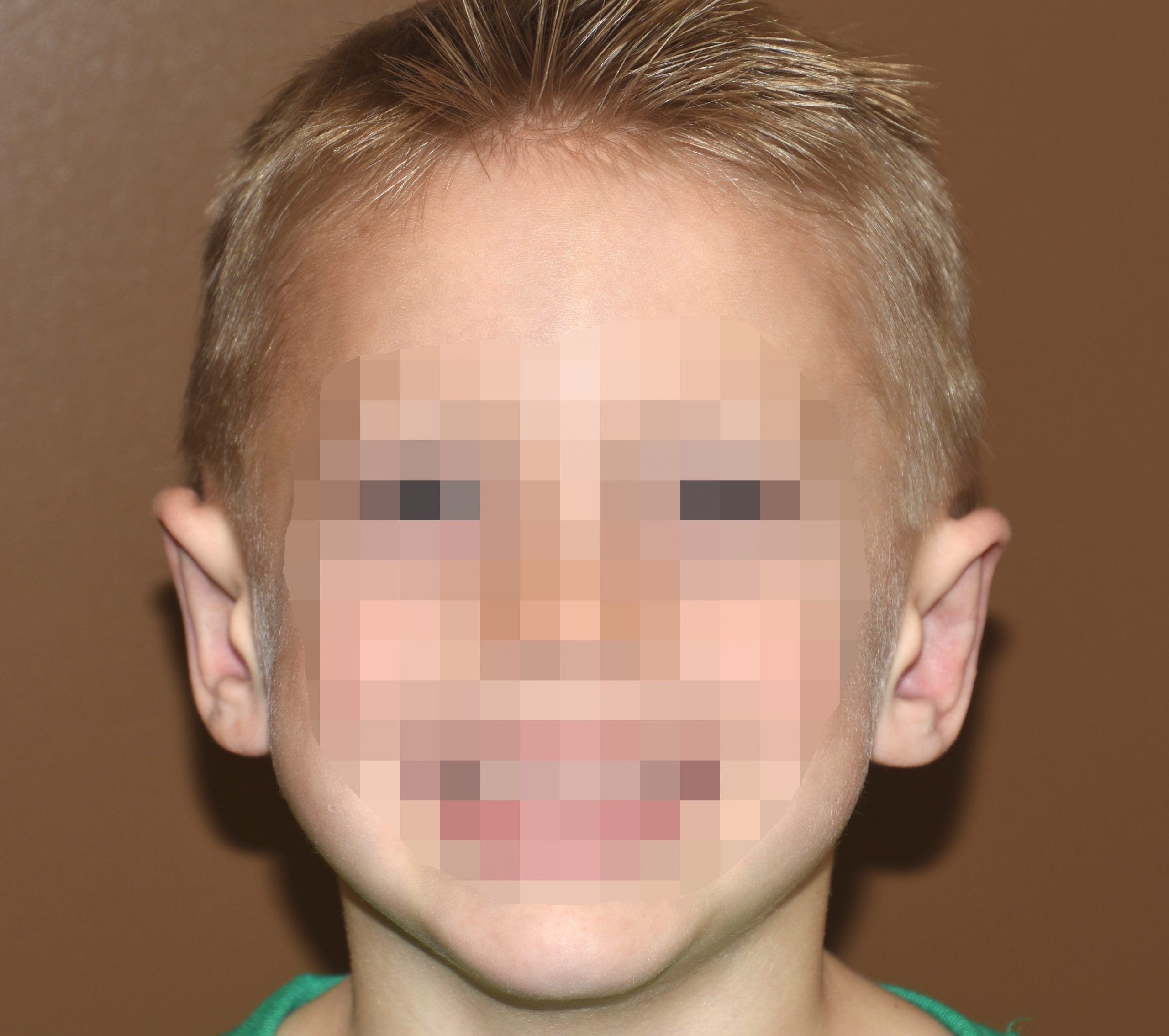
Desire for correction of prominent ears.
Correction of prominent ears by postauricular suture cartilage reshaping techniques.


Desire for correction of prominent ears.
Correction of prominent ears by postauricular suture cartilage reshaping techniques.
Patient 49
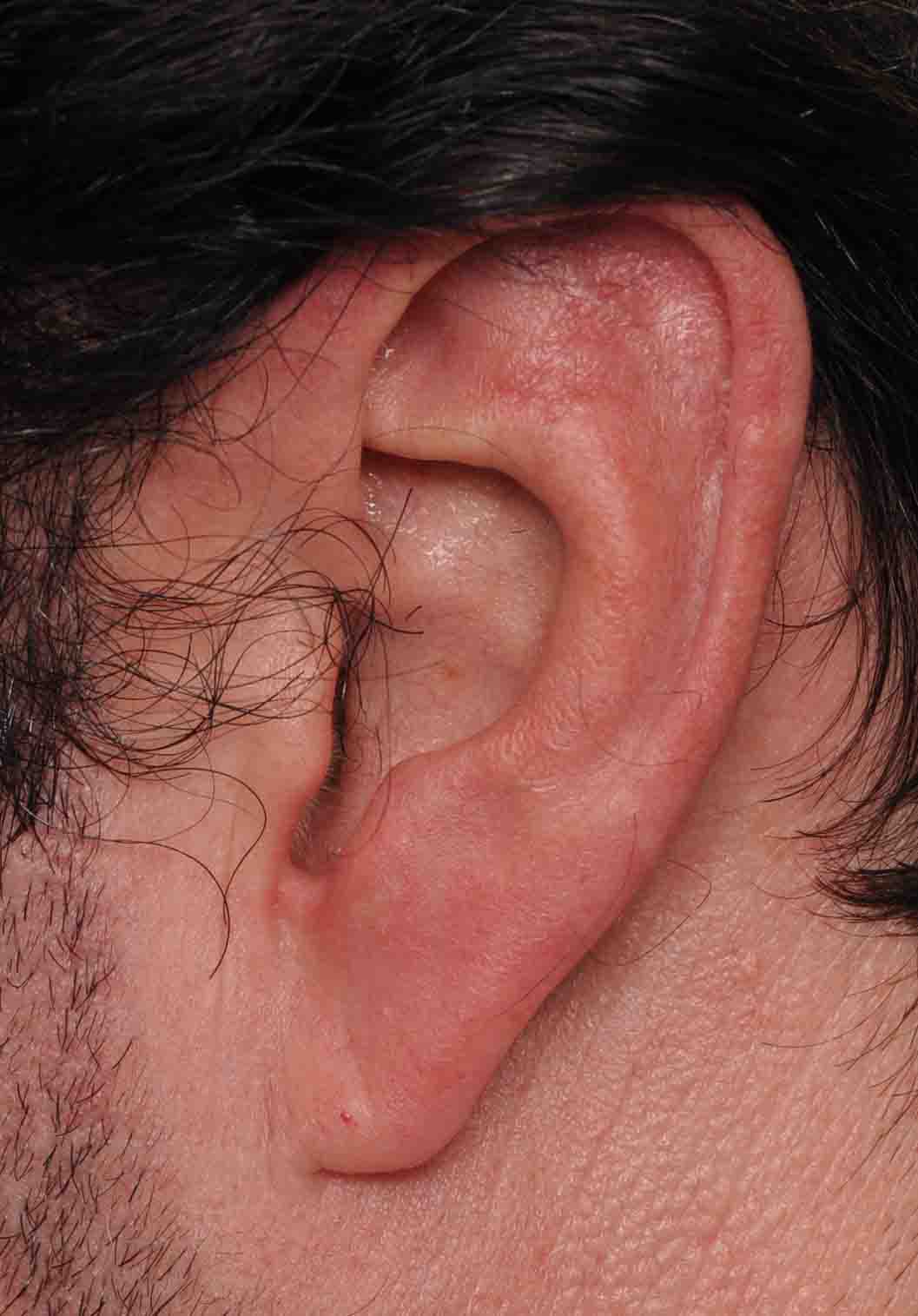
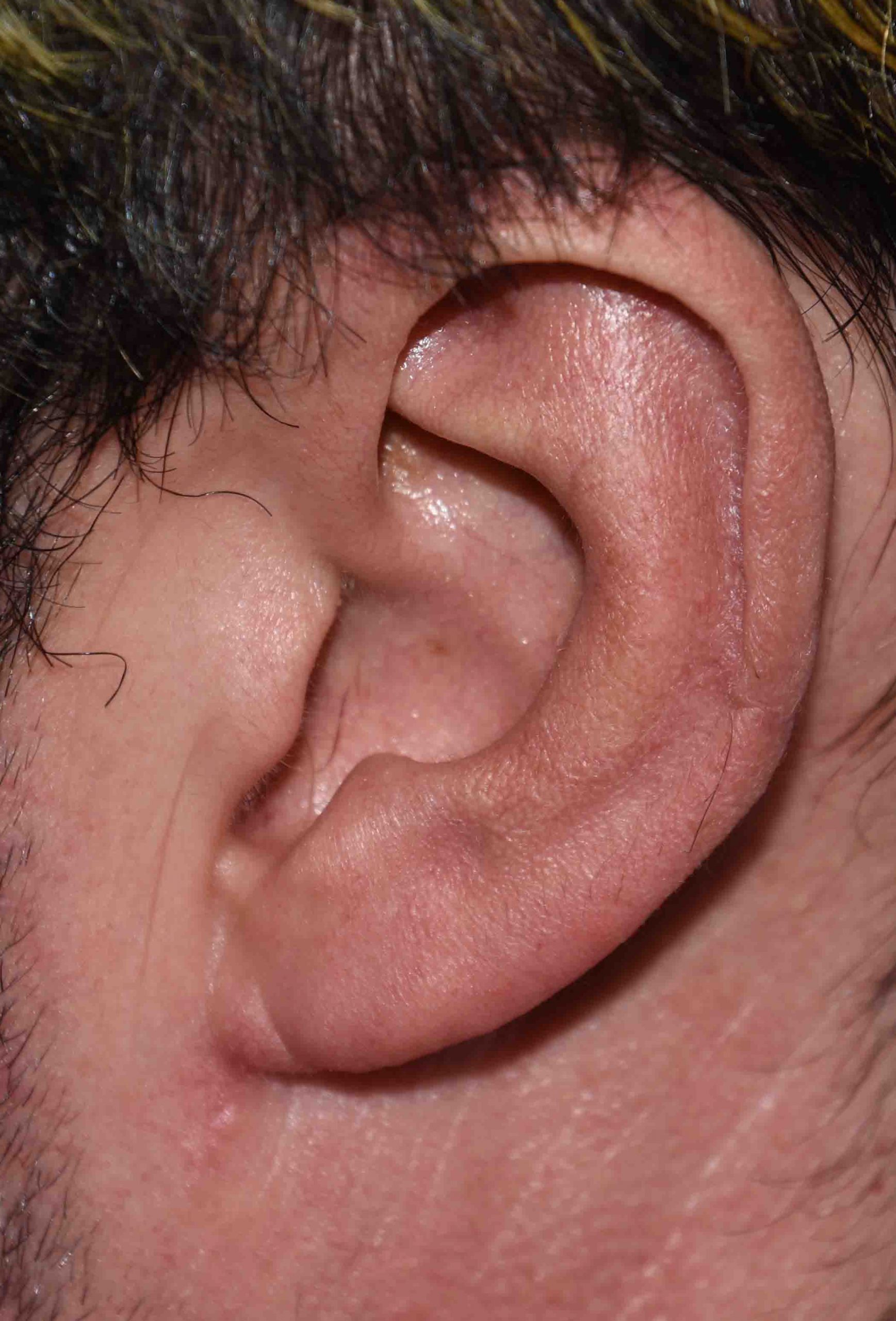
Desire for smaller ears from a vertical height standpoint.
Macrotia ear reduction with a superior scapula flap and inferior helical rim earlobe reductions.


Desire for smaller ears from a vertical height standpoint.
Macrotia ear reduction with a superior scapula flap and inferior helical rim earlobe reductions.
Patient 50
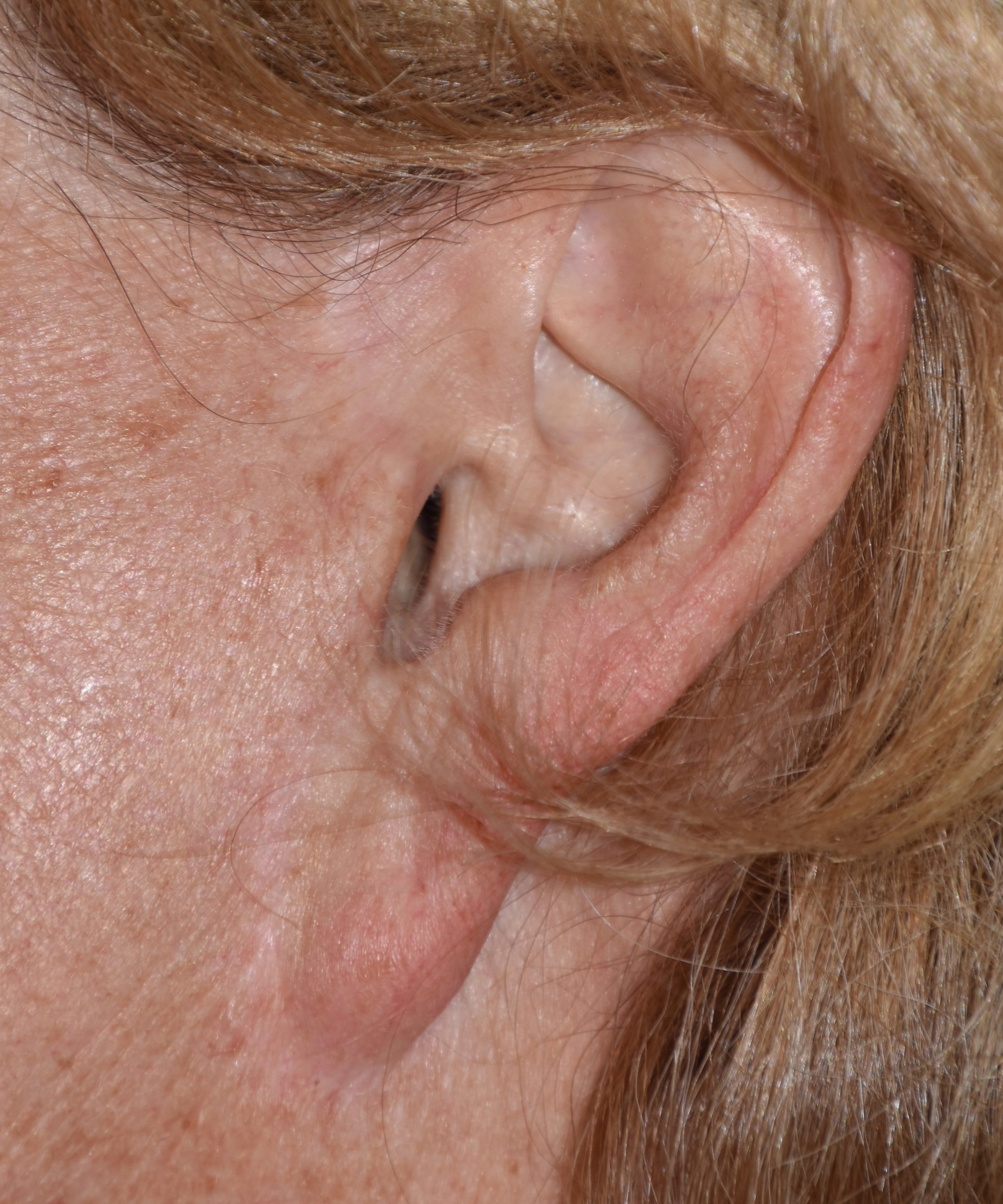
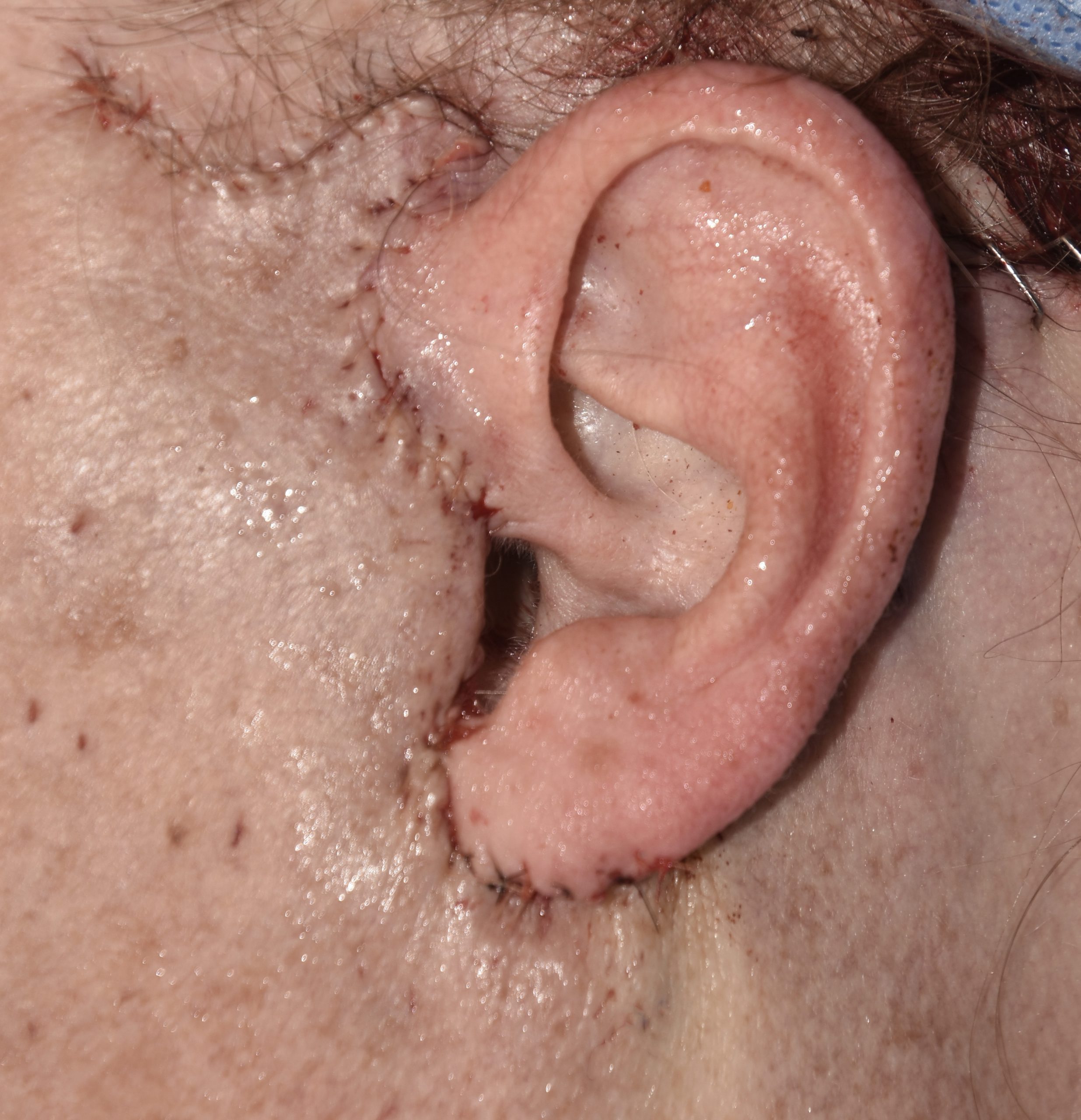
Elongated pixie earlobe deformities after prior facelift. Desire for shorter reshaped earlobes along with a secondary neck-jowl tuck.
Correction of long earlobes done concurrently with facelift surgery. (iimmediate result)


Elongated pixie earlobe deformities after prior facelift. Desire for shorter reshaped earlobes along with a secondary neck-jowl tuck.
Correction of long earlobes done concurrently with facelift surgery. (iimmediate result)
Patient 51
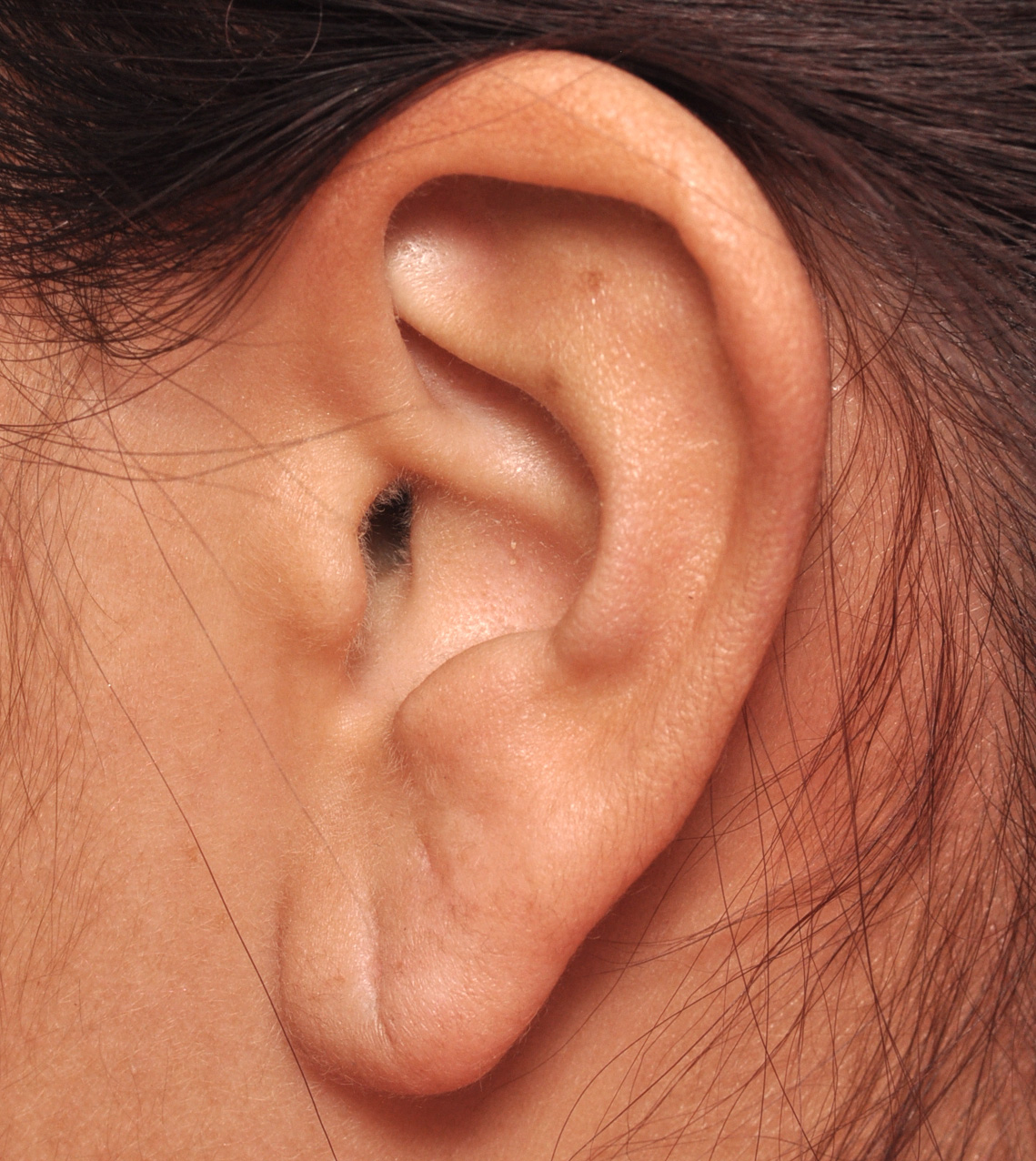
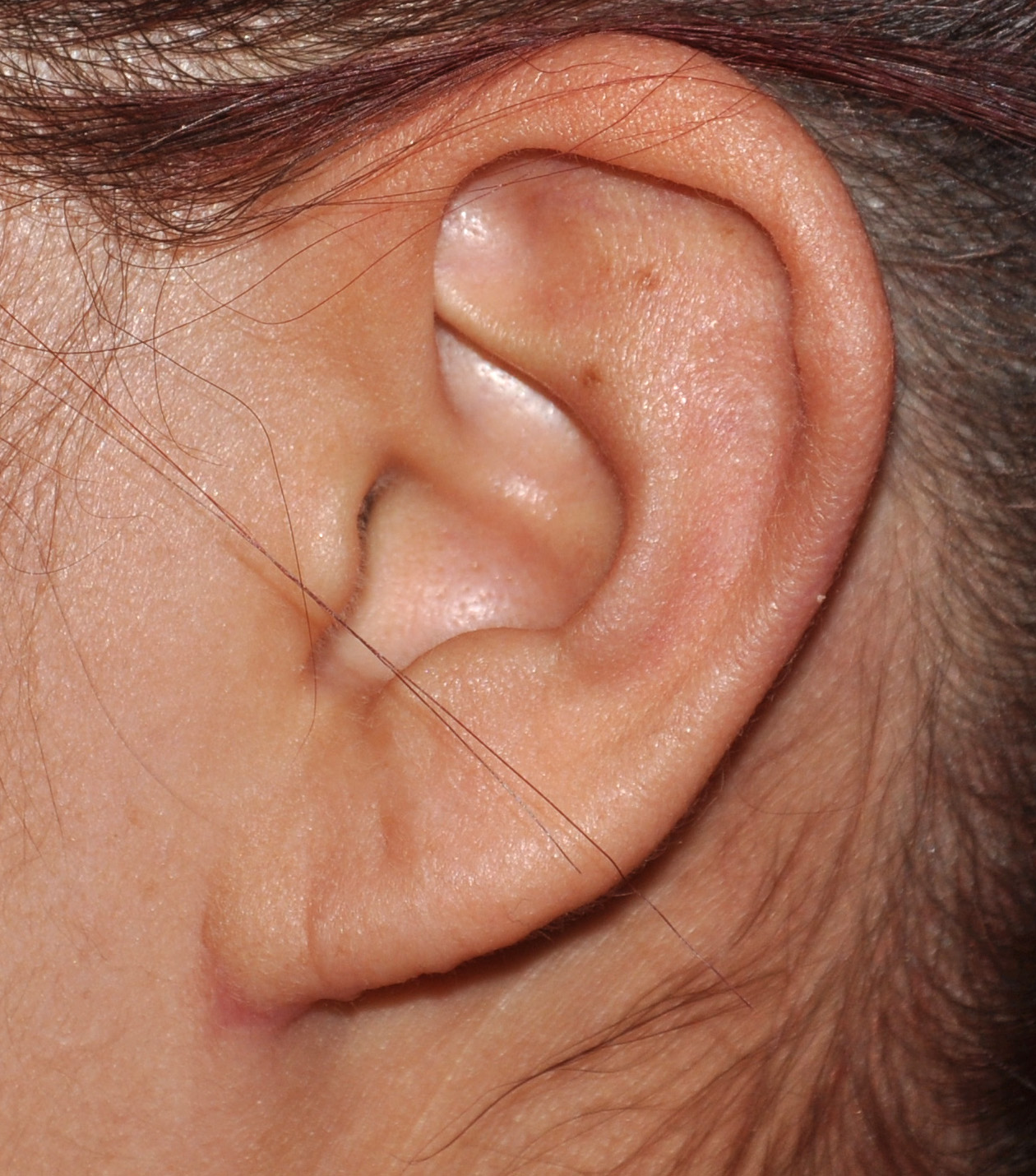
Desire for smaller earlobes with less drooping.
Inferior helical rim earlobe reductions



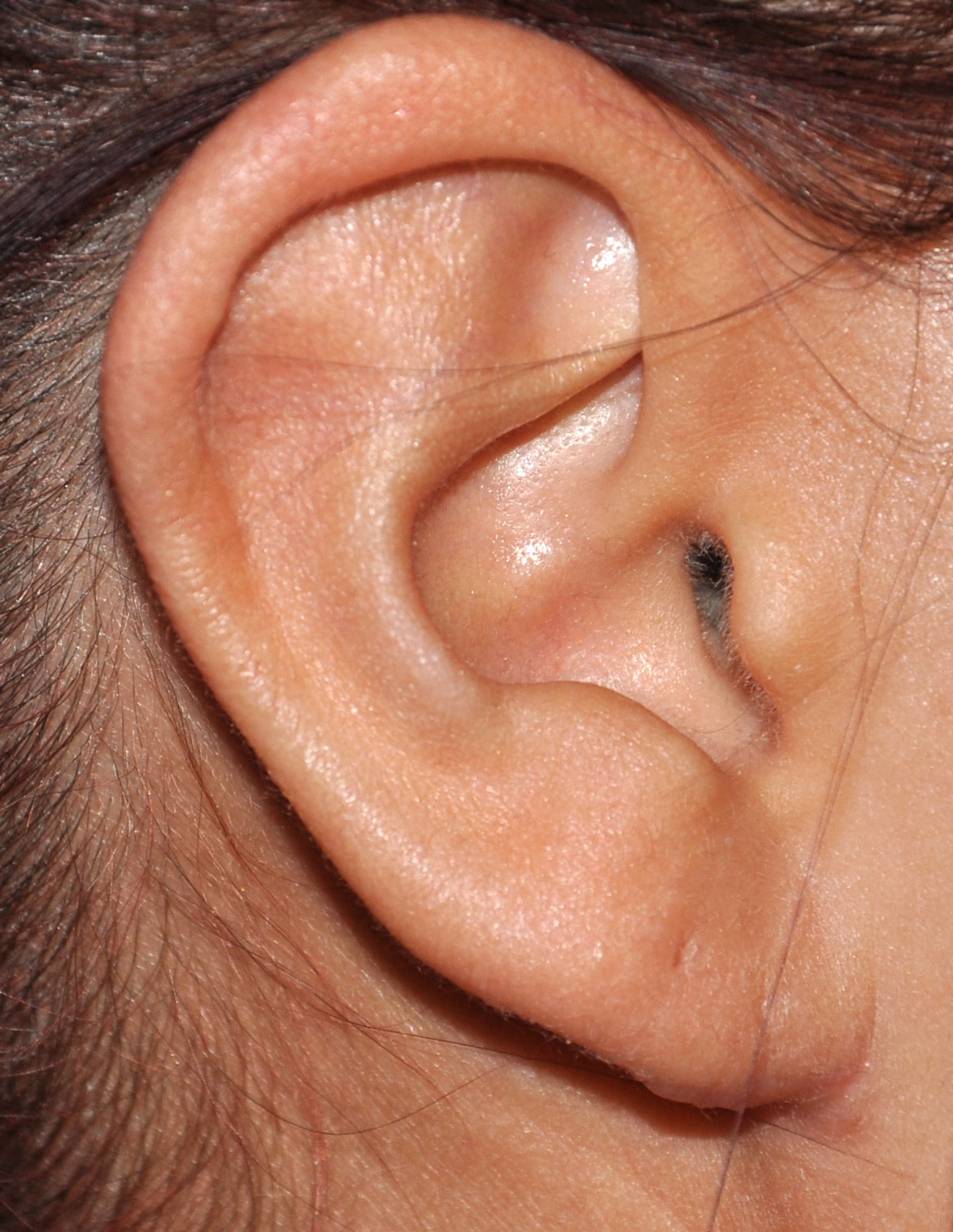
Desire for smaller earlobes with less drooping.
Inferior helical rim earlobe reductions
Patient 52
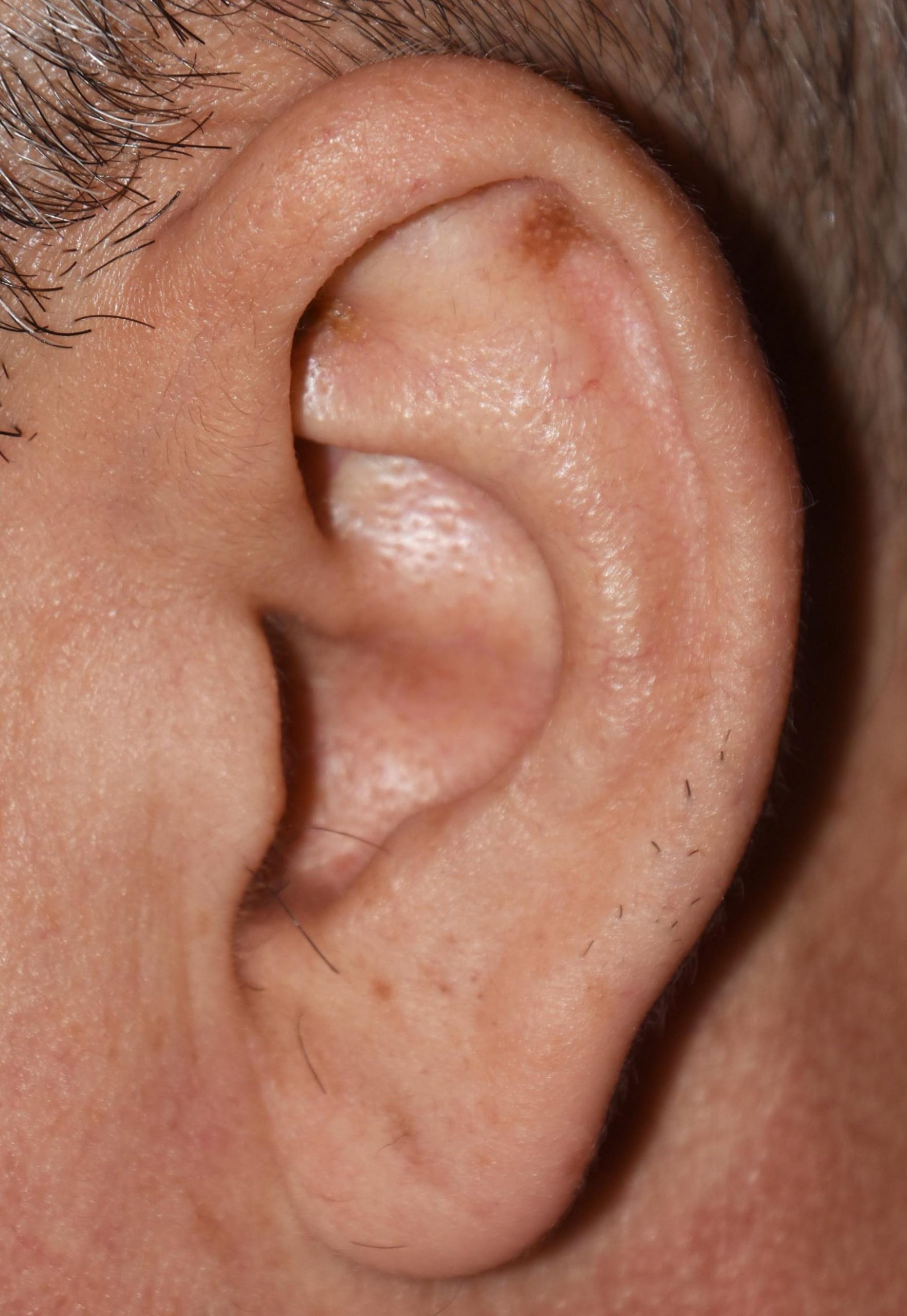
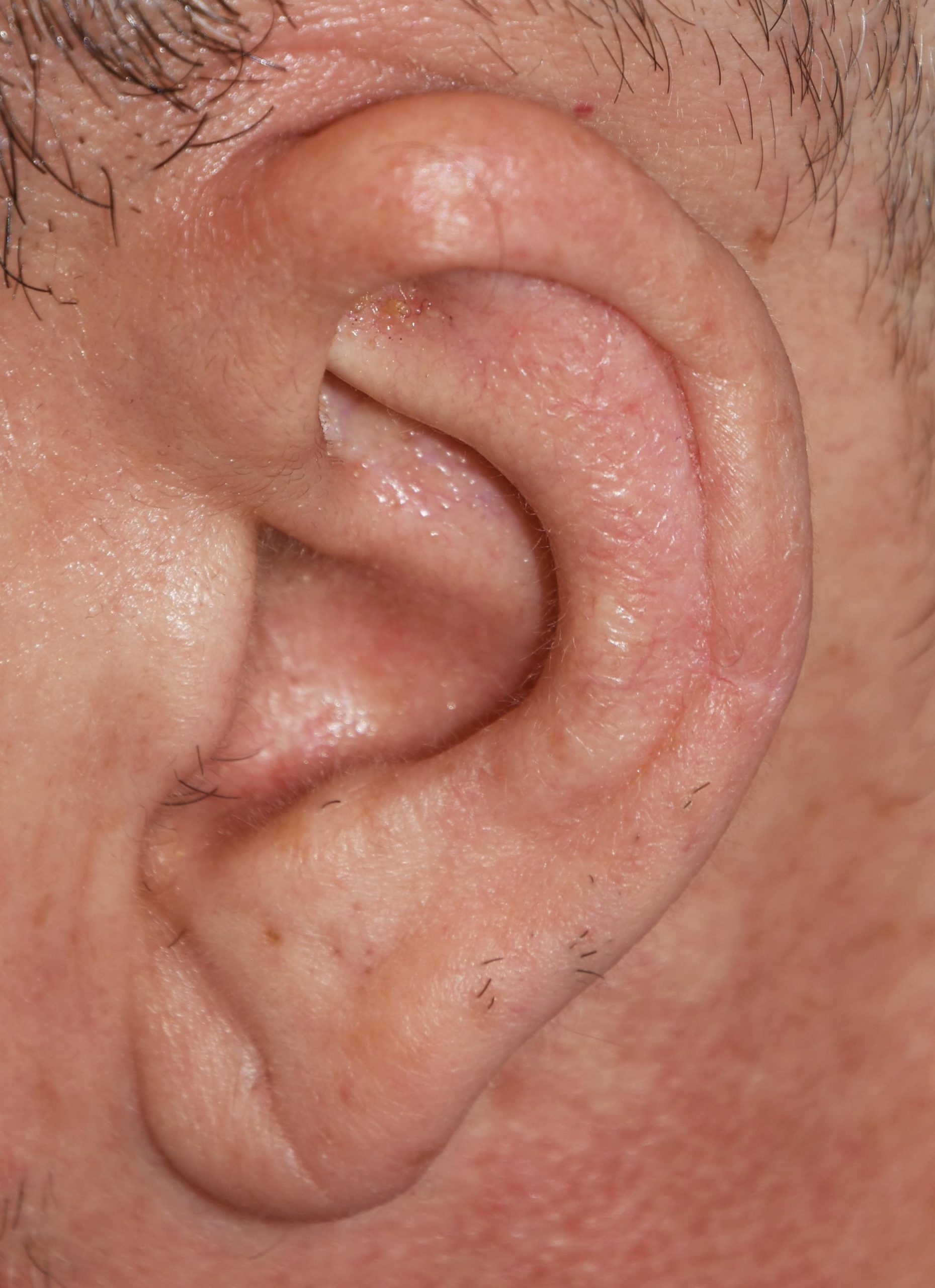
Desire for vertically shorter upper ear.
Upper vertical ear reduction with superior scaphal flap reduction


Desire for vertically shorter upper ear.
Upper vertical ear reduction with superior scaphal flap reduction
Patient 53
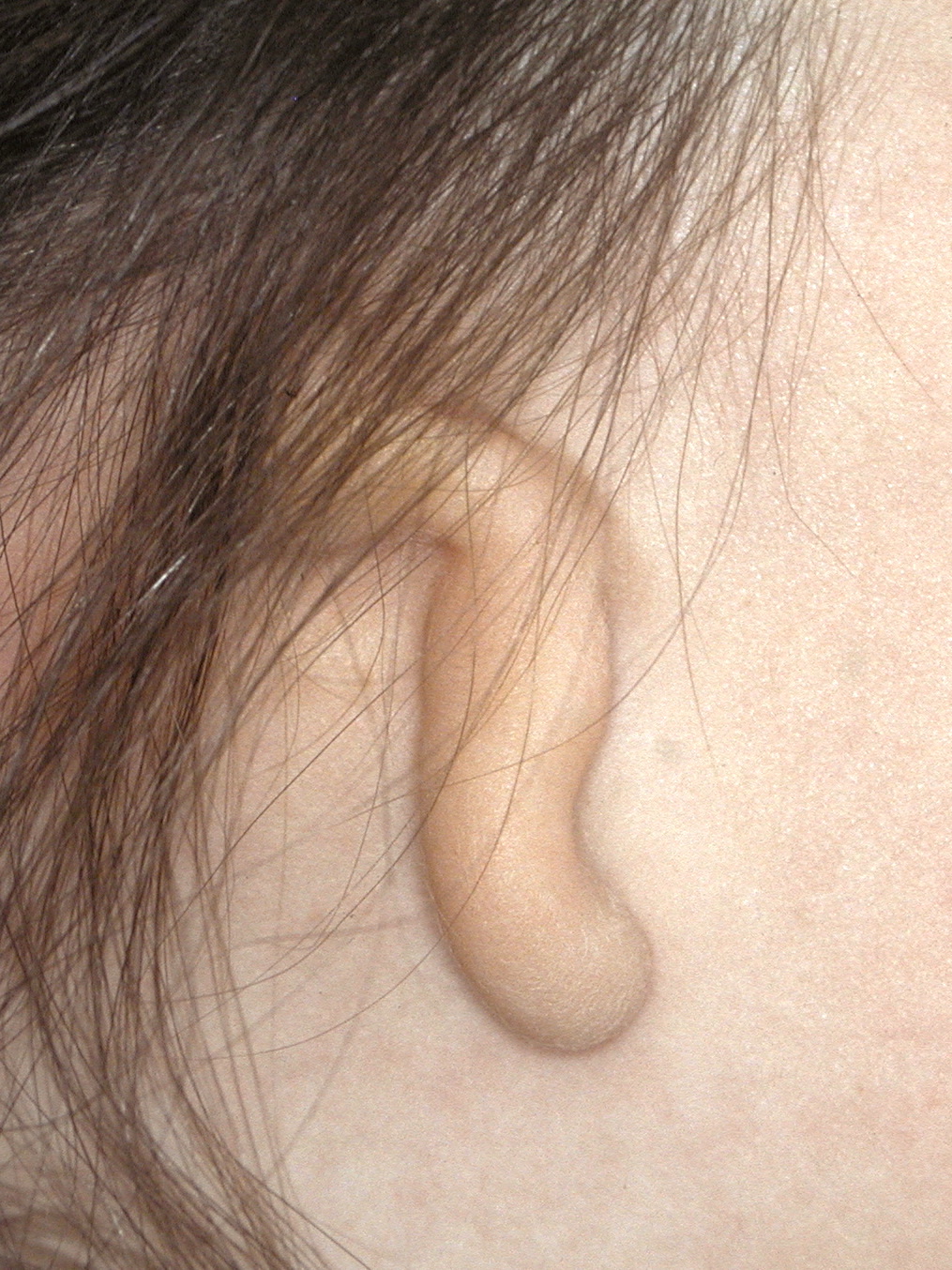
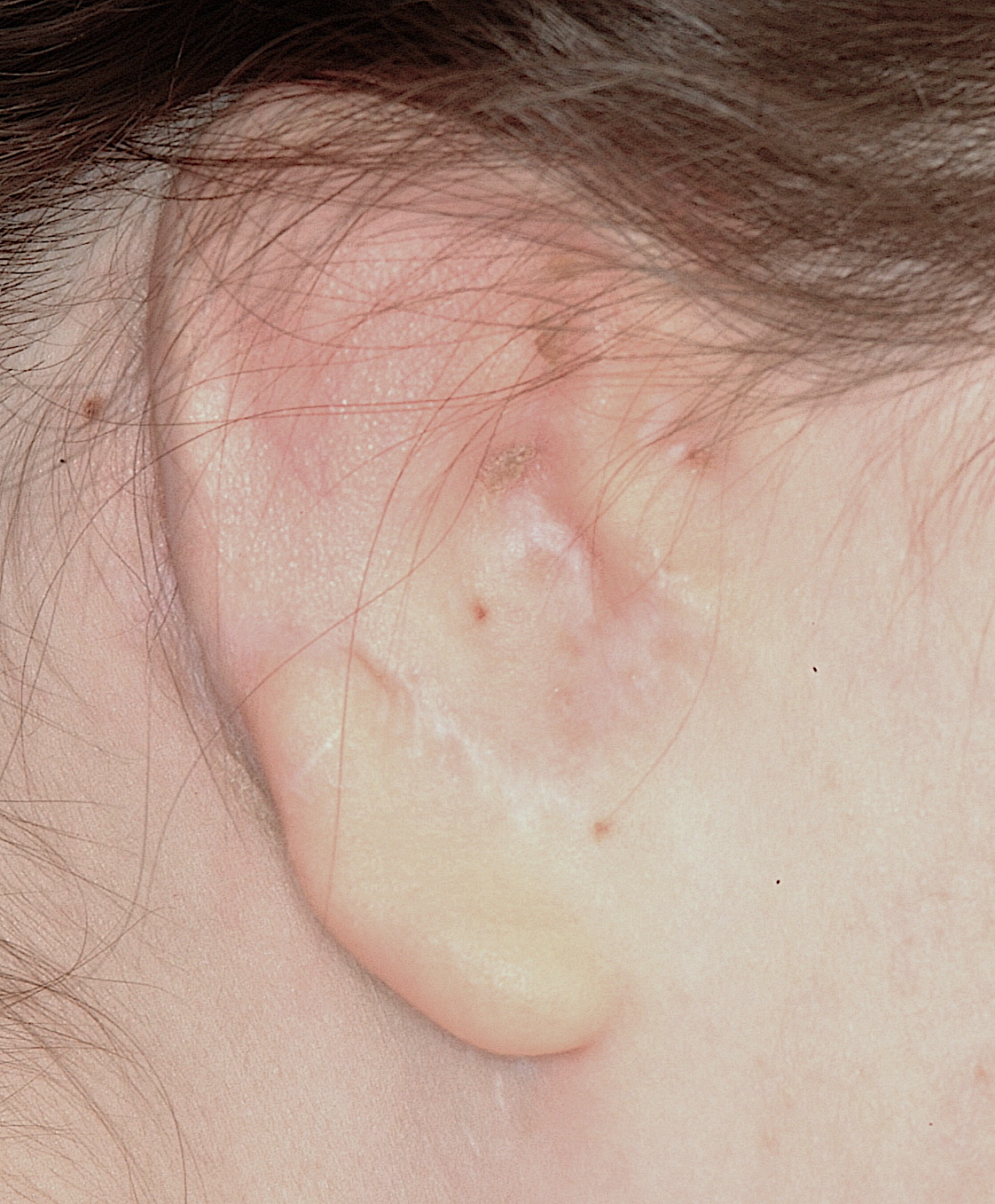
Congenital incomplete microtia ear deformity.
Microtia ear reconstruction with multiple rib cartilages and earlobe transposition.


Congenital incomplete microtia ear deformity.
Microtia ear reconstruction with multiple rib cartilages and earlobe transposition.
Patient 54
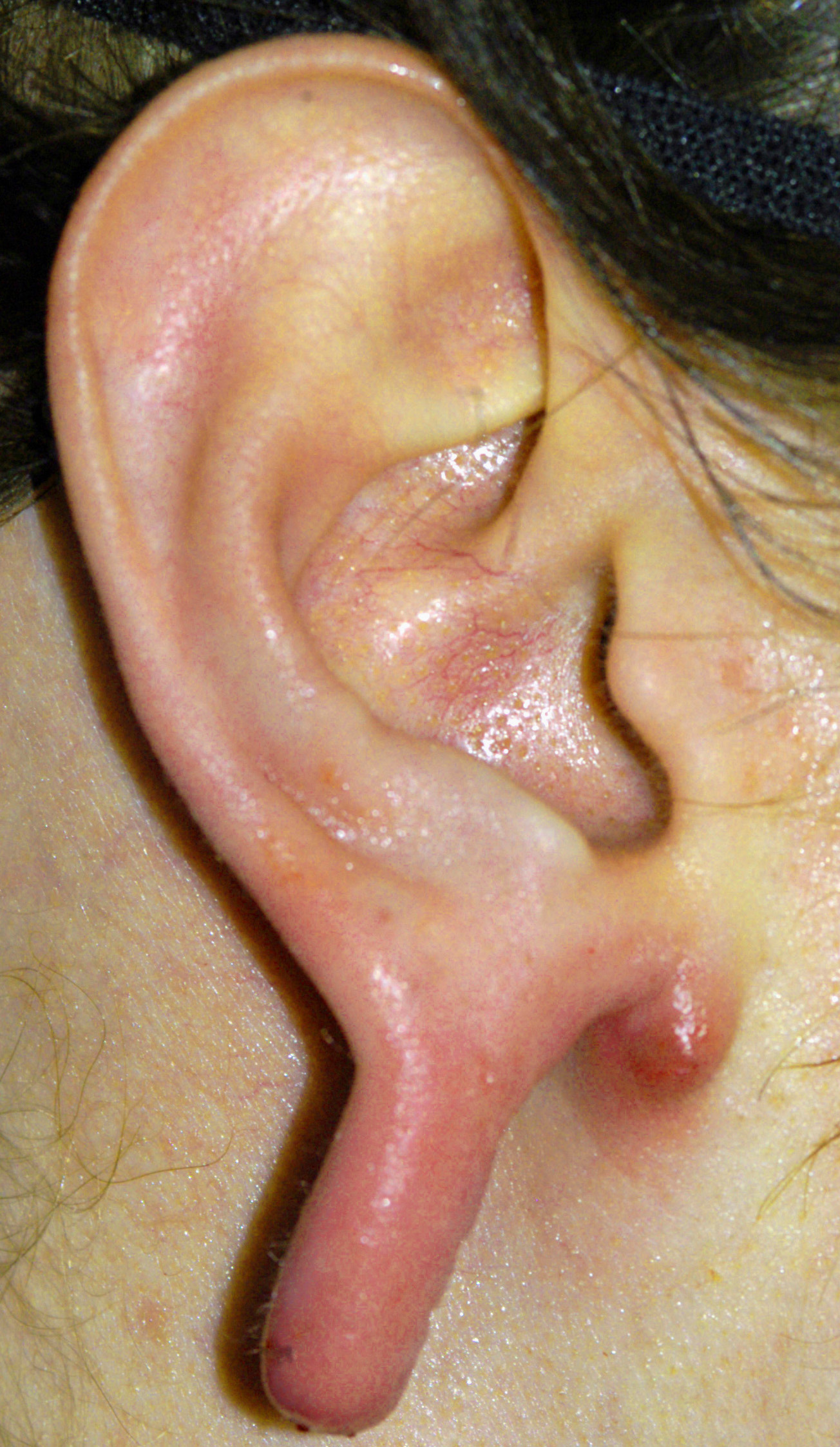
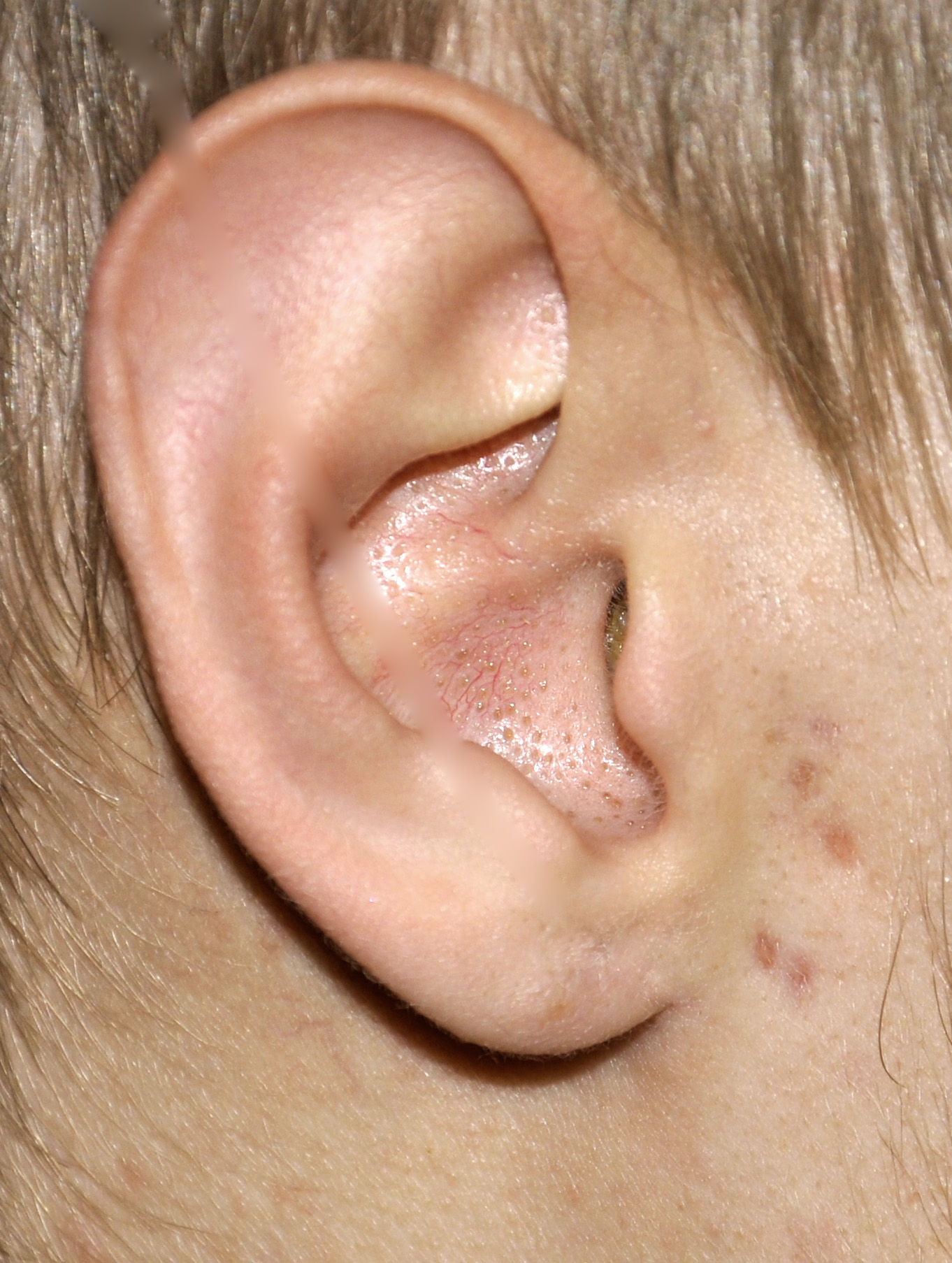
Torn gauged ear
Reconstruction of turn gauged ear.


Patient 55
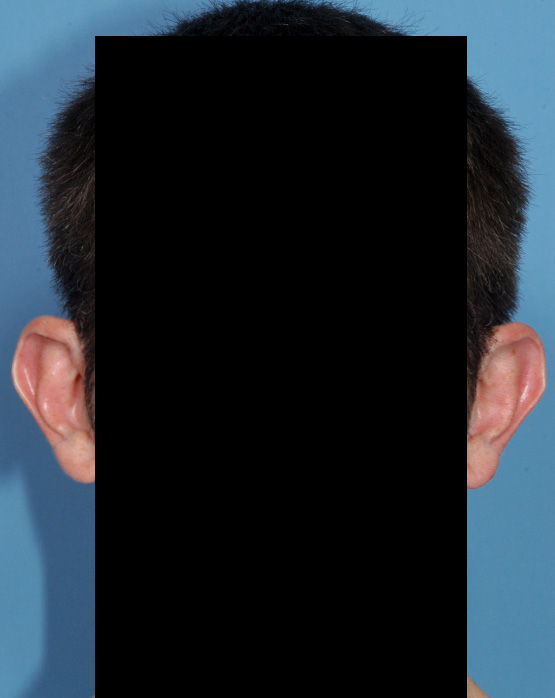
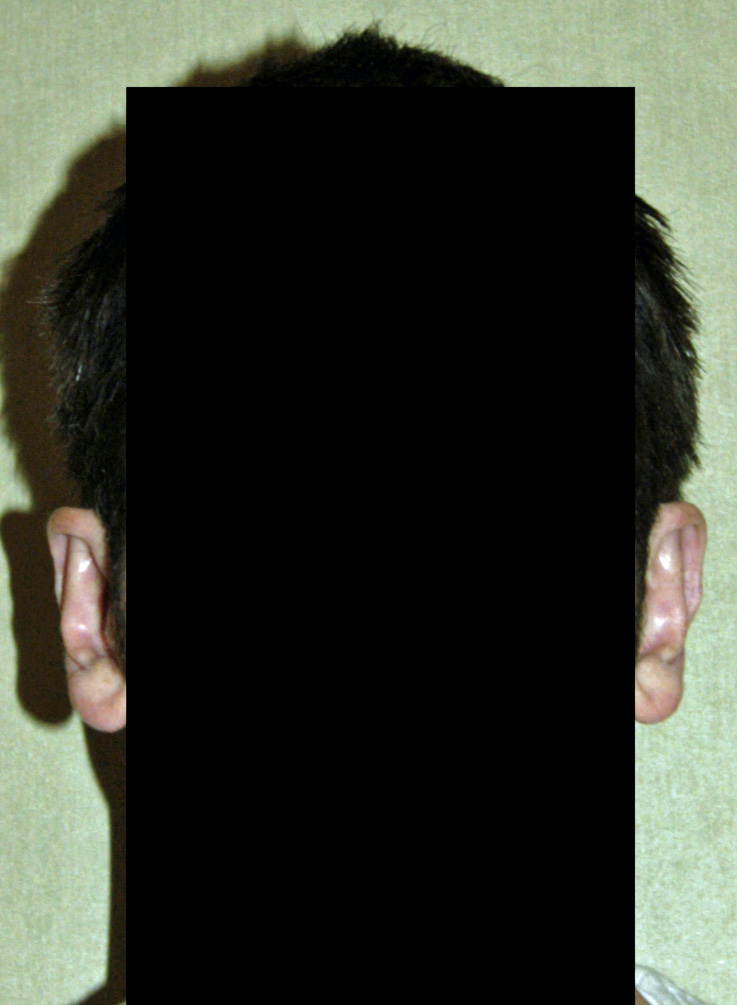
Desire for reduction of protruding ears.
Setback otoplasty in an adult with incisions on the backside of the ears.


Desire for reduction of protruding ears.
Setback otoplasty in an adult with incisions on the backside of the ears.
Patient 55
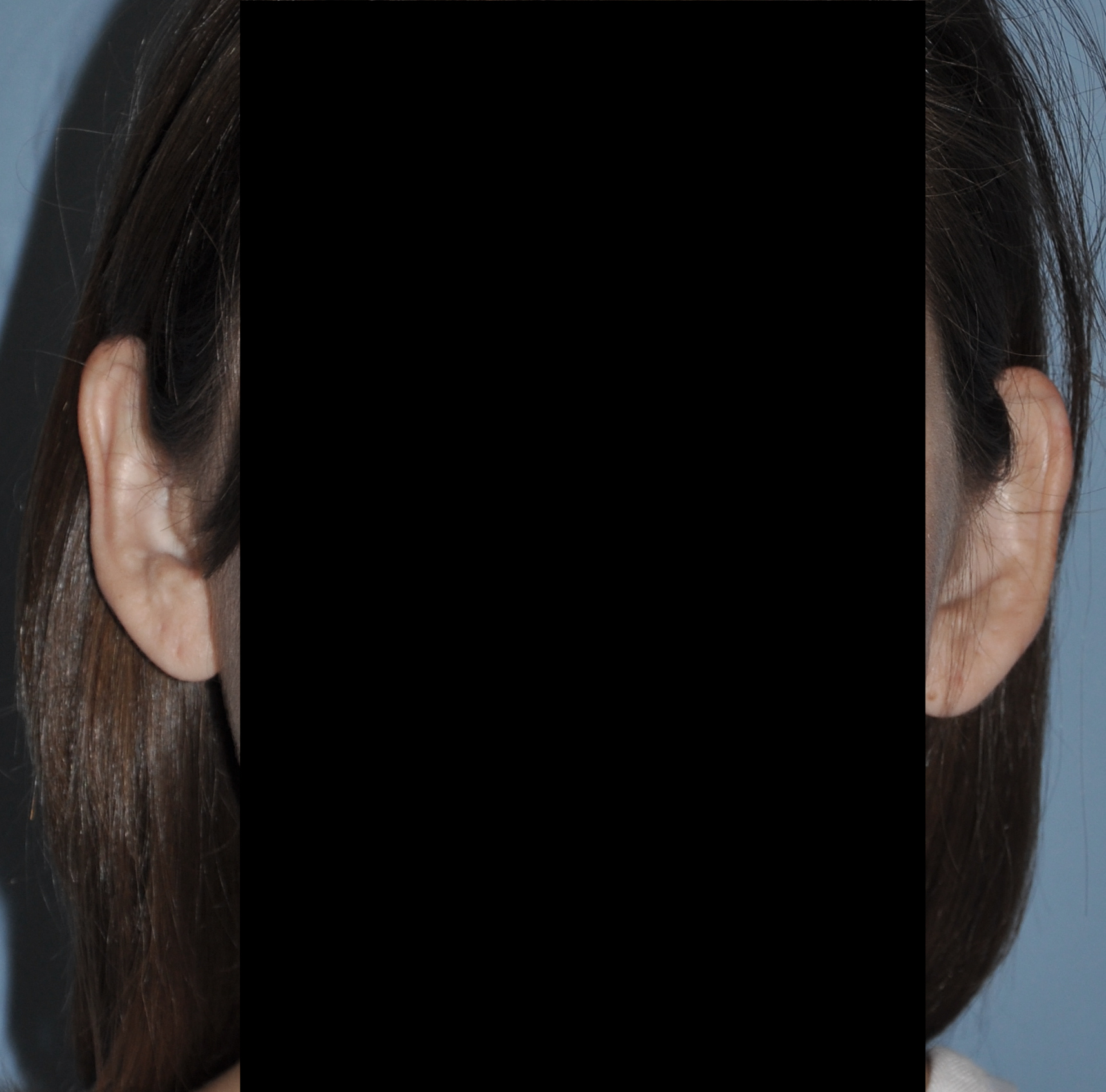
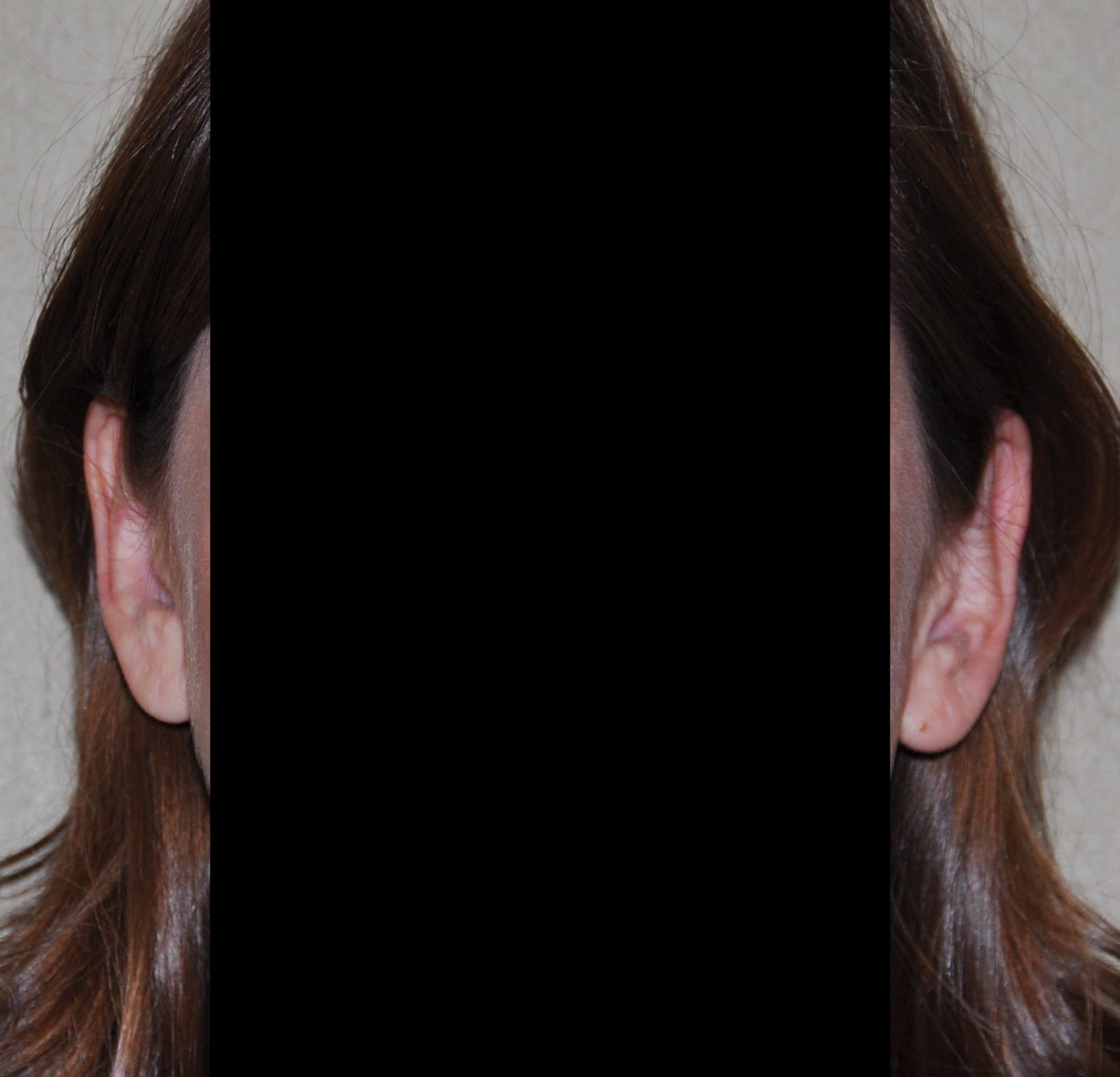
Desire for less protruding ears.
Setback otoplasty with suture reshaping of ear cartilages.


Desire for less protruding ears.
Setback otoplasty with suture reshaping of ear cartilages.
Patient 56
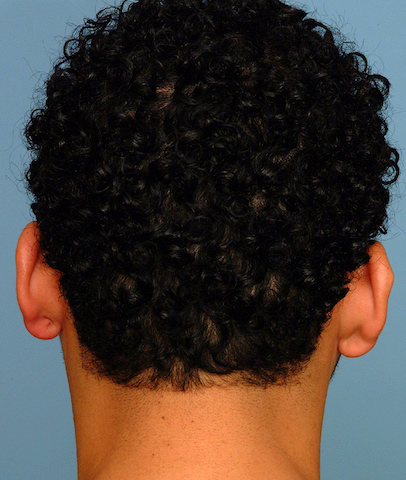
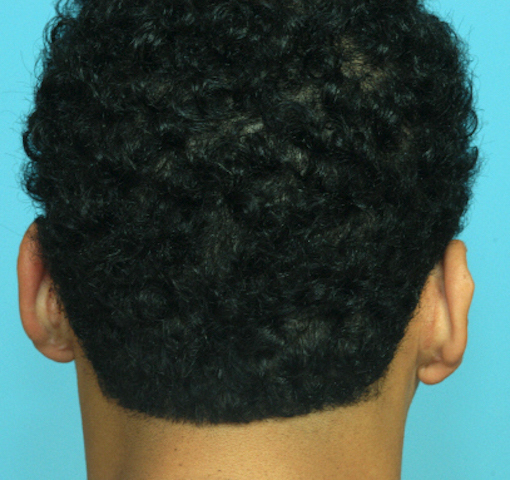
Desire for setback of moderate ear protrusions.
Conchal-based technique for moderate setback otoplasties.


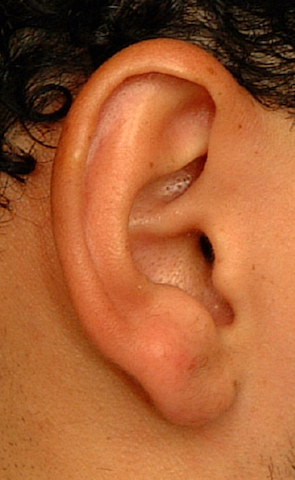
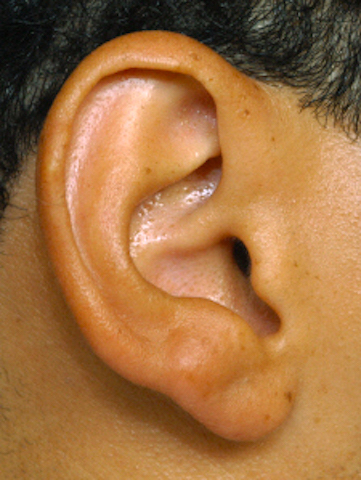
Desire for setback of moderate ear protrusions.
Conchal-based technique for moderate setback otoplasties.
Patient 57
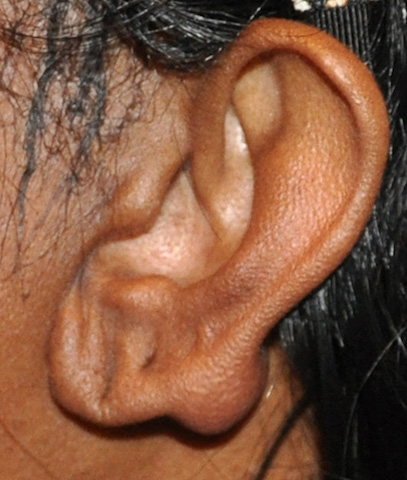
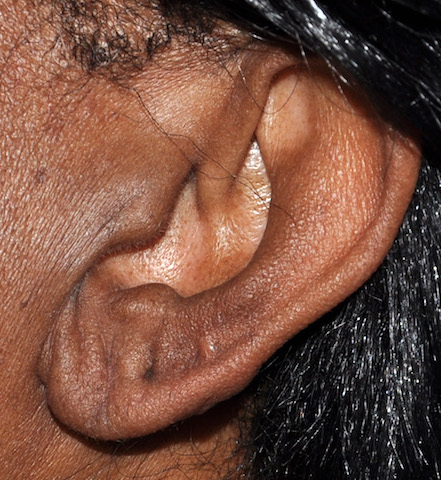
Large keloid on back of earlobe after ear piercing.
Excision of large keloid on back of ear with skin graft reconstruction.


Large keloid on back of earlobe after ear piercing.
Excision of large keloid on back of ear with skin graft reconstruction.
Patient 58
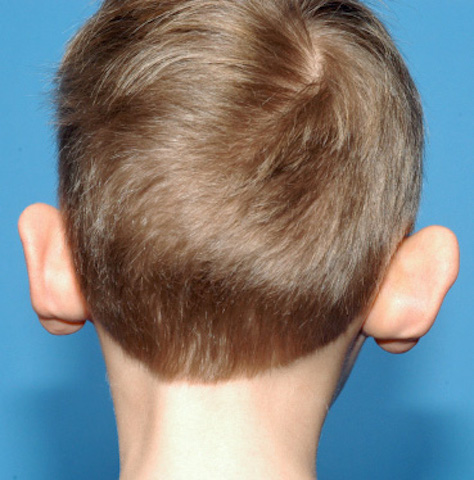
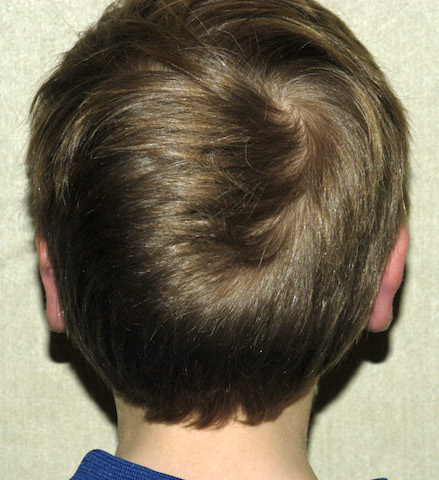
Desire for ears that don' stick out.
Setback otoplasty decreasing the angle of the ear from the side of the head.


Desire for ears that don' stick out.
Setback otoplasty decreasing the angle of the ear from the side of the head.
Patient 59
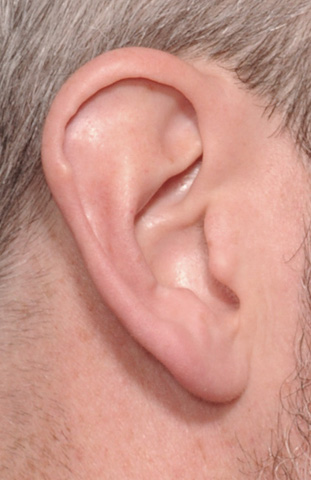
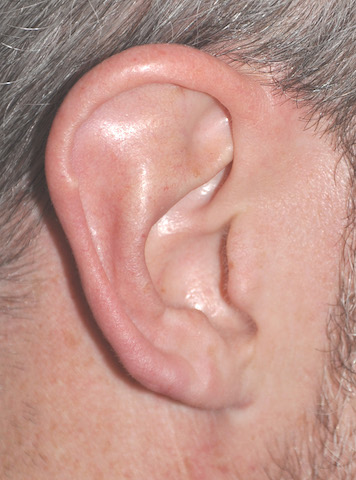
Desire for earlobe reduction.
Auriculofacial wedge excision earlobe reduction technique.


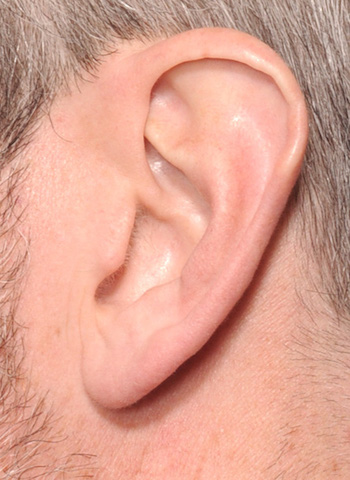
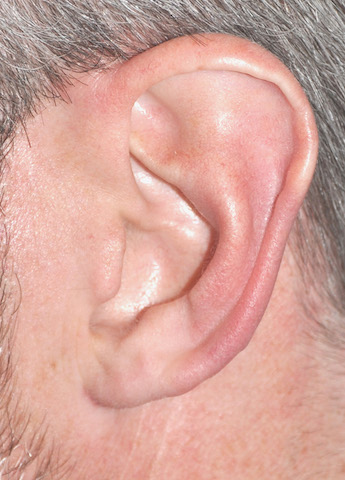
Desire for earlobe reduction.
Auriculofacial wedge excision earlobe reduction technique.
Patient 60
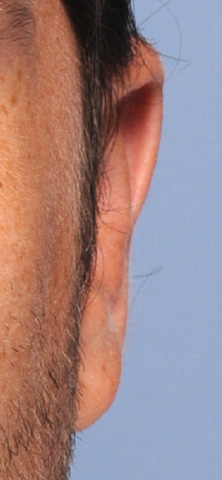
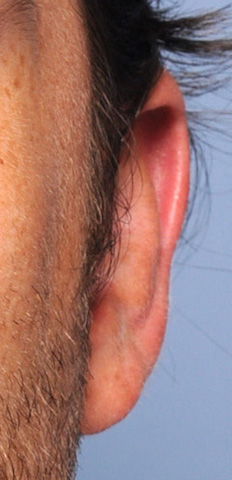
Desire for treatment of overcorrected otoplasty.
Subtotal otoplasty reversal with postauricular release and placement of tissue bank cartilage graft.


Desire for treatment of overcorrected otoplasty.
Subtotal otoplasty reversal with postauricular release and placement of tissue bank cartilage graft.
Patient 61
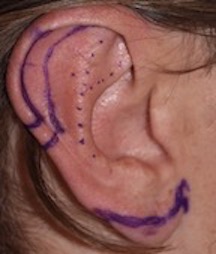
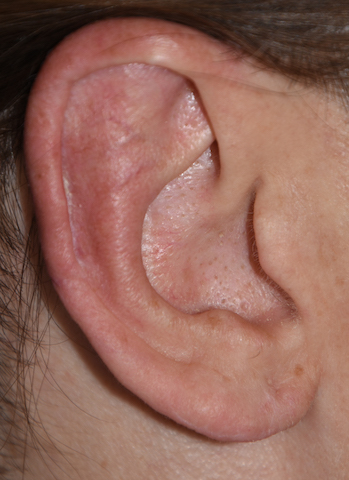
Desire for smaller ear with less vertical height.
Macrotia ear reduction with superior scapula and inferior earlobe reduction.


Desire for smaller ear with less vertical height.
Macrotia ear reduction with superior scapula and inferior earlobe reduction.
Patient 61
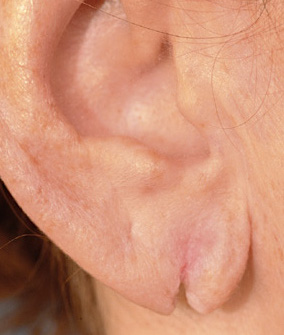
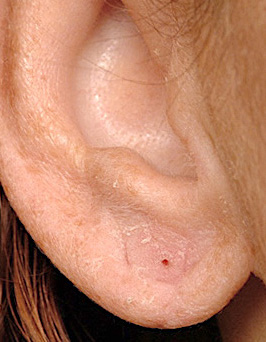
Desire for repair of turn earlobe.
Torn earlobe repair under local anesthesia.


Desire for repair of turn earlobe.
Torn earlobe repair under local anesthesia.
Patient 62
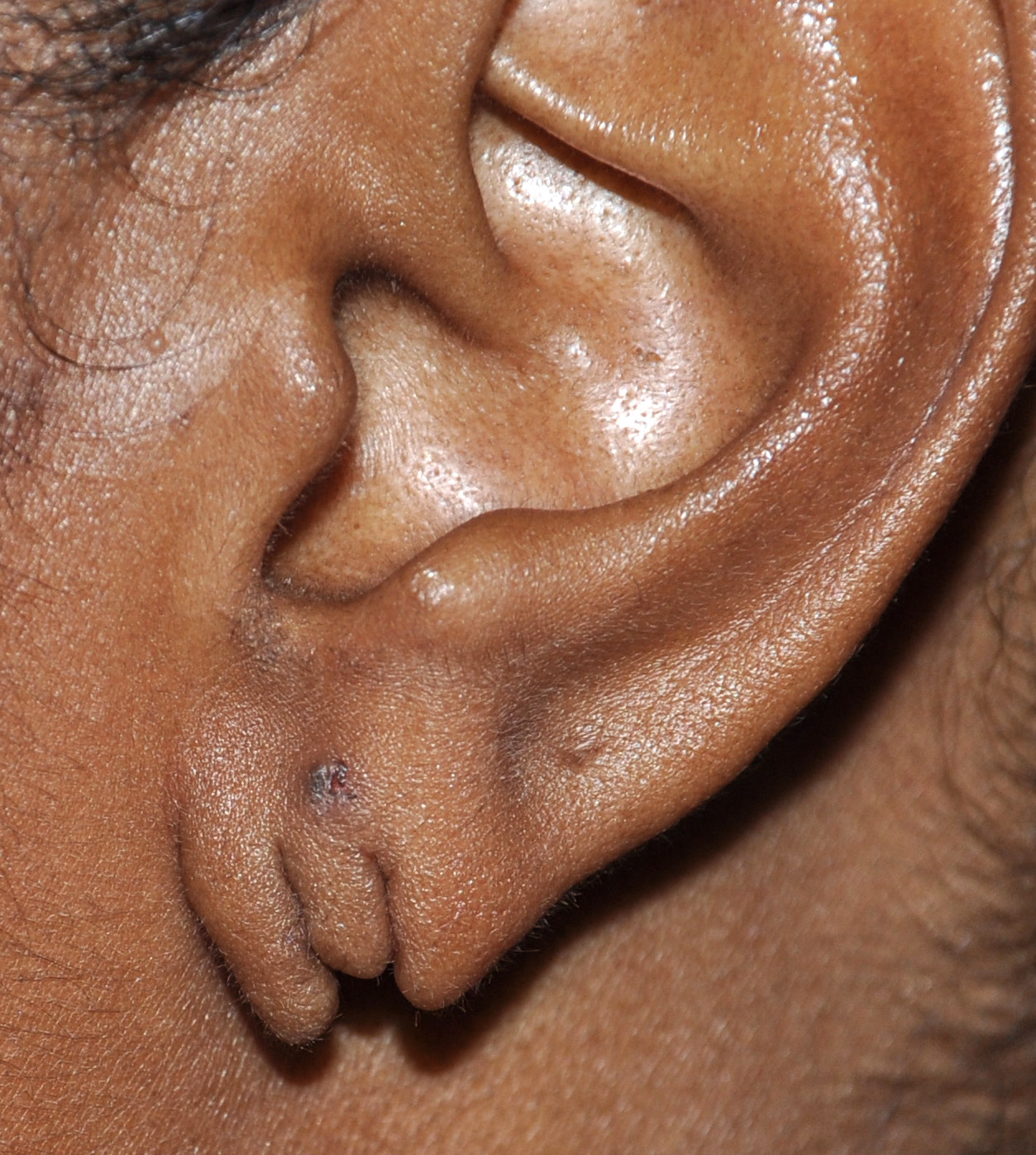
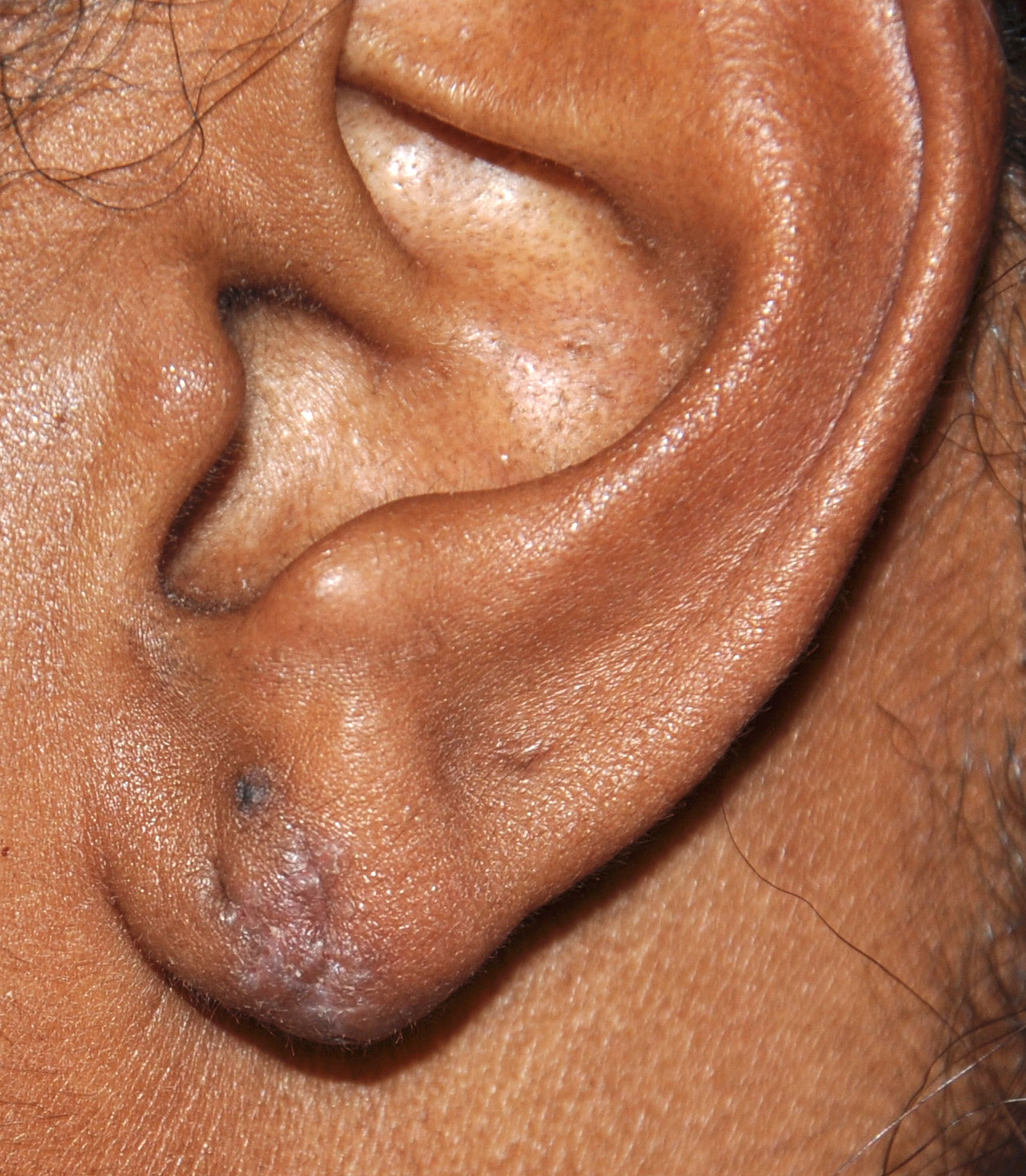
Desire for repair of double split earlobe.
Repair of double split earlobe under local anesthesia.


Desire for repair of double split earlobe.
Repair of double split earlobe under local anesthesia.
Patient 63
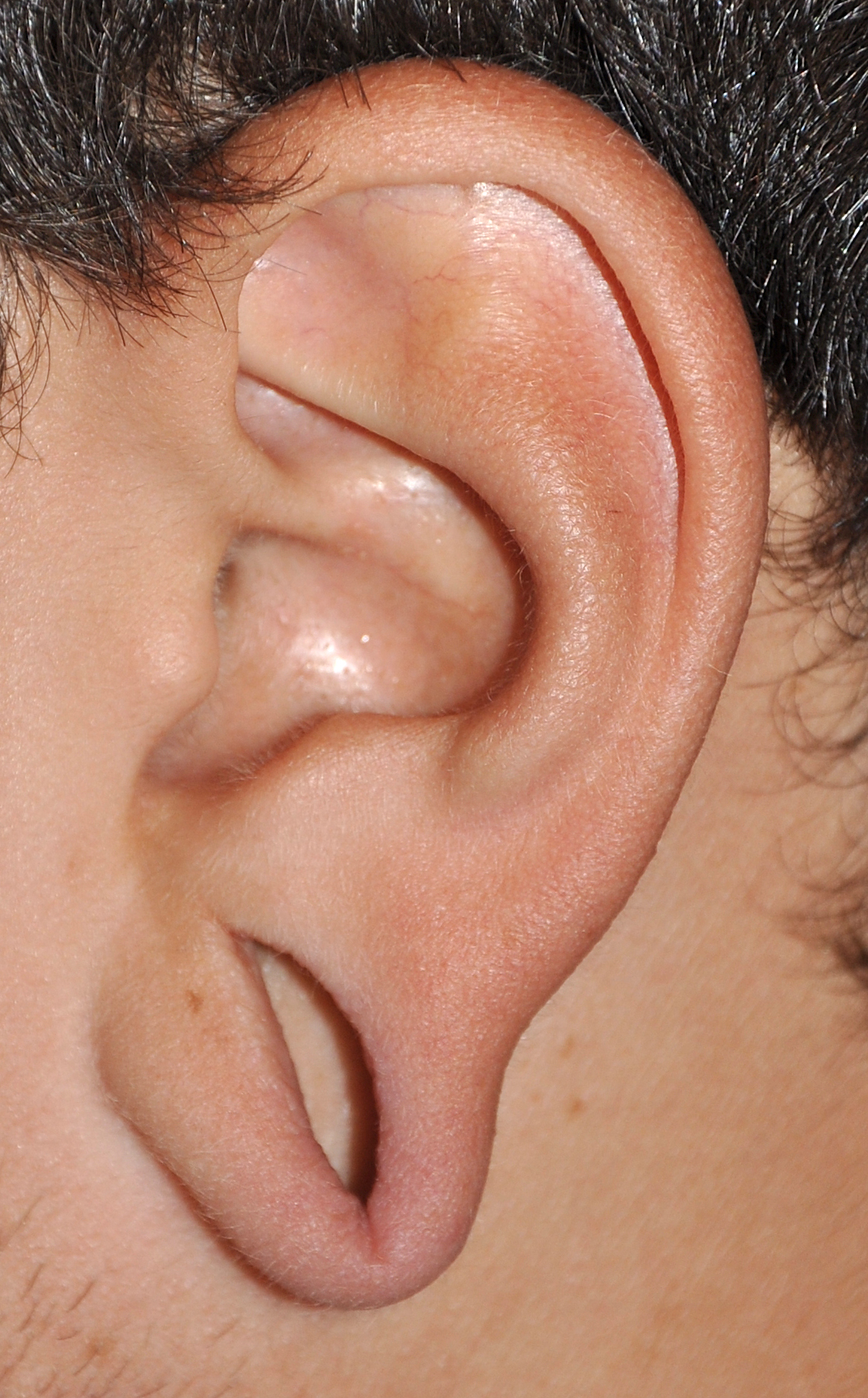
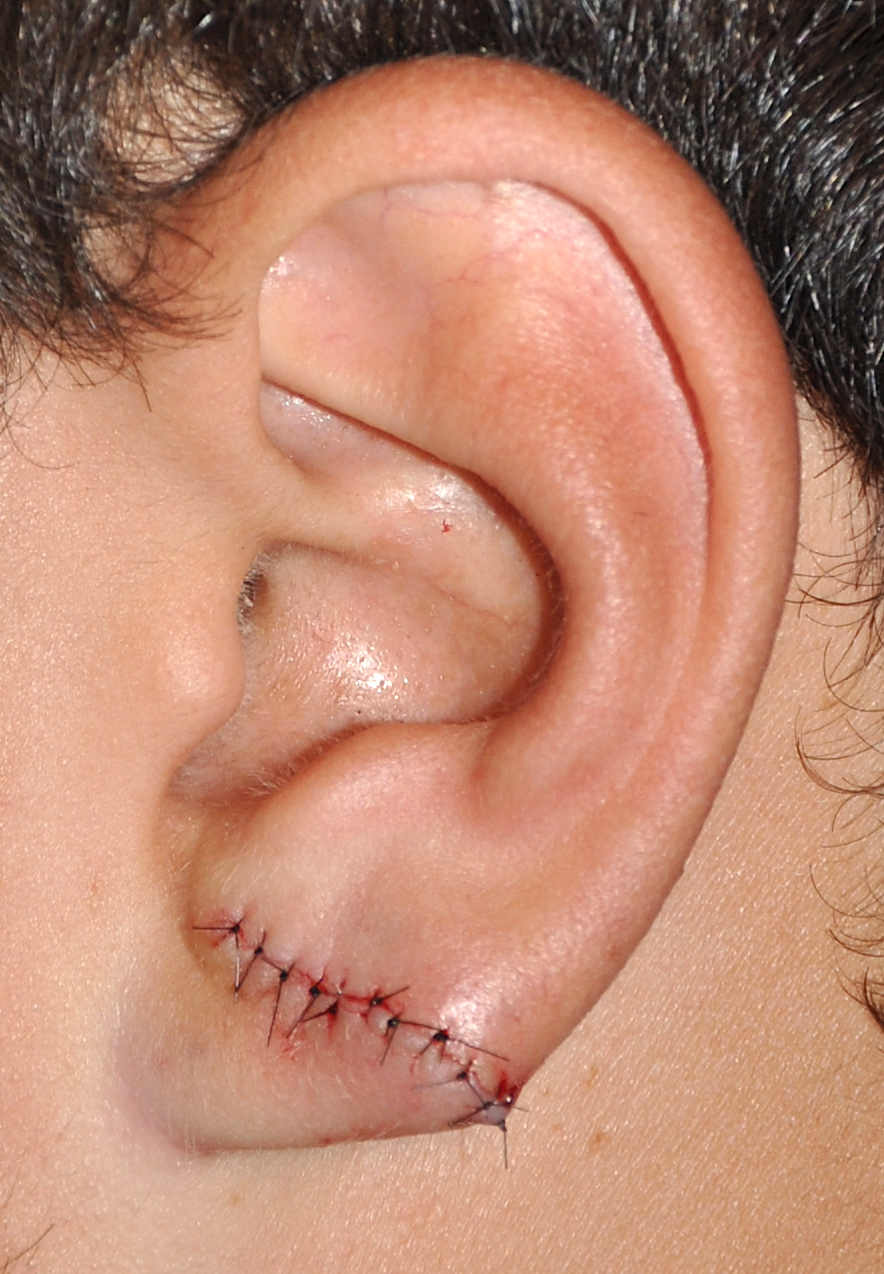
Desire for repair of stretched out earlobe from gauging.
Immediate result from gauged earlobe reconstruction.


Desire for repair of stretched out earlobe from gauging.
Immediate result from gauged earlobe reconstruction.
Patient 64
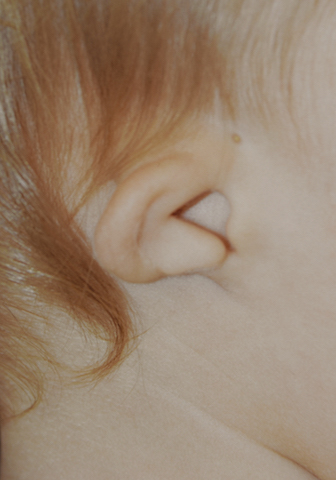
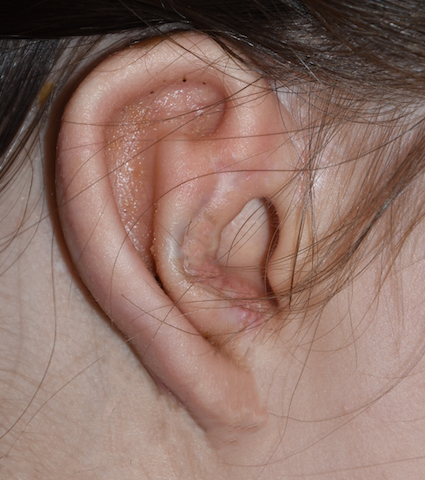
Congenital right ear microtia deformity.
Staged microtia reconstruction with rib graft framework.


Congenital right ear microtia deformity.
Staged microtia reconstruction with rib graft framework.
Patient 65
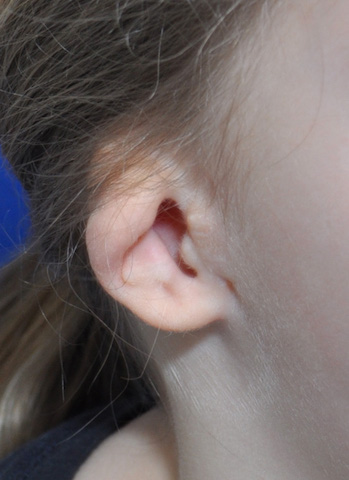
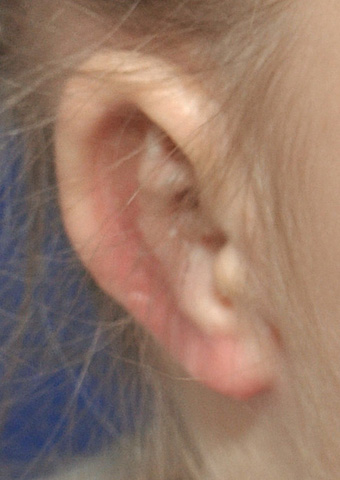
Congenital severe cupped ear deformity.
Rib graft framework cupped ear reconstruction.


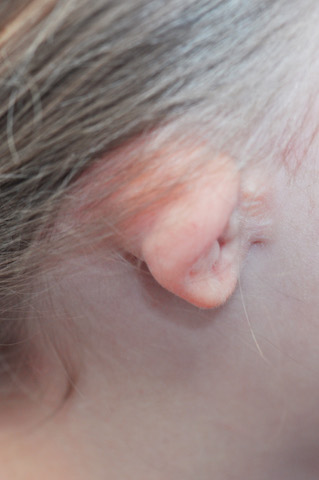
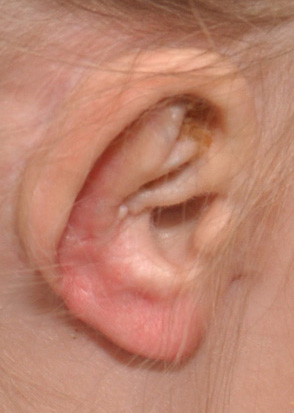
Congenital severe cupped ear deformity.
Rib graft framework cupped ear reconstruction.
Patient 66
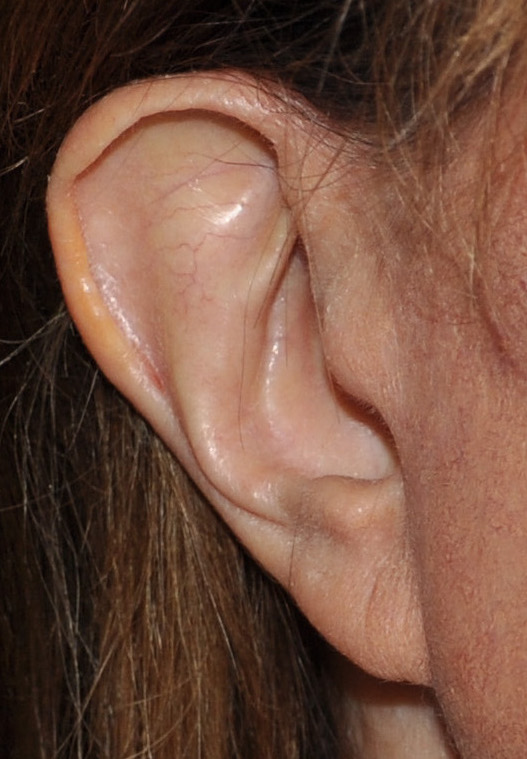
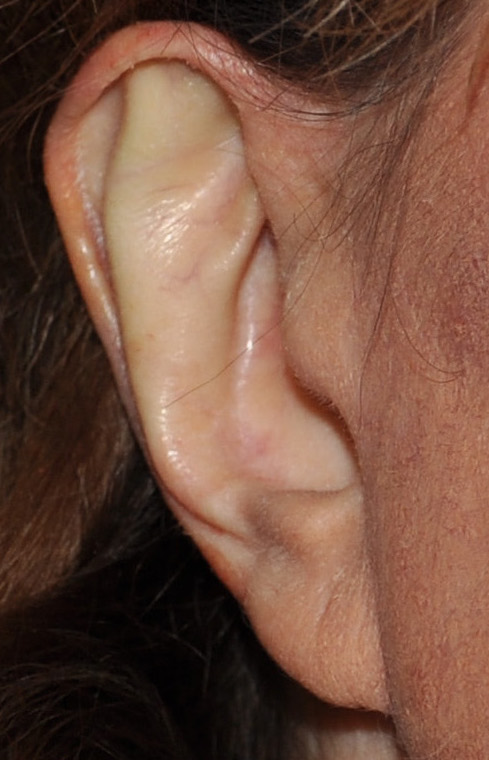
Desire to set back the top of one ear which was protruding more than the other part.
Mini-otoplasty technique under local anesthesia to just setback the top part of the ear.


Desire to set back the top of one ear which was protruding more than the other part.
Mini-otoplasty technique under local anesthesia to just setback the top part of the ear.
Patient 67
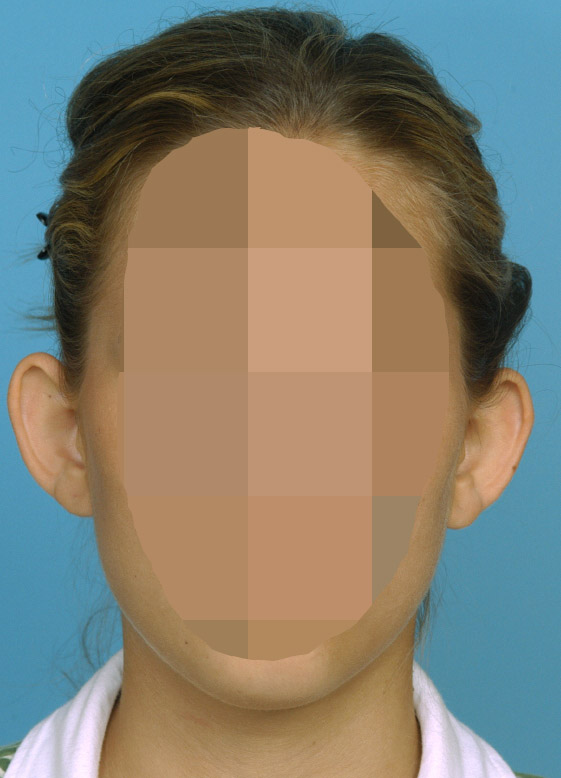
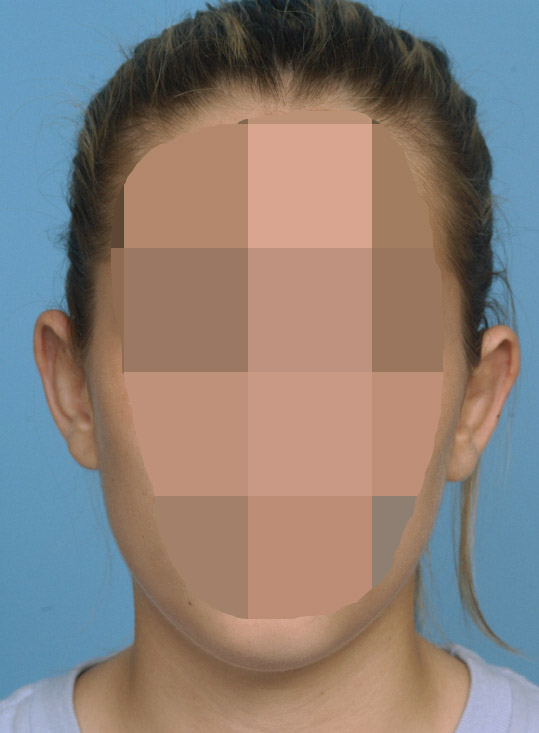
Desire for less prominent ears.
Bilateral setback otoplasties with suture cartilage reshaping.


Desire for less prominent ears.
Bilateral setback otoplasties with suture cartilage reshaping.
Patient 68
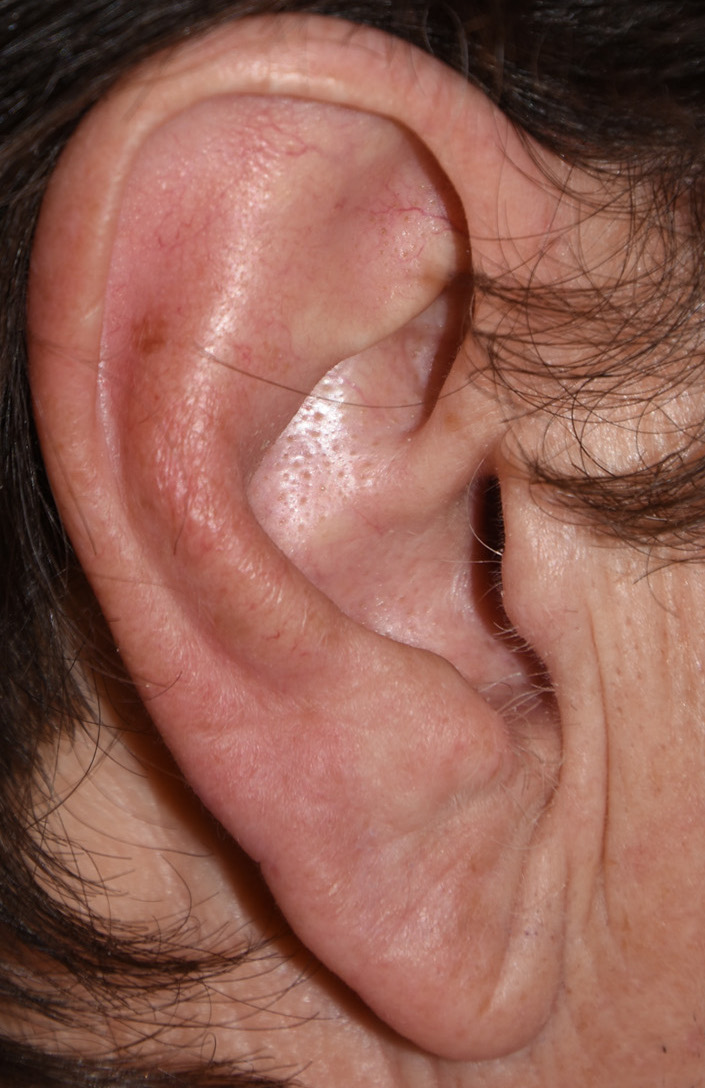
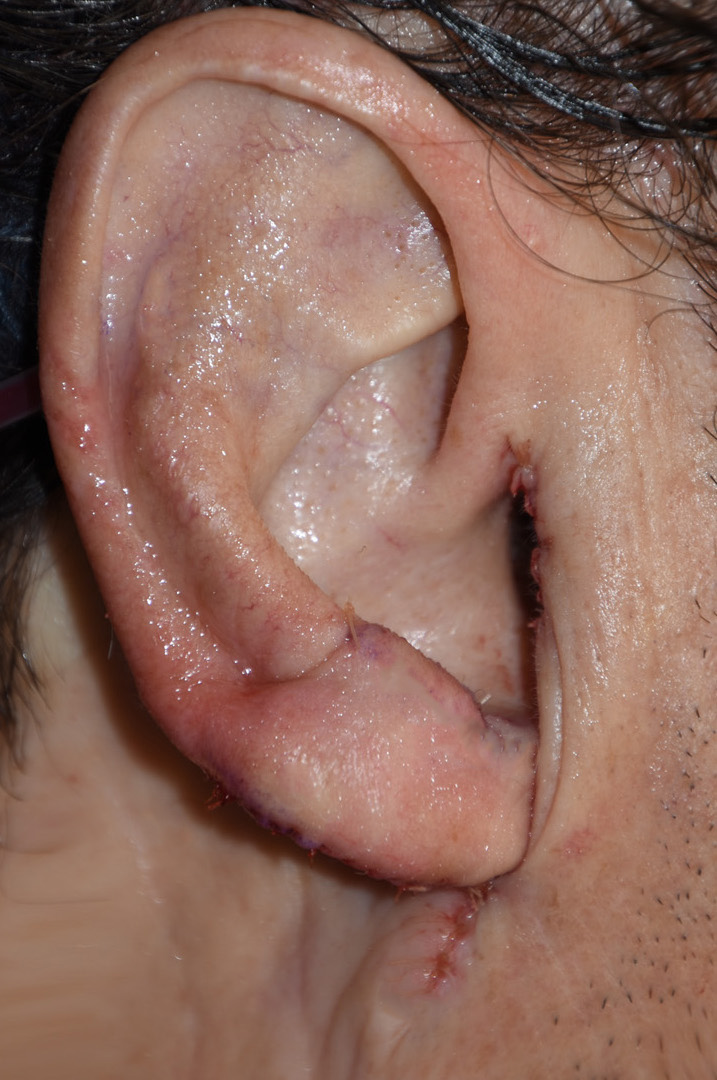
Desire for smaller better shaped ear in older male.
Intraoperative result from ear reshaping using earlobe, tragus and antitragus reductions


Desire for smaller better shaped ear in older male.
Intraoperative result from ear reshaping using earlobe, tragus and antitragus reductions
Patient 69
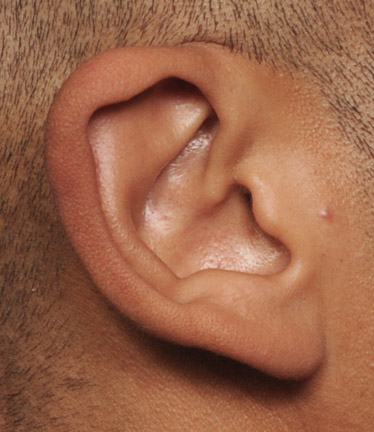
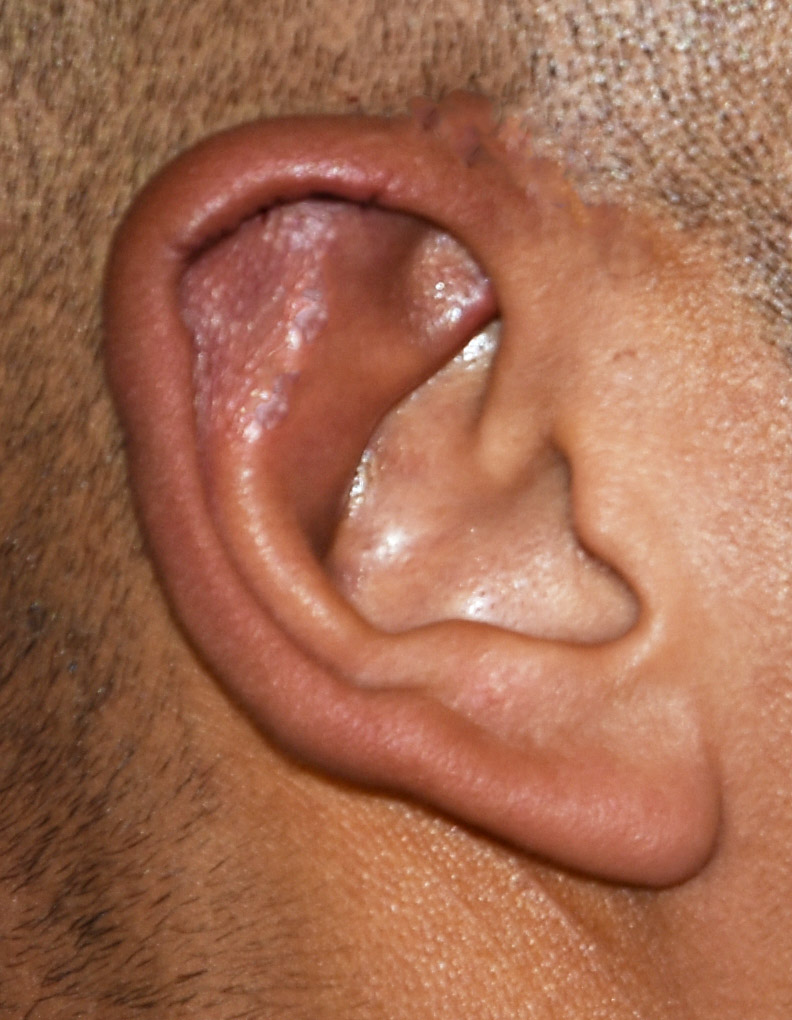
Desire for ears that stick out less and correction of the lidding of the upper ear.
One day after surgery with setback otoplasty and correction of upper helical lidding.


Desire for ears that stick out less and correction of the lidding of the upper ear.
One day after surgery with setback otoplasty and correction of upper helical lidding.
Patient 70
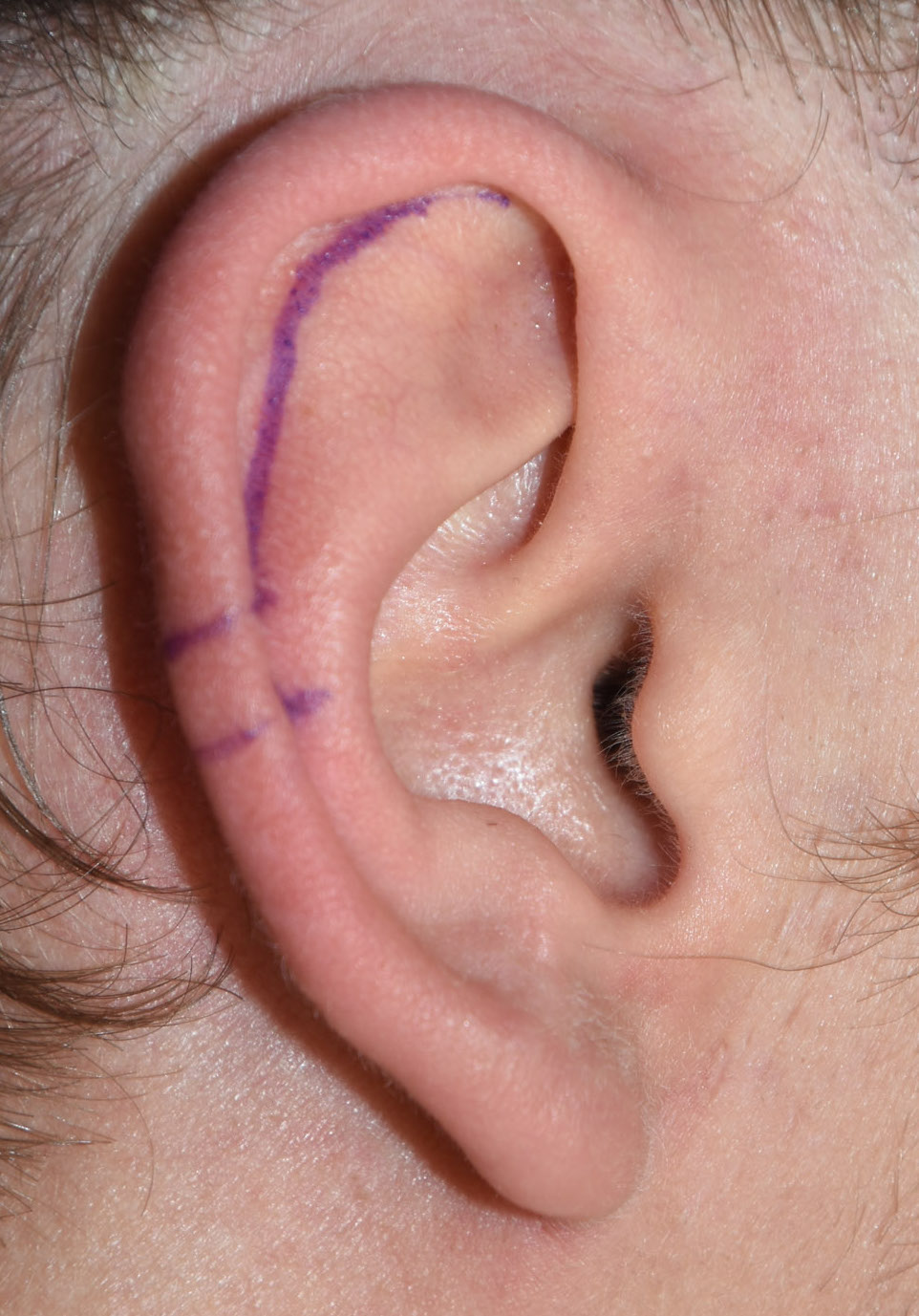
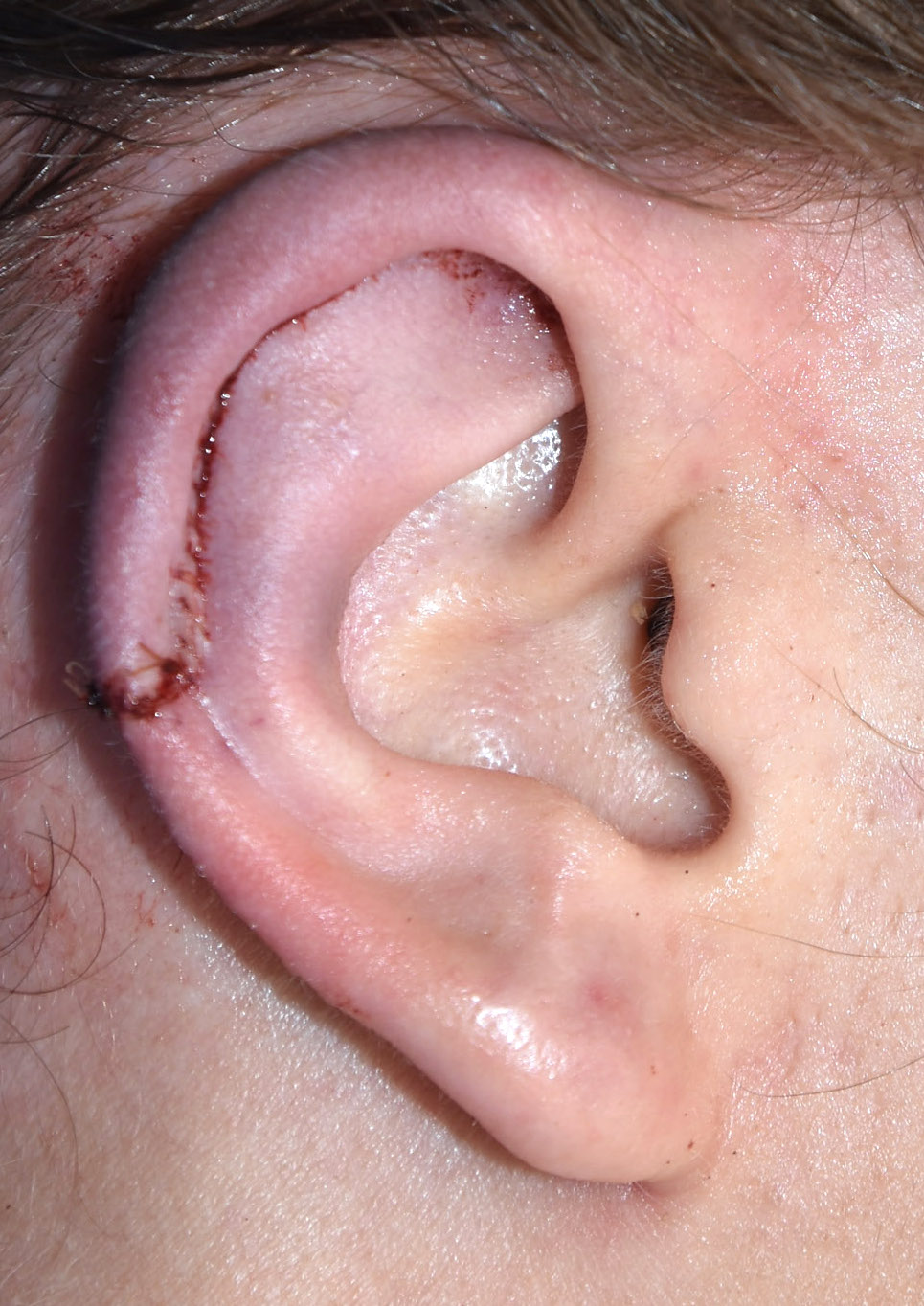
Desire for smaller ear height in an otherwise normal ear.
Scaphal reduction with helical flap advancement for a 65mm to 60mm ear height reduction.


Desire for smaller ear height in an otherwise normal ear.
Scaphal reduction with helical flap advancement for a 65mm to 60mm ear height reduction.
Patient 71
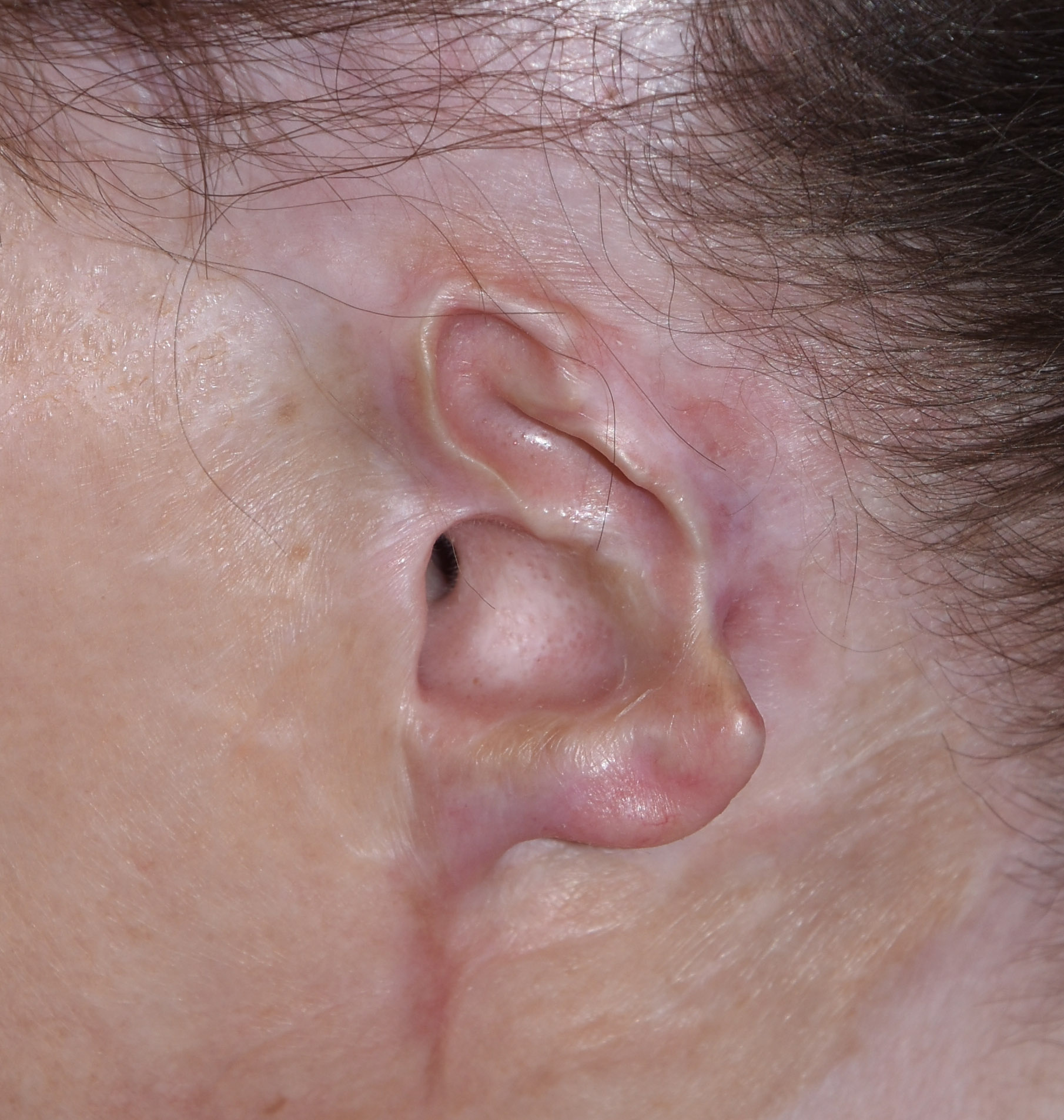
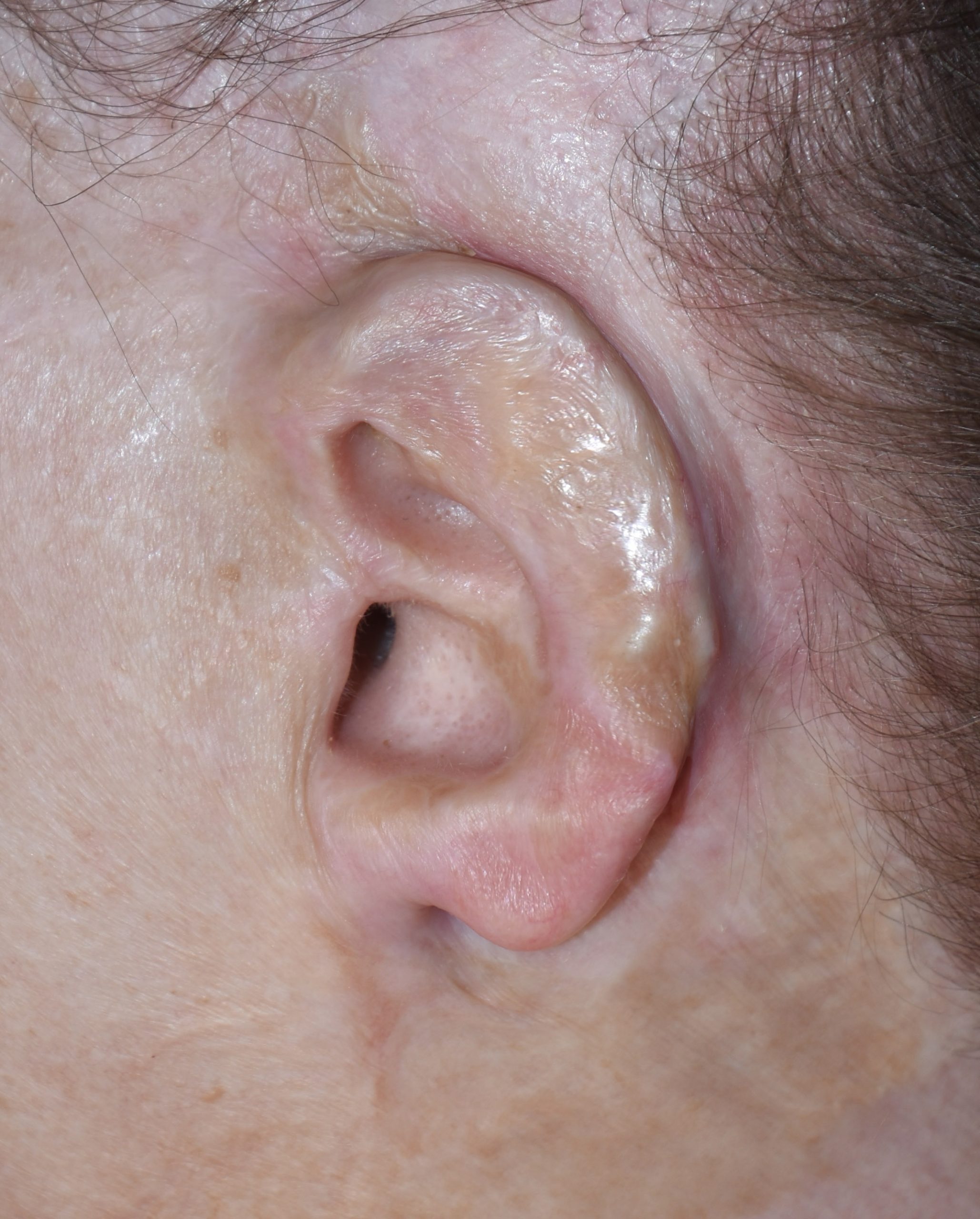
Burned ear deformity with desire to have some semblance of an ear framework for support of glasses as well as appearance.
1st stage burned ear reconstruction with rib graft framework covered with TPF flap and skin graft.


Burned ear deformity with desire to have some semblance of an ear framework for support of glasses as well as appearance.
1st stage burned ear reconstruction with rib graft framework covered with TPF flap and skin graft.
Patient 72
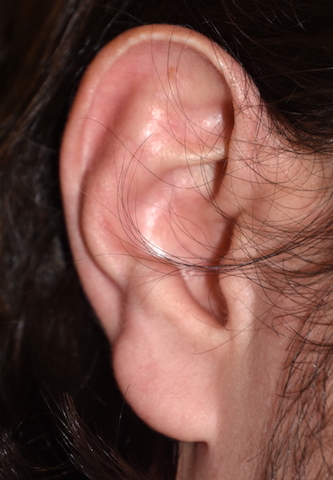
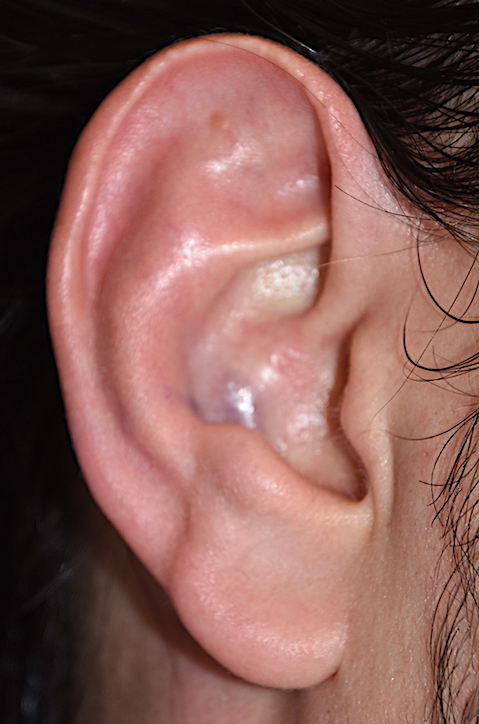
Desire for ears to stick out further due to congenital tight auriculocephaliangles.
Placement of t-shaped post auricular cadaveric t-shaped cartilage strut grafts after cartilage releases.


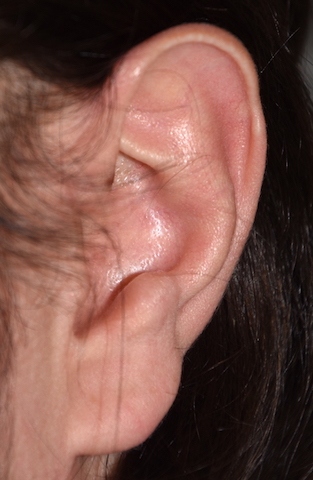
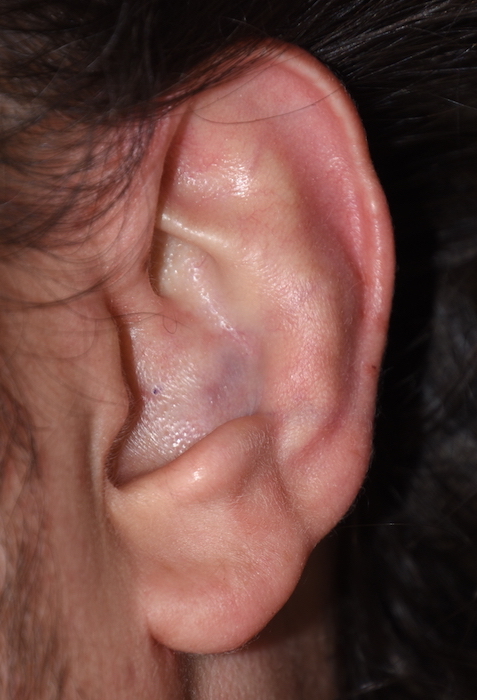
Desire for ears to stick out further due to congenital tight auriculocephaliangles.
Placement of t-shaped post auricular cadaveric t-shaped cartilage strut grafts after cartilage releases.
Patient 73
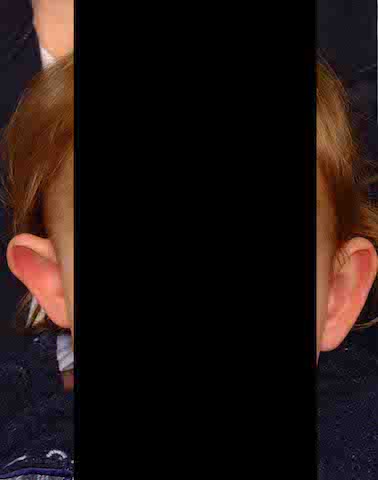
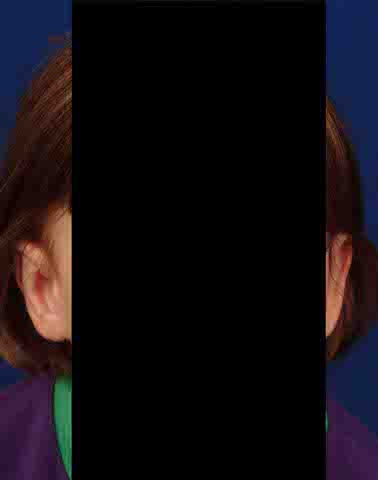
Desire for less prominent ears as a child.
Setback otoplasty with cartilage suture reshaping.


Desire for less prominent ears as a child.
Setback otoplasty with cartilage suture reshaping.
Patient 74
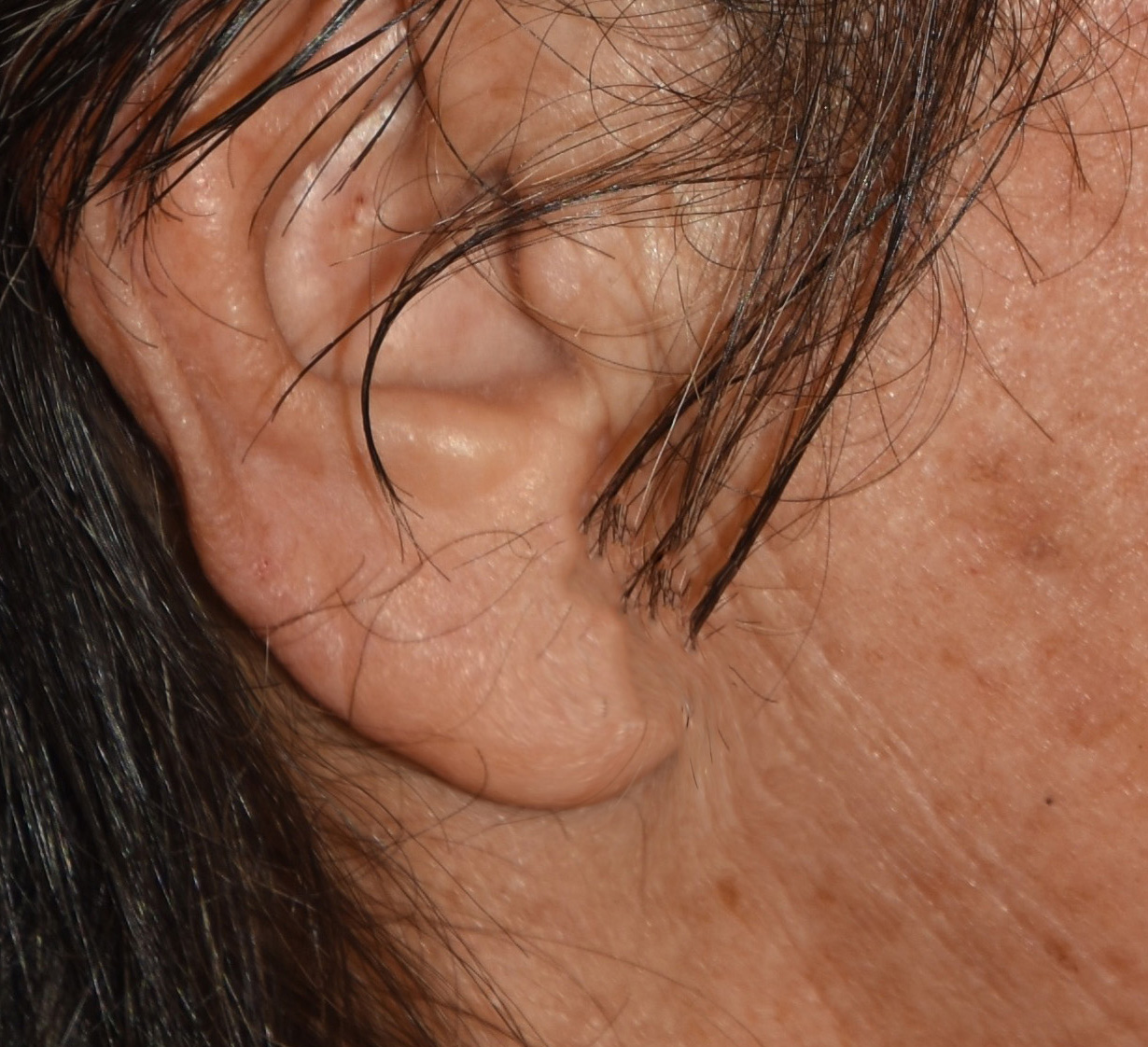
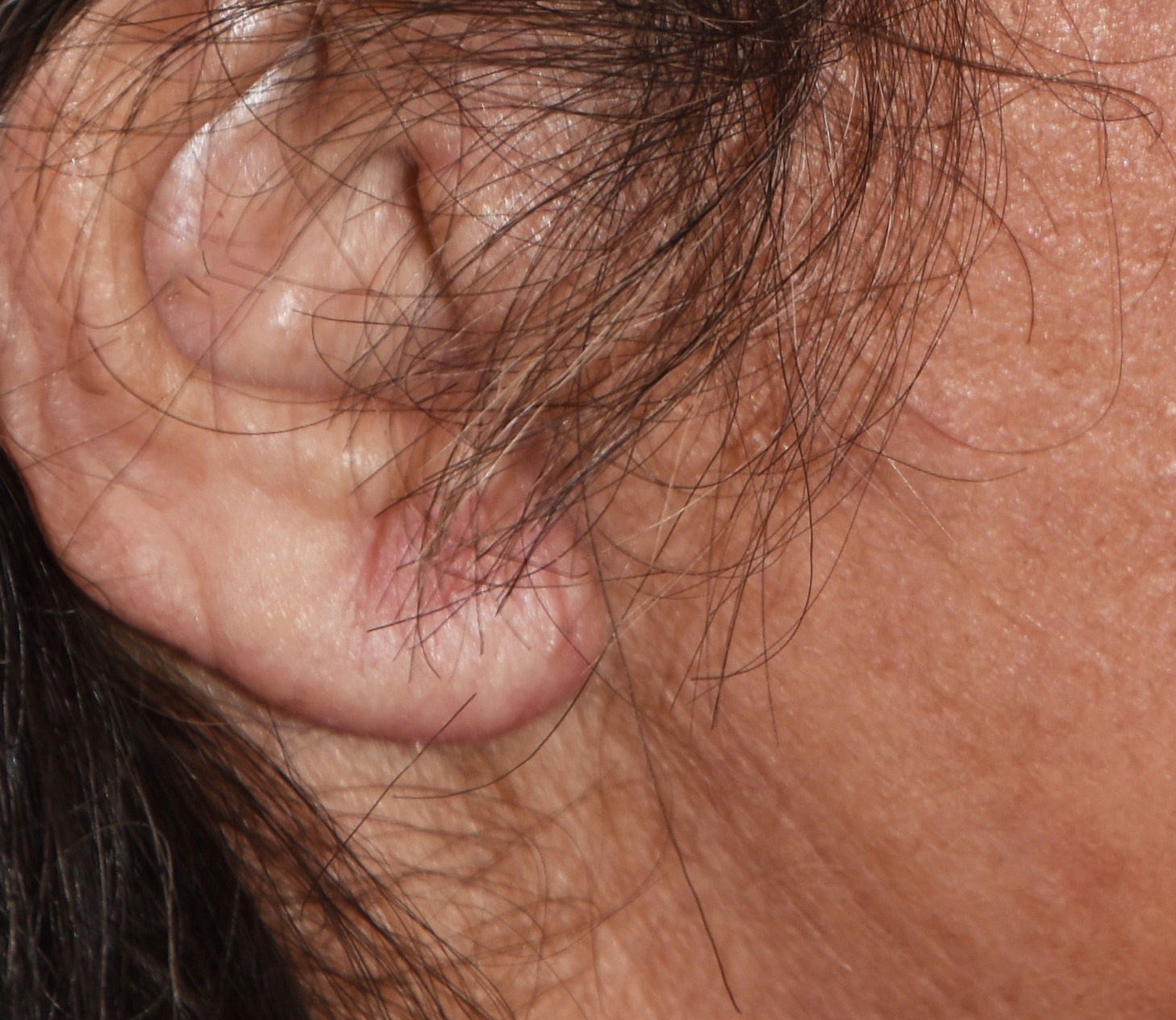
Desire for smaller earlobes.
Earlobe reduction done at the same time as a lower facelift.


Desire for smaller earlobes.
Earlobe reduction done at the same time as a lower facelift.
Patient 75
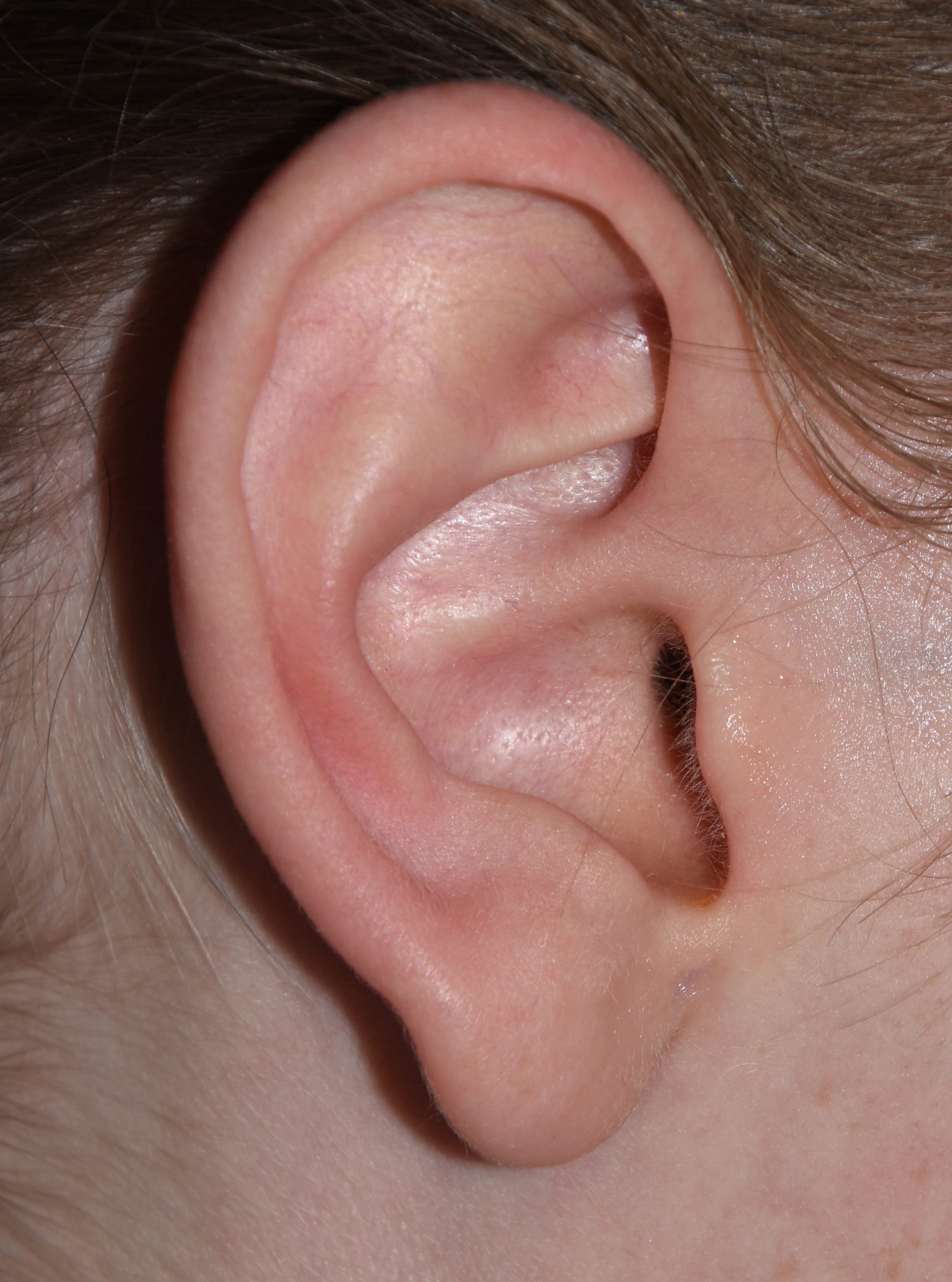
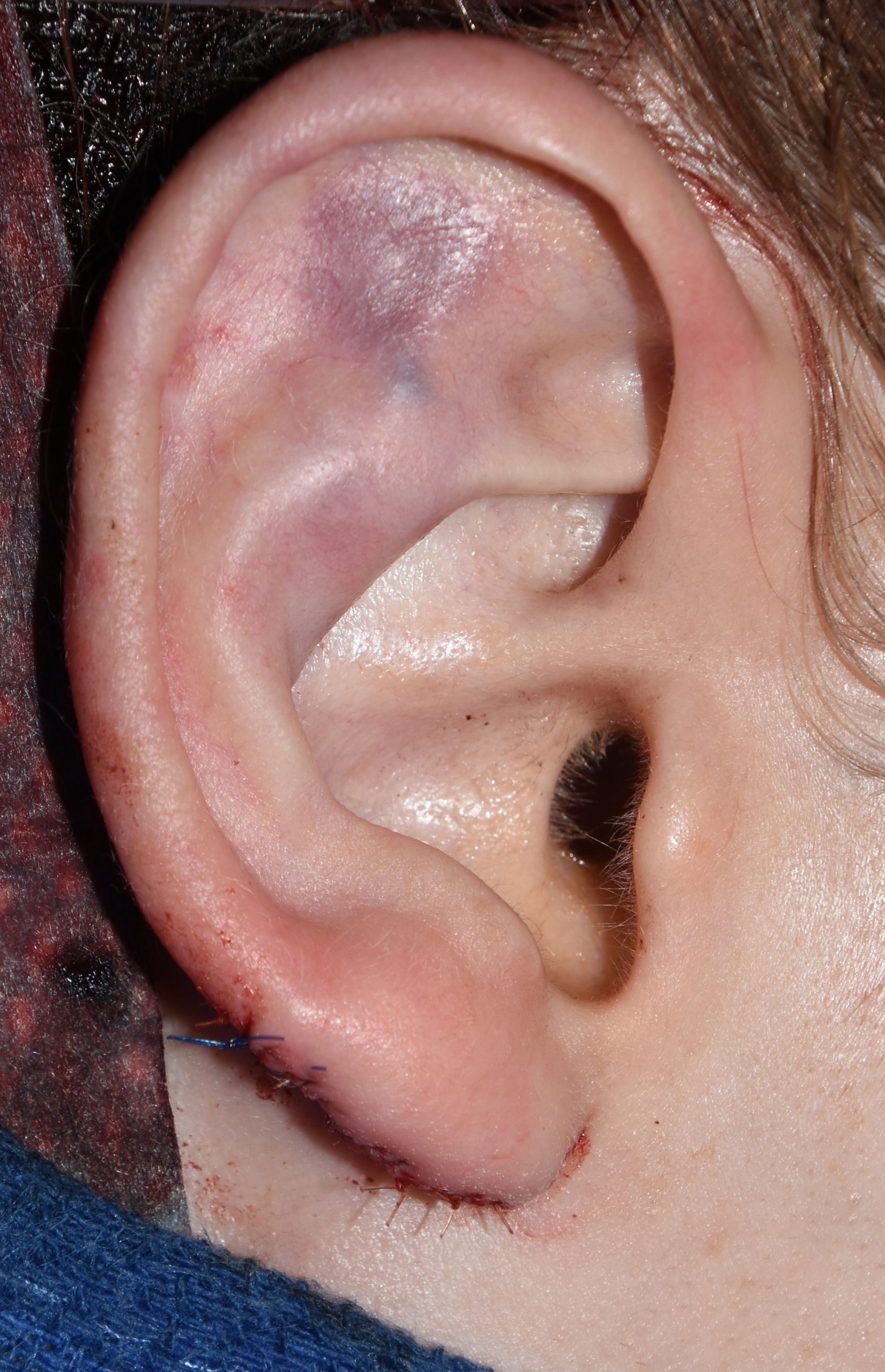
Desire for more feminine ear appearance.
Ear reshaping with earlobe reduction and upper ear setback.


Desire for more feminine ear appearance.
Ear reshaping with earlobe reduction and upper ear setback.
76
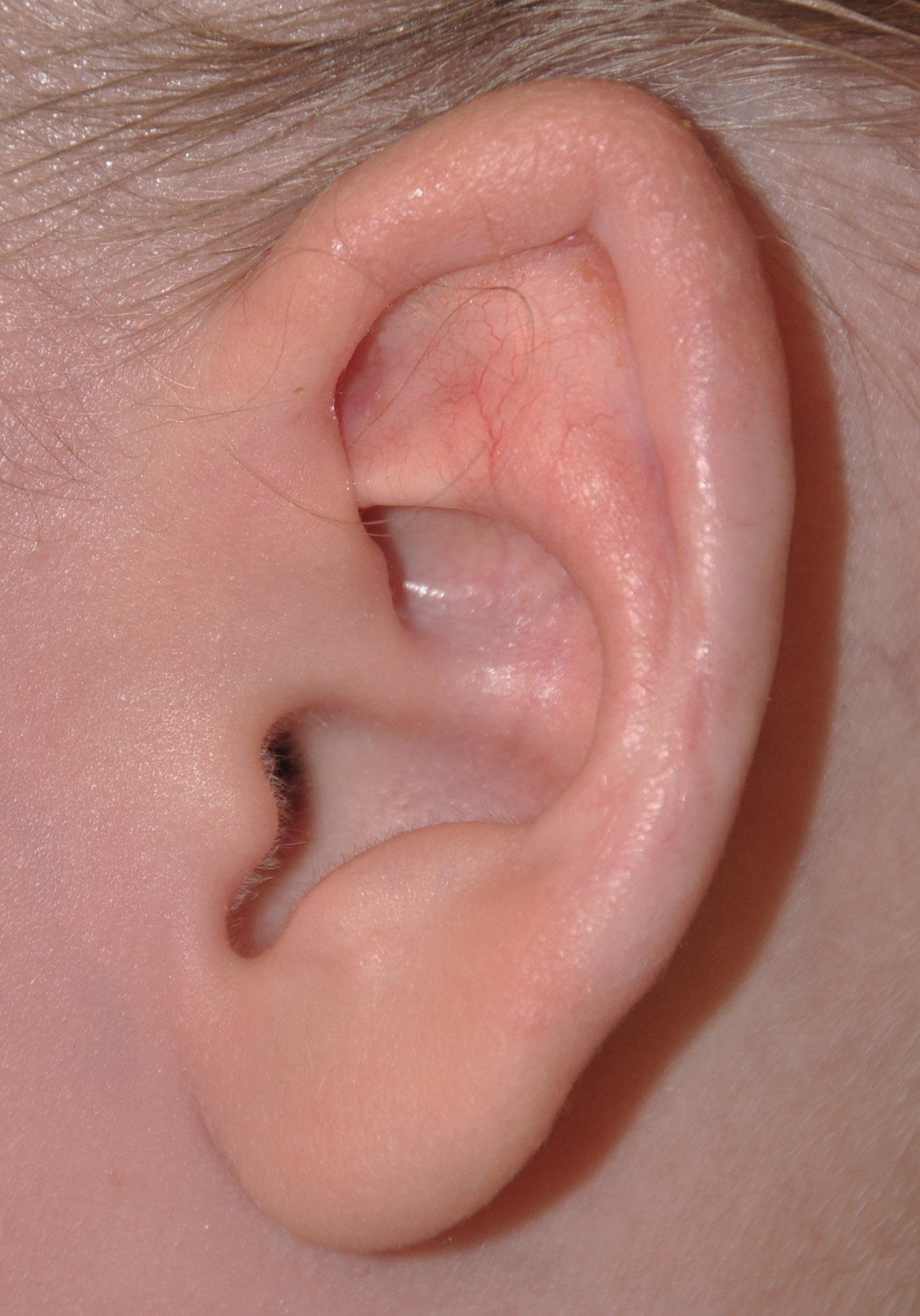
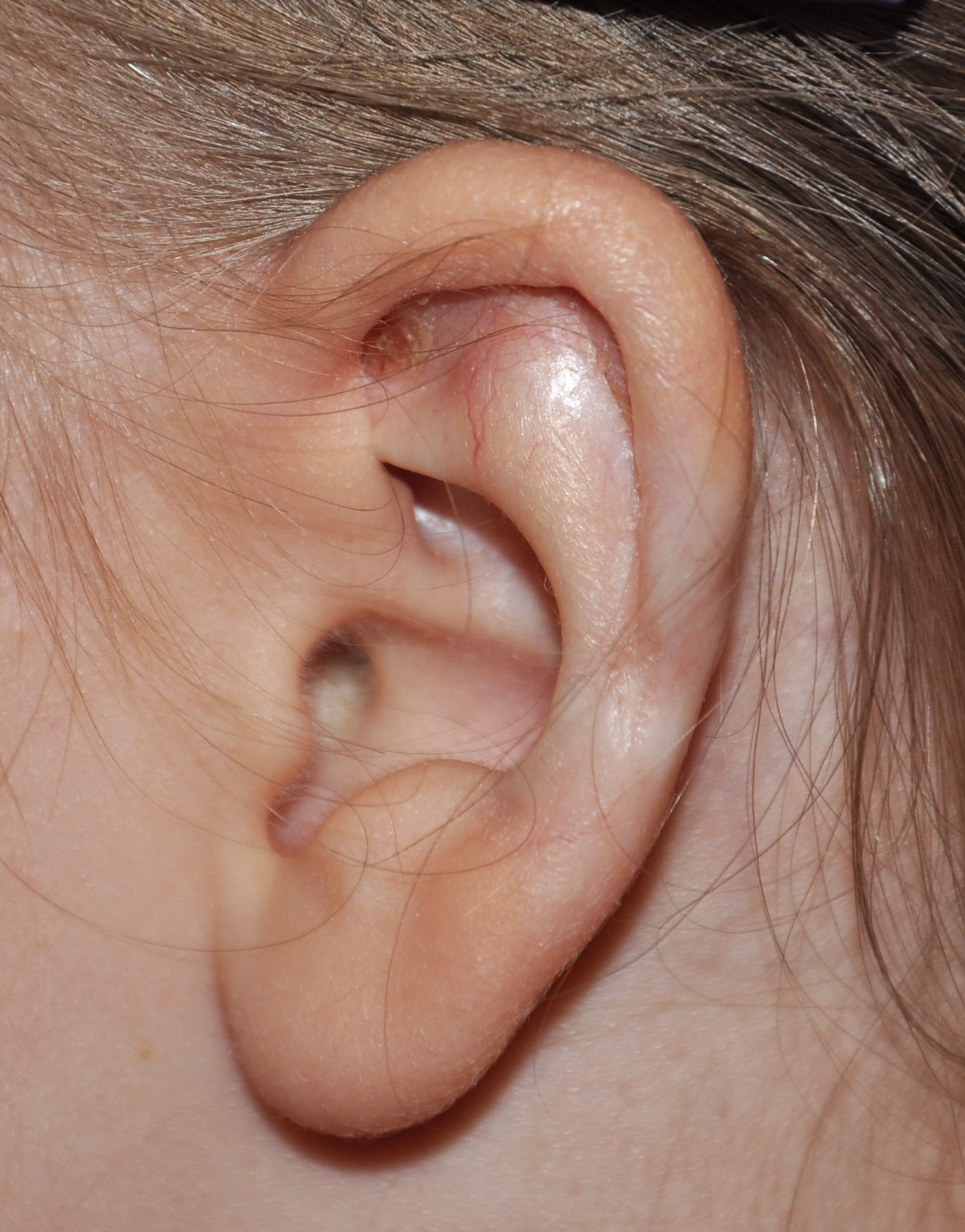
Spock ear deformity.
Correction of Spock ear deformity through postauricular cartilage rearrangement.


Spock ear deformity.
Correction of Spock ear deformity through postauricular cartilage rearrangement.
77
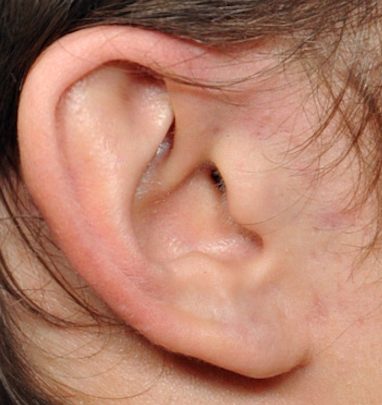
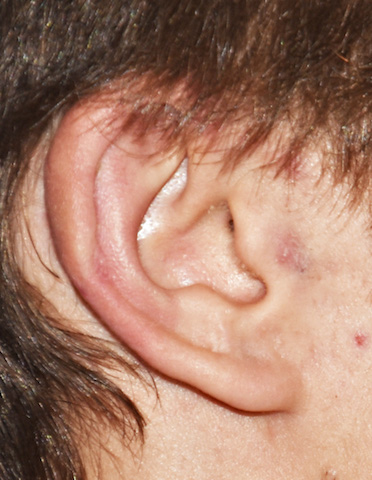
Desire for modest reduction in the size of his ears.
Vertical ear reshaping with scaphal advancement flap.


Desire for modest reduction in the size of his ears.
Vertical ear reshaping with scaphal advancement flap.
78
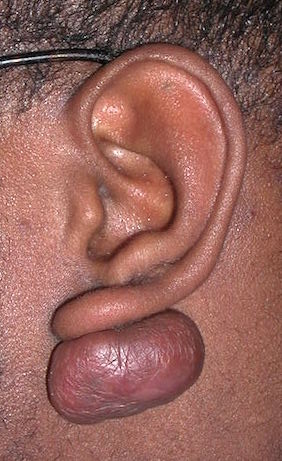
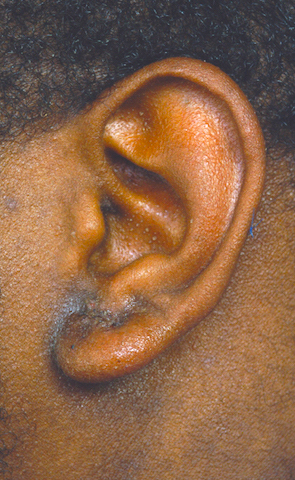
Desire for removal of keloid on back of ear from earlobe piercing.
Ear keloid removal with skin graft on back of earlobe to prevent recurrence.


Desire for removal of keloid on back of ear from earlobe piercing.
Ear keloid removal with skin graft on back of earlobe to prevent recurrence.
Patient 79
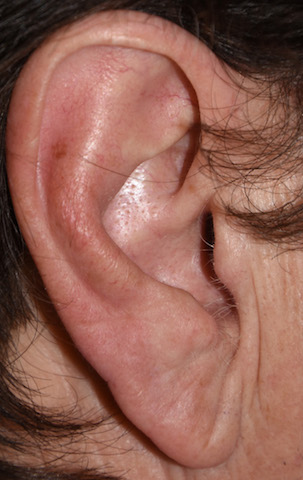
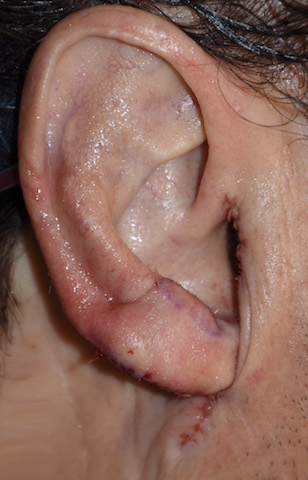
Desire for significant ear reshaping/reduction.
Tragal and antitragal cartilage reductions with vertical earlobe shortening fora significant vertical length reduction of the large ear.


Desire for significant ear reshaping/reduction.
Tragal and antitragal cartilage reductions with vertical earlobe shortening fora significant vertical length reduction of the large ear.
Patient 80
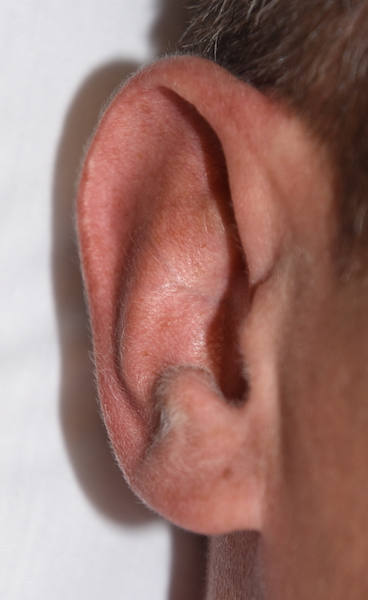
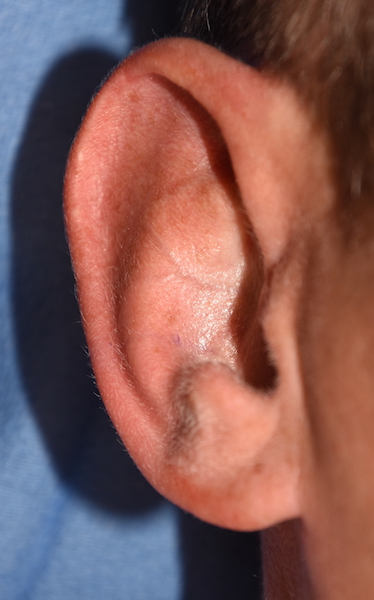
Desire for partial reversal of slightly overdone otoplasty.
Partial reversal otoplasty with placement of tissue back cartilage graft.


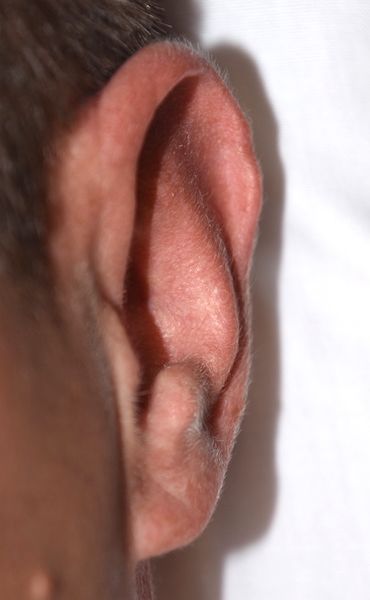
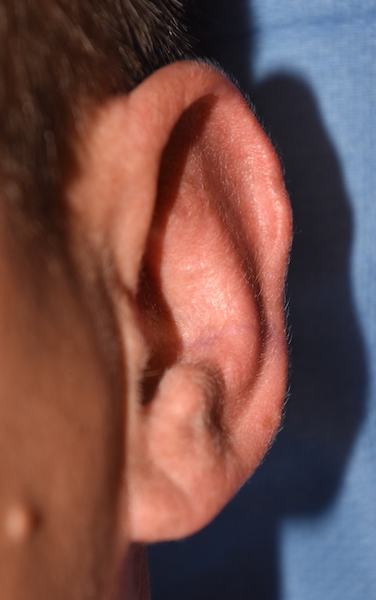
Desire for partial reversal of slightly overdone otoplasty.
Partial reversal otoplasty with placement of tissue back cartilage graft.
Patient 81
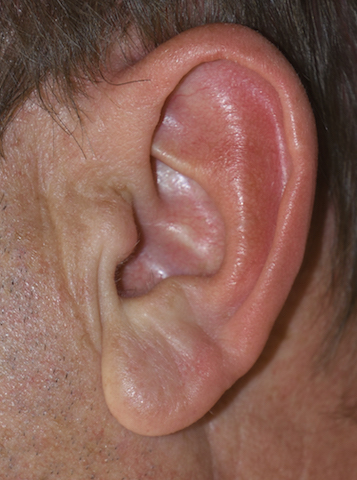
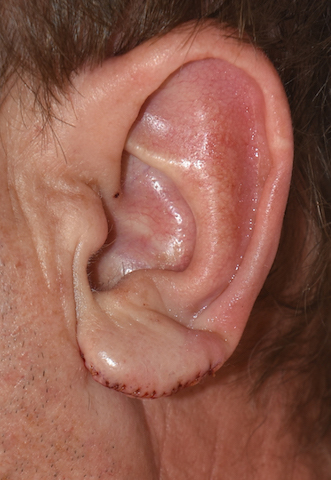
Middle aged male desiring reduced earlobe length for a rejuvenate effect.
Inferior helical rim earlobe reduction technique.


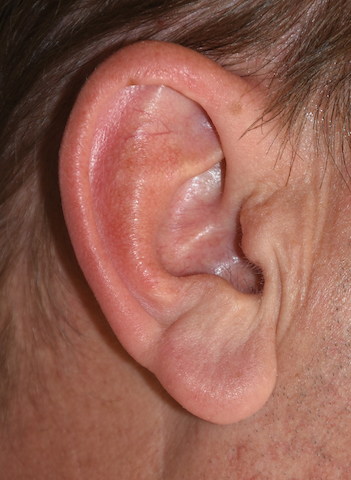
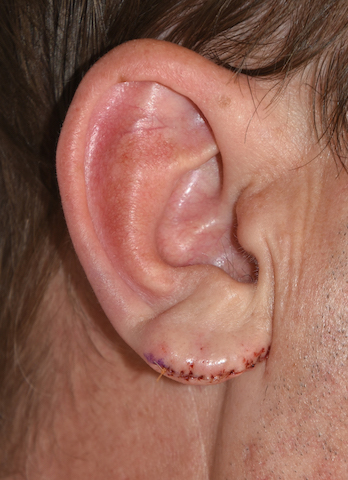
Middle aged male desiring reduced earlobe length for a rejuvenate effect.
Inferior helical rim earlobe reduction technique.
Patient 82
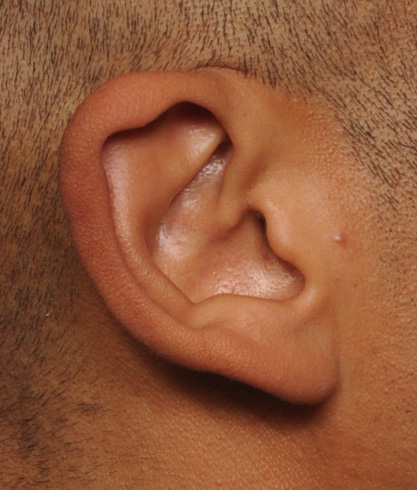
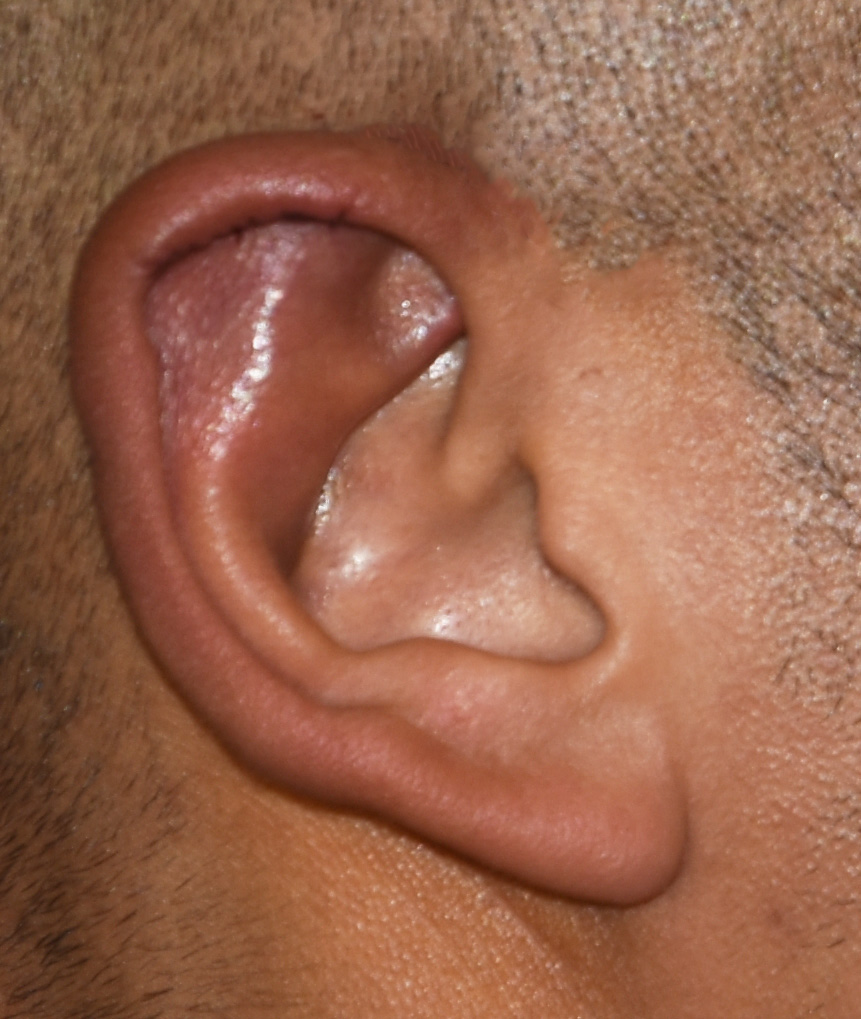
Desire for removal of helical lidding as part of his otoplasty procedure.
Direct excision of excessive cartilage and skin for helical lidding correction.


Desire for removal of helical lidding as part of his otoplasty procedure.
Direct excision of excessive cartilage and skin for helical lidding correction.
Patient 83
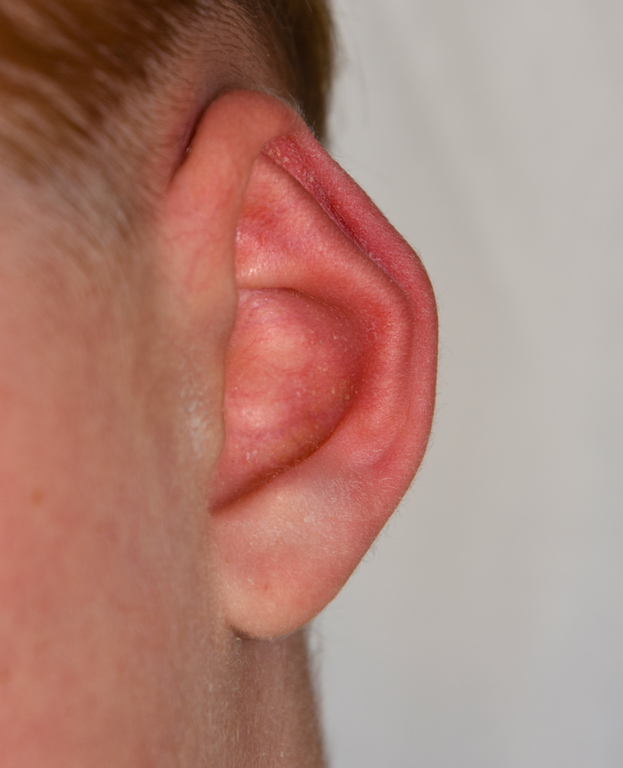
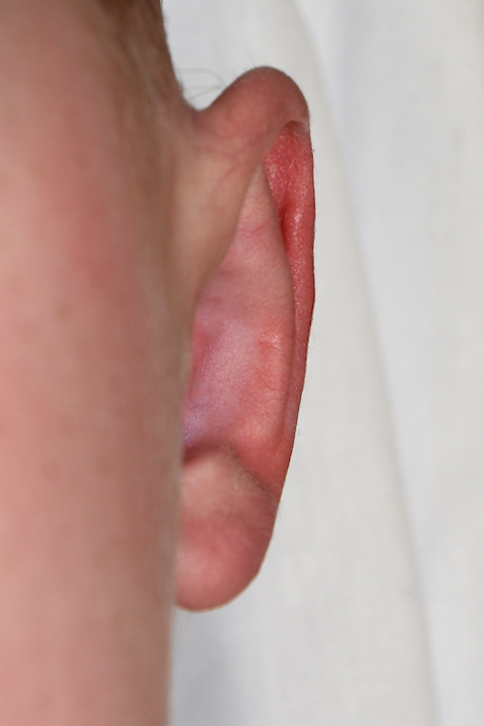
Desire for secondary otoplasty correction in which the top of the ear was pulled back too far and the middle third still stick out.
Secondary otoplasty correction with upper third reversal and middle third setback.


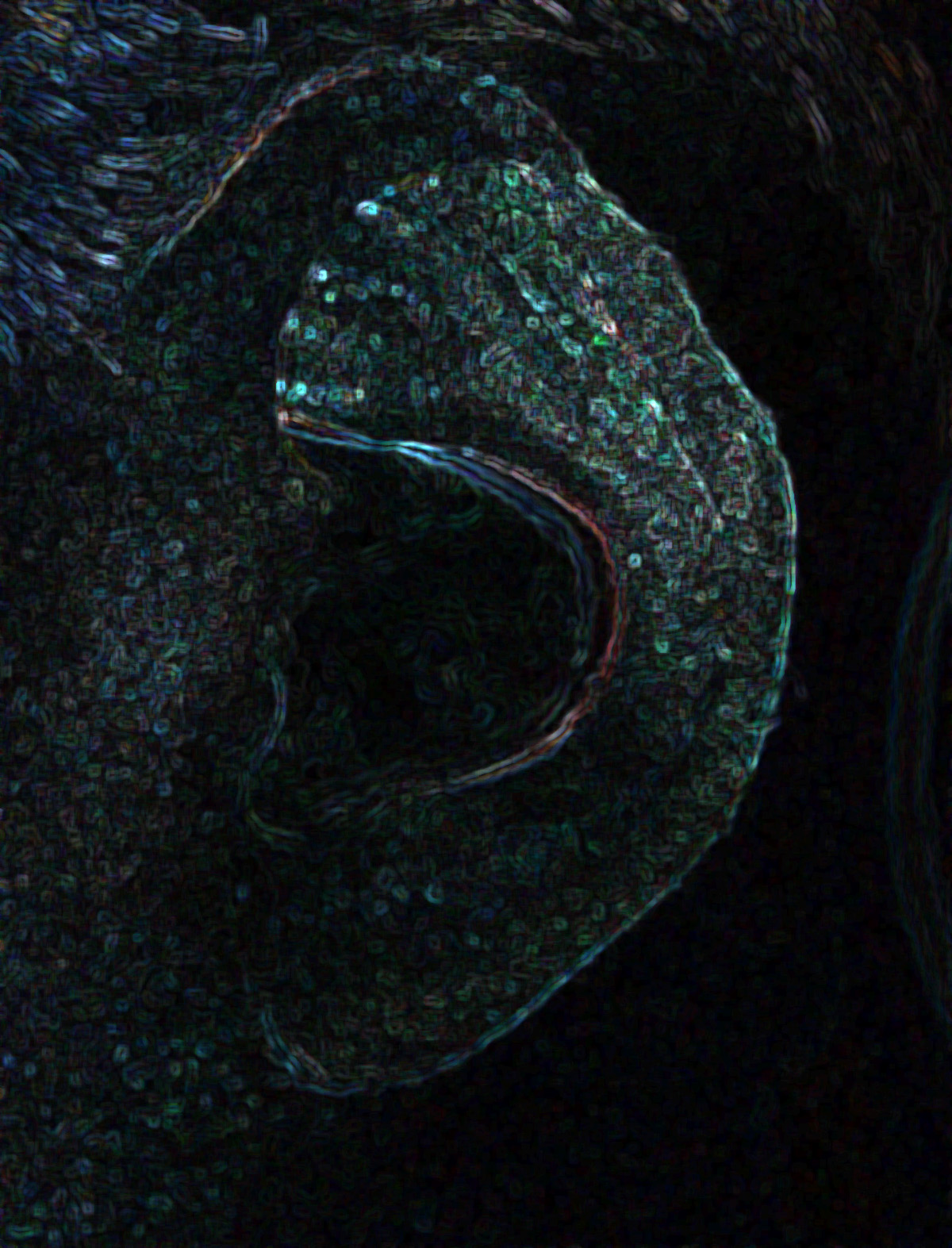
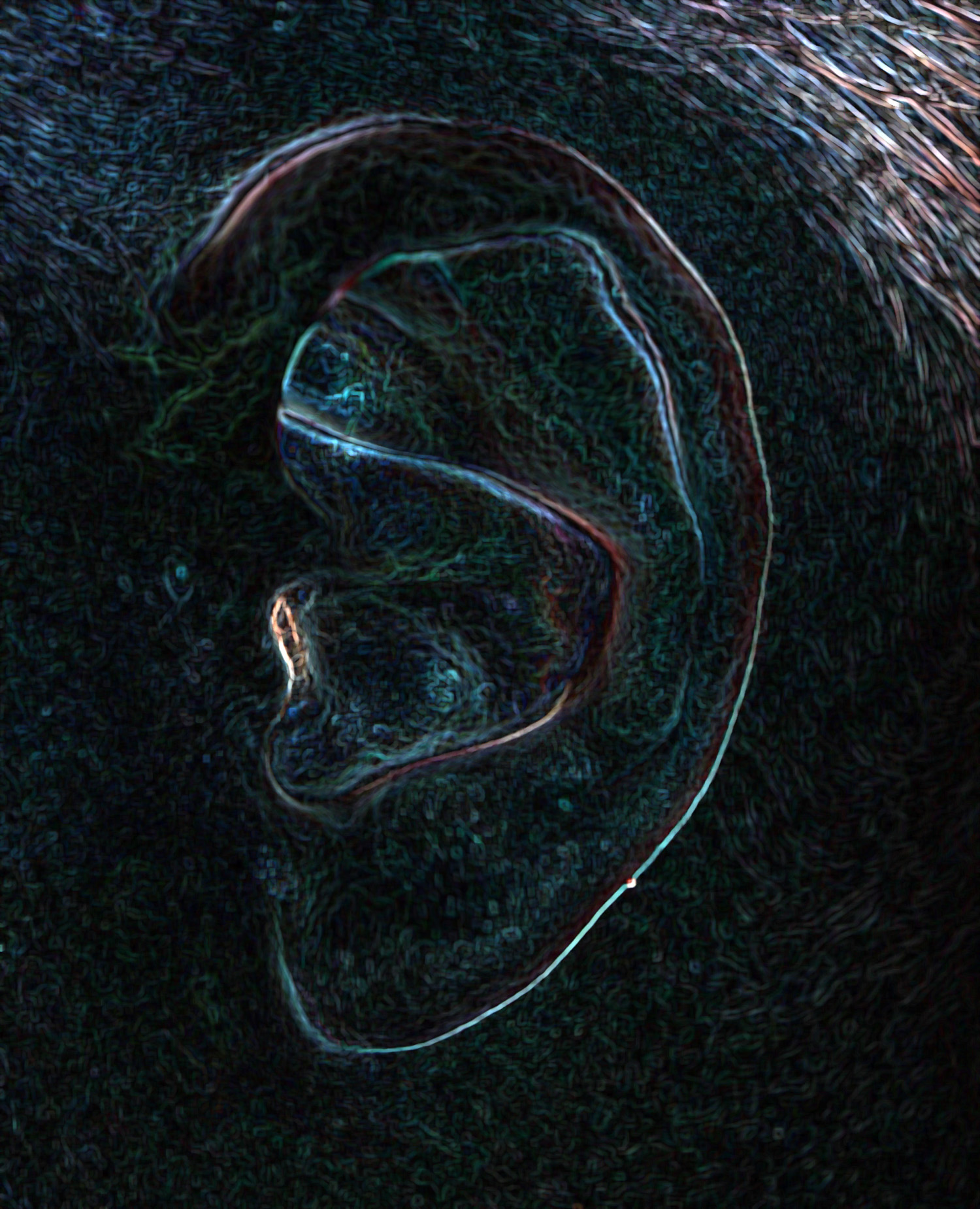
Desire for secondary otoplasty correction in which the top of the ear was pulled back too far and the middle third still stick out.
Secondary otoplasty correction with upper third reversal and middle third setback.
Patient 84
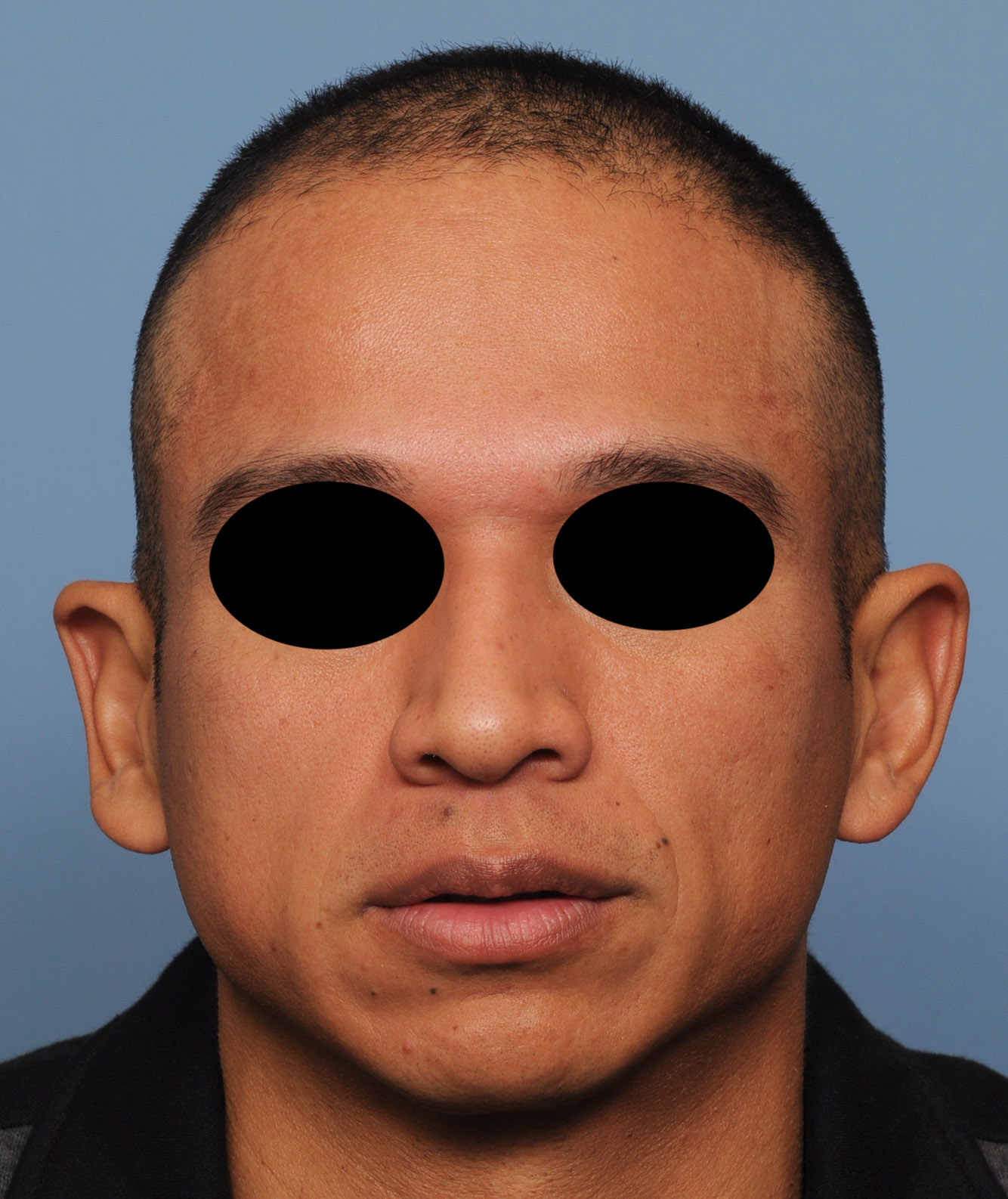
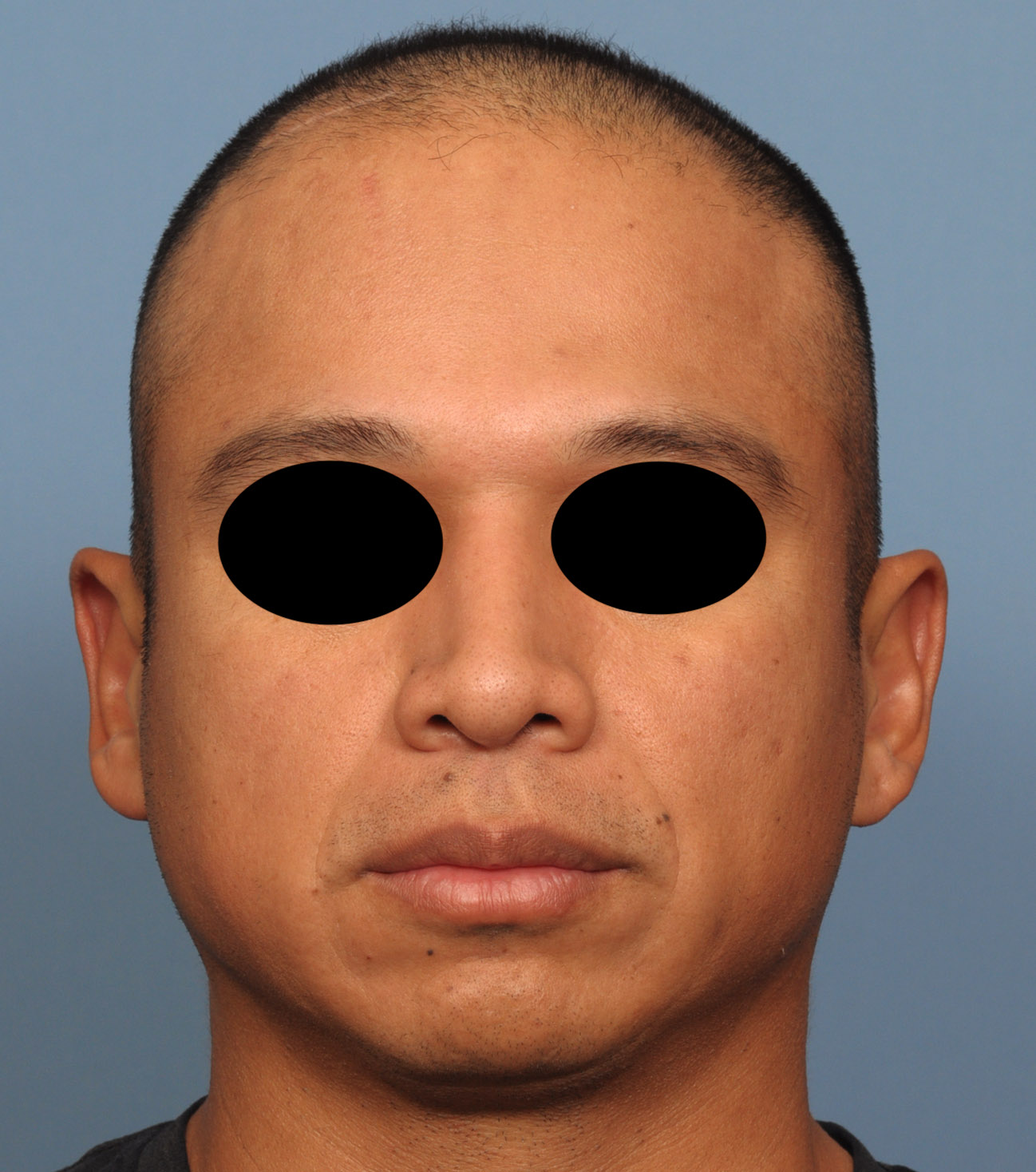
Desire for correction of protruding ears which was greater on one side due to plagiocephaly.
Setback otoplasties and correction of right ear asymmetry through cartilage reshaping done from incisions on the back of the ears.


Desire for correction of protruding ears which was greater on one side due to plagiocephaly.
Setback otoplasties and correction of right ear asymmetry through cartilage reshaping done from incisions on the back of the ears.
Patient 85
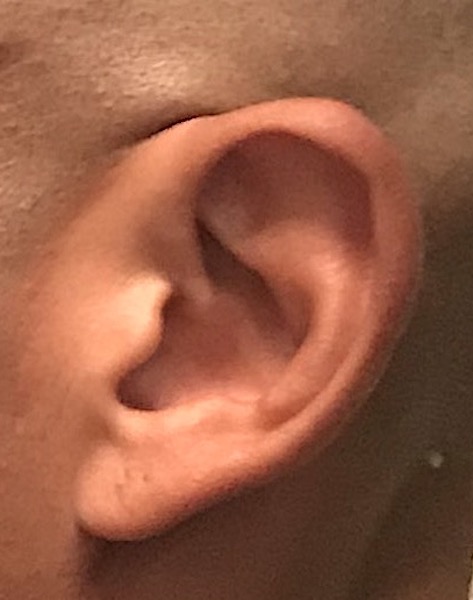
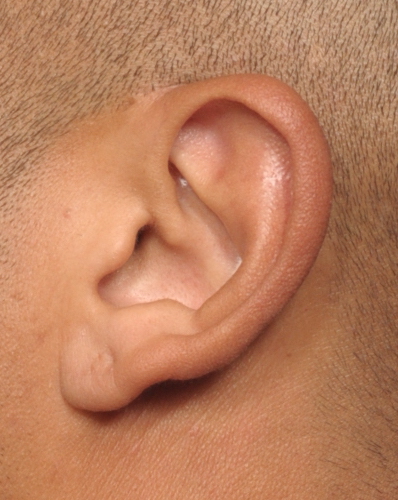
Desire to remove fold of scalp skin that hung down on top of the ears.
Superior excision of scalp skin fold above the ear with the scar tucked into the postauricular skin crease.


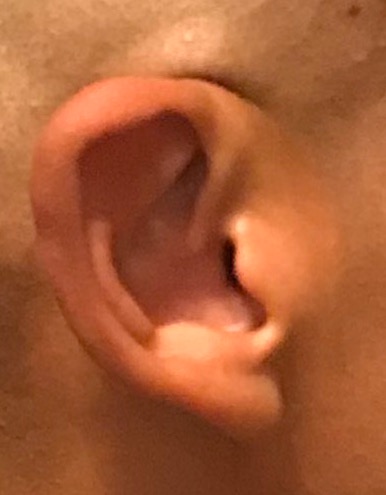
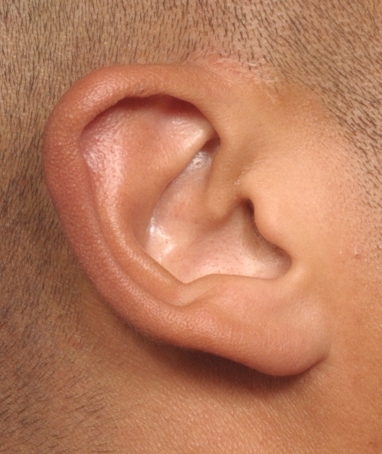
Desire to remove fold of scalp skin that hung down on top of the ears.
Superior excision of scalp skin fold above the ear with the scar tucked into the postauricular skin crease.
Patient 86
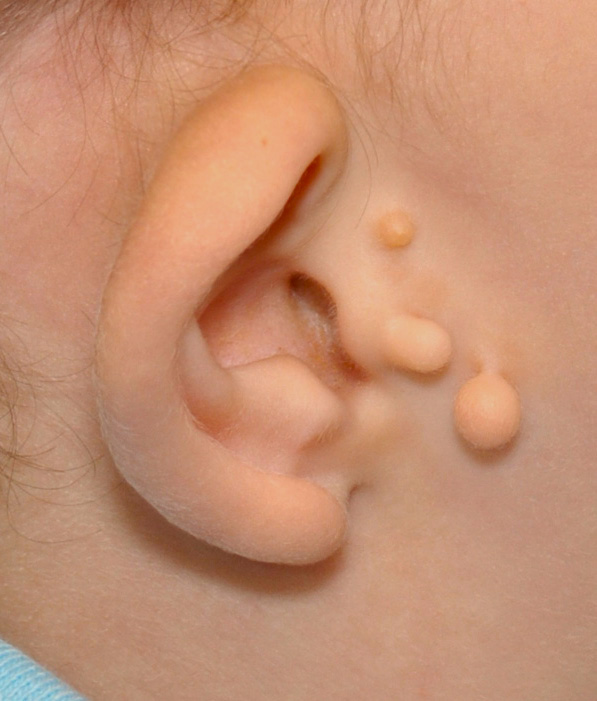
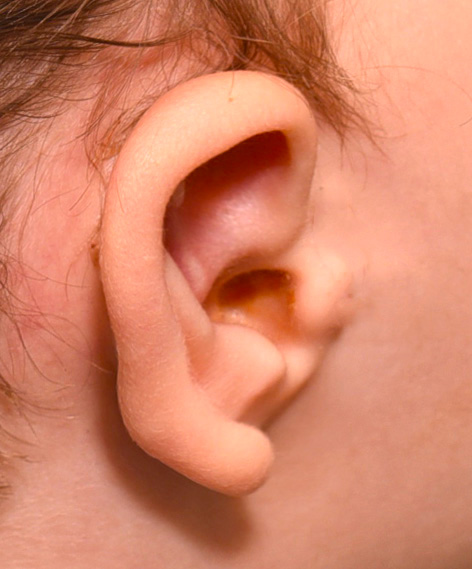
Congenital cupped ear deformities with associated preauricular tags.
Bilateral ear reconstruction with excision of preauricular tags.



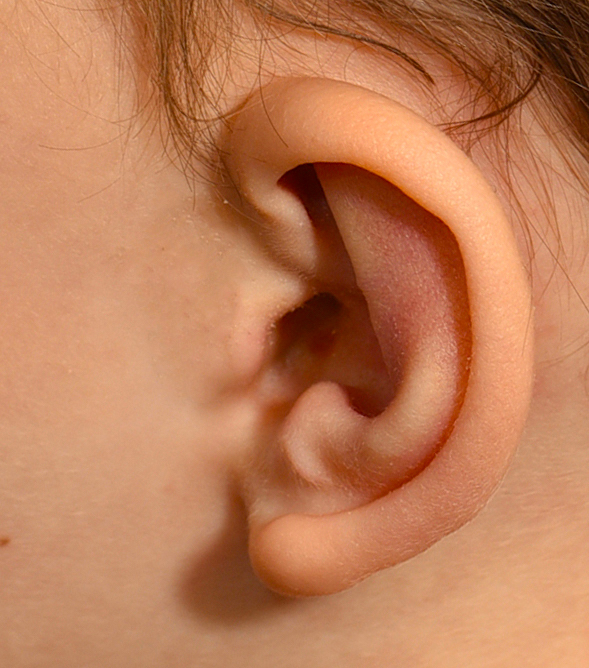
Congenital cupped ear deformities with associated preauricular tags.
Bilateral ear reconstruction with excision of preauricular tags.
Patient 87
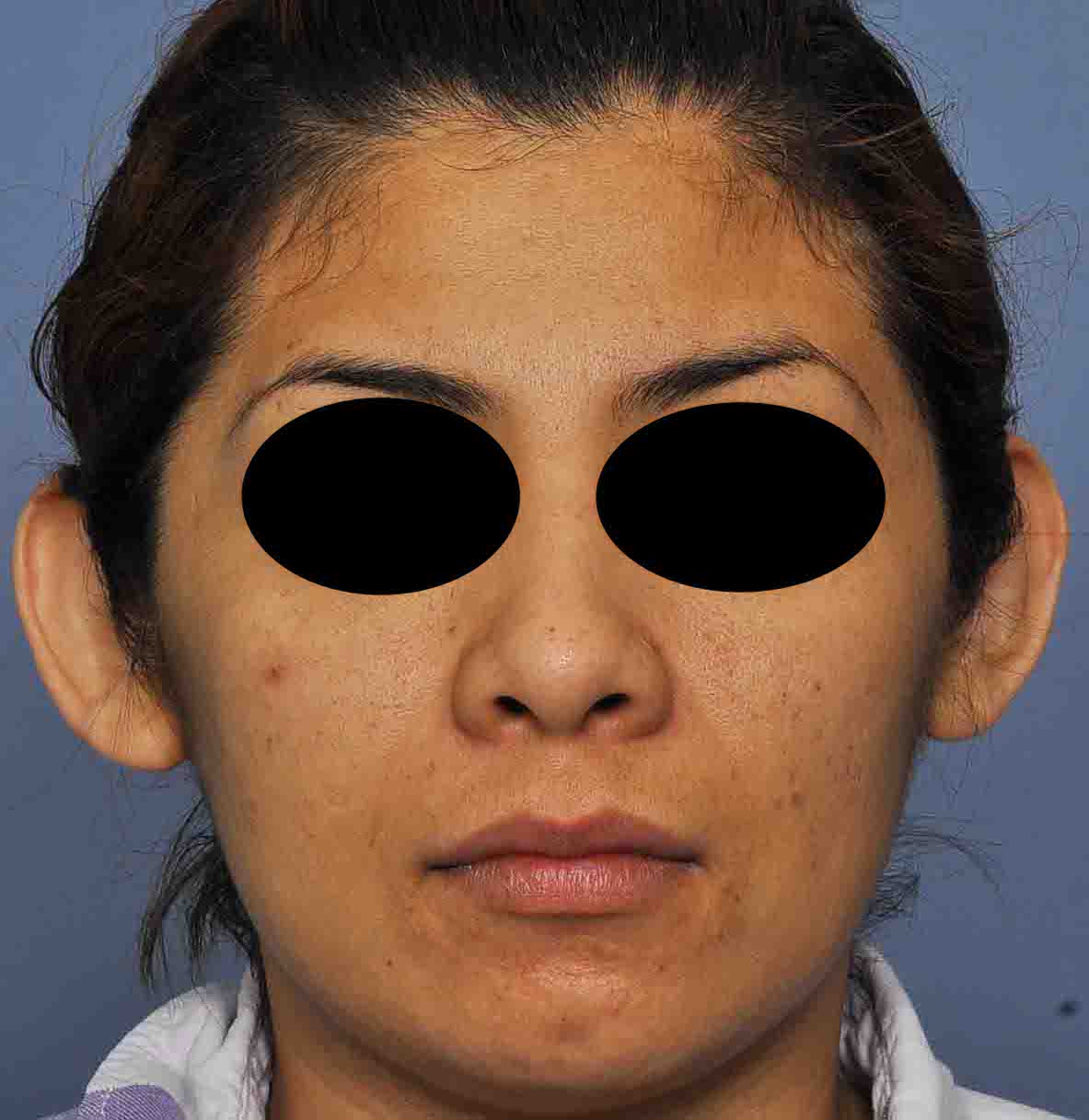
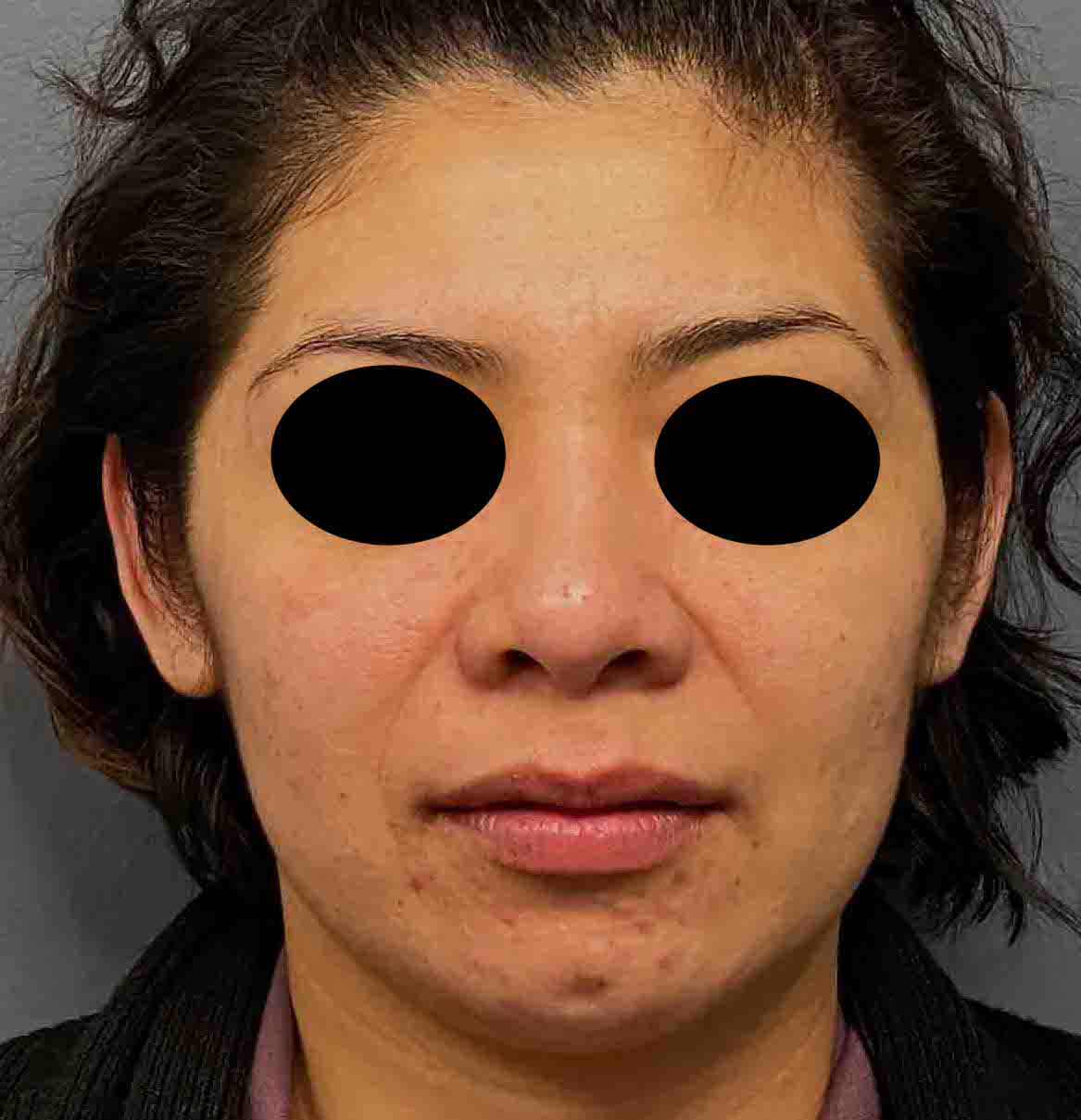
Desire to have ears not stick out so far.
Setback otoplasty through a postauricular approach with cartilage reshaping.


Desire to have ears not stick out so far.
Setback otoplasty through a postauricular approach with cartilage reshaping.
Patient 88
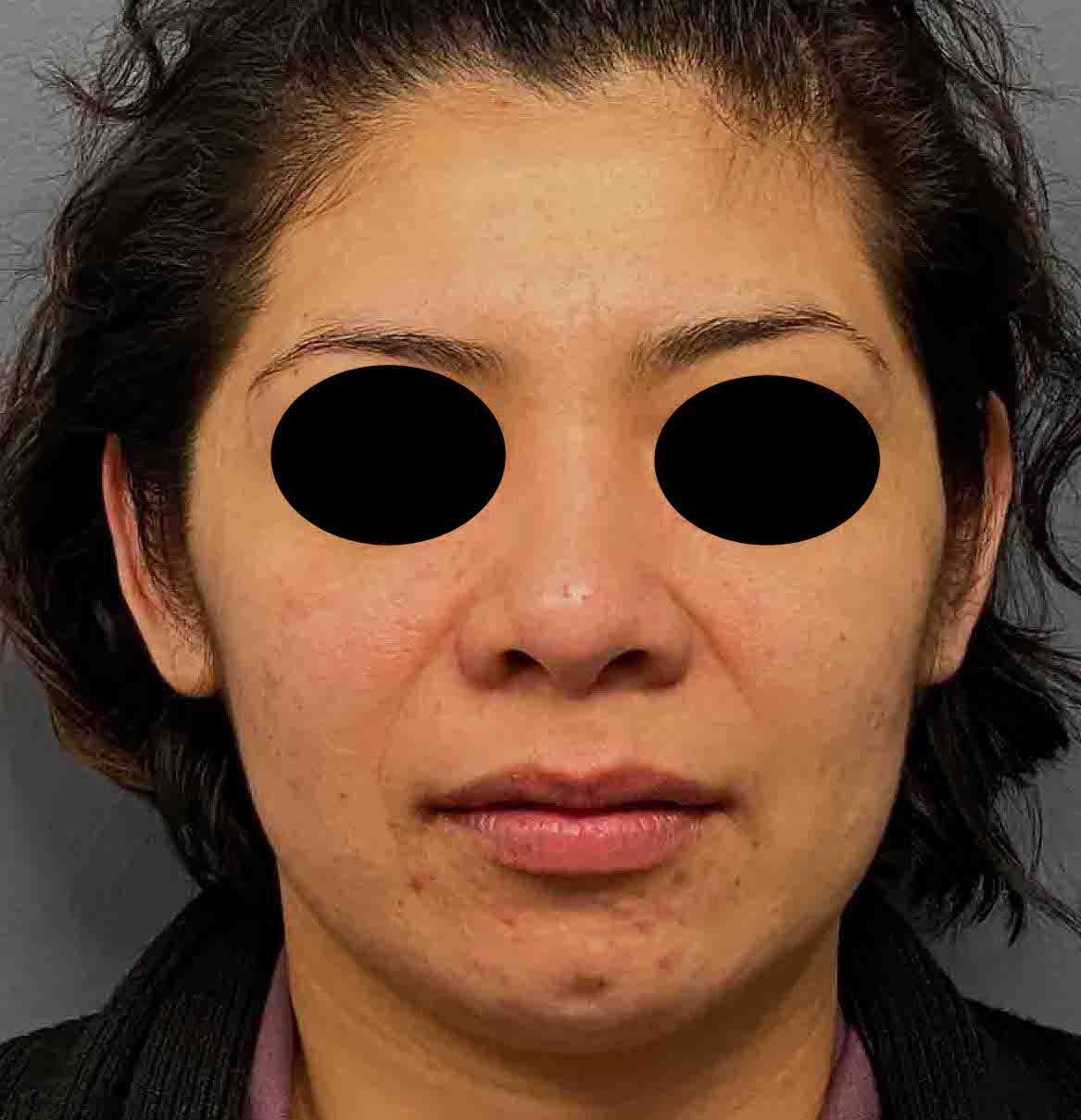
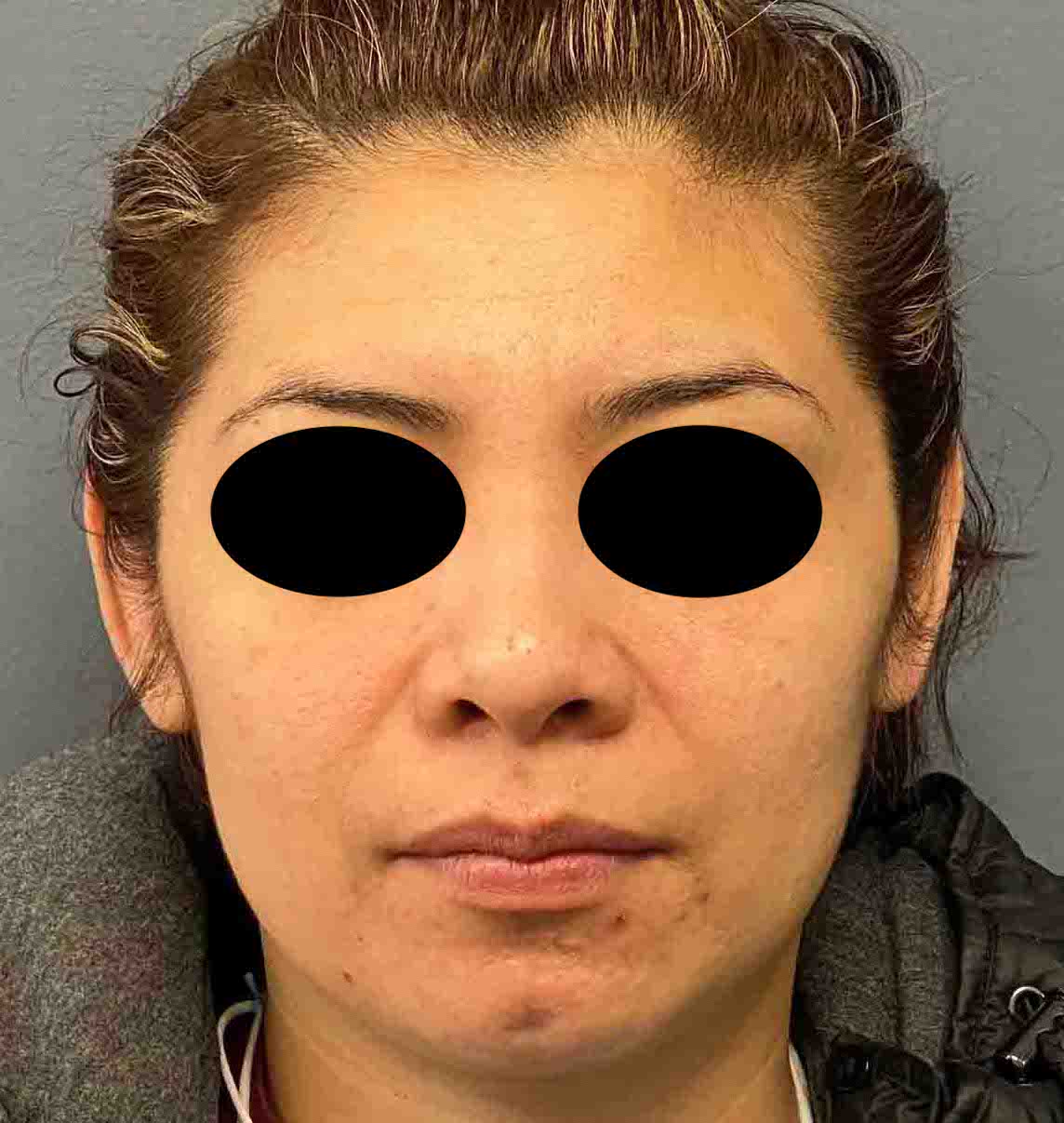
After her first otoplasty setback she returned a year later to request setting the ears back just a bit further.
Underwent a secondary setback otoplasty.


After her first otoplasty setback she returned a year later to request setting the ears back just a bit further.
Underwent a secondary setback otoplasty.
Patient 89
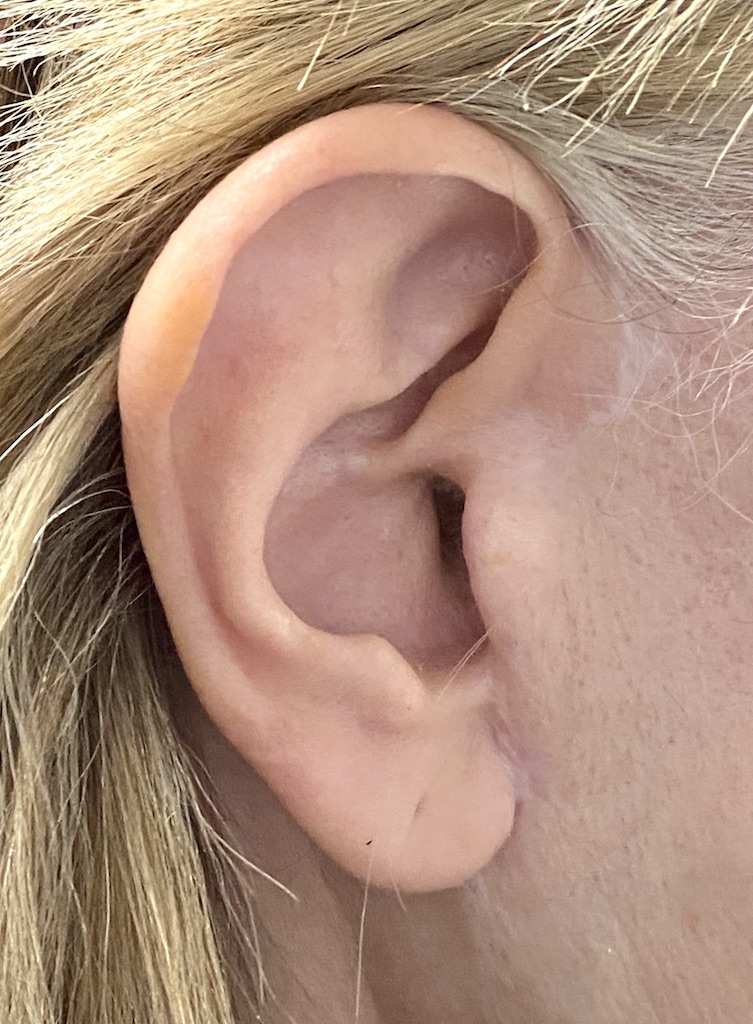
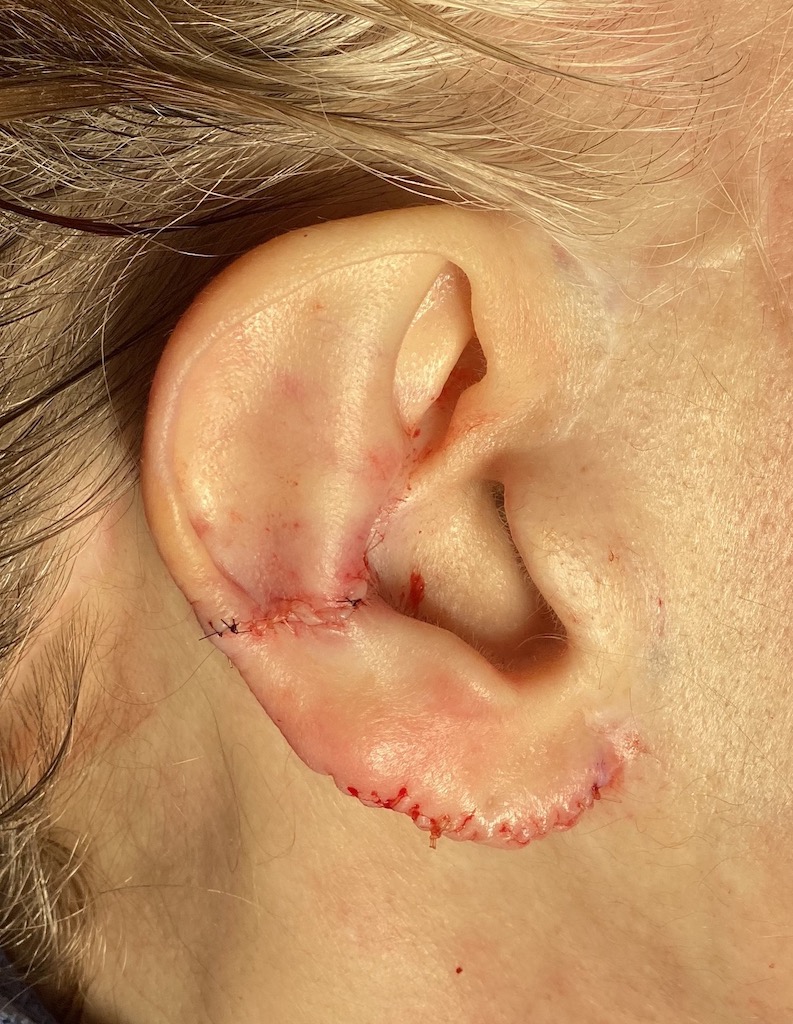
Lifelong desire for smaller ears.
Central wedge resection technique for macrotia reduction combined with an upper setback otoplasty and an inferior helical rim earlobe reduction technique.


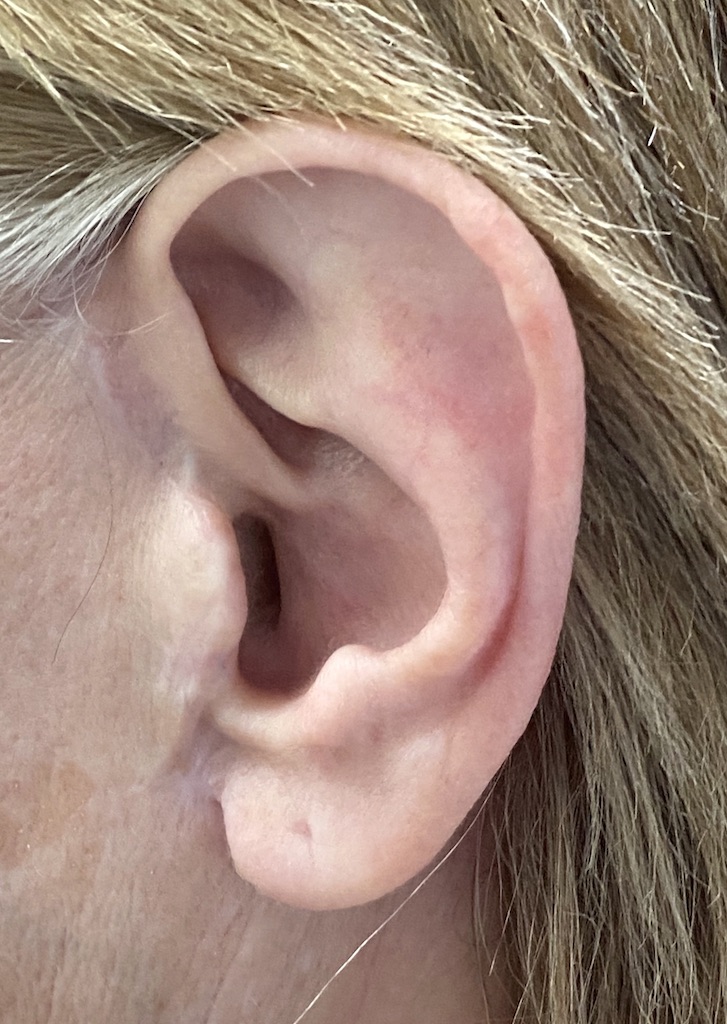
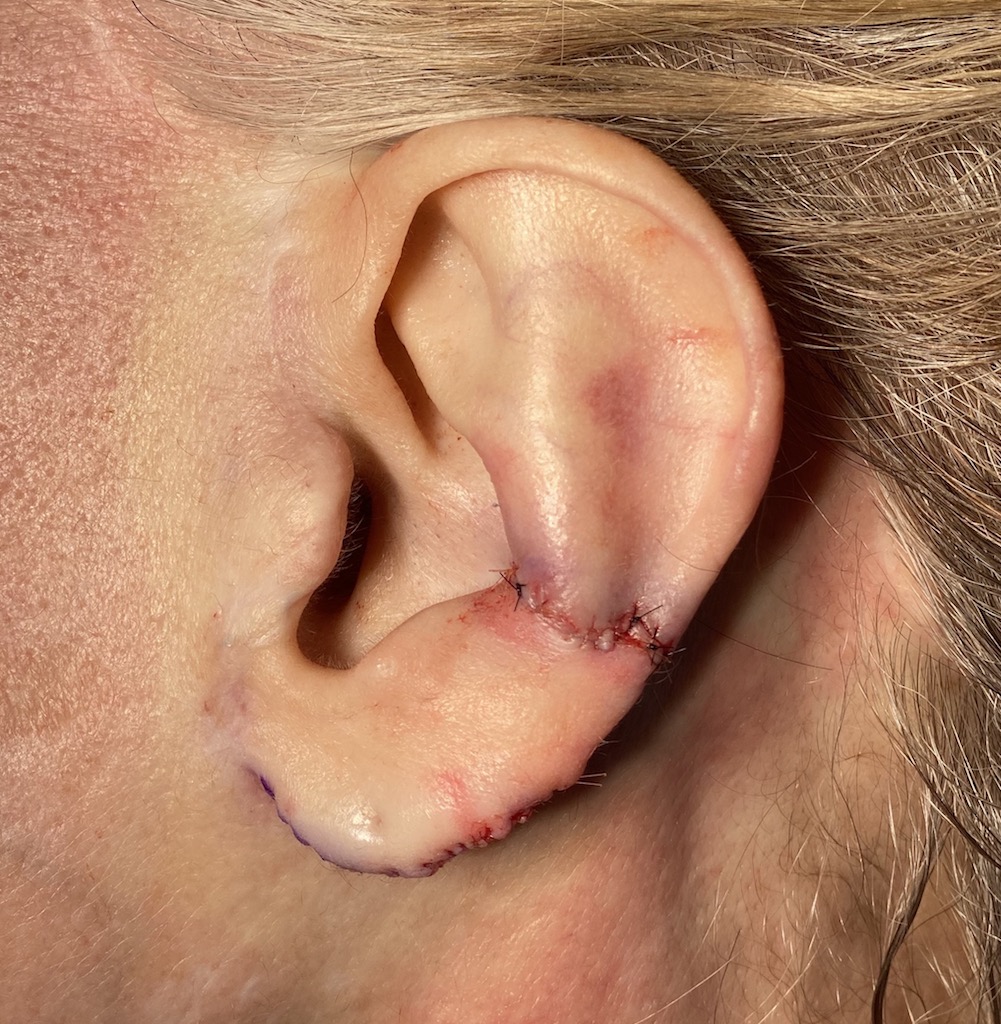
Lifelong desire for smaller ears.
Central wedge resection technique for macrotia reduction combined with an upper setback otoplasty and an inferior helical rim earlobe reduction technique.
Patient 90
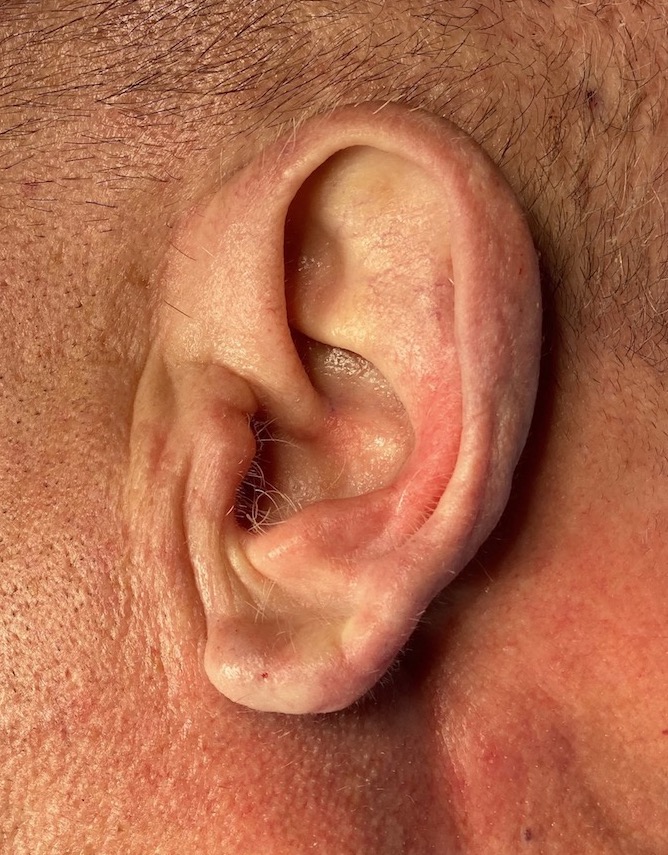

Older male seeking an improved shape of his ears.
Ear reshaping by an upper setback otoplasty and a vertical earlobe reduction.


Older male seeking an improved shape of his ears.
Ear reshaping by an upper setback otoplasty and a vertical earlobe reduction.
Patient 91
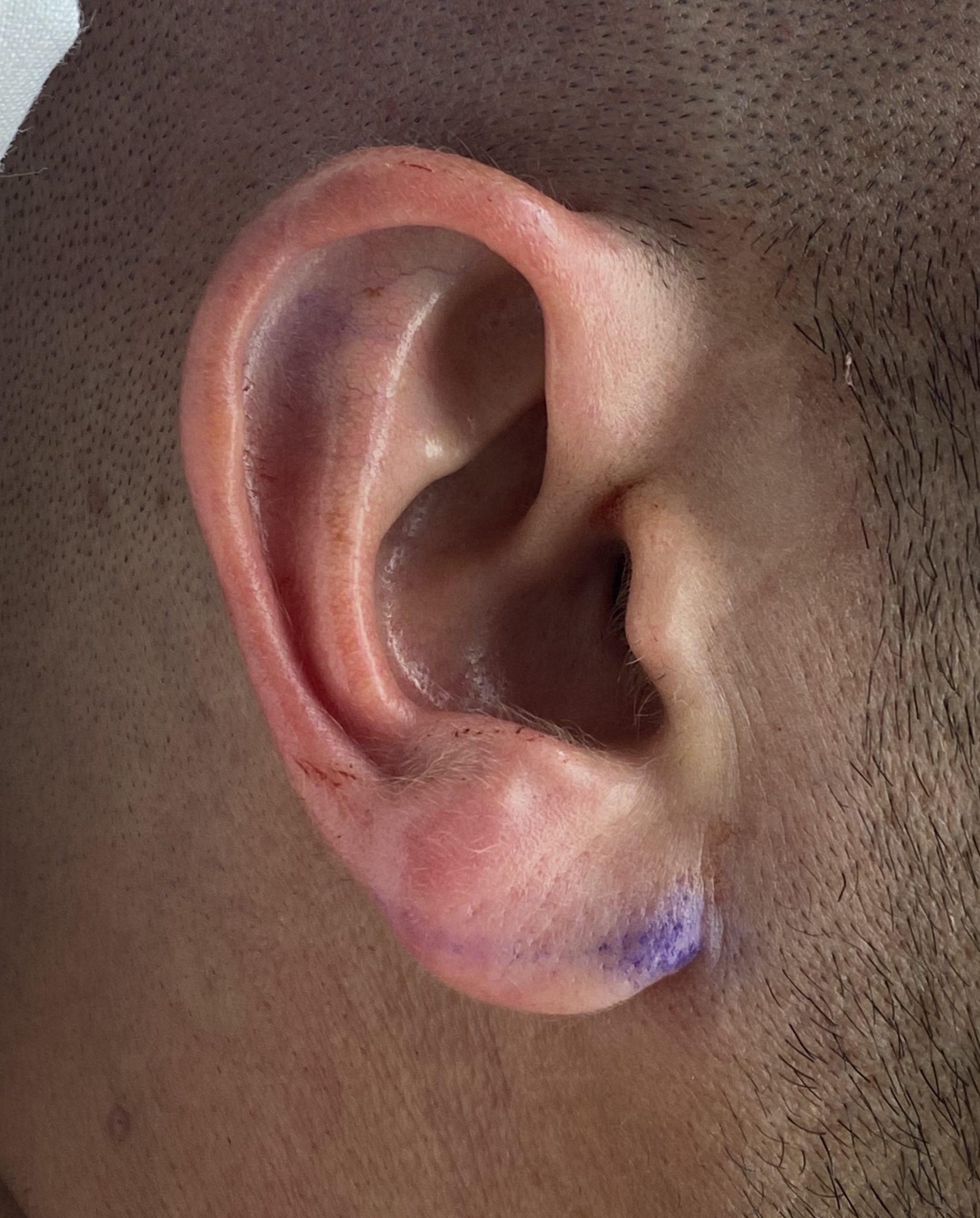
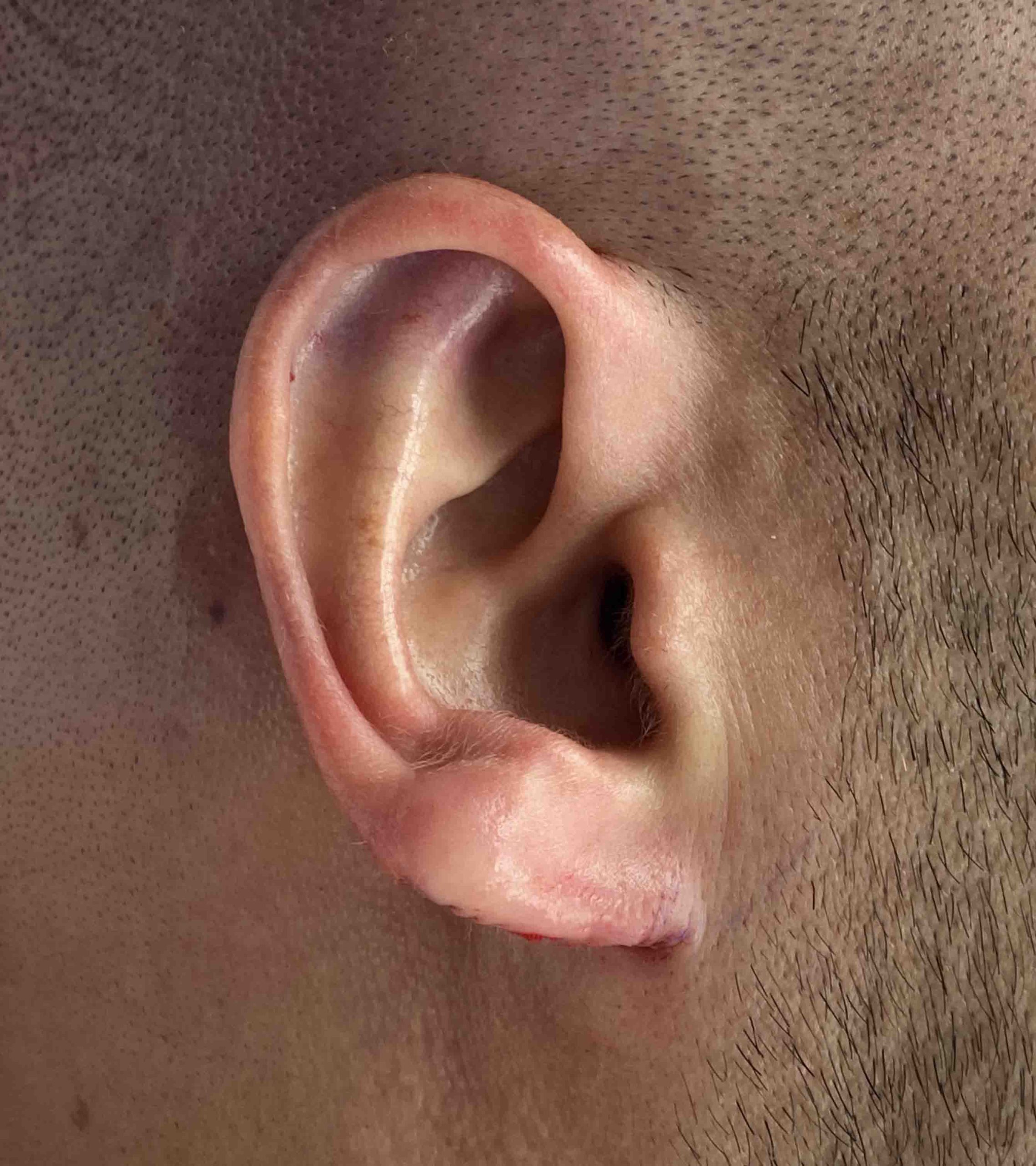
Desire for minor changes in ear shape with a setback of the upper helical rim and reduction in the length of the earlobes.
Two suture upper ear setback otoplasty with 5mm inferior lobe reductions.


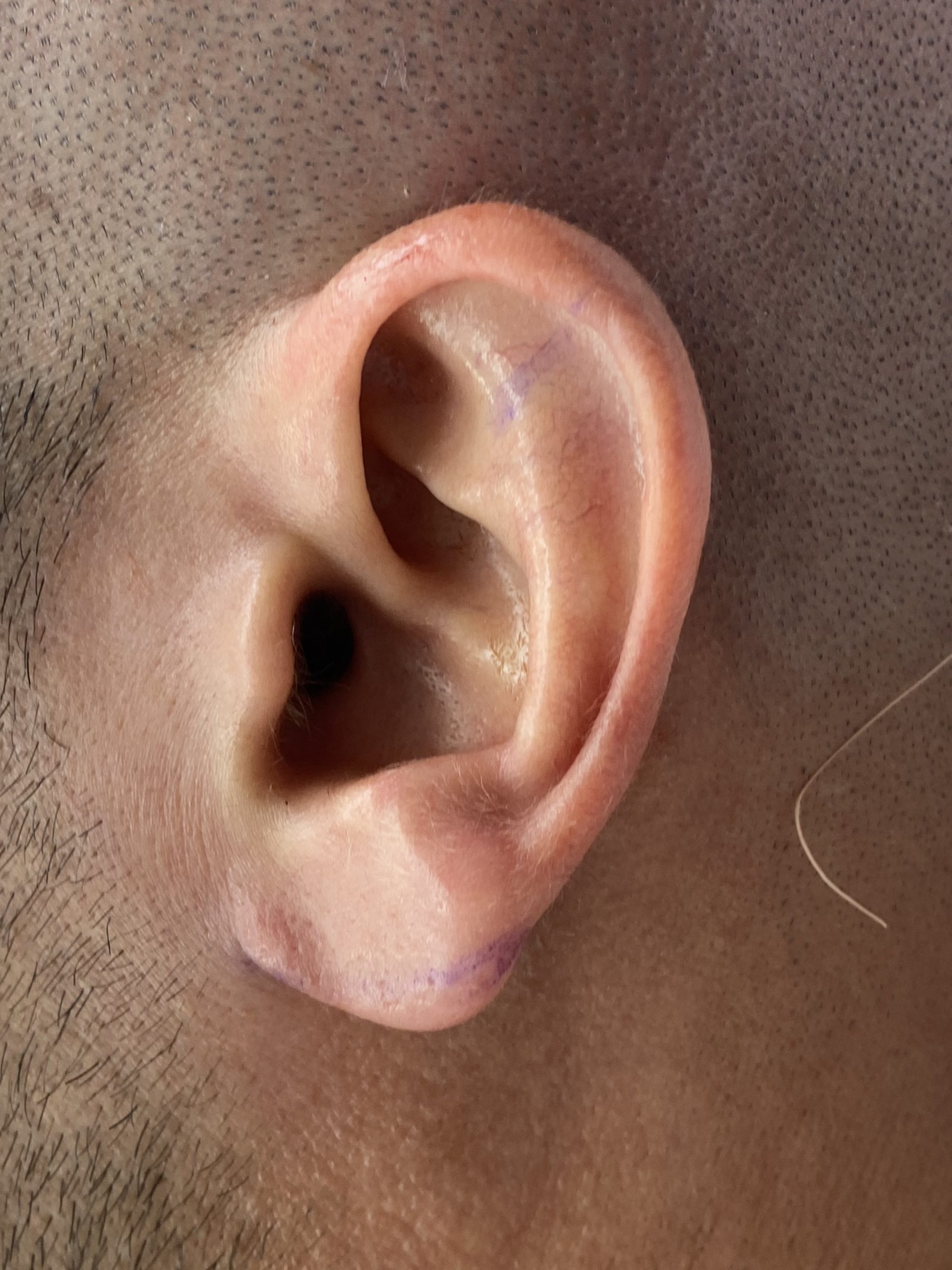
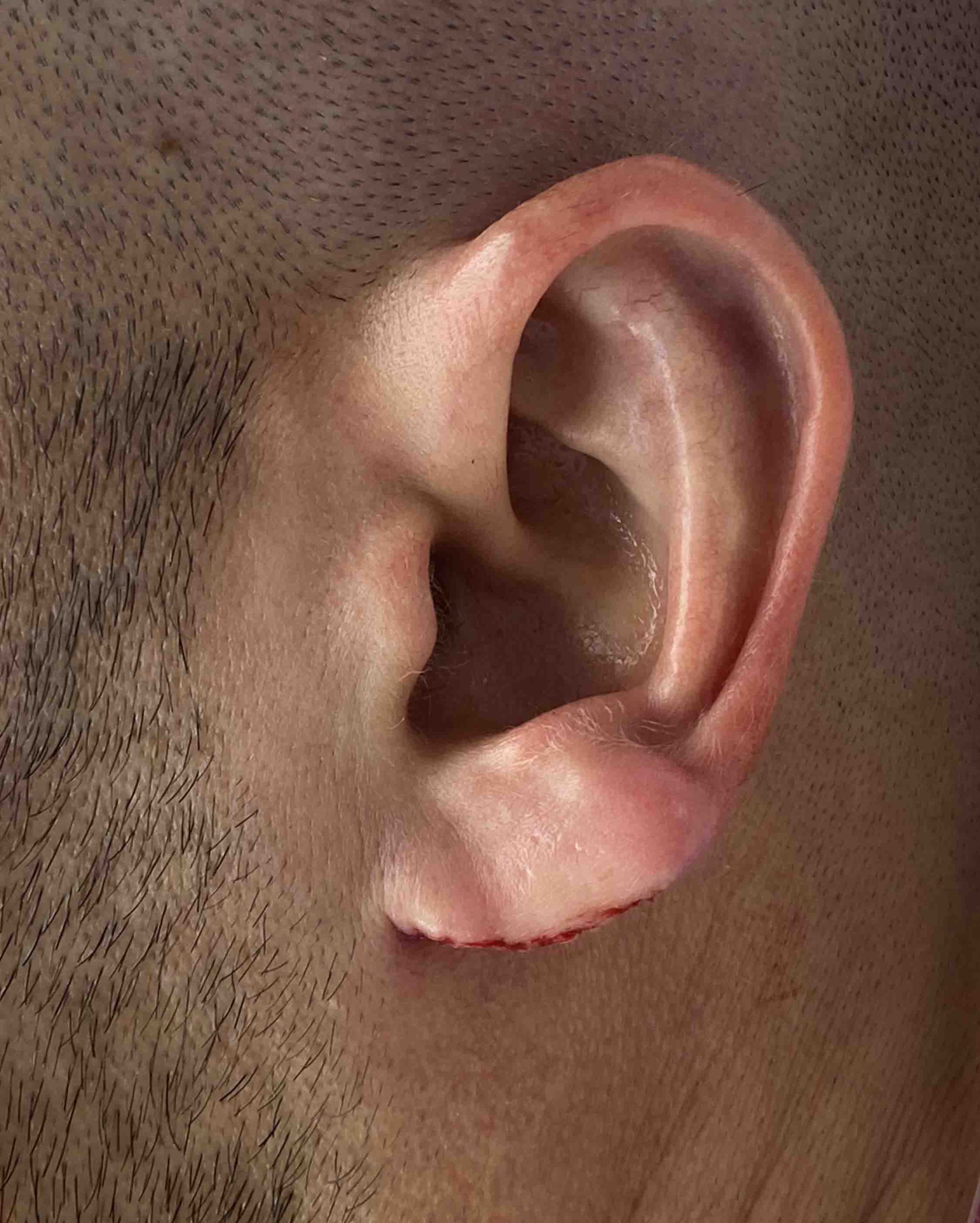
Desire for minor changes in ear shape with a setback of the upper helical rim and reduction in the length of the earlobes.
Two suture upper ear setback otoplasty with 5mm inferior lobe reductions.
Patient 92
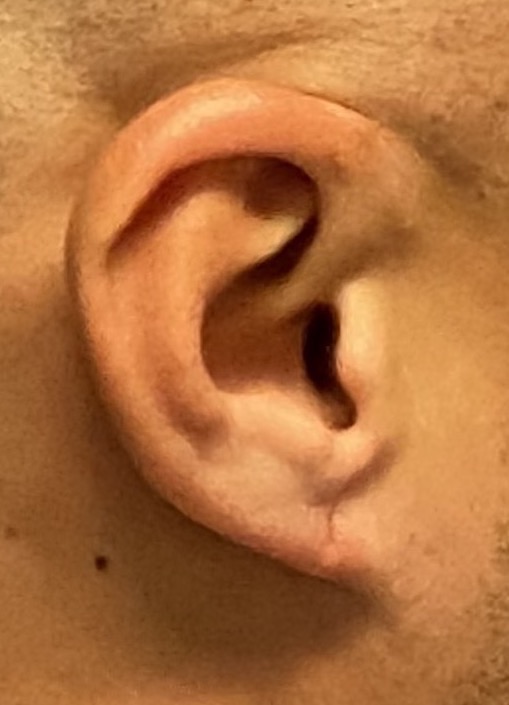
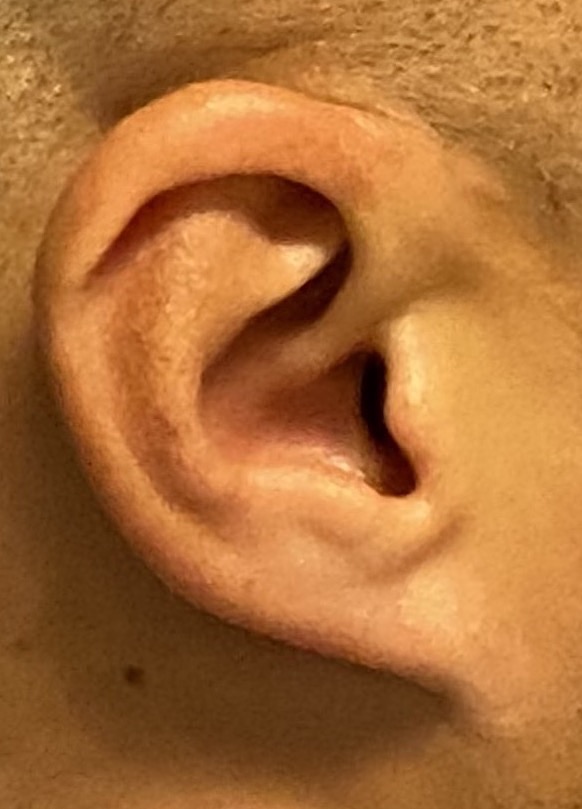
Desire for correction of right earlobe piecing and longer left earlobe.
Right earlobe piercing excision and left inferior heiical rim lobe reduction.


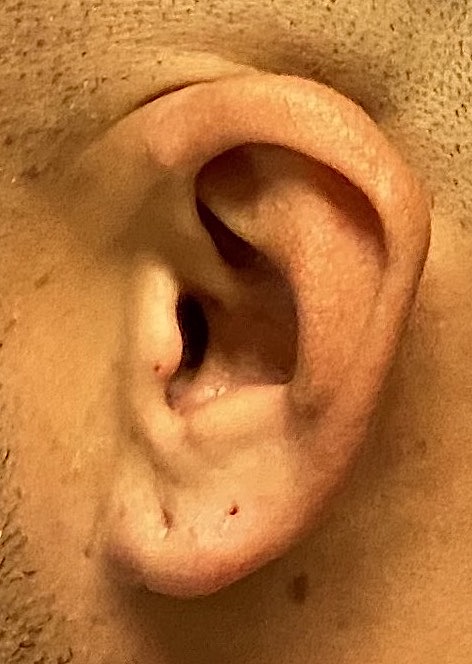
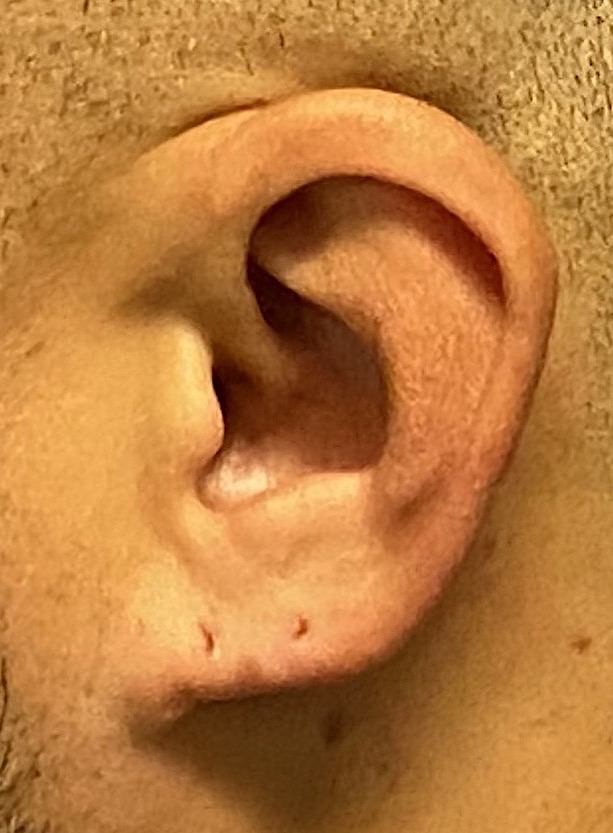
Desire for correction of right earlobe piecing and longer left earlobe.
Right earlobe piercing excision and left inferior heiical rim lobe reduction.
Patient 93
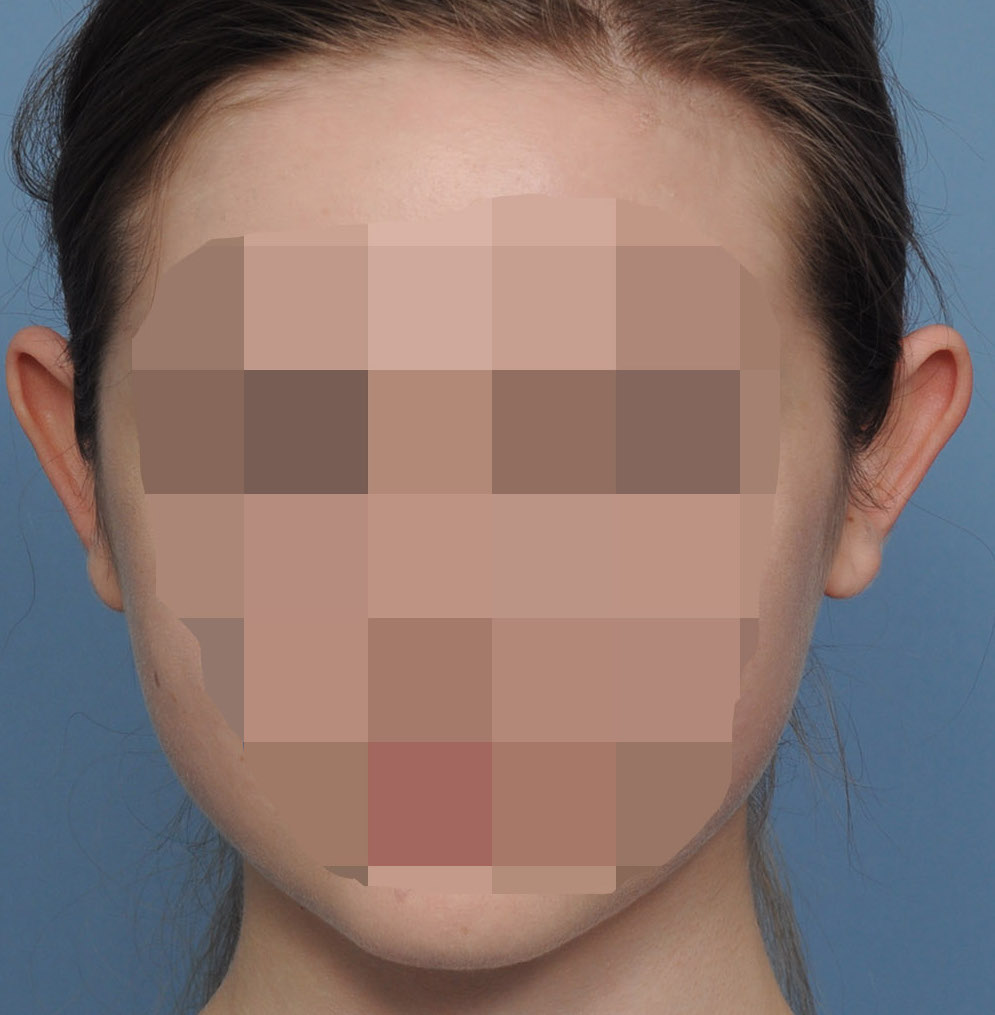
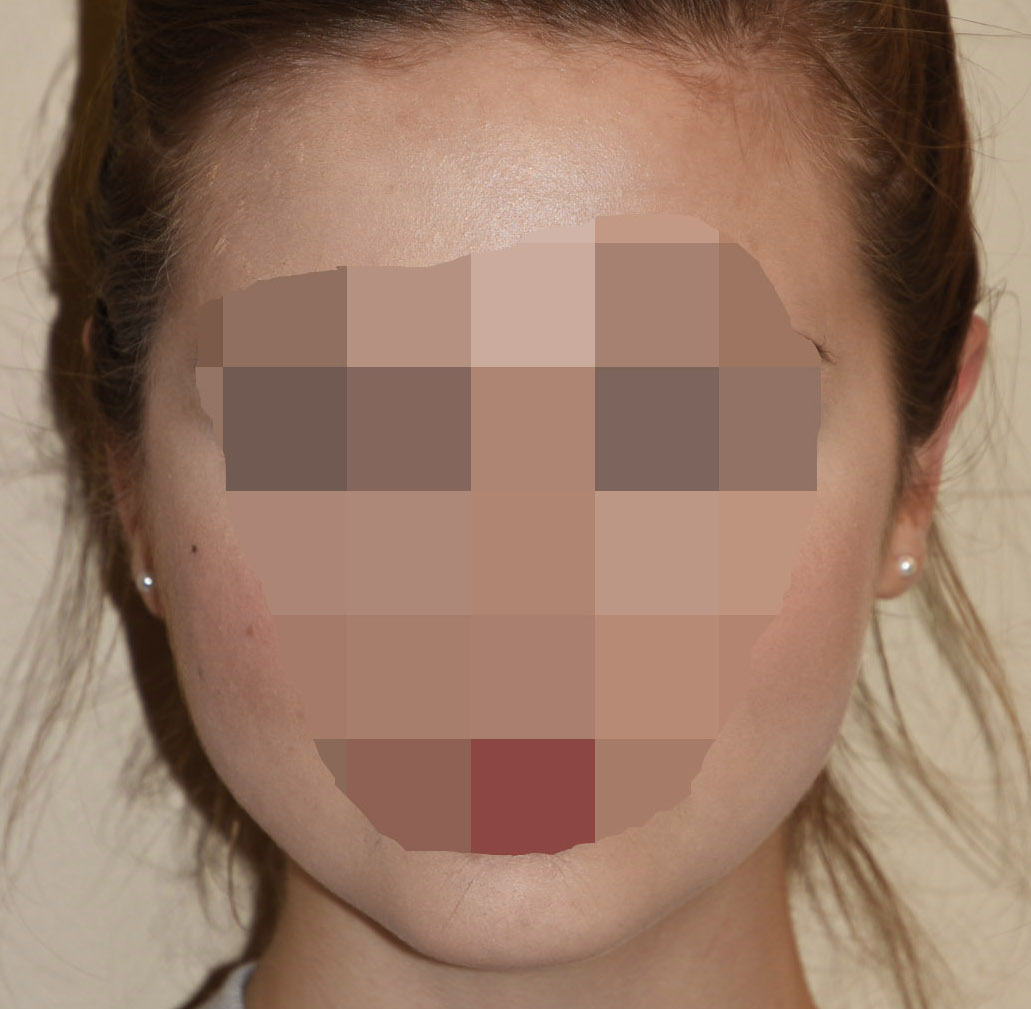
Desire for correction of protruding ears.
Setback otoplasty procedure re-creating the anti helical fold.


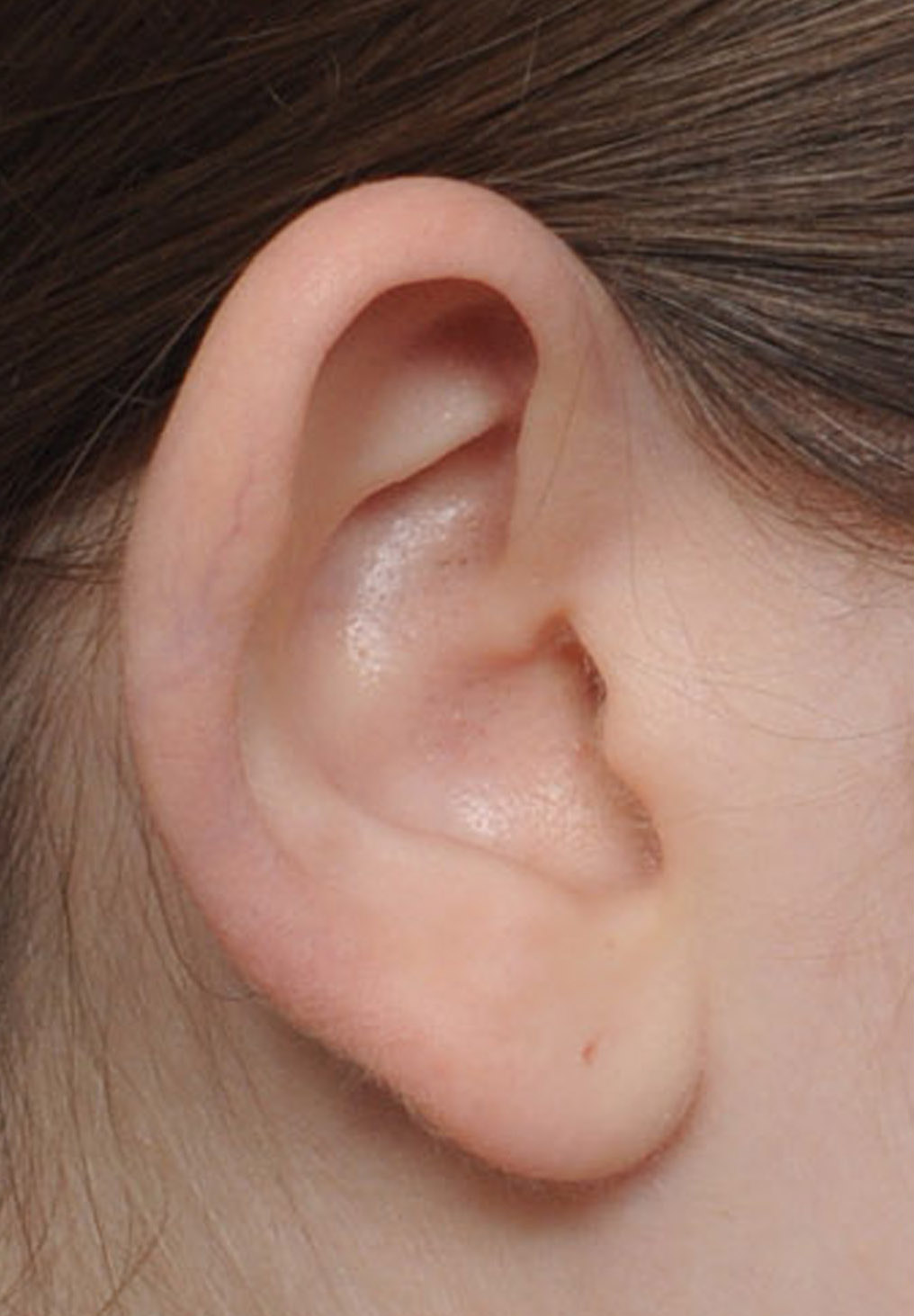
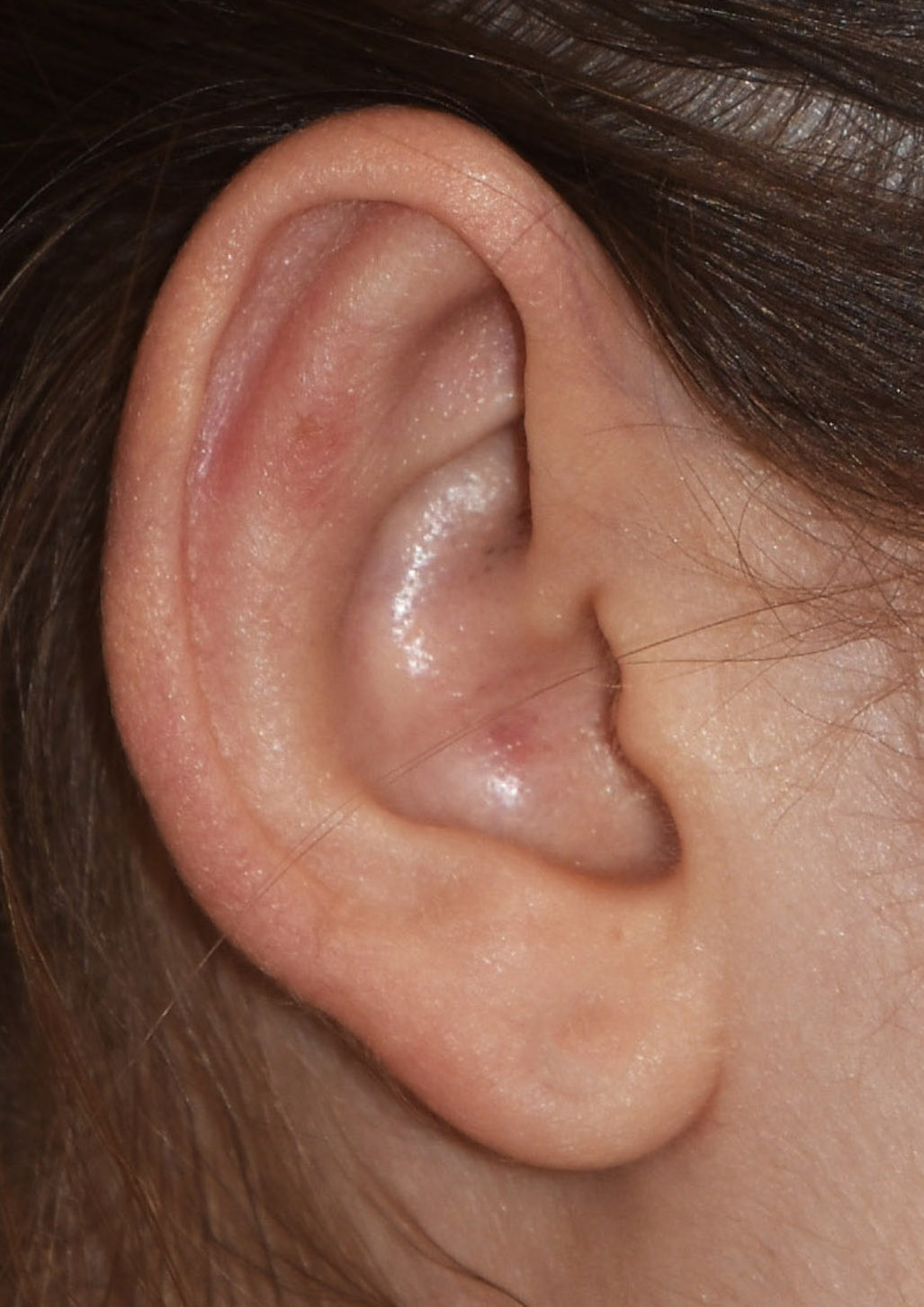
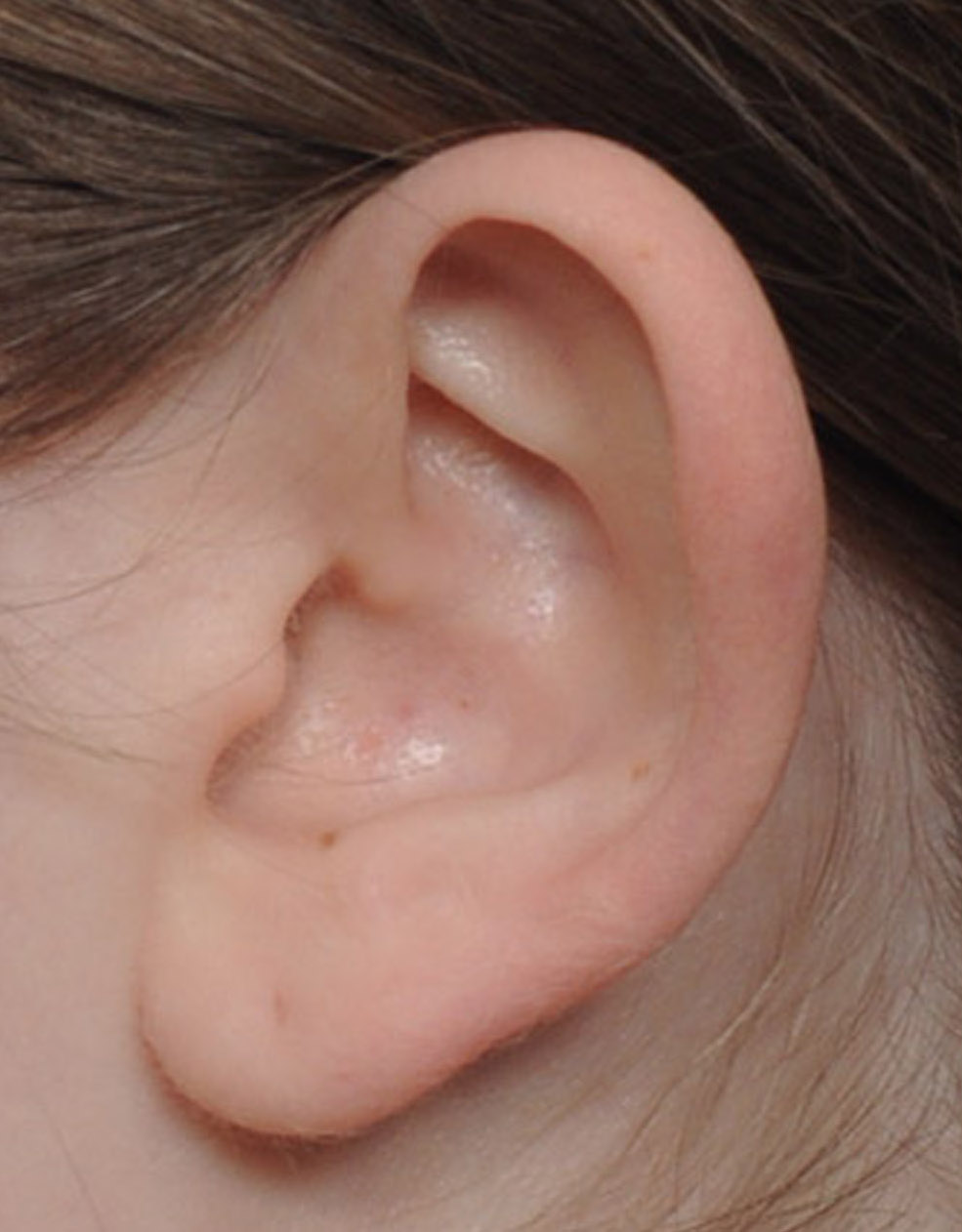
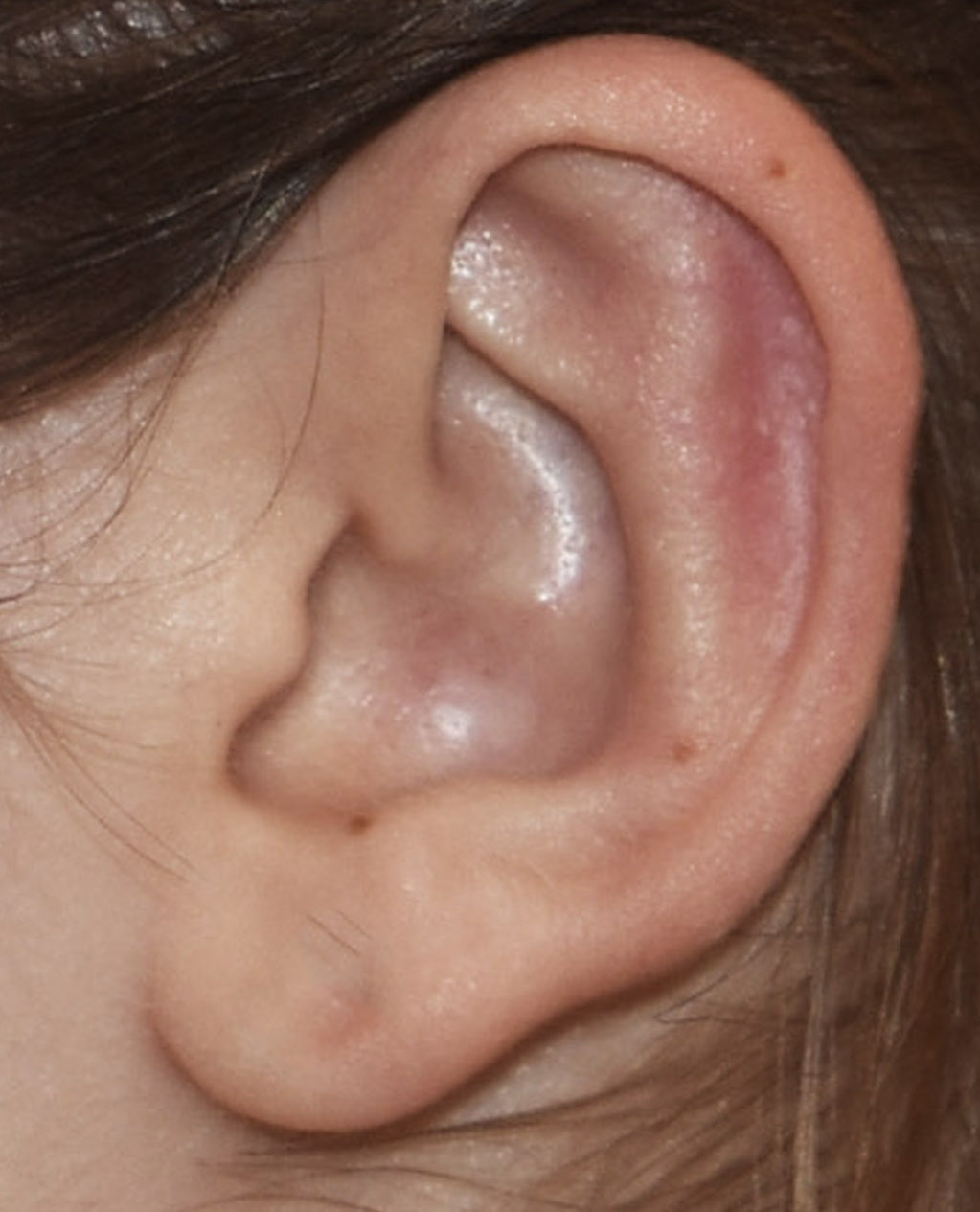
Desire for correction of protruding ears.
Setback otoplasty procedure re-creating the anti helical fold.
Patient 94
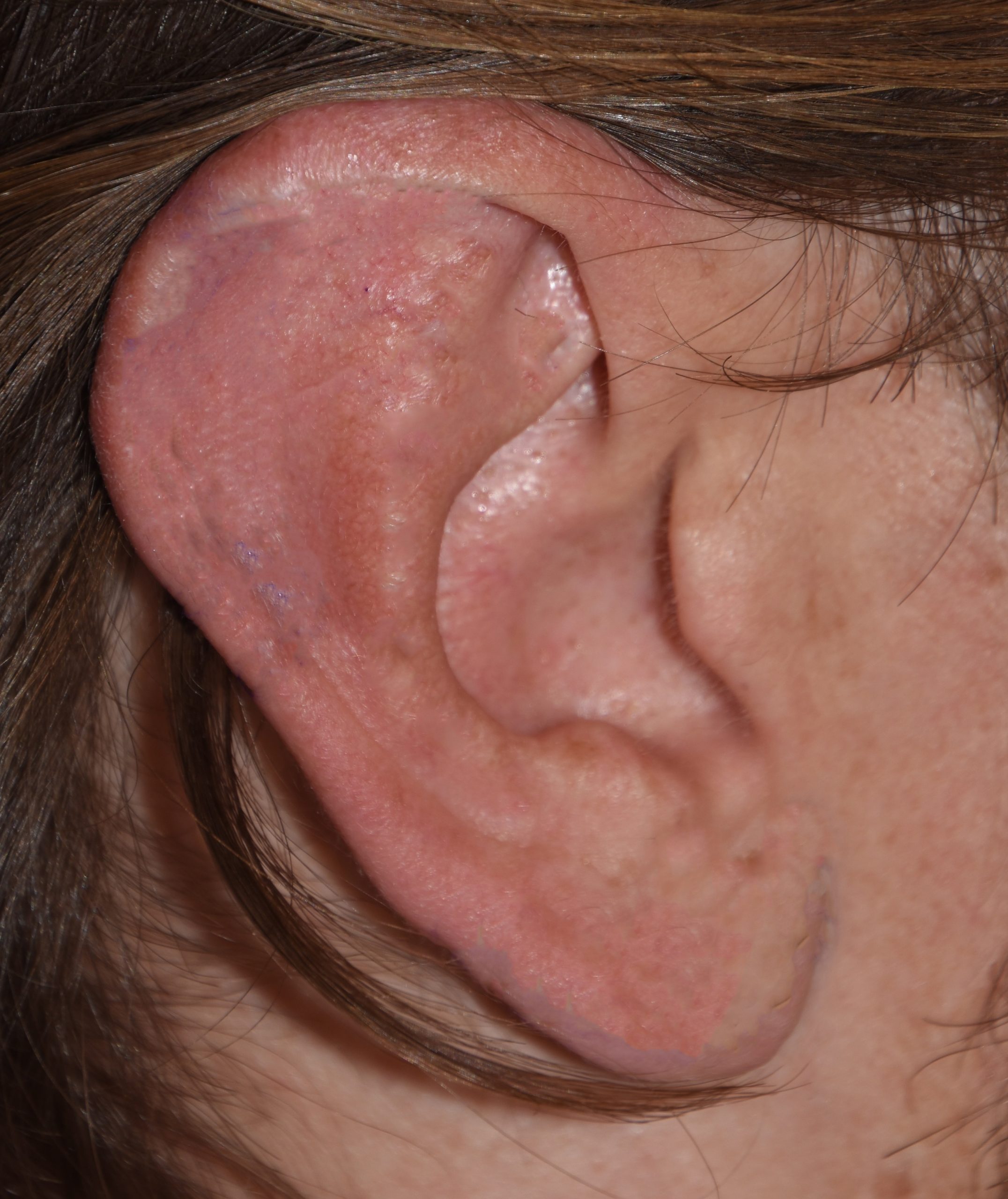
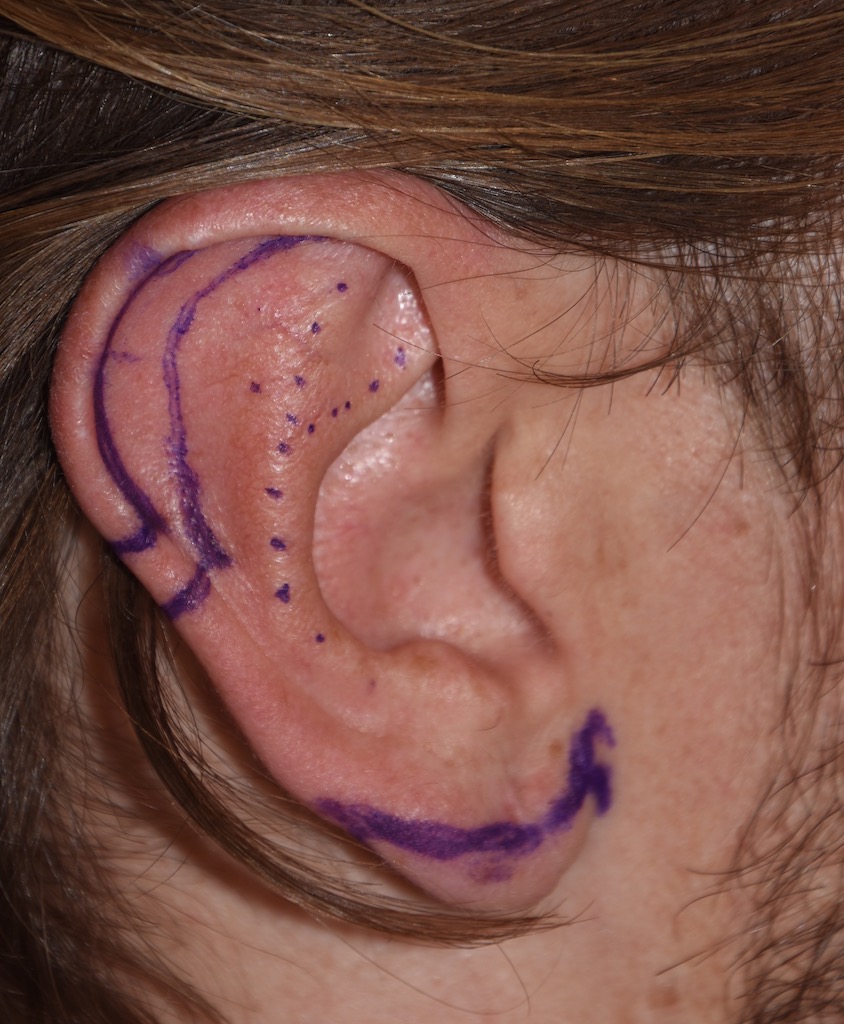
Desire for vertical ear reduction of his larger ears.
Vertical ear reduction using a superior scapula flap and inferior helical rim lobe reduction techniques.



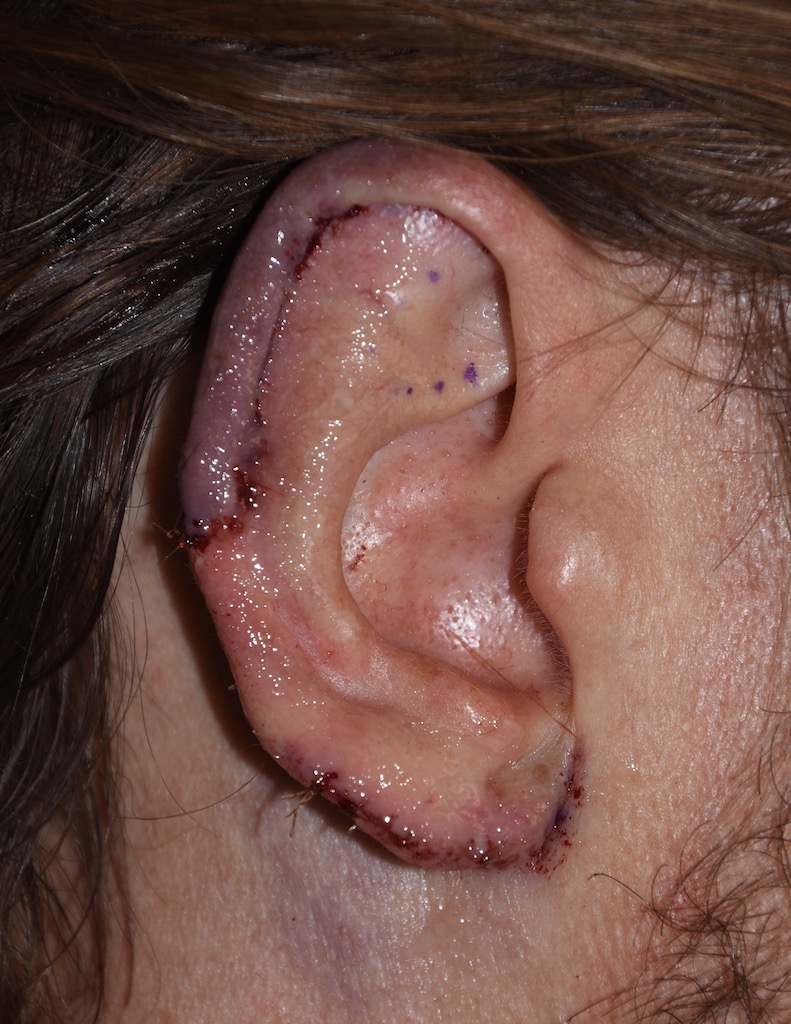

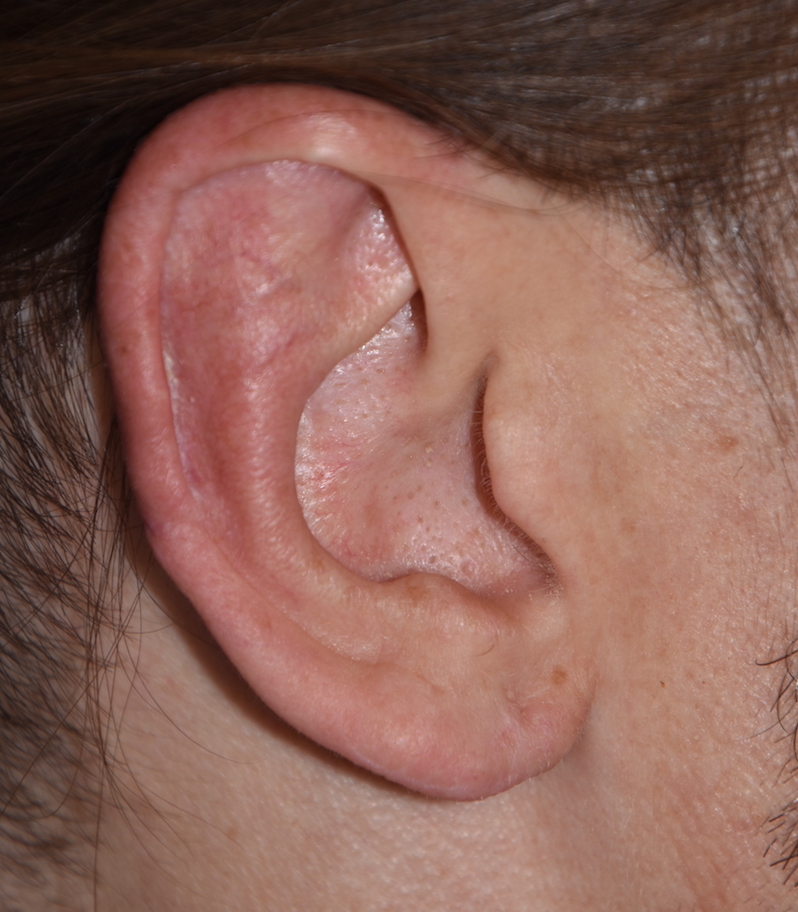
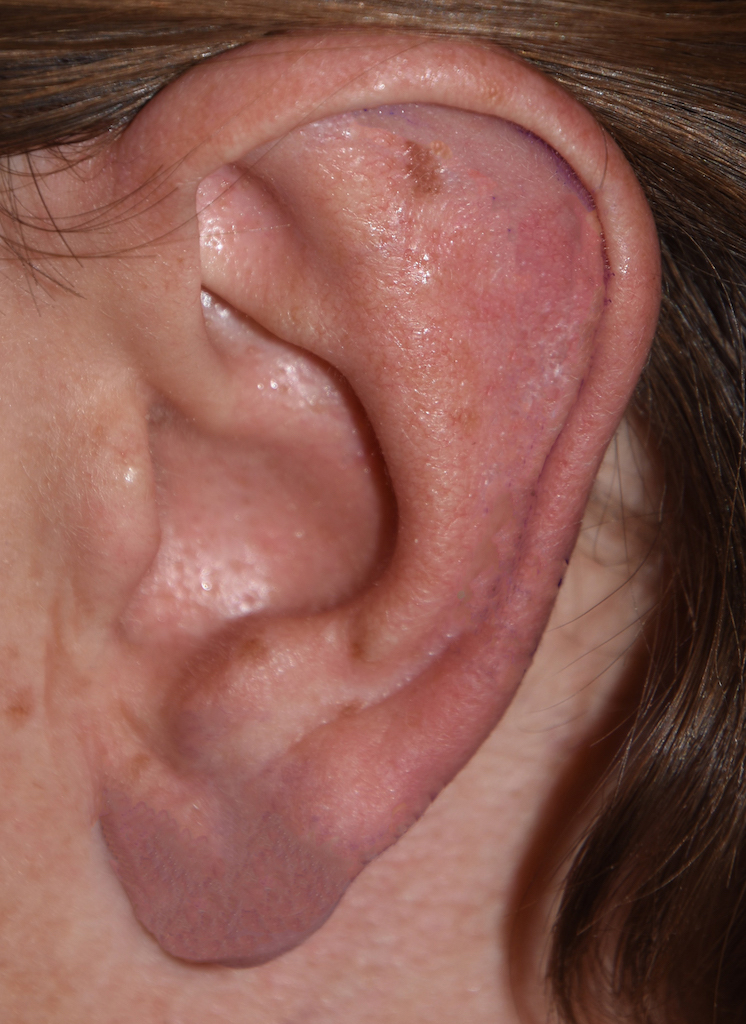
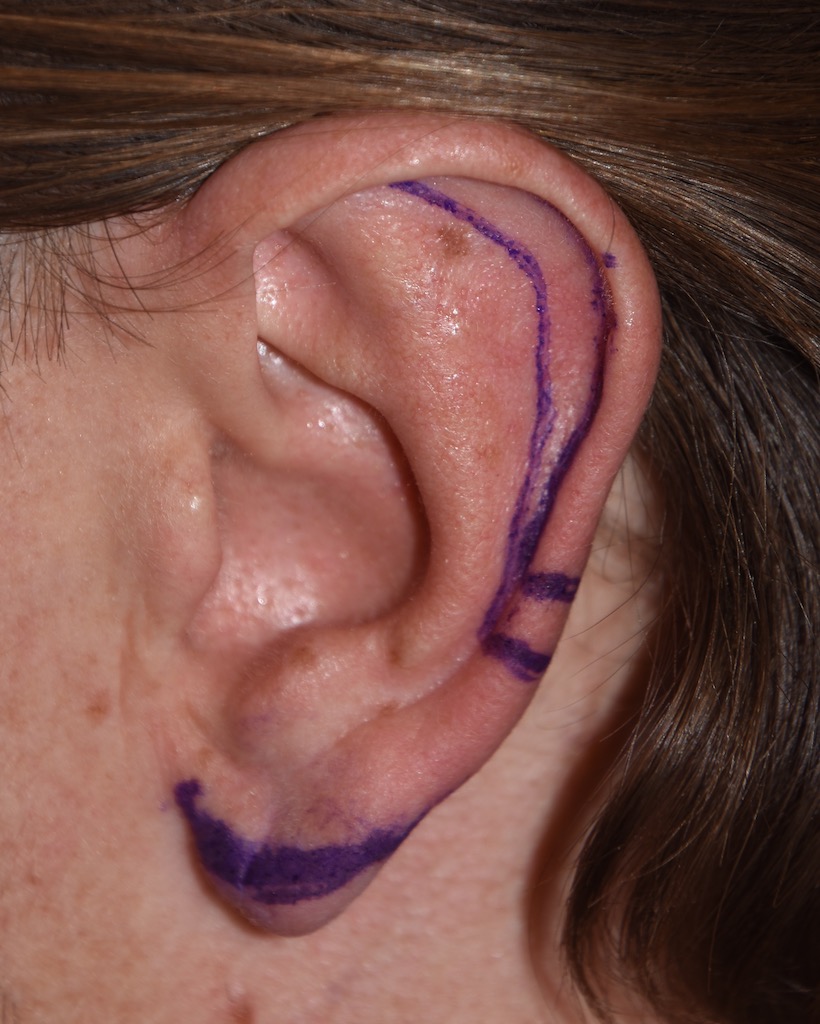

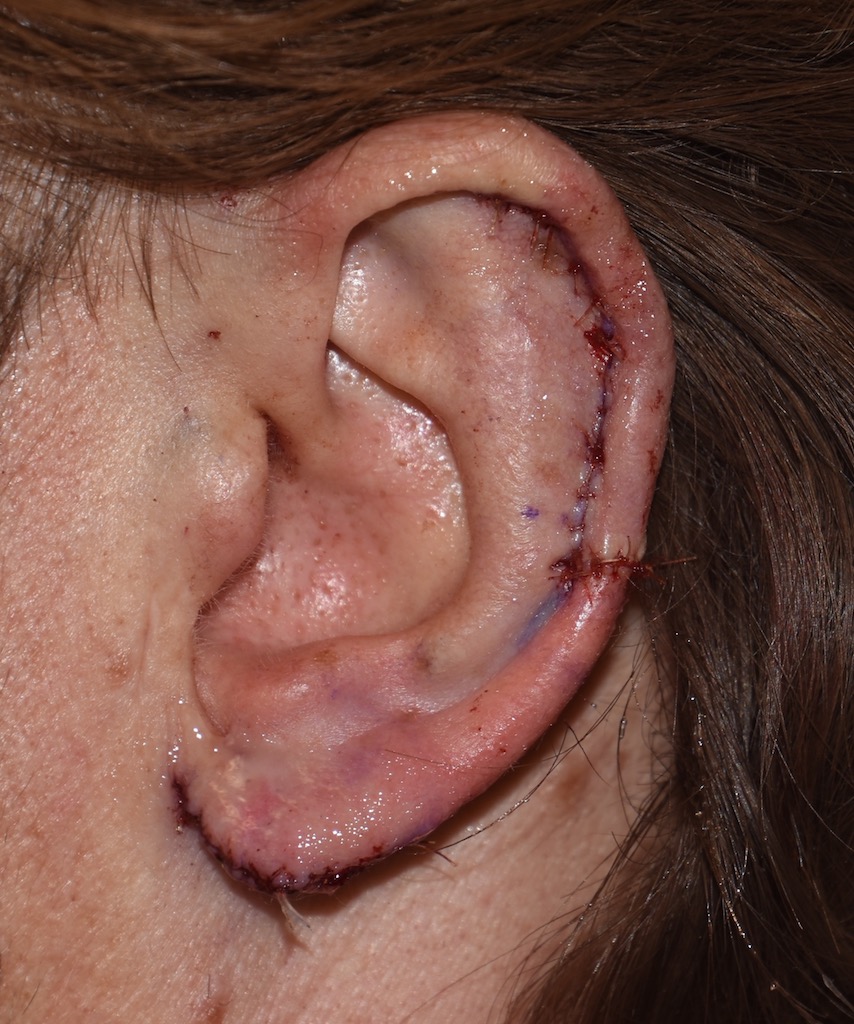

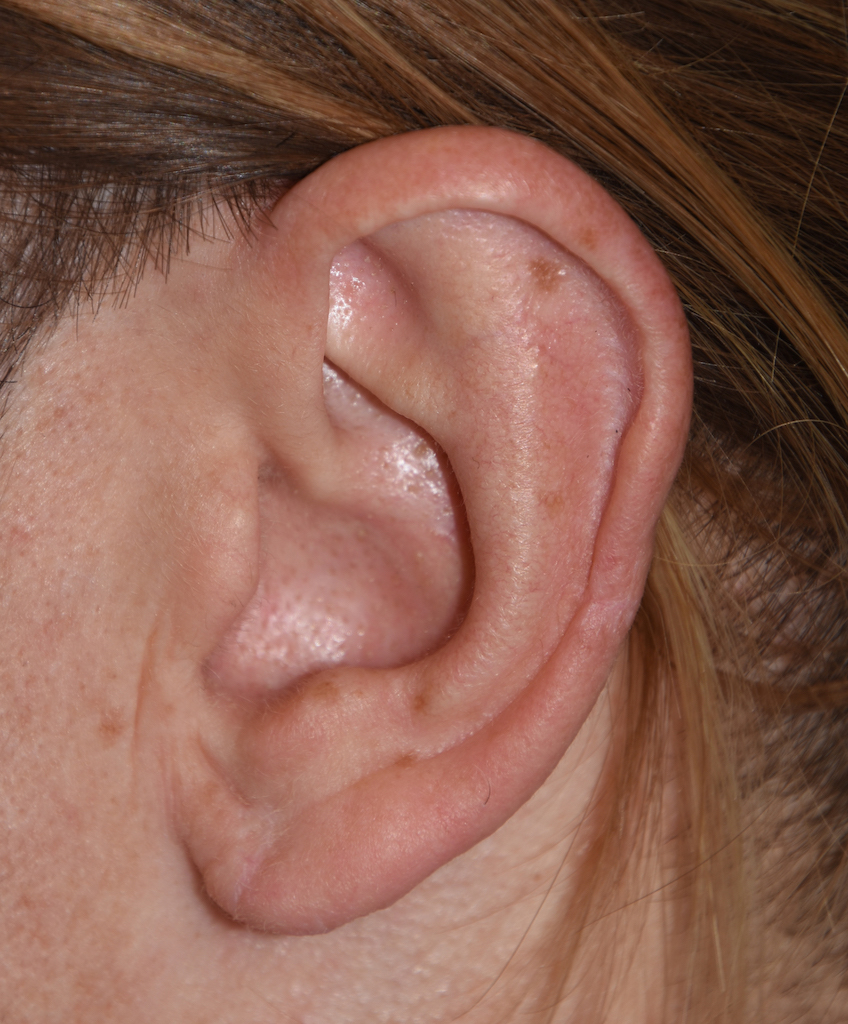
Desire for vertical ear reduction of his larger ears.
Vertical ear reduction using a superior scapula flap and inferior helical rim lobe reduction techniques.
Patient 95
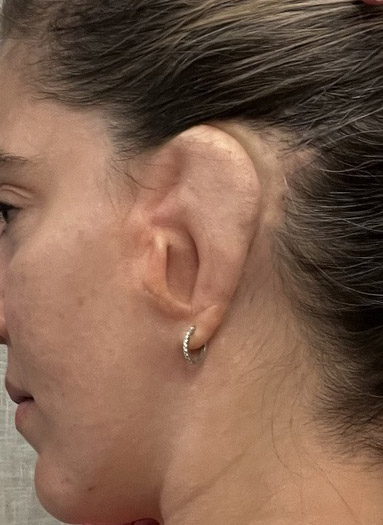
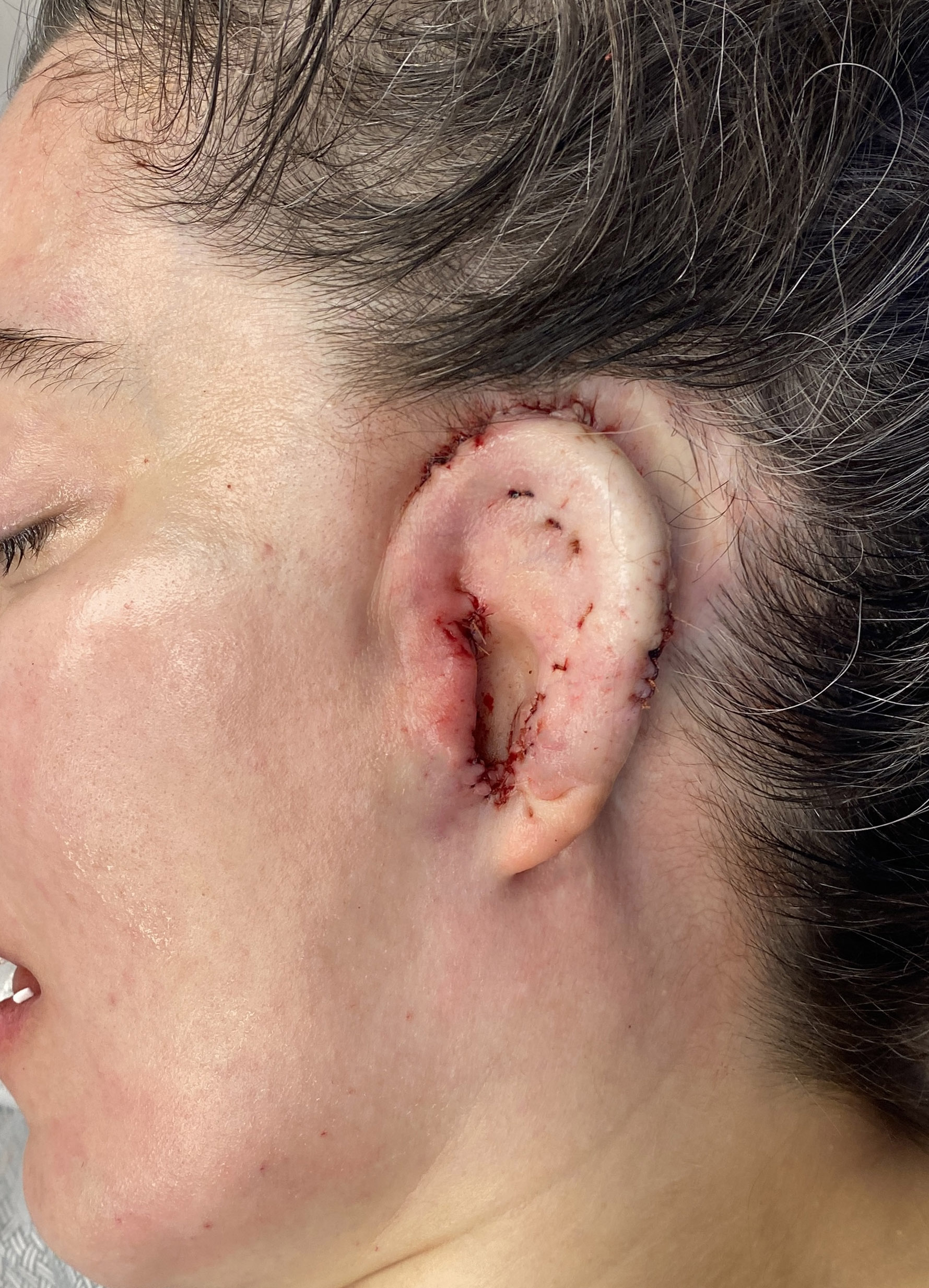
Desire to have vertically long microtia ear reconstruction done as a child reshaped to look more proportionate to the rest of her face.
Reduction and reshaping of the original rib graft ear framework for a shorter ear that has some better definition.


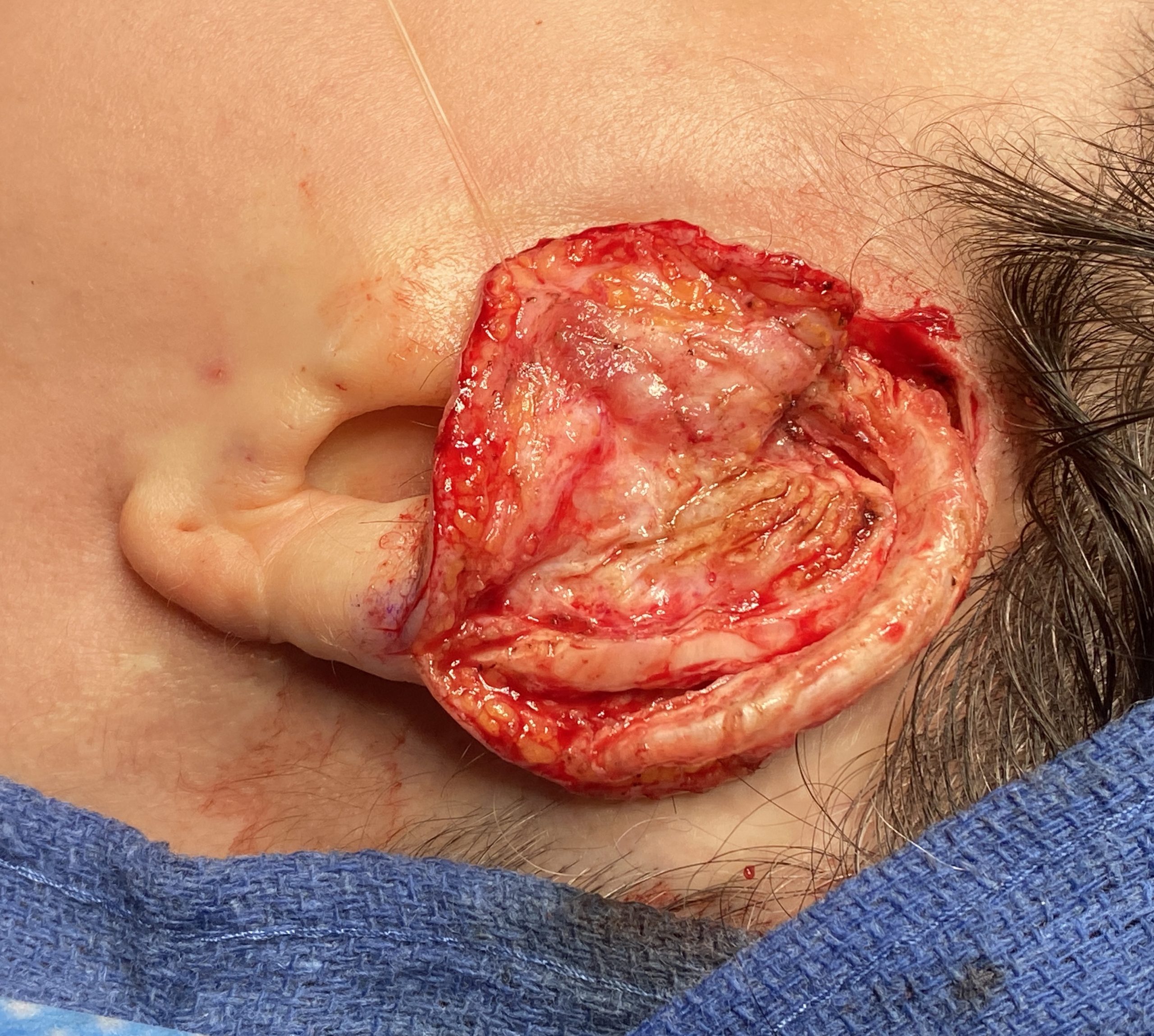
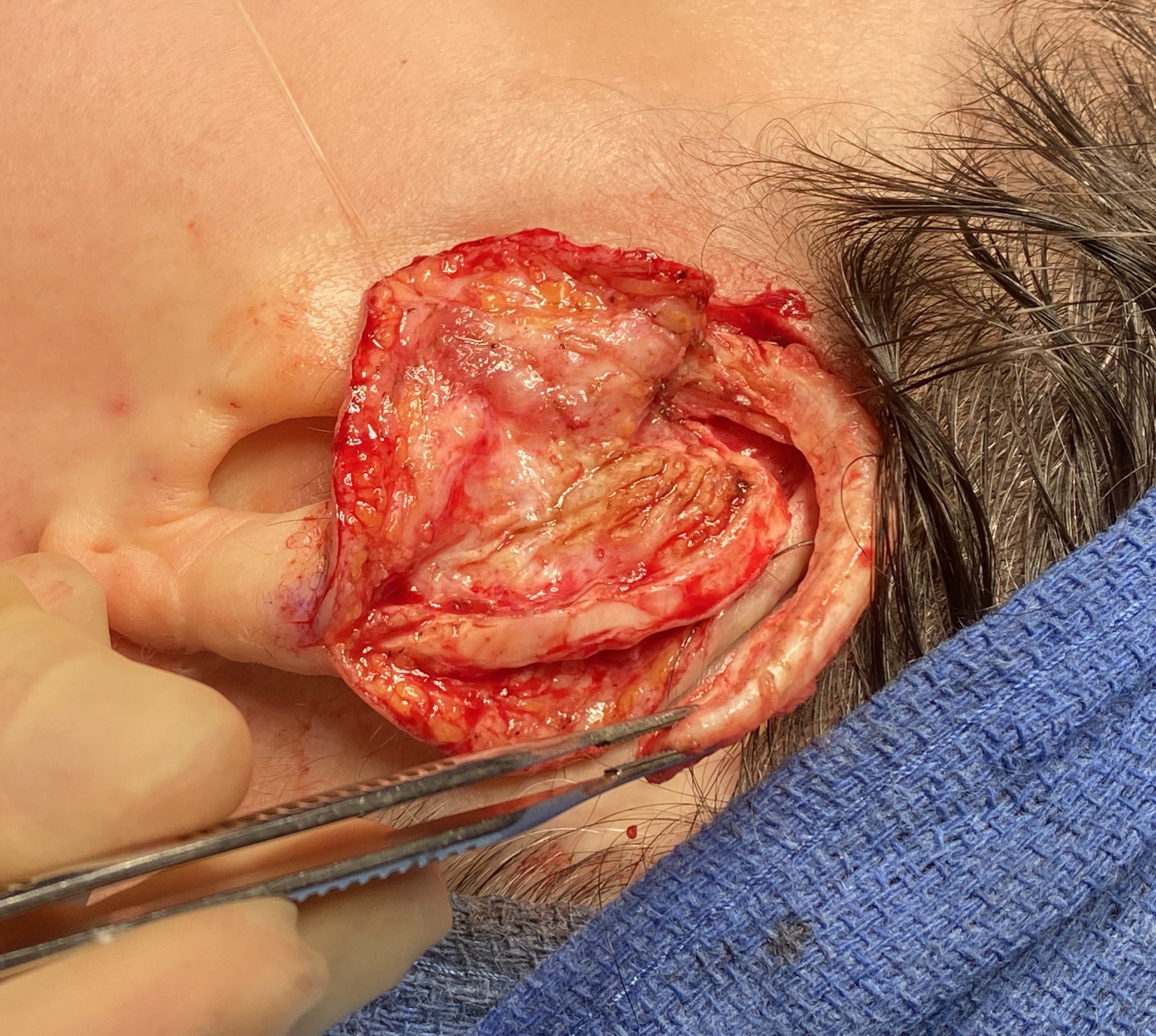
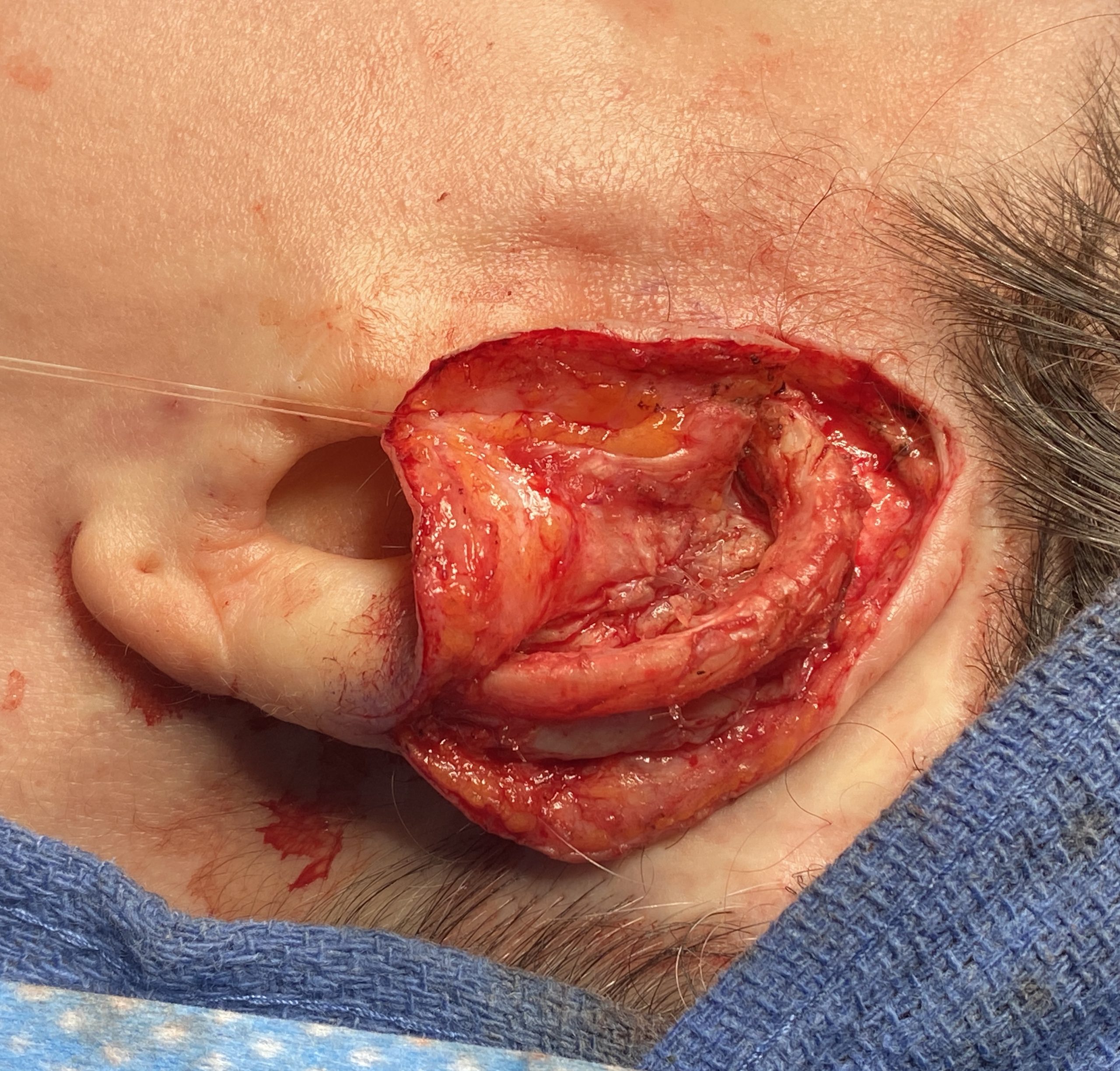
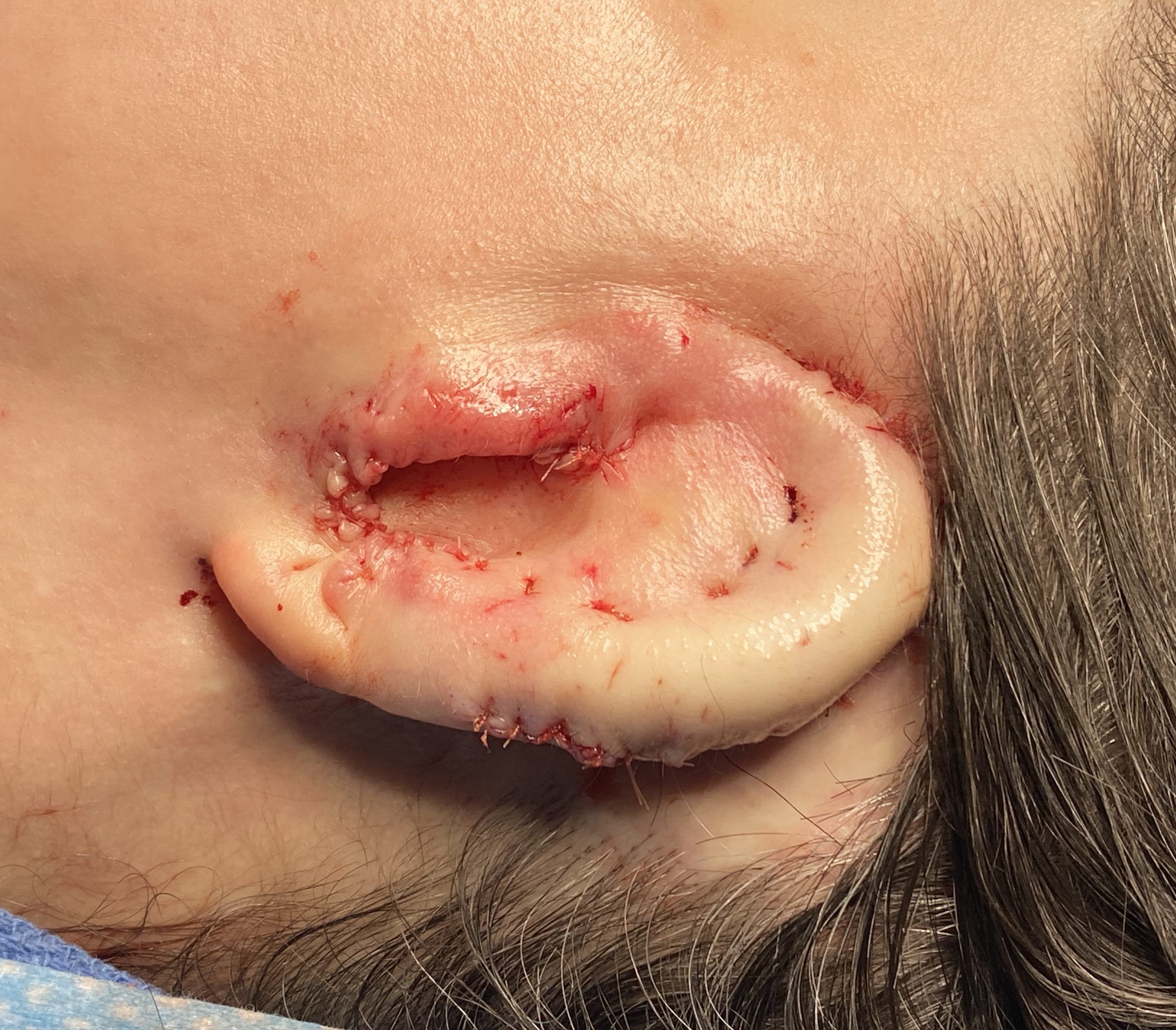
Desire to have vertically long microtia ear reconstruction done as a child reshaped to look more proportionate to the rest of her face.
Reduction and reshaping of the original rib graft ear framework for a shorter ear that has some better definition.
Patient 96
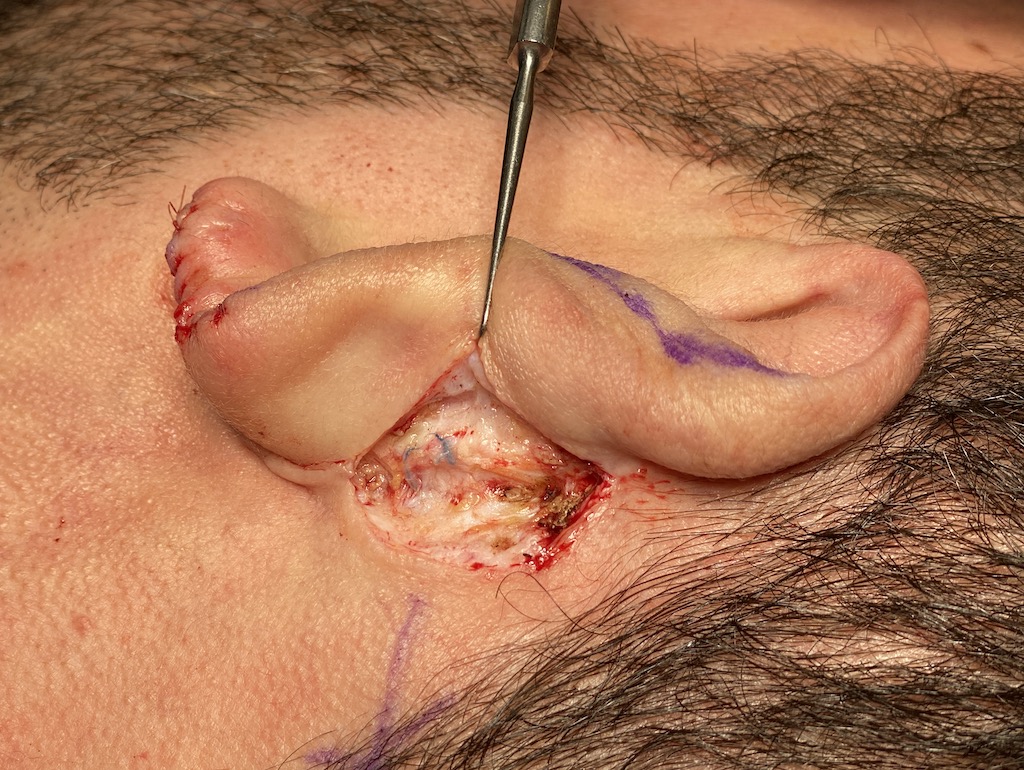

Desire to correct a prior overdone otoplasty which pinned the ear too close to the side of the head.
Subtotal reversal otoplasty with postauricular release and placement of interpositional rib cartilage grafts. (tissue bank)


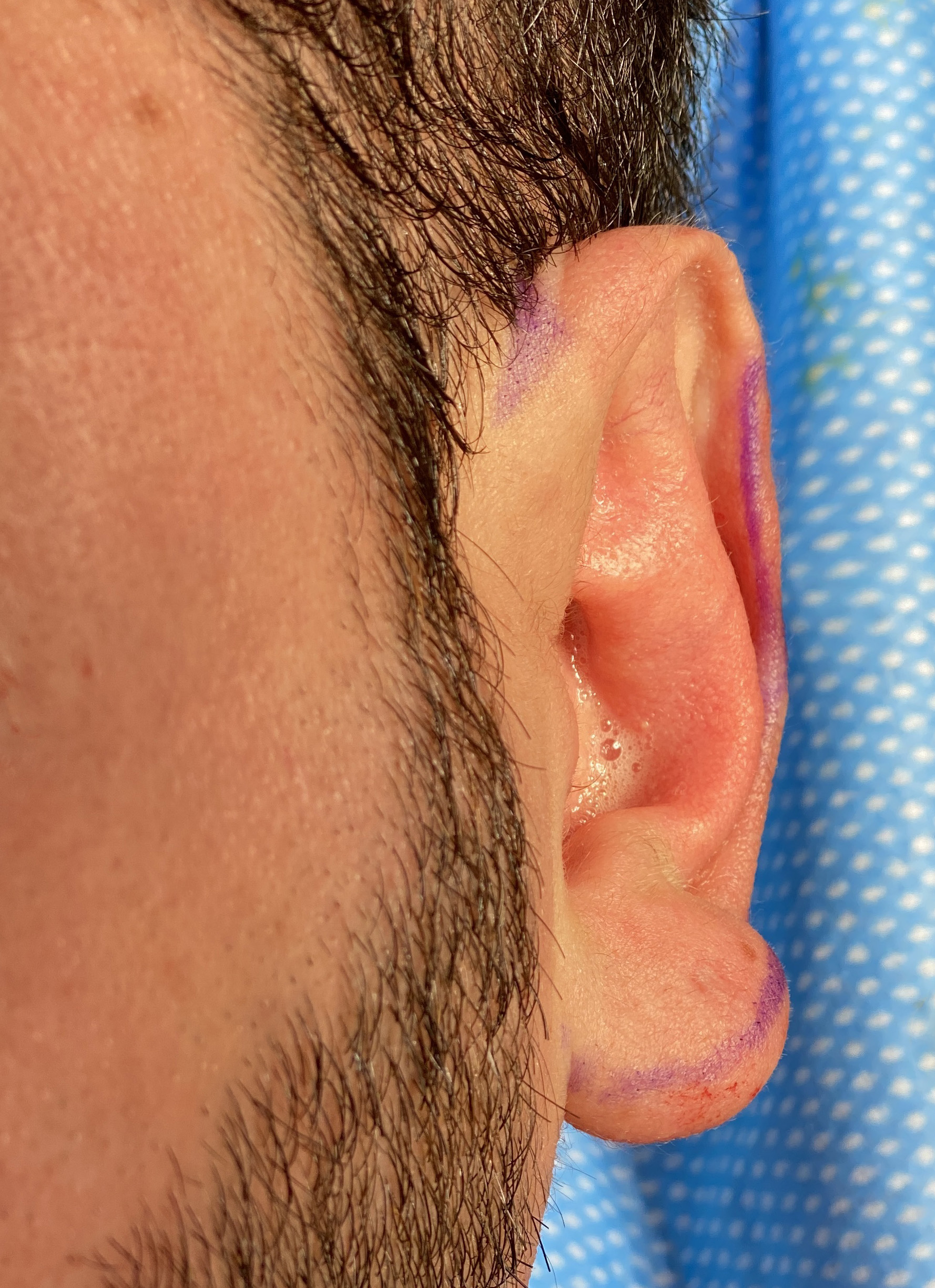
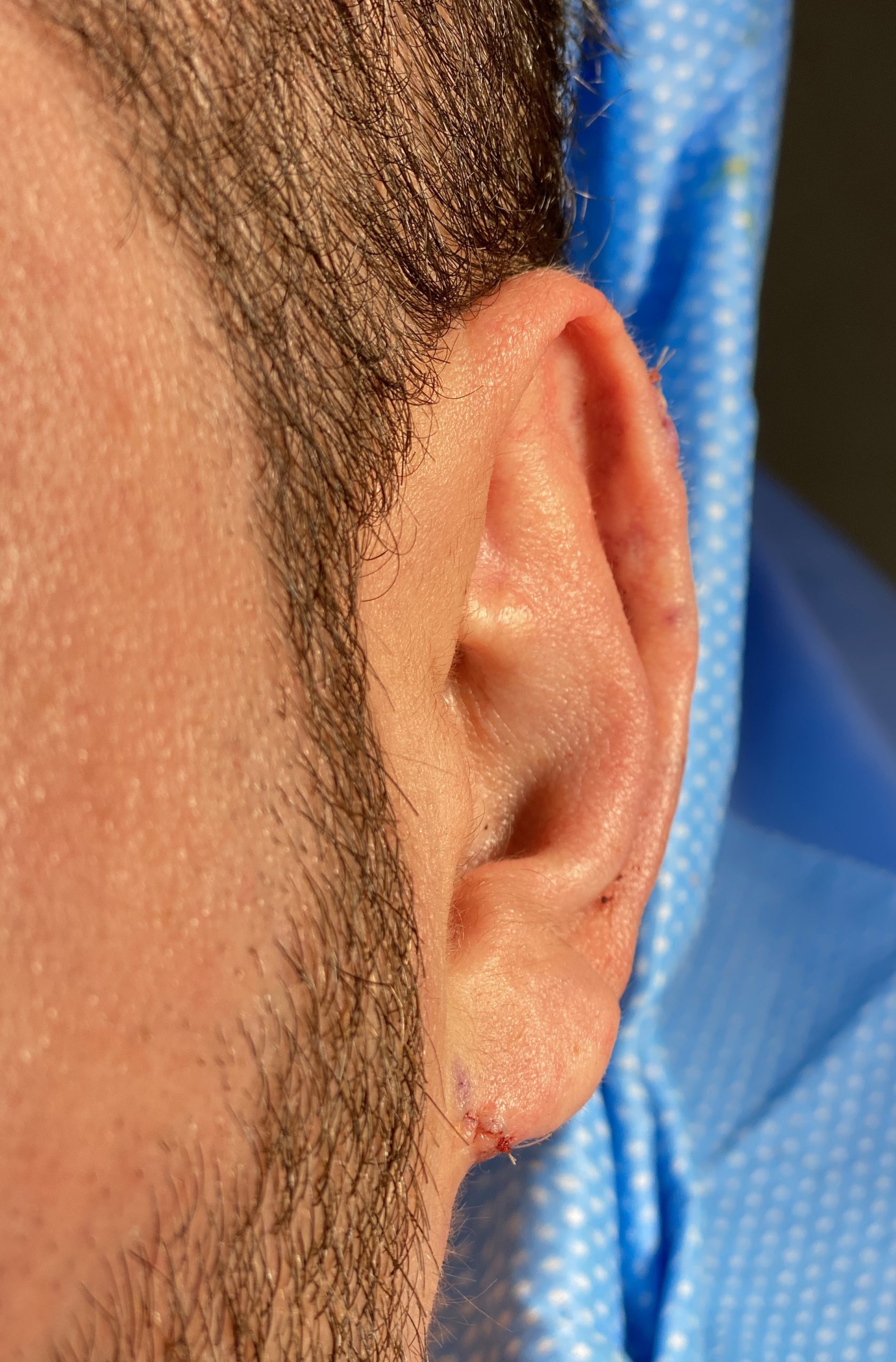
Desire to correct a prior overdone otoplasty which pinned the ear too close to the side of the head.
Subtotal reversal otoplasty with postauricular release and placement of interpositional rib cartilage grafts. (tissue bank)
Patient 97
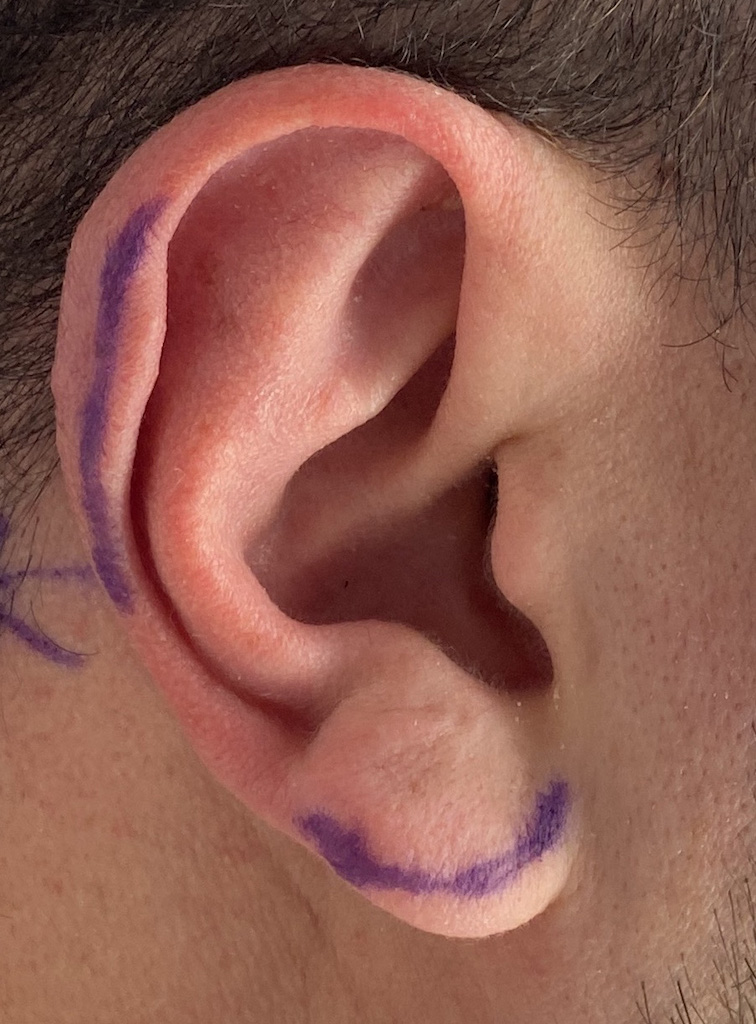
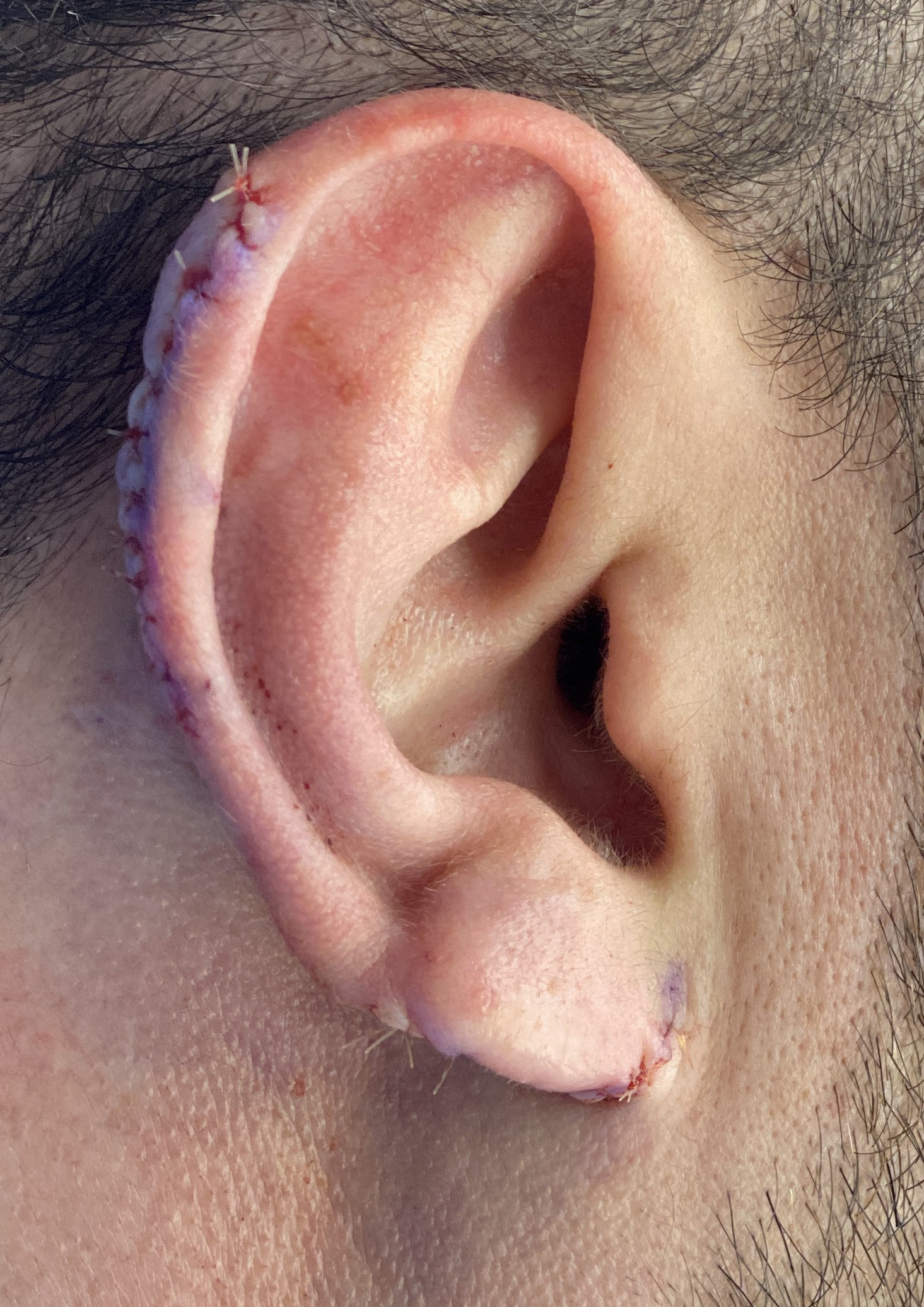
Desire for better shaped ears,
Ear reshaping with earlobe reduction and helical lidding correction.


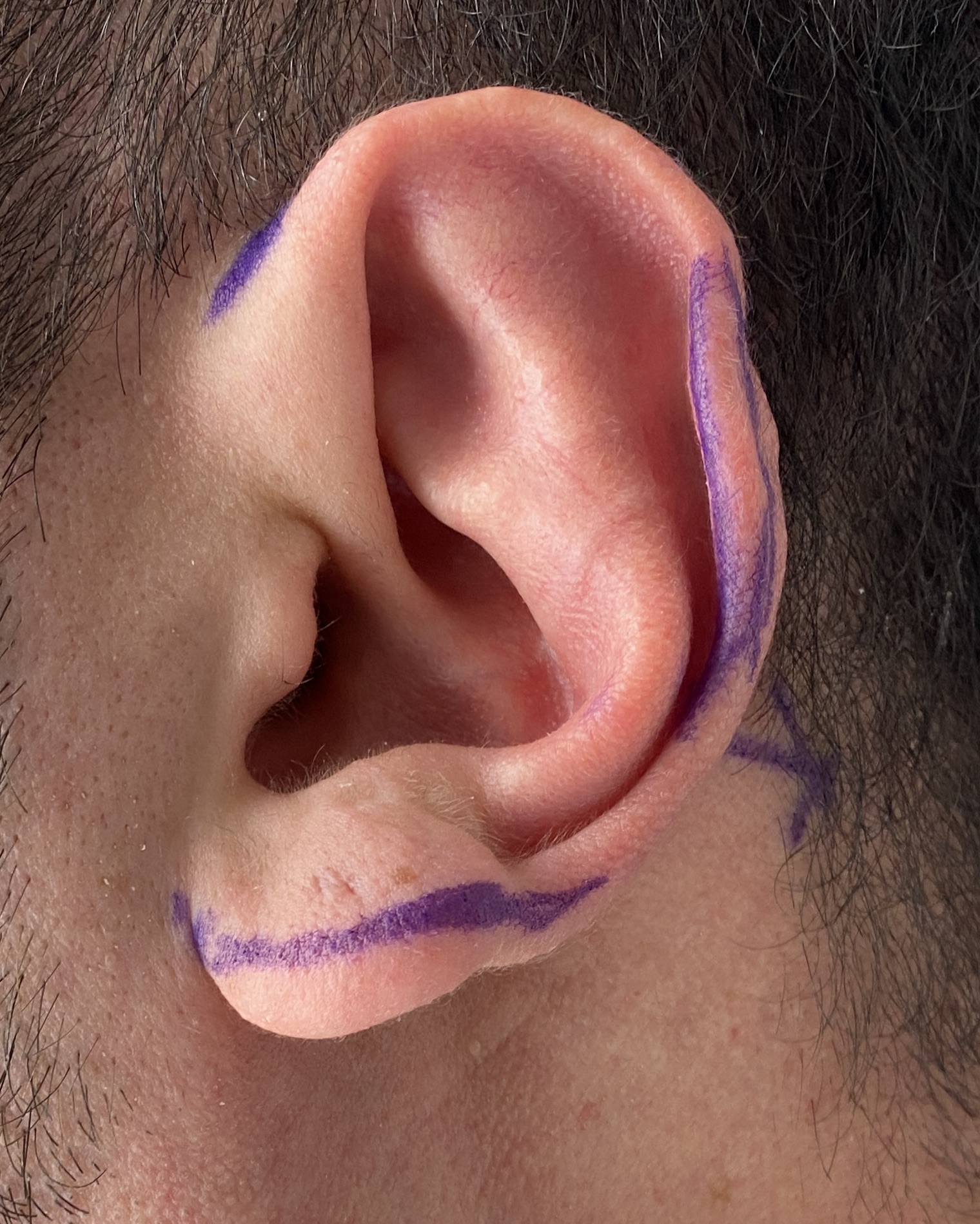
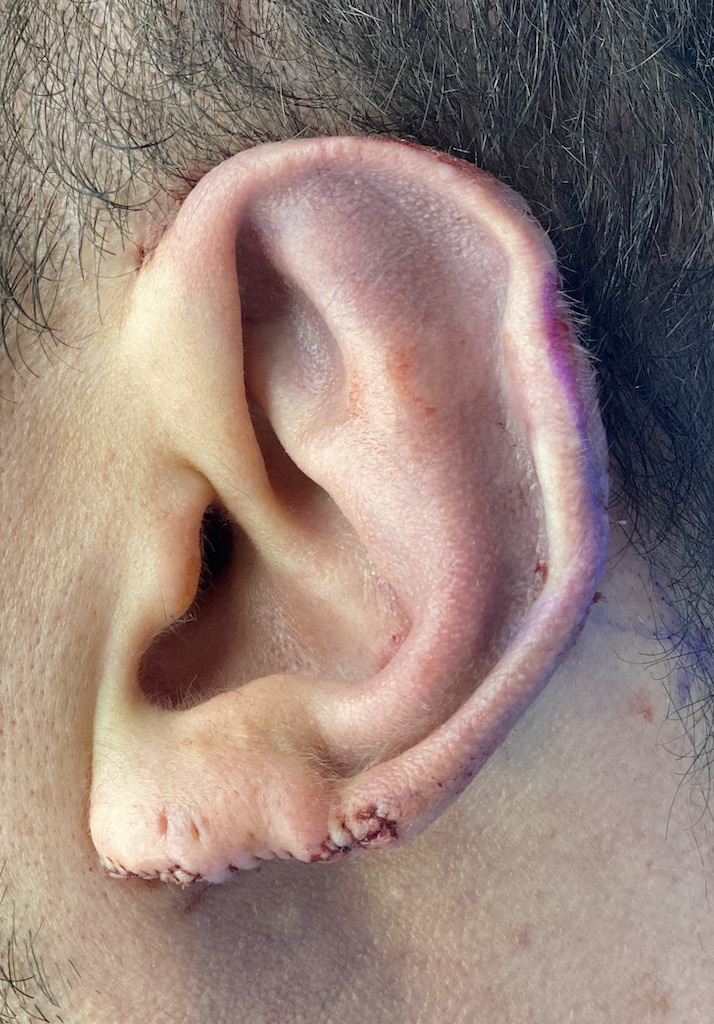
Desire for better shaped ears,
Ear reshaping with earlobe reduction and helical lidding correction.
Patient 98
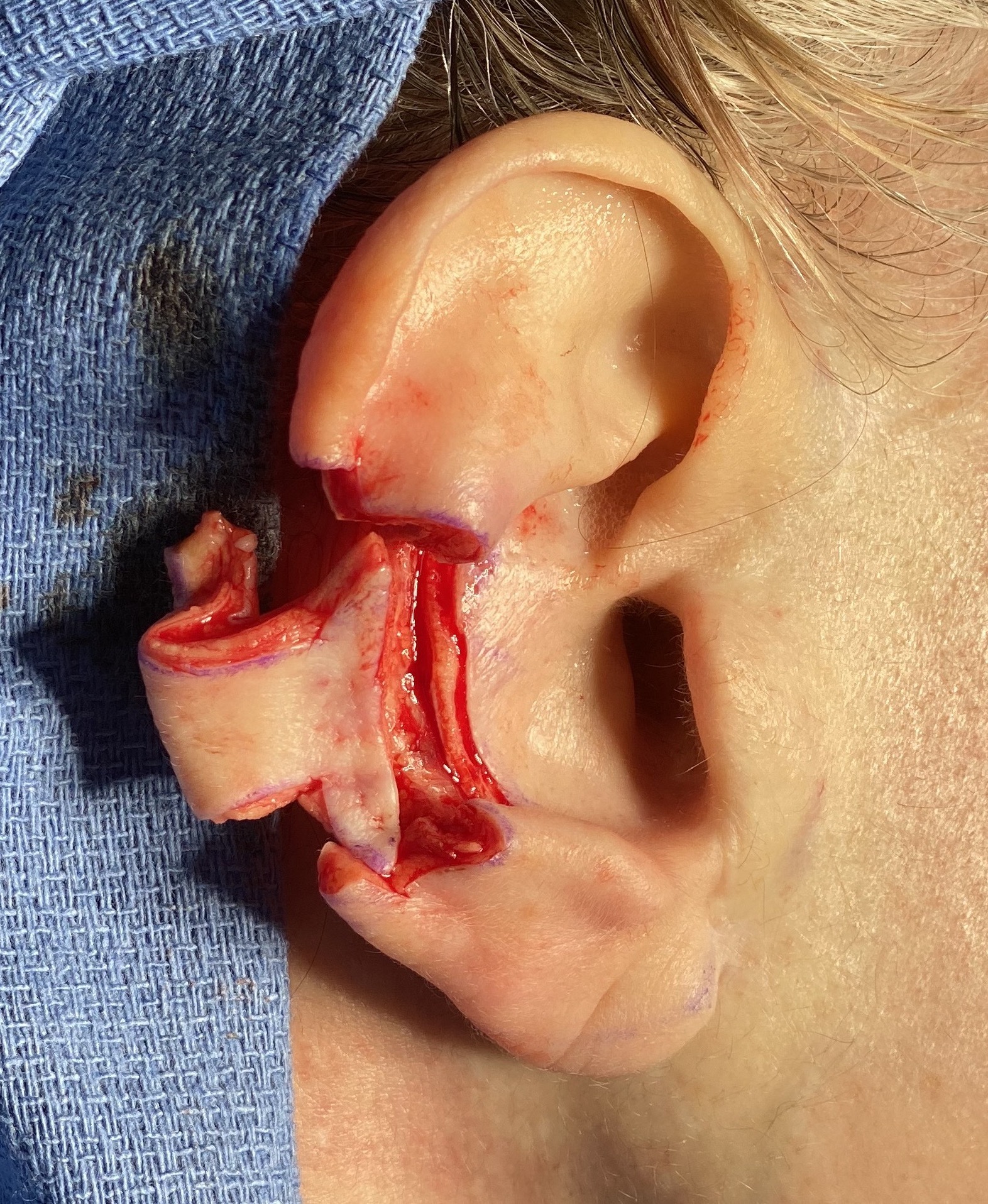
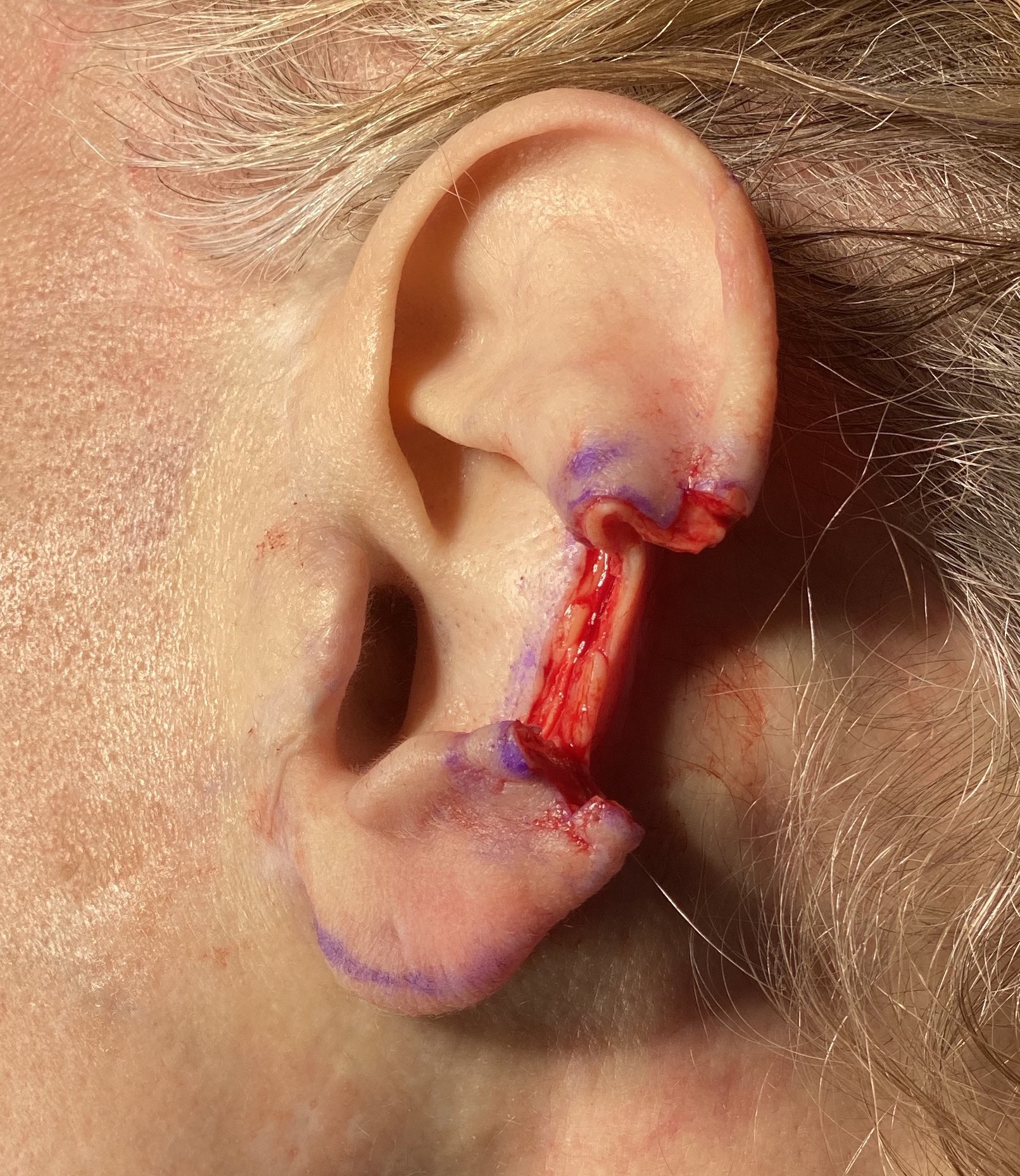
Lifelong desire for smaller ears.
Macrotia reduction surgery using a central wedge resection technique combined with earlobe reduction. Vertical length of the ears was reduced from 75 to 60mms.


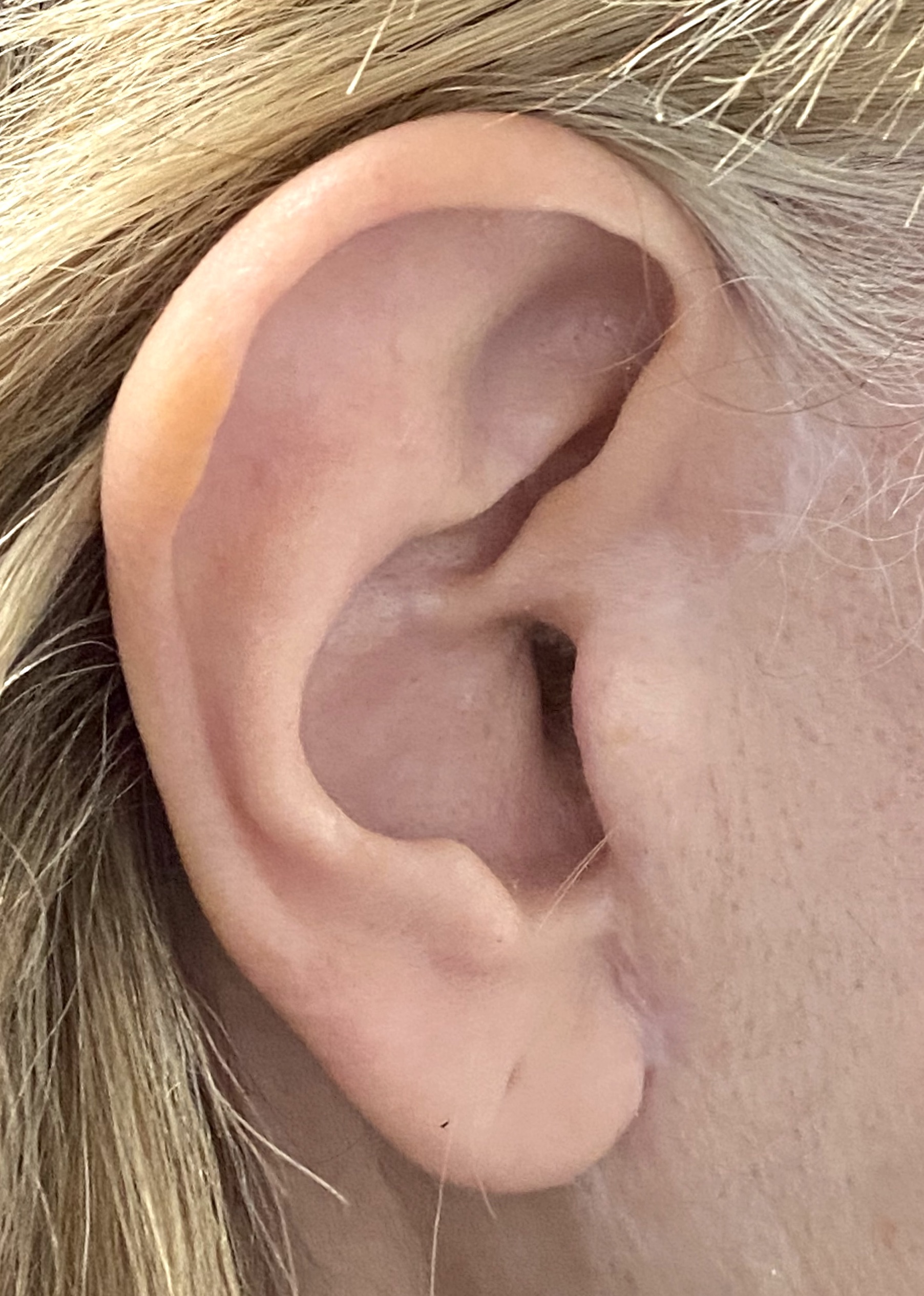
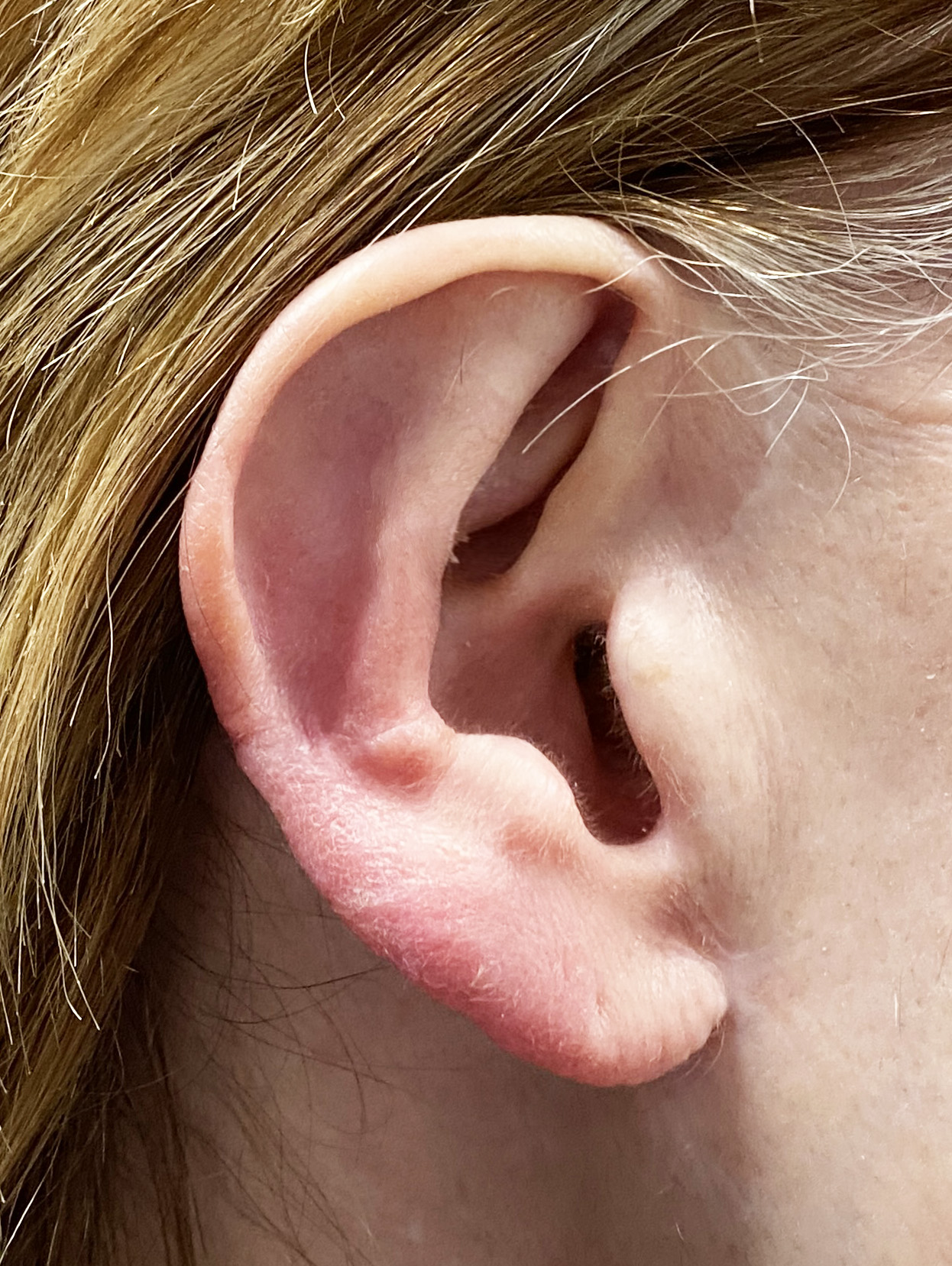
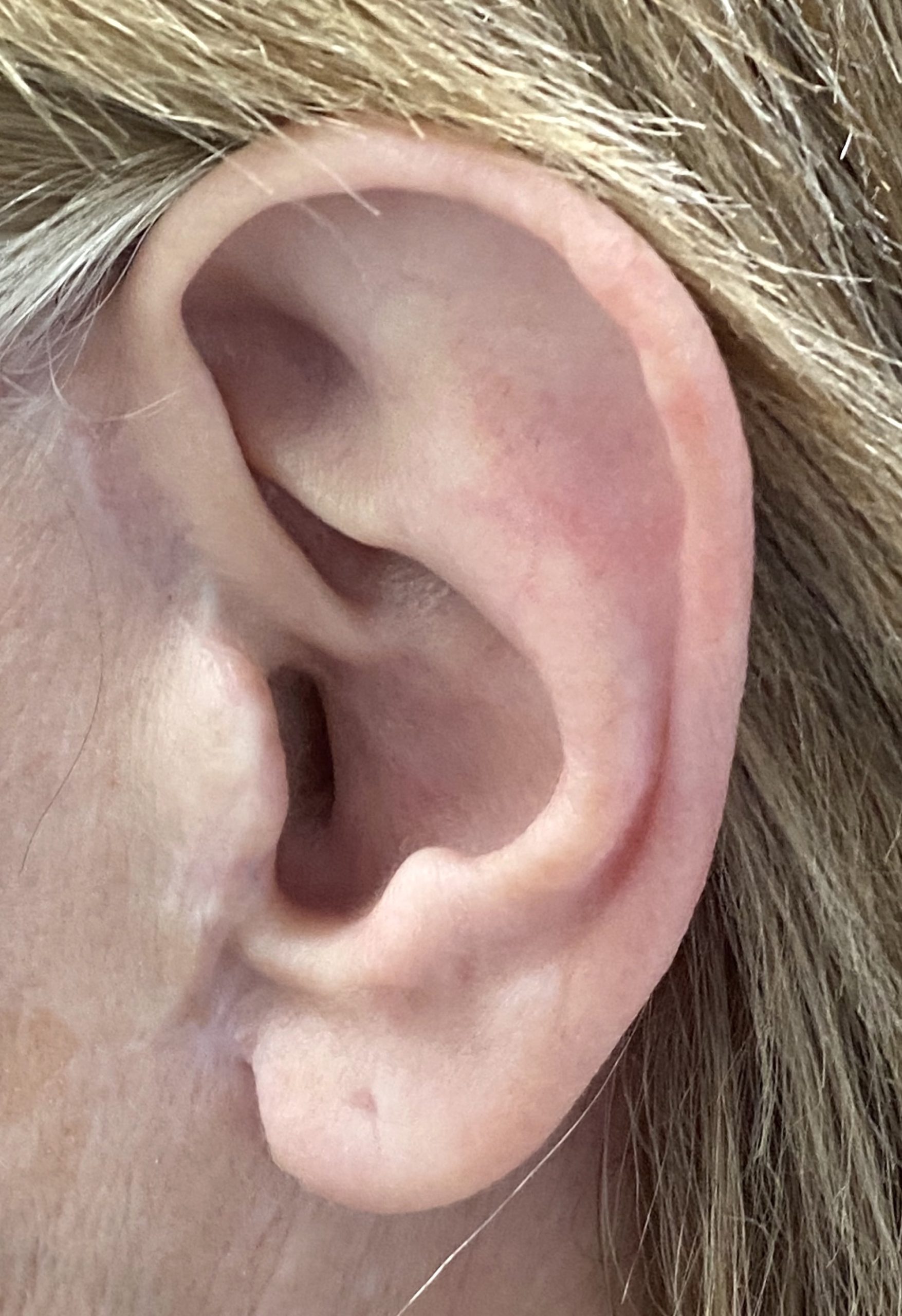

Lifelong desire for smaller ears.
Macrotia reduction surgery using a central wedge resection technique combined with earlobe reduction. Vertical length of the ears was reduced from 75 to 60mms.
Patient 99
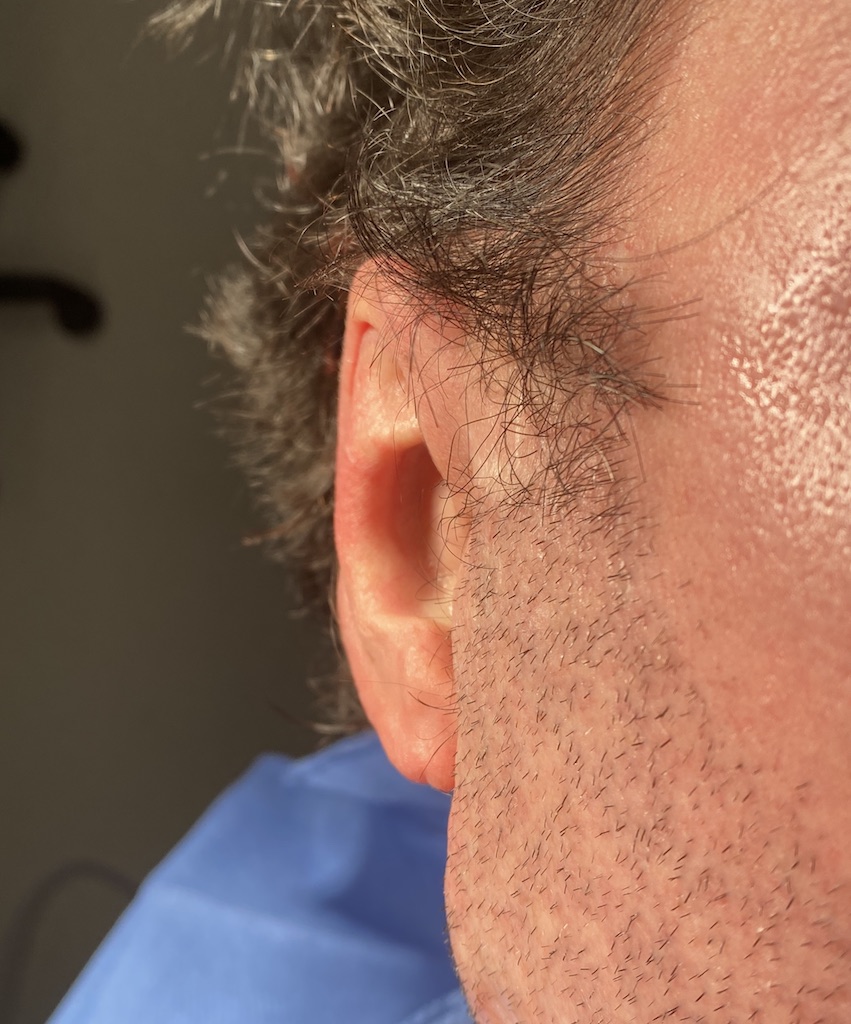
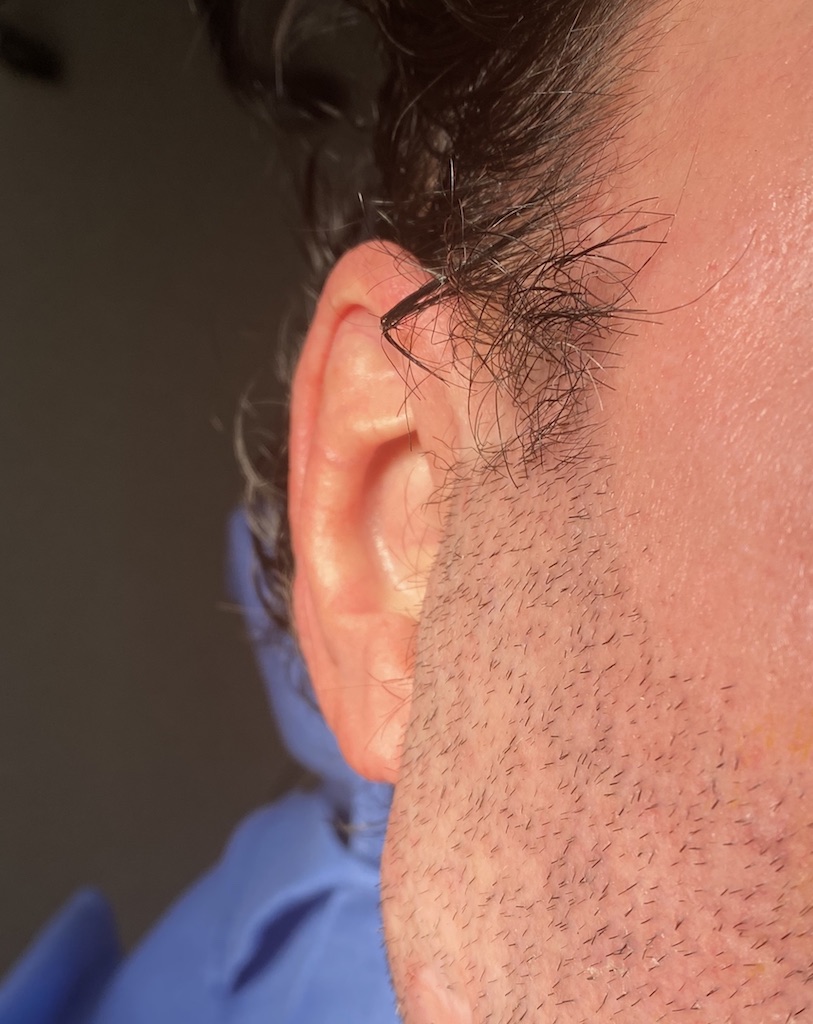
Desire to have over pinned ears brought back out a bit.
Subtotal reverse otpplasty done using a postauricular release with the placement of multilayer cadaveric rib cartilage grafts


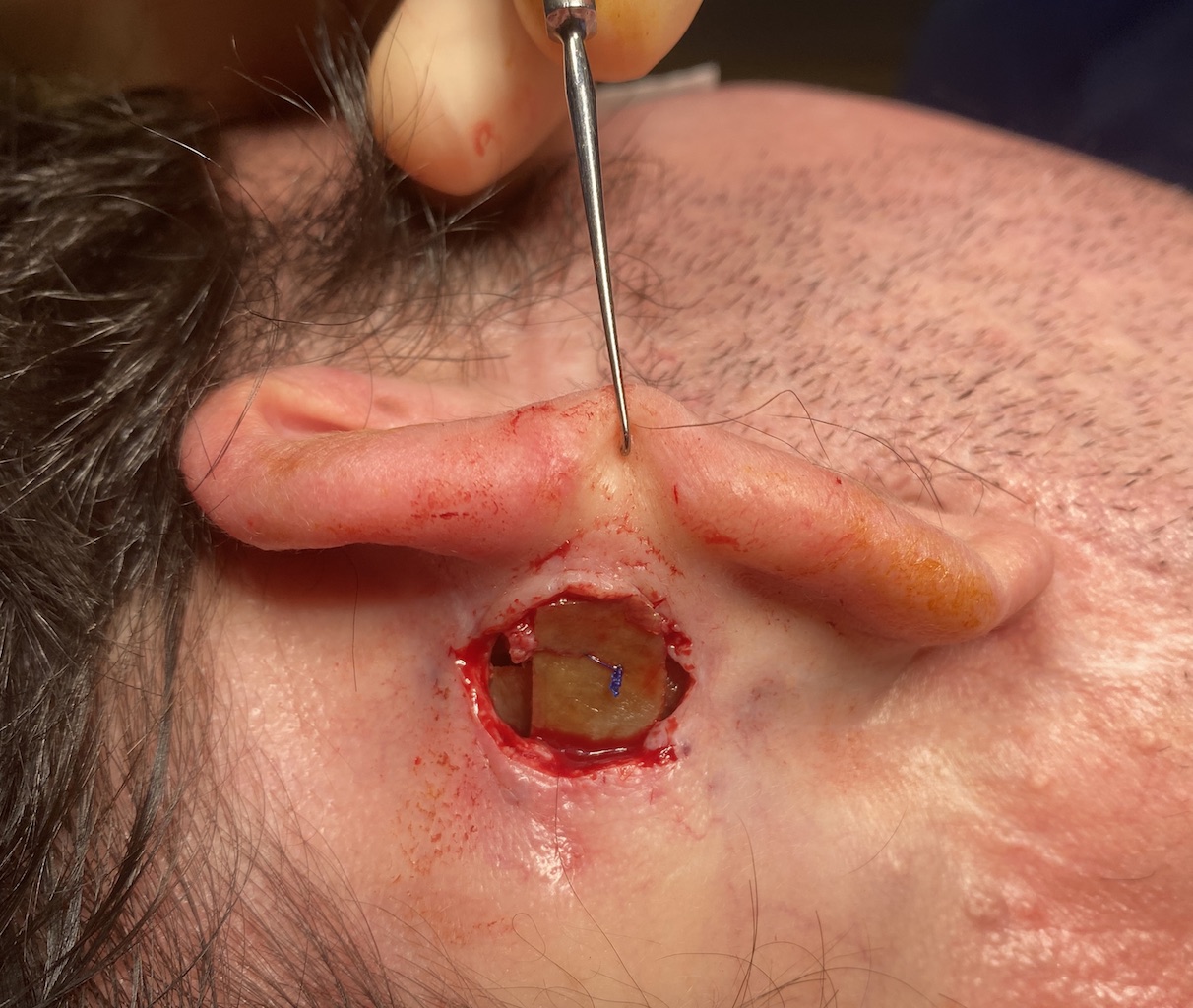
Desire to have over pinned ears brought back out a bit.
Subtotal reverse otpplasty done using a postauricular release with the placement of multilayer cadaveric rib cartilage grafts
Patient 100
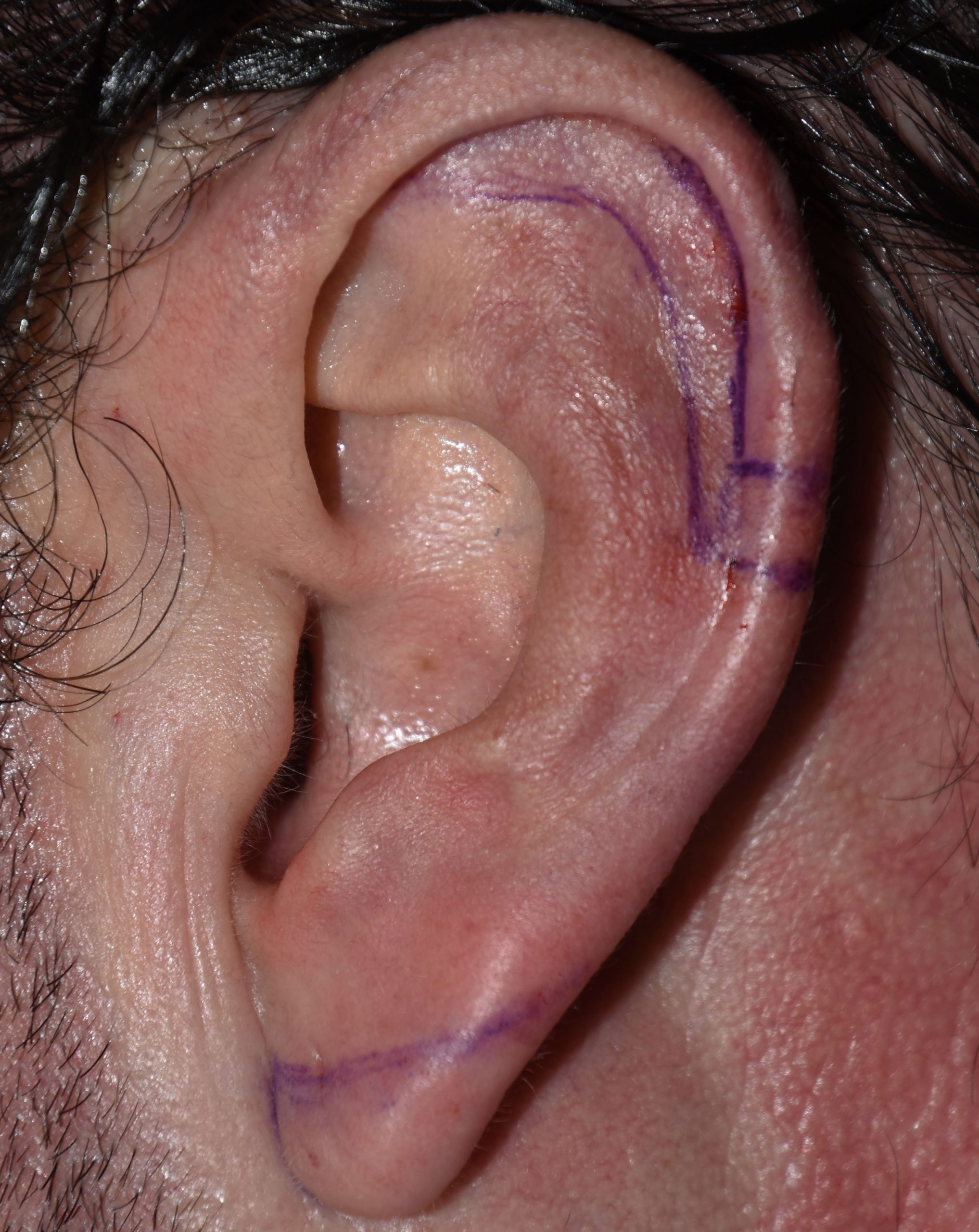
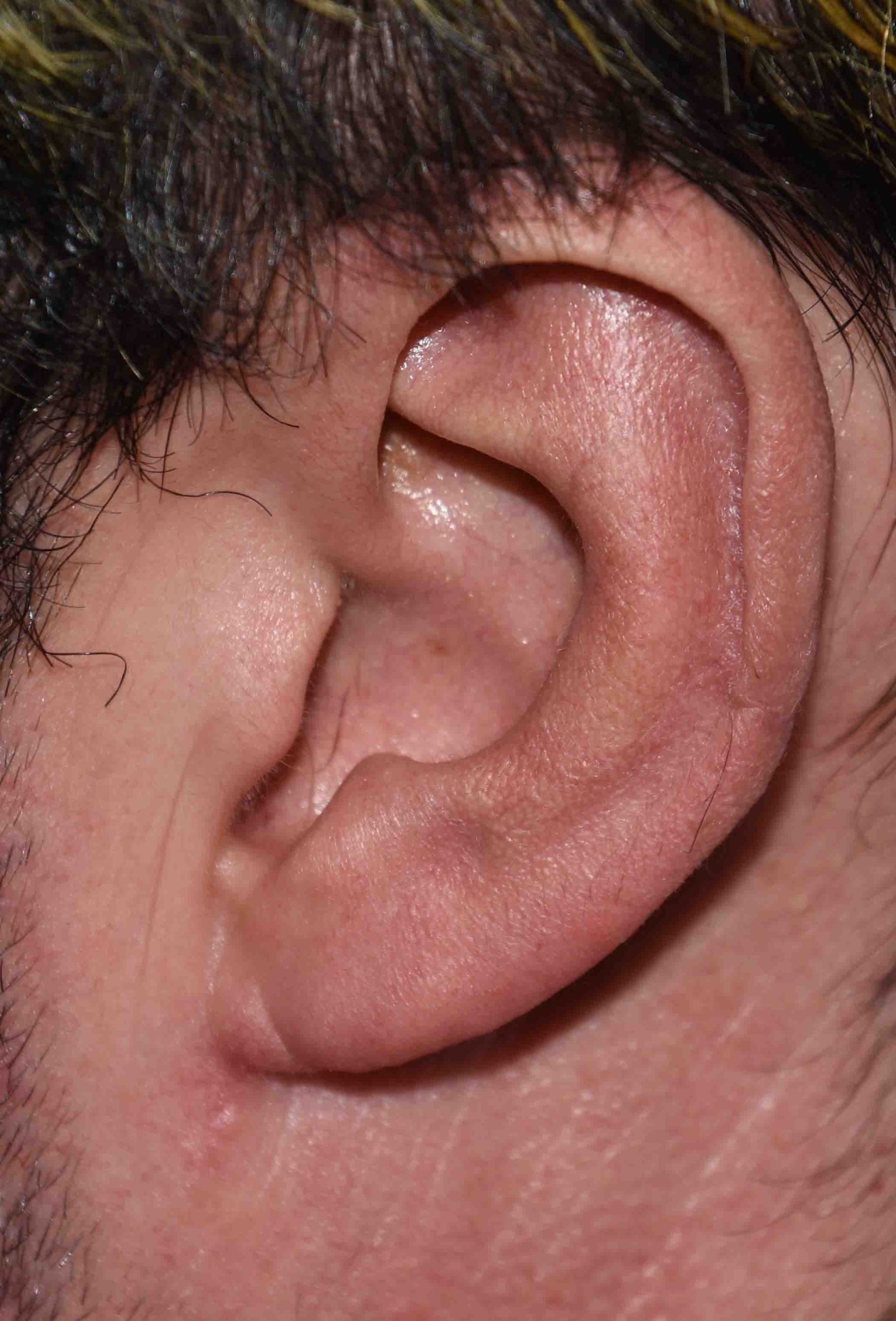
Desire to reduce the height of his large ears.
Vertical ear reduction/reshaping using a superior scapula flap transposition and inferior earlobe reductions.


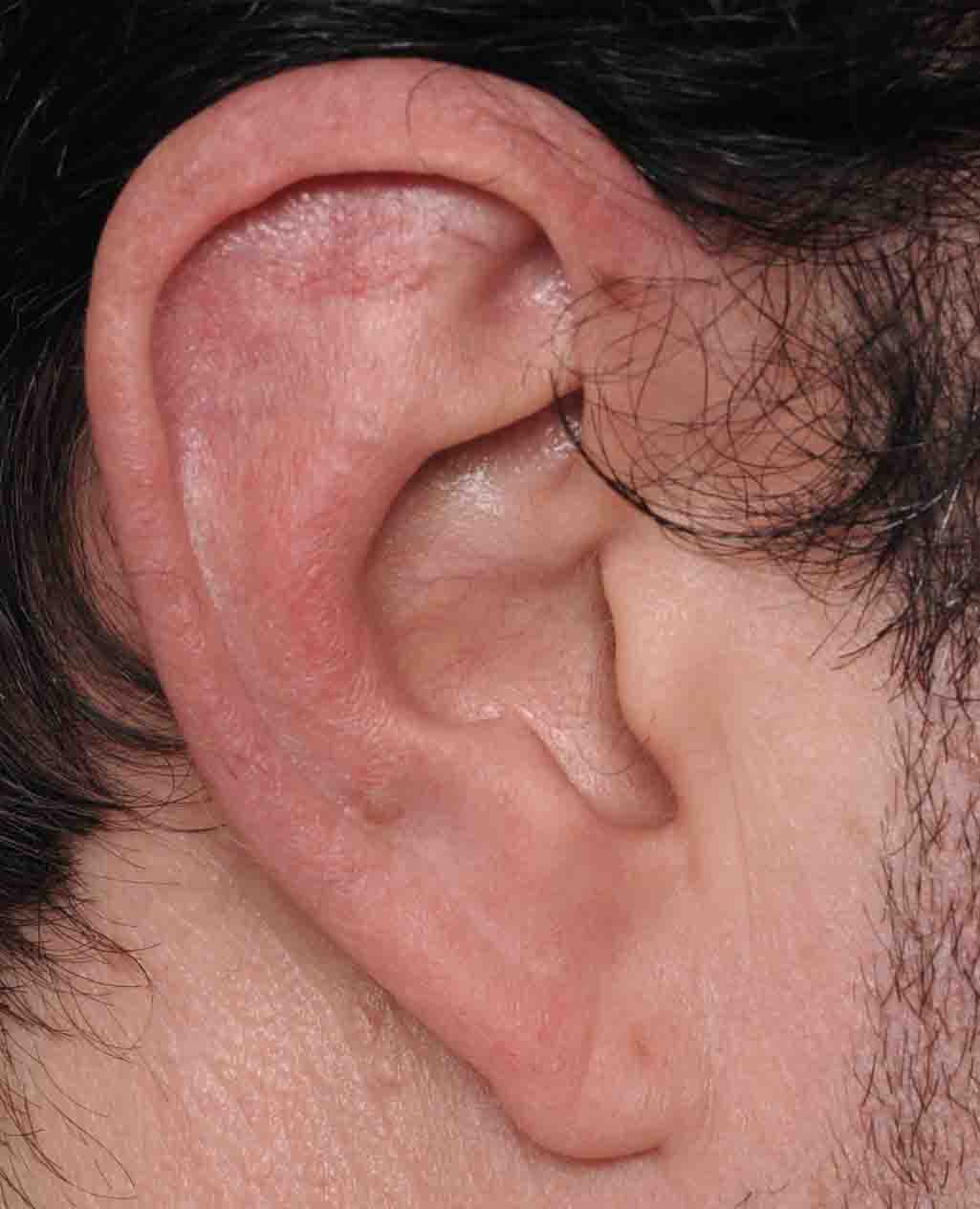
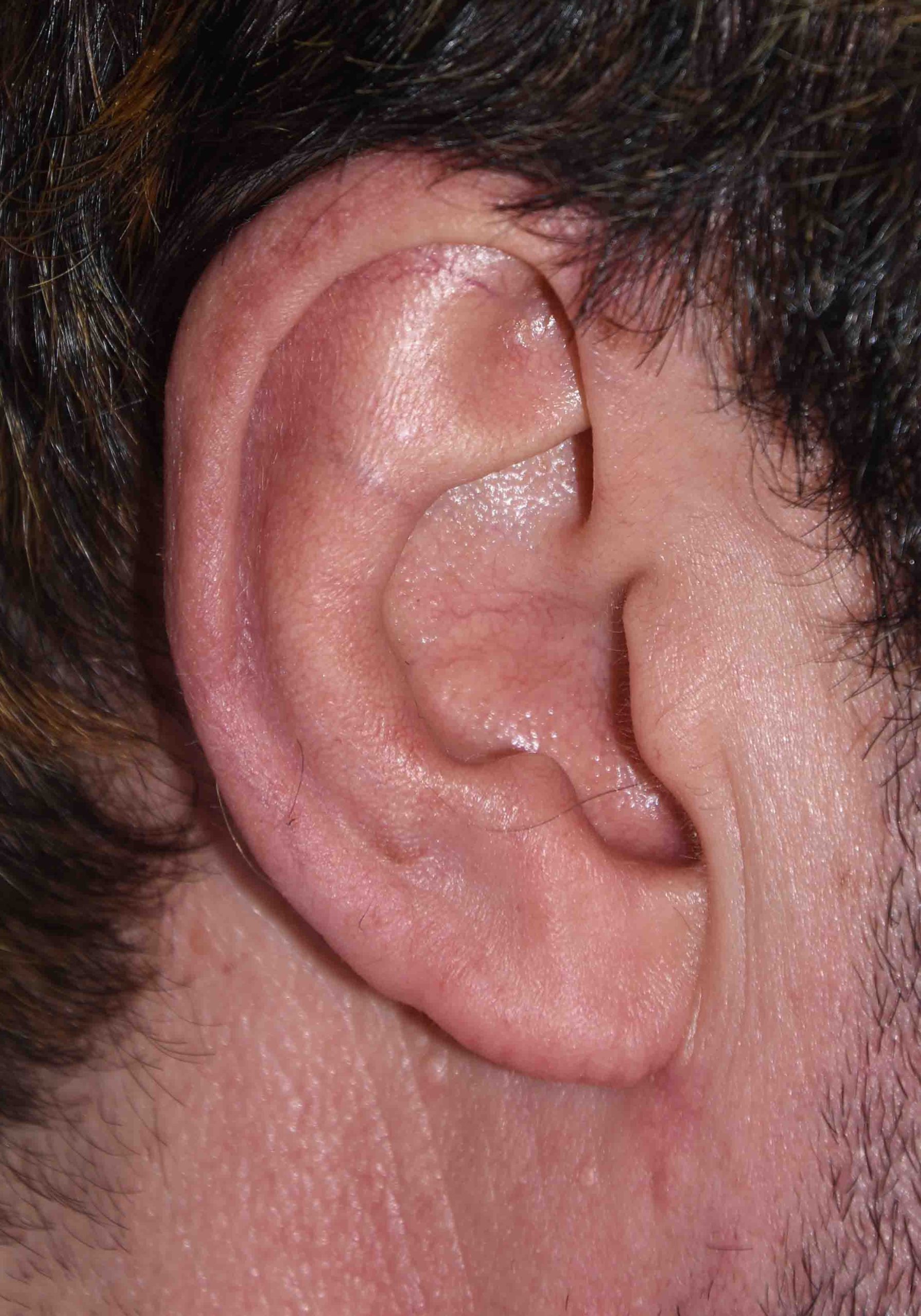
Desire to reduce the height of his large ears.
Vertical ear reduction/reshaping using a superior scapula flap transposition and inferior earlobe reductions.
Patient 101
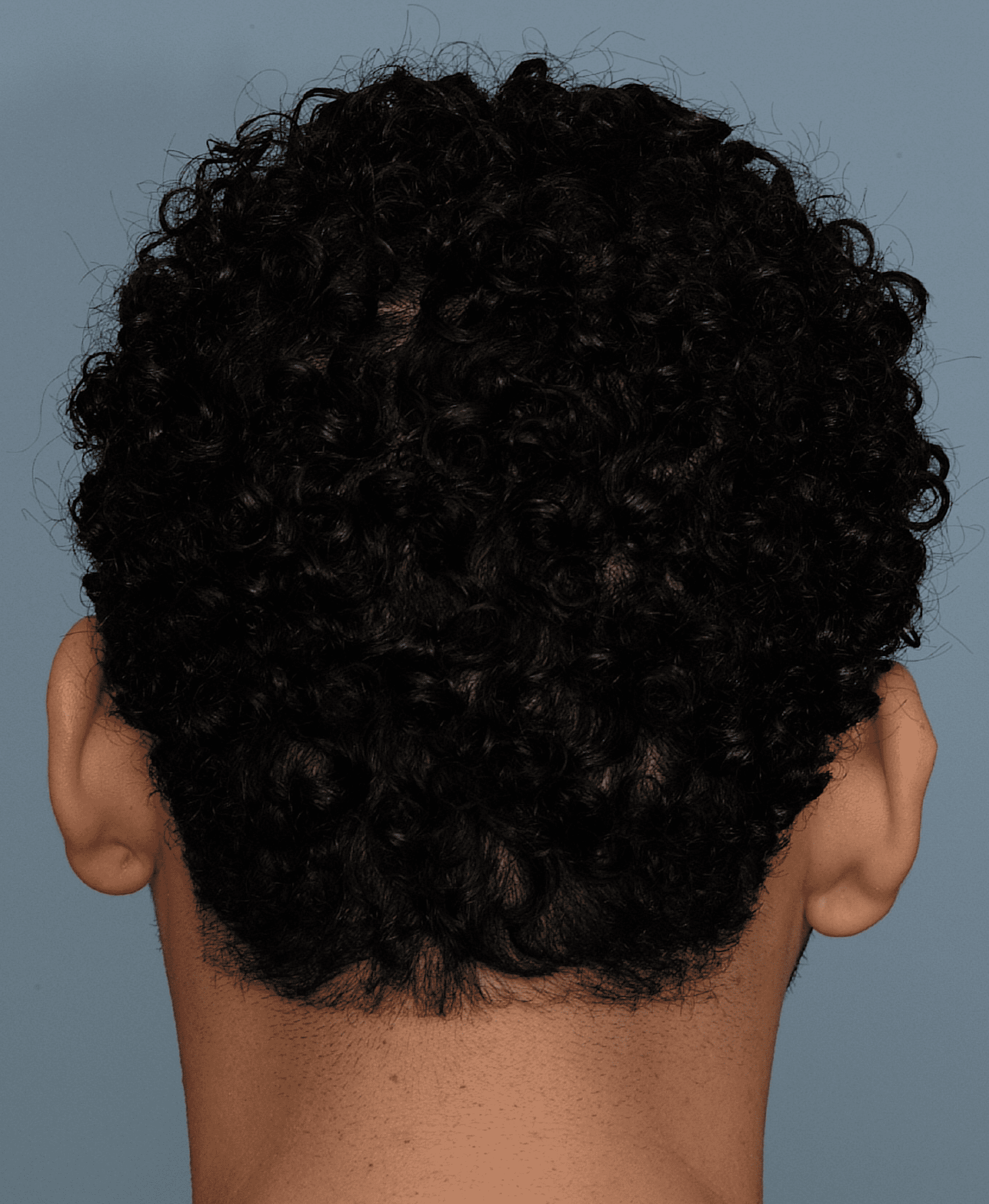

Desire for reduction of protruding wars.
Conchal setback otoplasty technique used to set back the ears. The most underdiagnosed protruding ear concern is when the cause is a large conchal bowl and not the lack of an antihelical fold.


Desire for reduction of protruding wars.
Conchal setback otoplasty technique used to set back the ears. The most underdiagnosed protruding ear concern is when the cause is a large conchal bowl and not the lack of an antihelical fold.
Patient 102
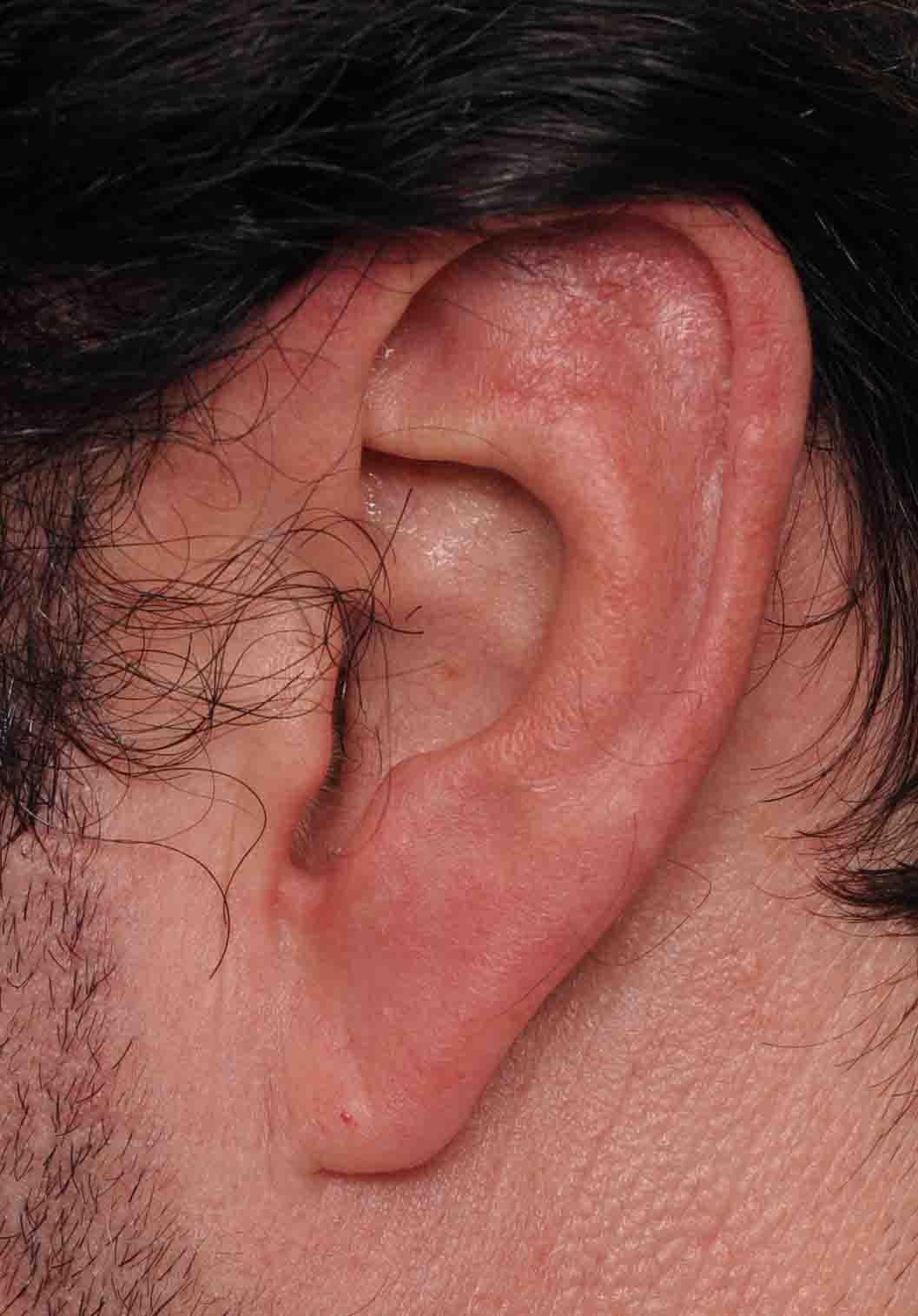
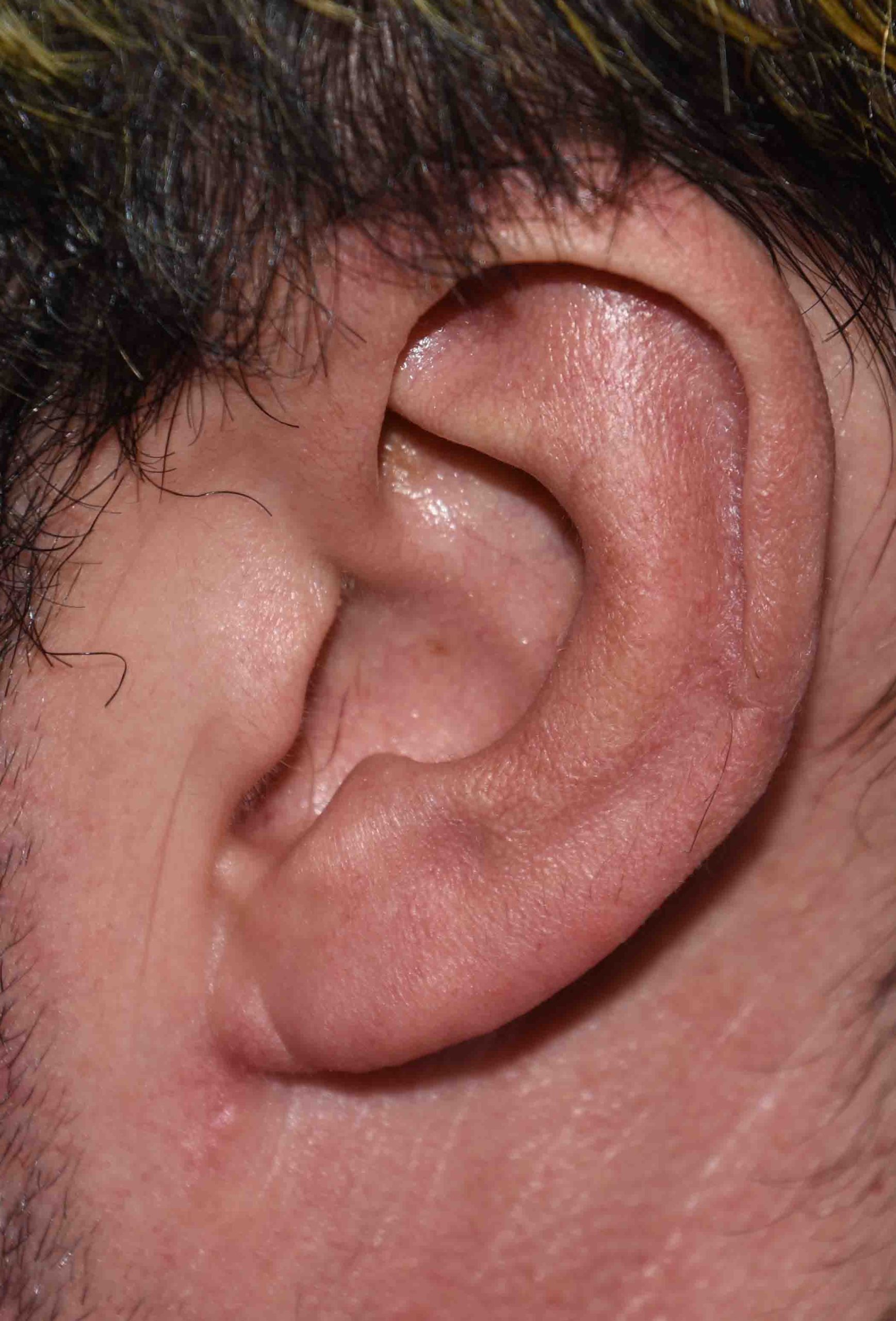
Desire for smaller ears.
Vertical ear reductions using superior scaphal flaps and inferior earlobe reductions.


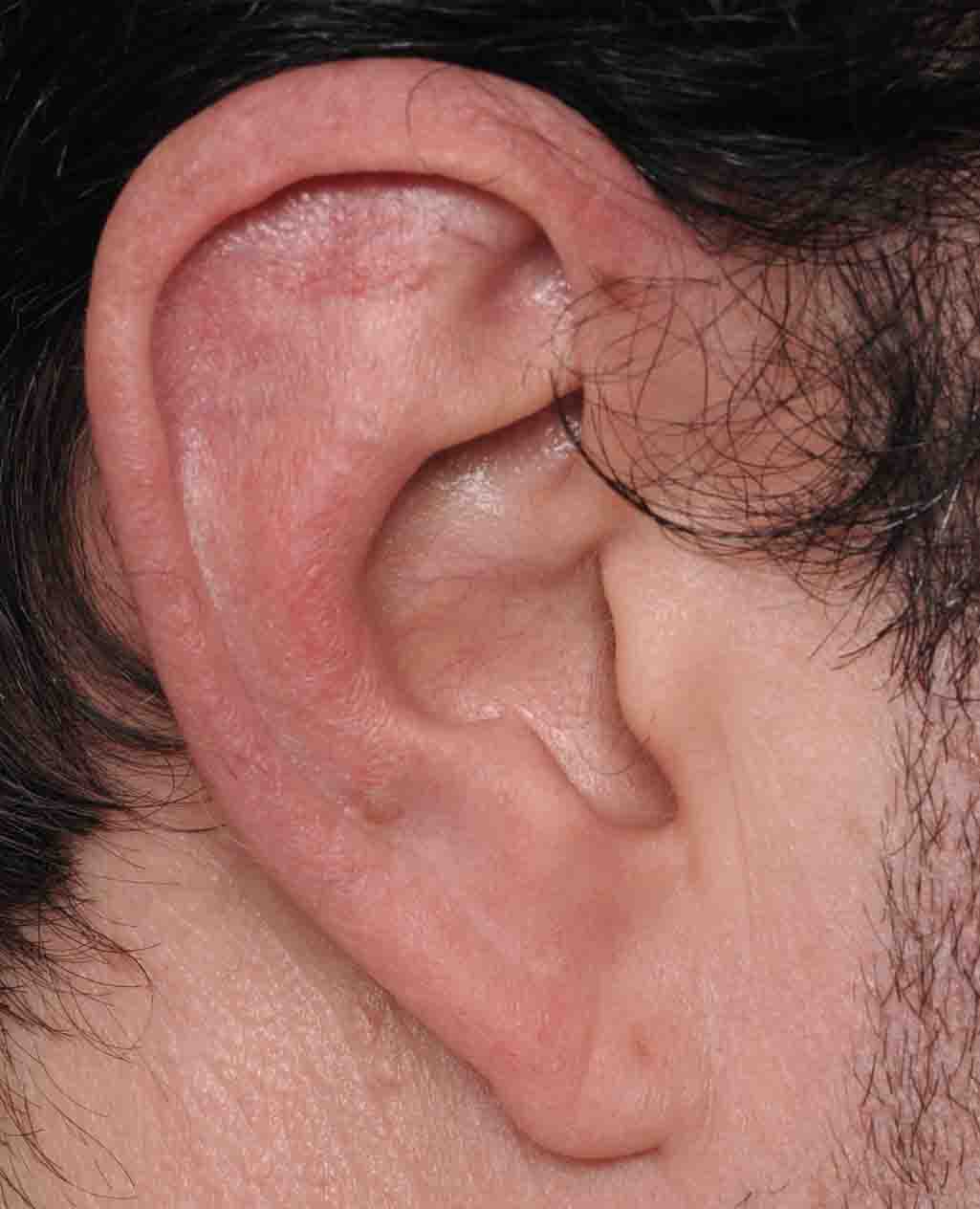
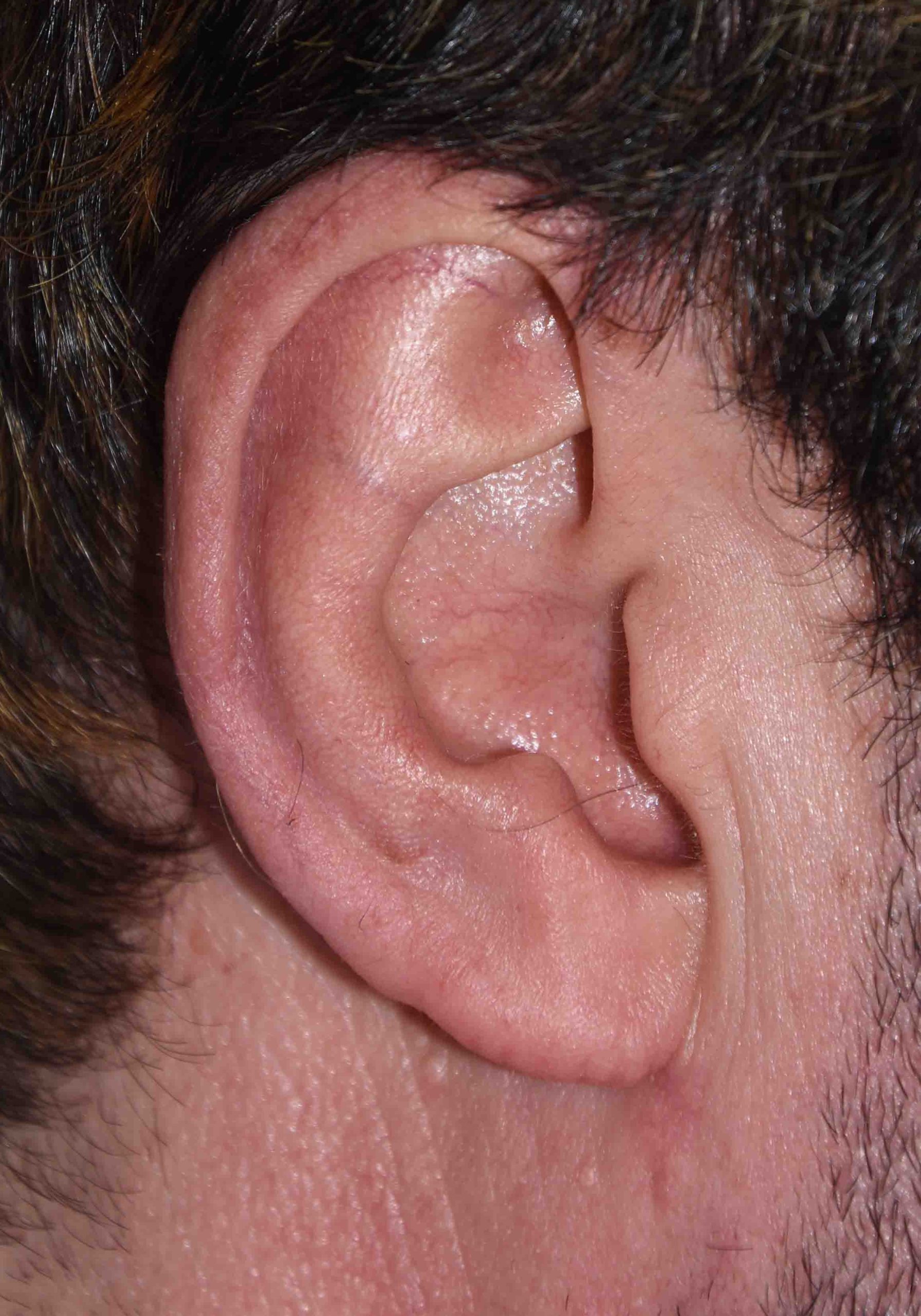
Desire for smaller ears.
Vertical ear reductions using superior scaphal flaps and inferior earlobe reductions.
Patient 103
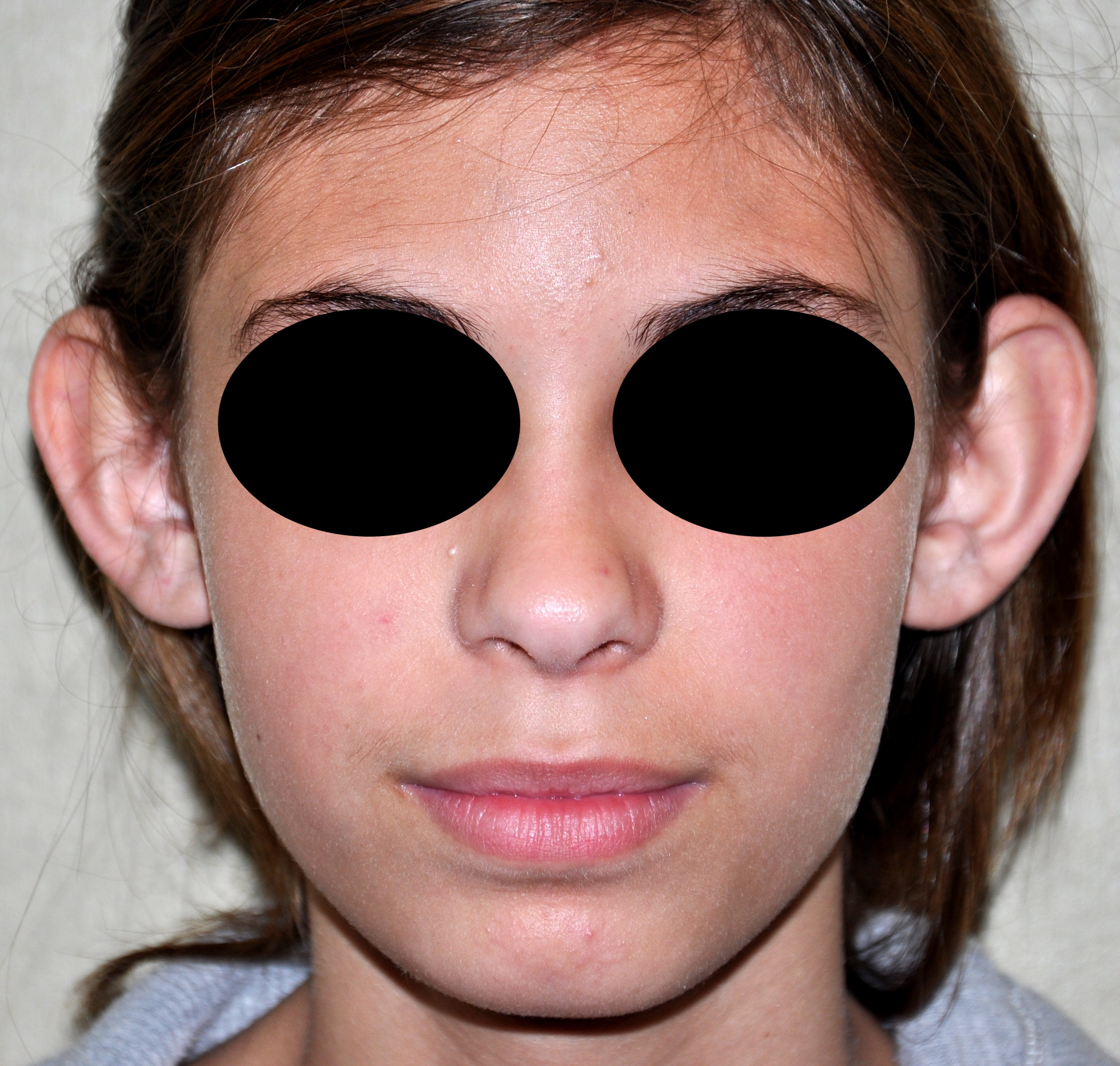
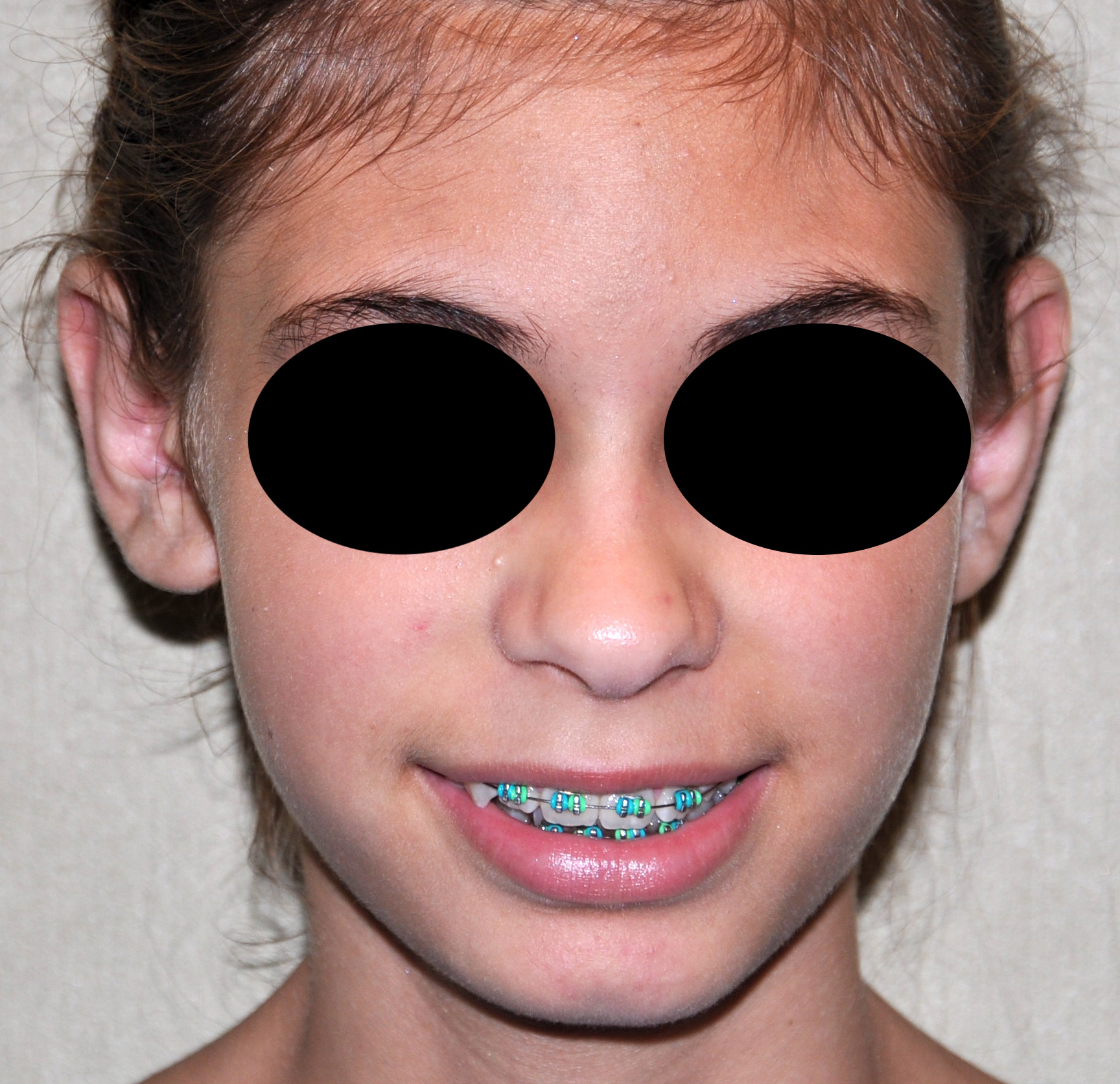
Desire for correction of protruding ears.
A setback otoplasty was performed as a teenager with good results. She was seen again 12 years later to remove a single extruding suture on the back of the left ear. Her ear position had remained stable.


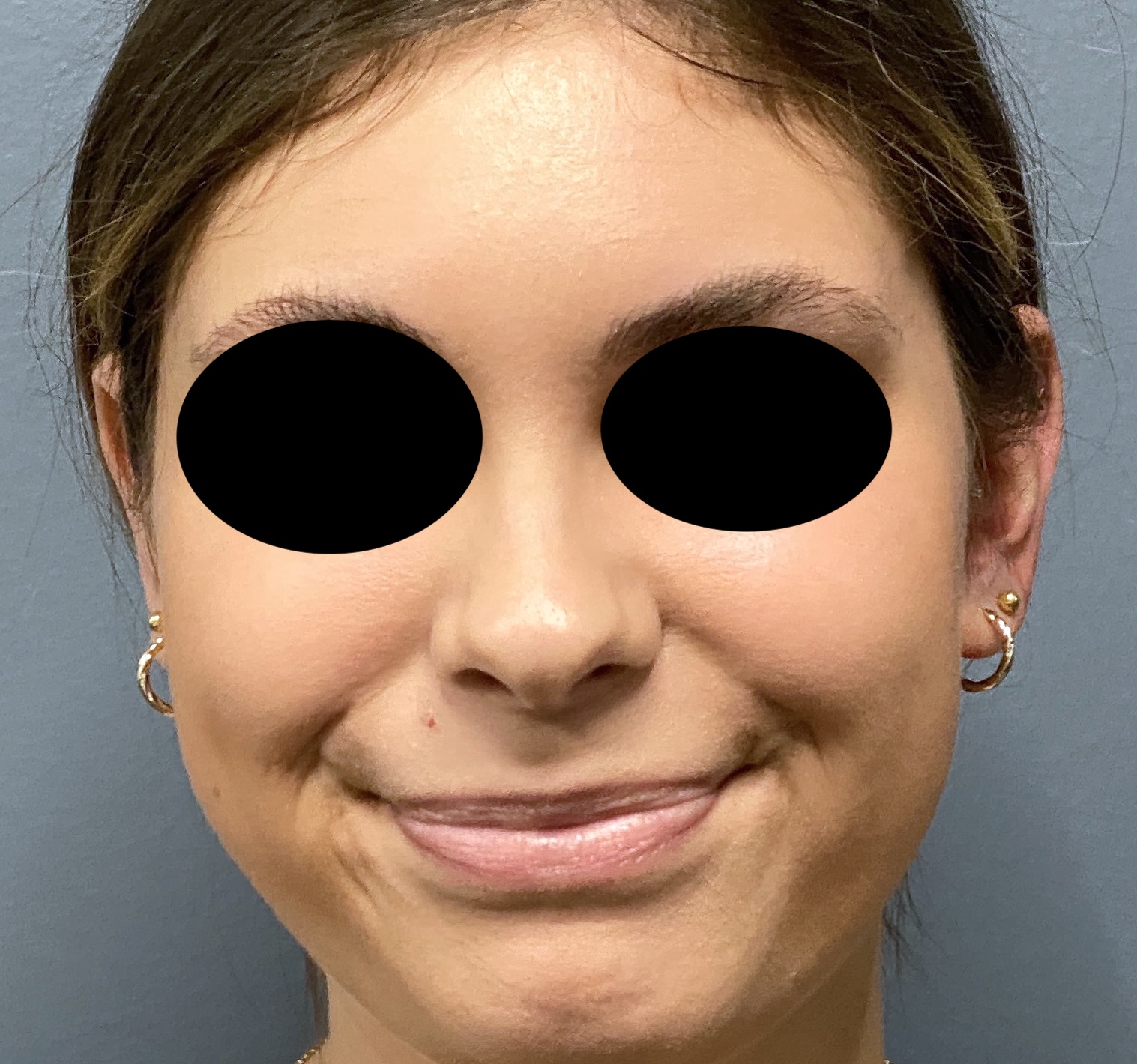
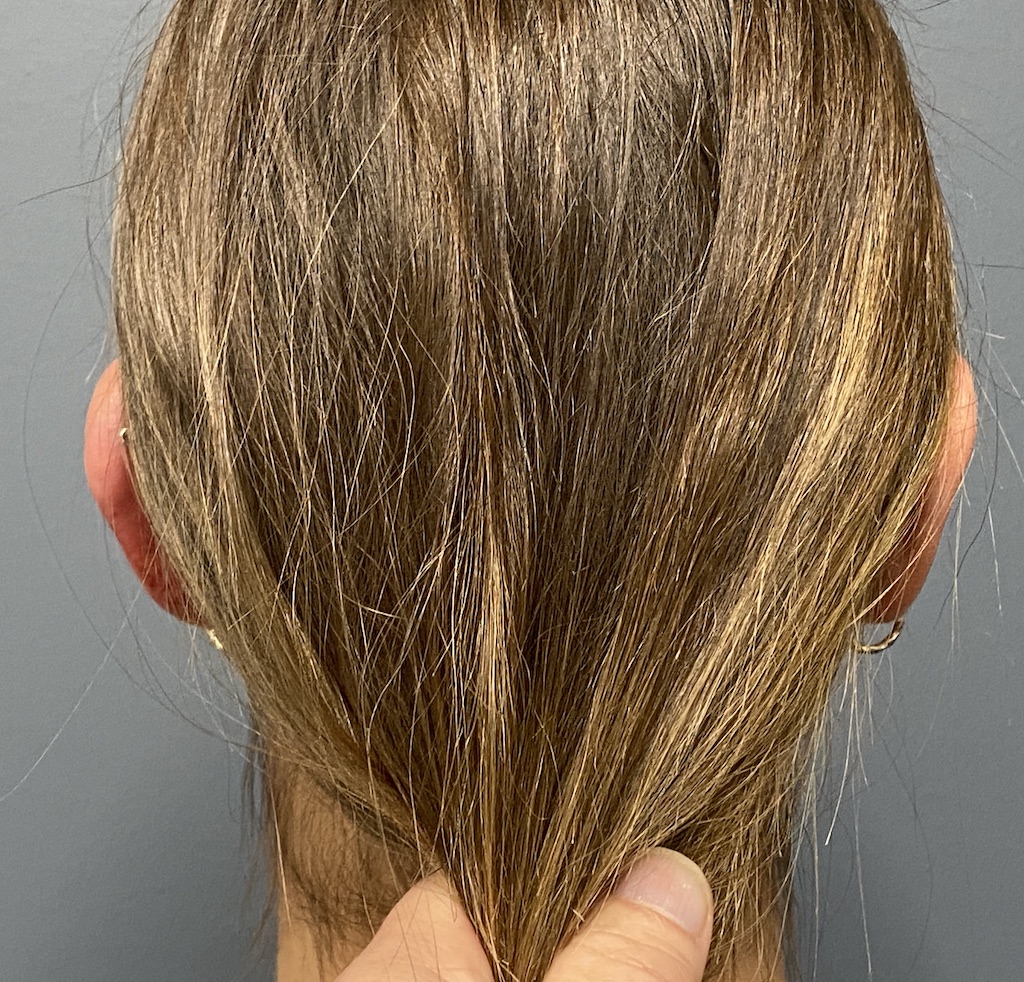
Desire for correction of protruding ears.
A setback otoplasty was performed as a teenager with good results. She was seen again 12 years later to remove a single extruding suture on the back of the left ear. Her ear position had remained stable.
Patient 104
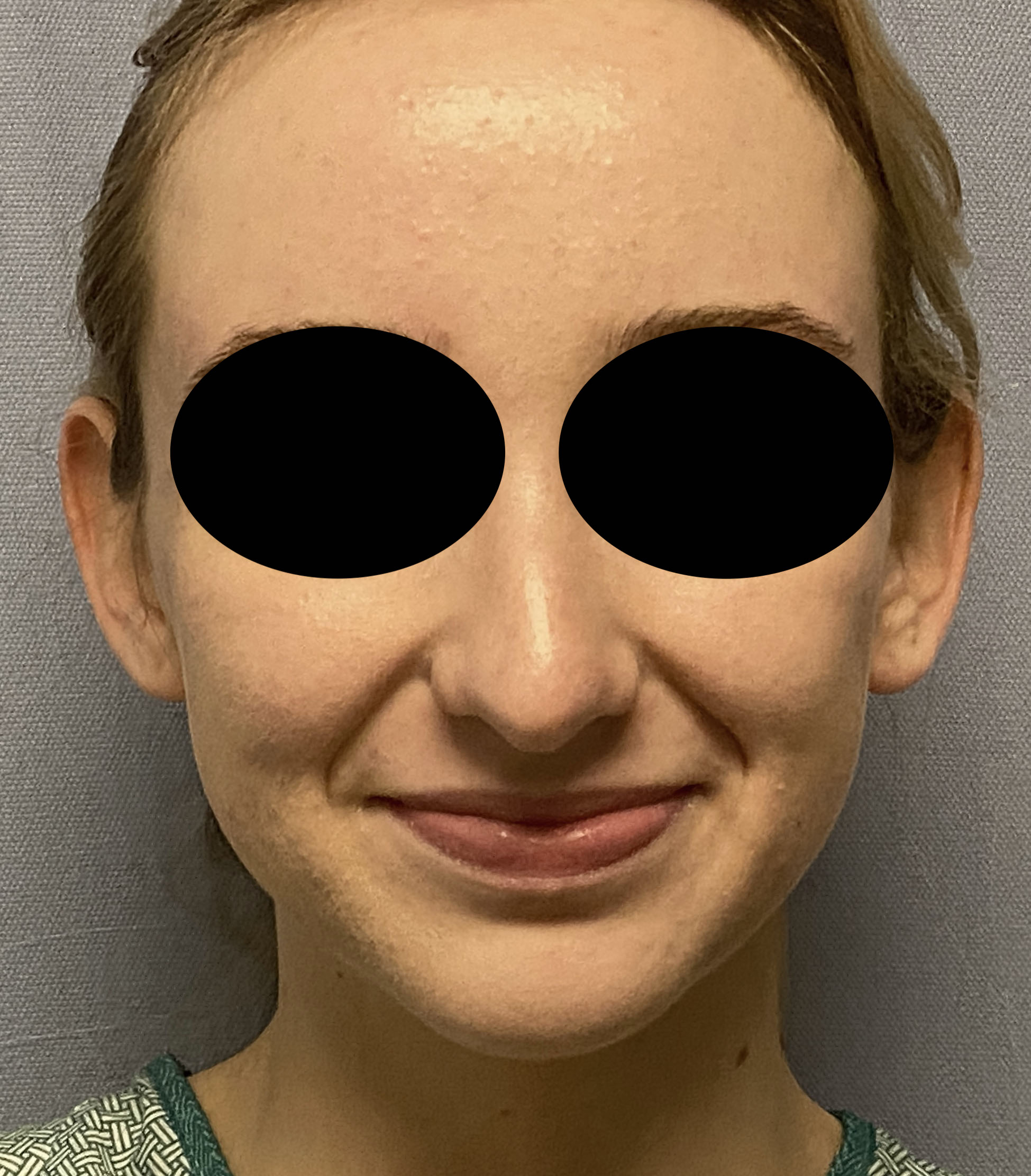
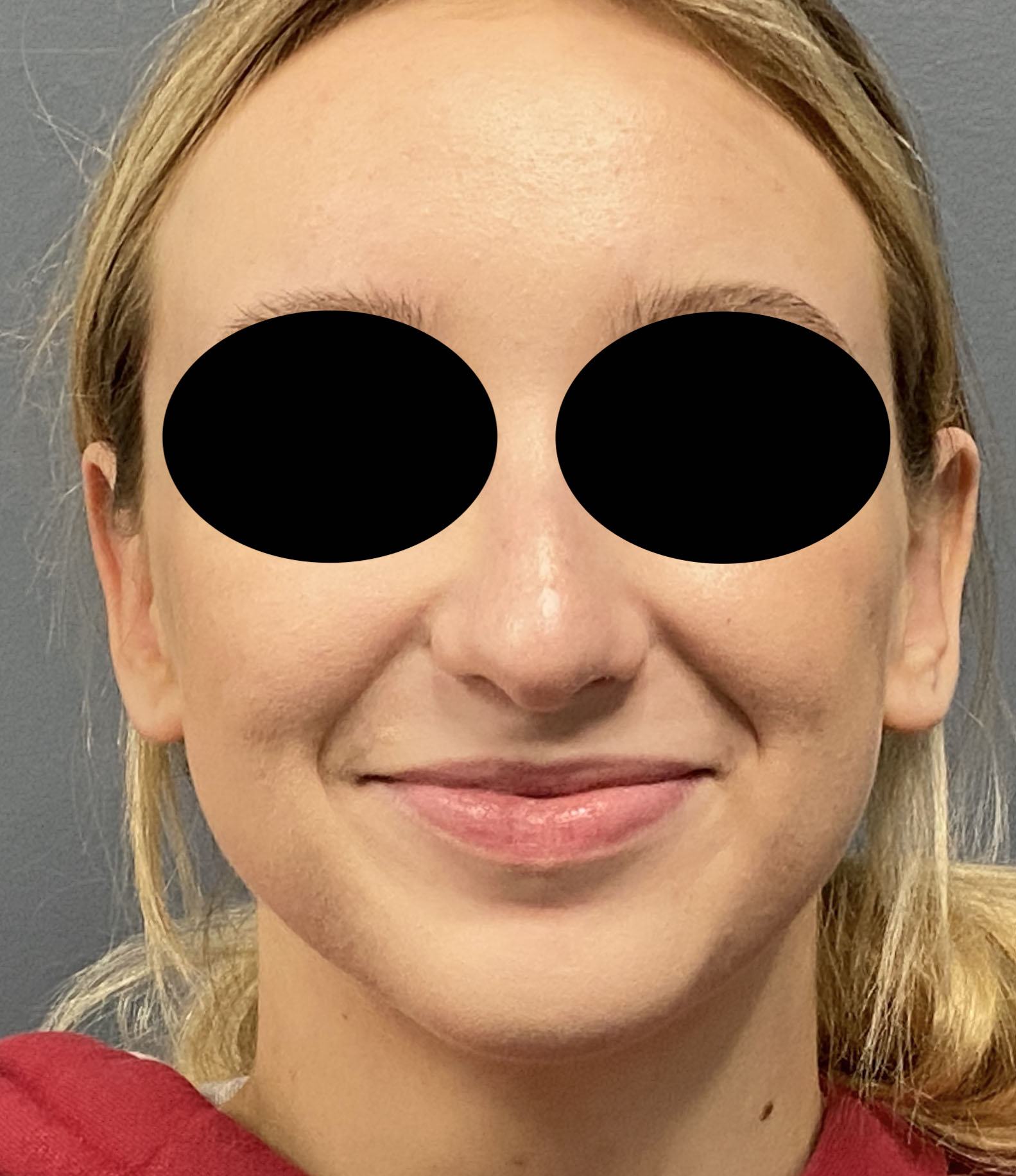
Desire for correction of protruding ears.
Conchae-based protruding wars treated by conchal repositioning by concha-mastoid sutures.


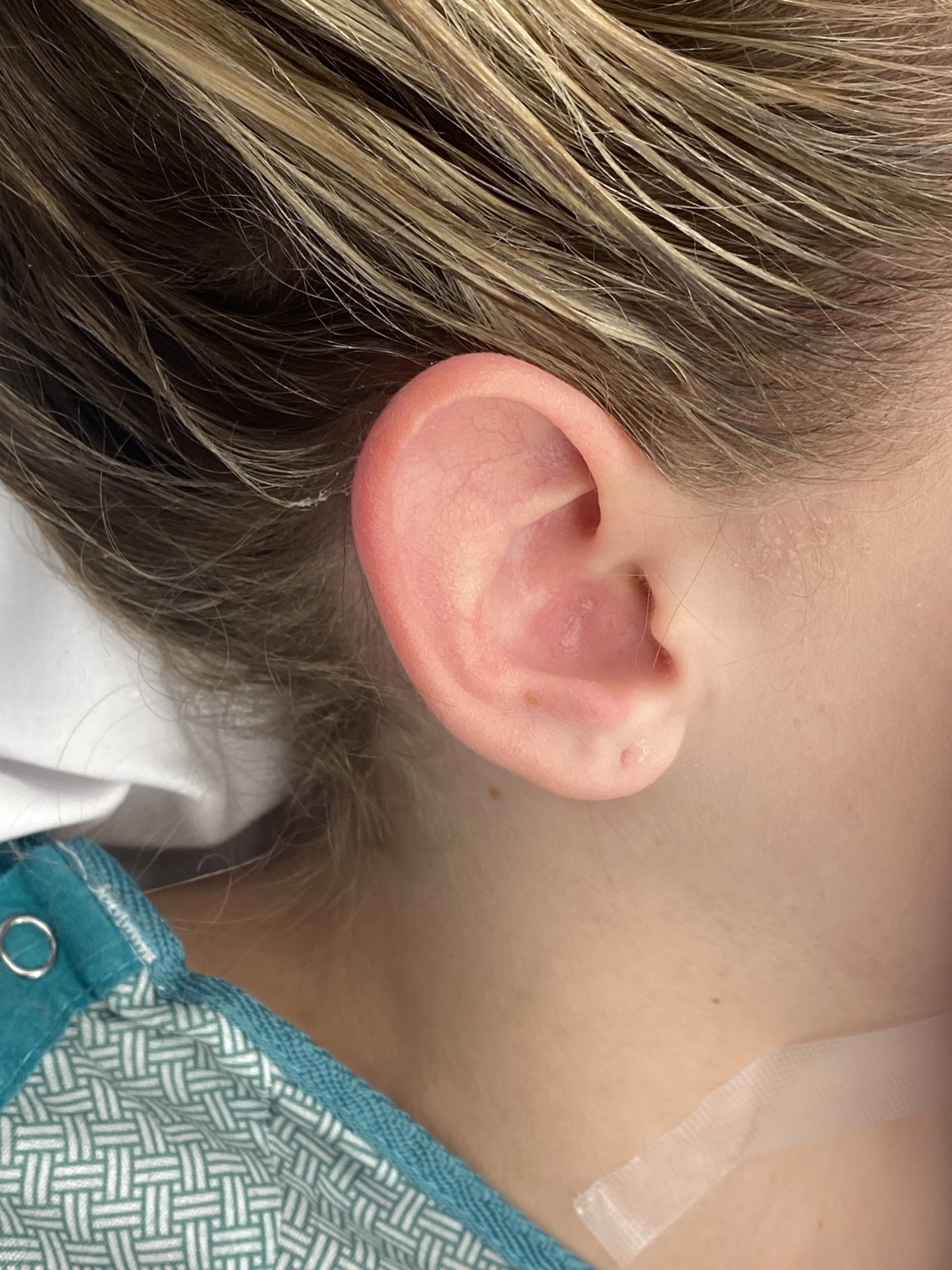
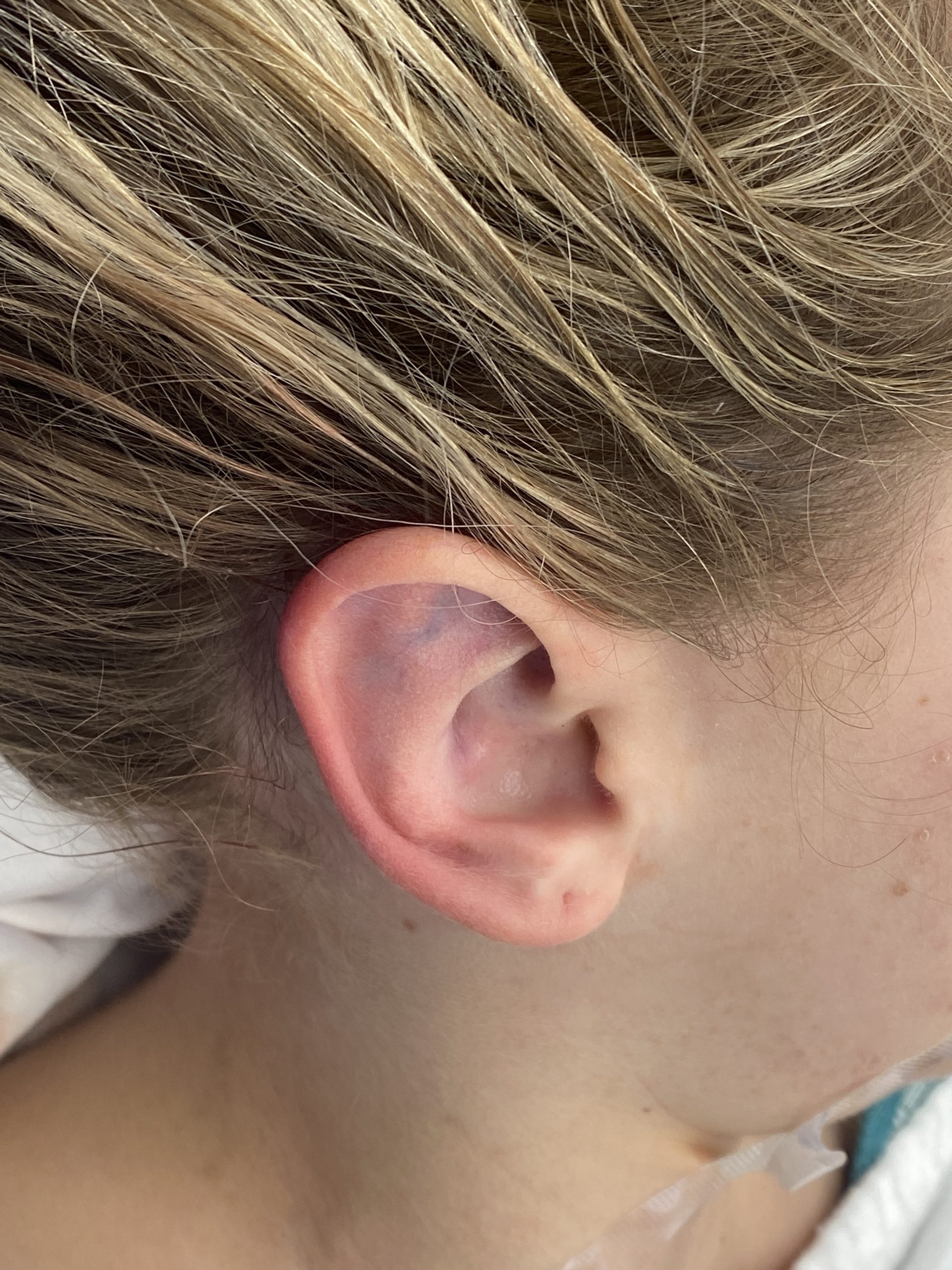
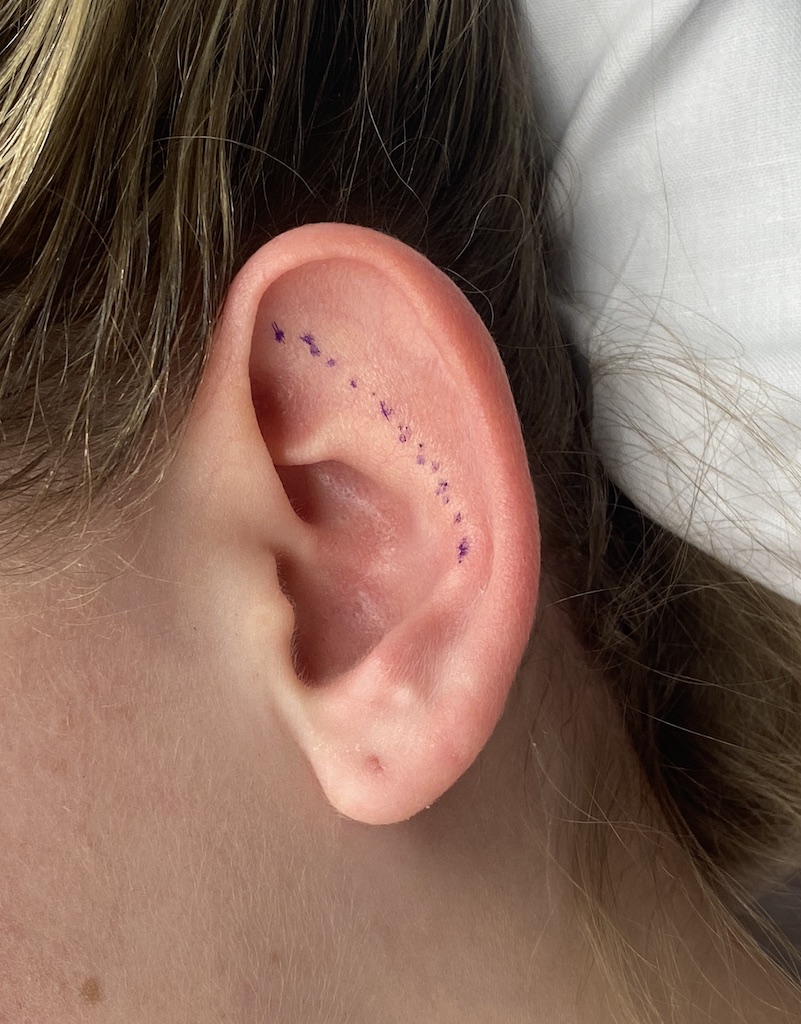
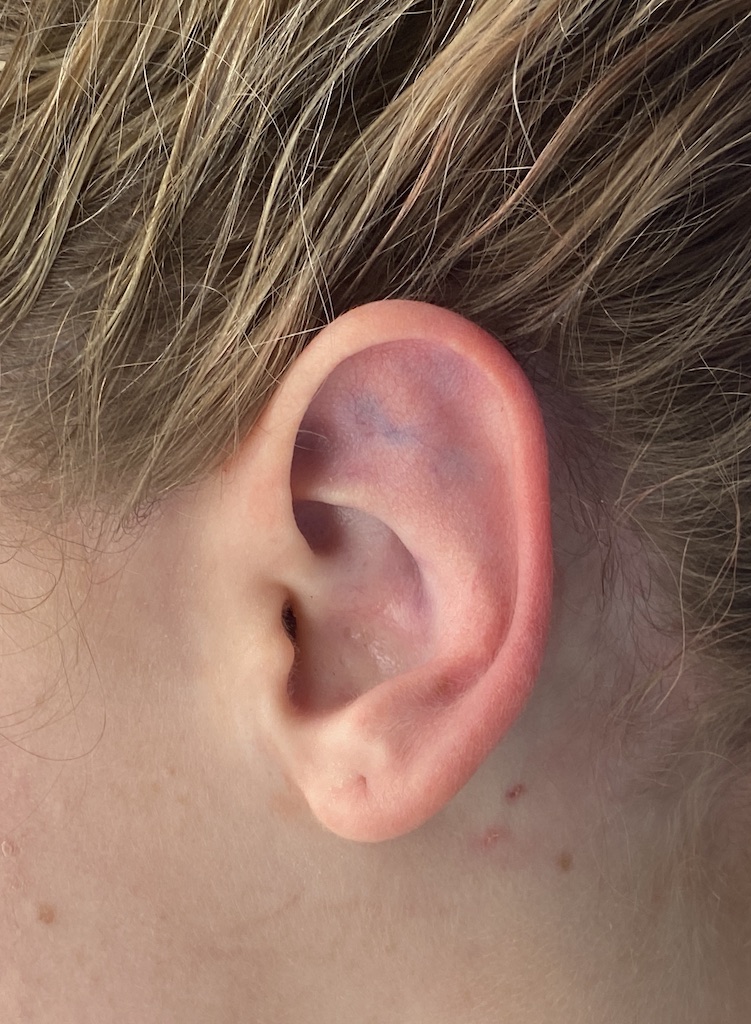
Desire for correction of protruding ears.
Conchae-based protruding wars treated by conchal repositioning by concha-mastoid sutures.
Patient 105
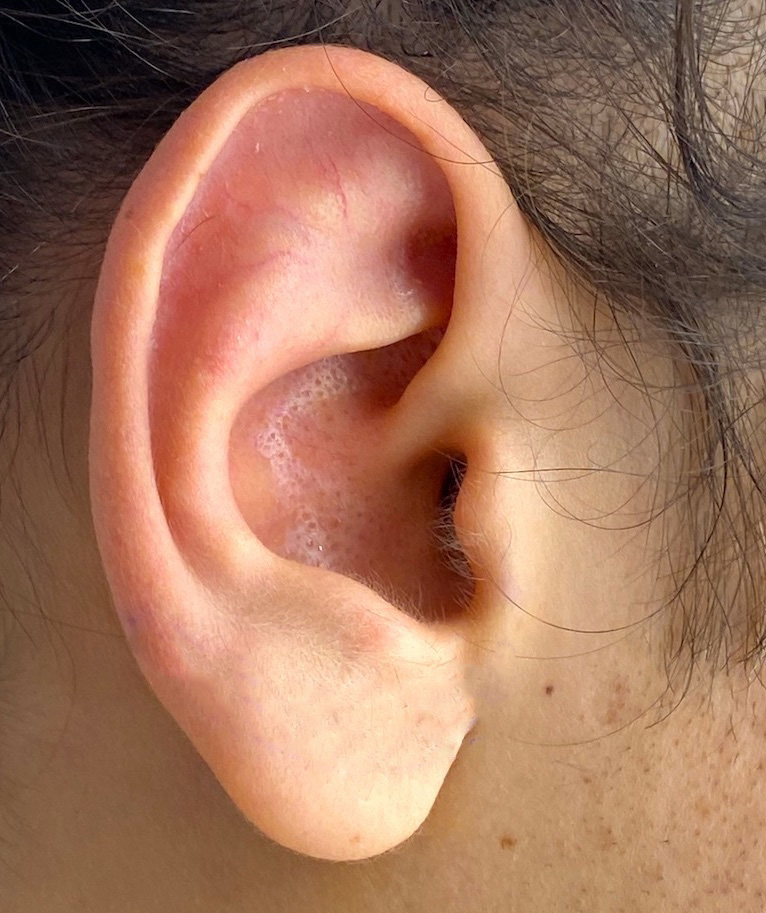
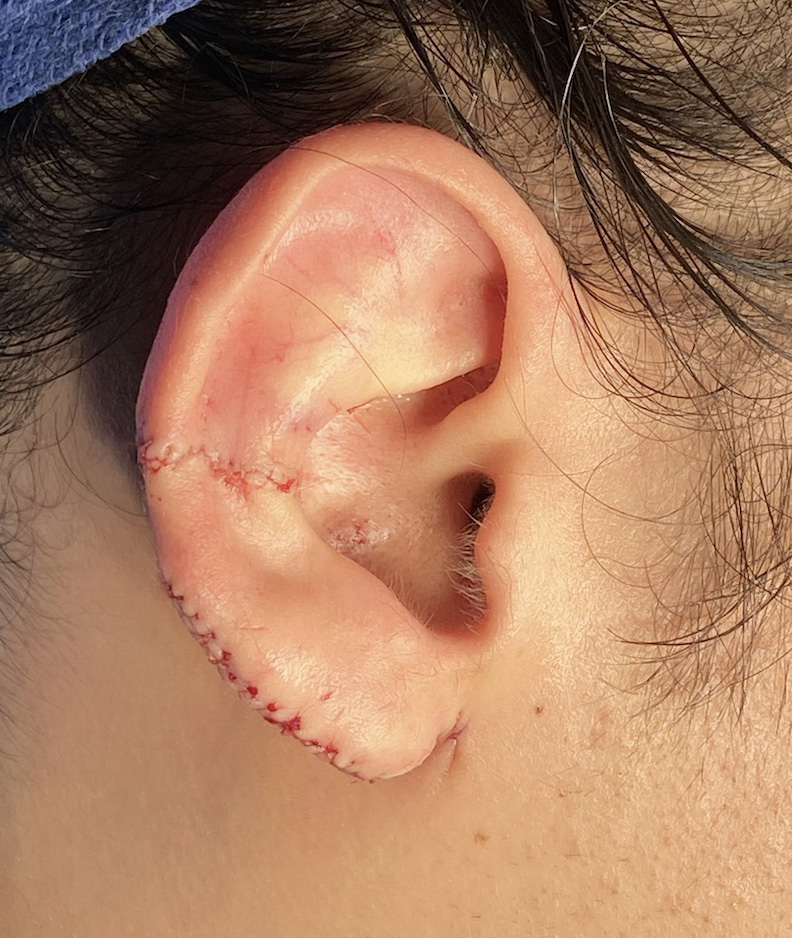
Desire for much smaller ear size.
Macrotia réduction using a combination of earlobe reduction combined with a middle ear resection to reduce the size of the comcha.


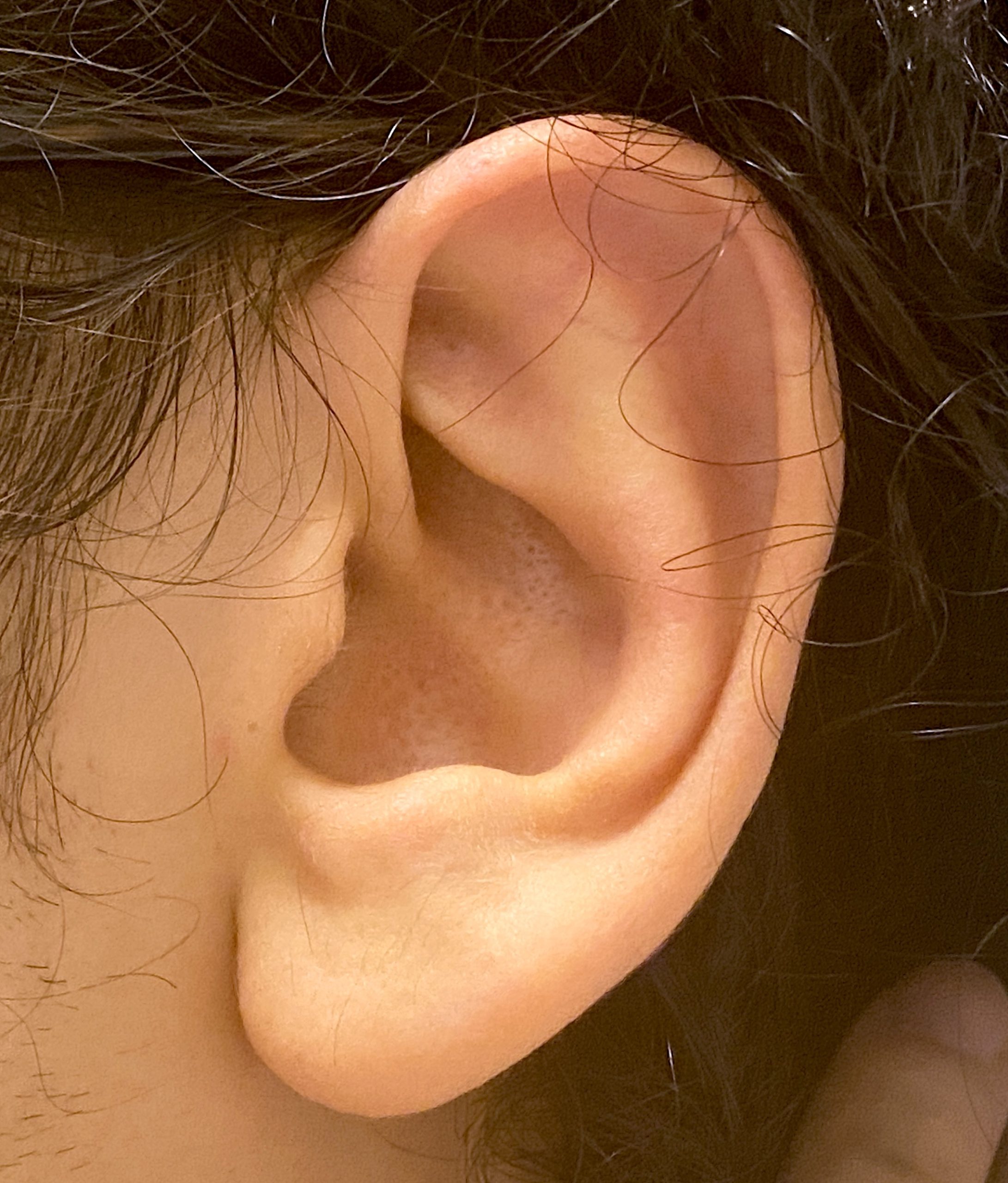
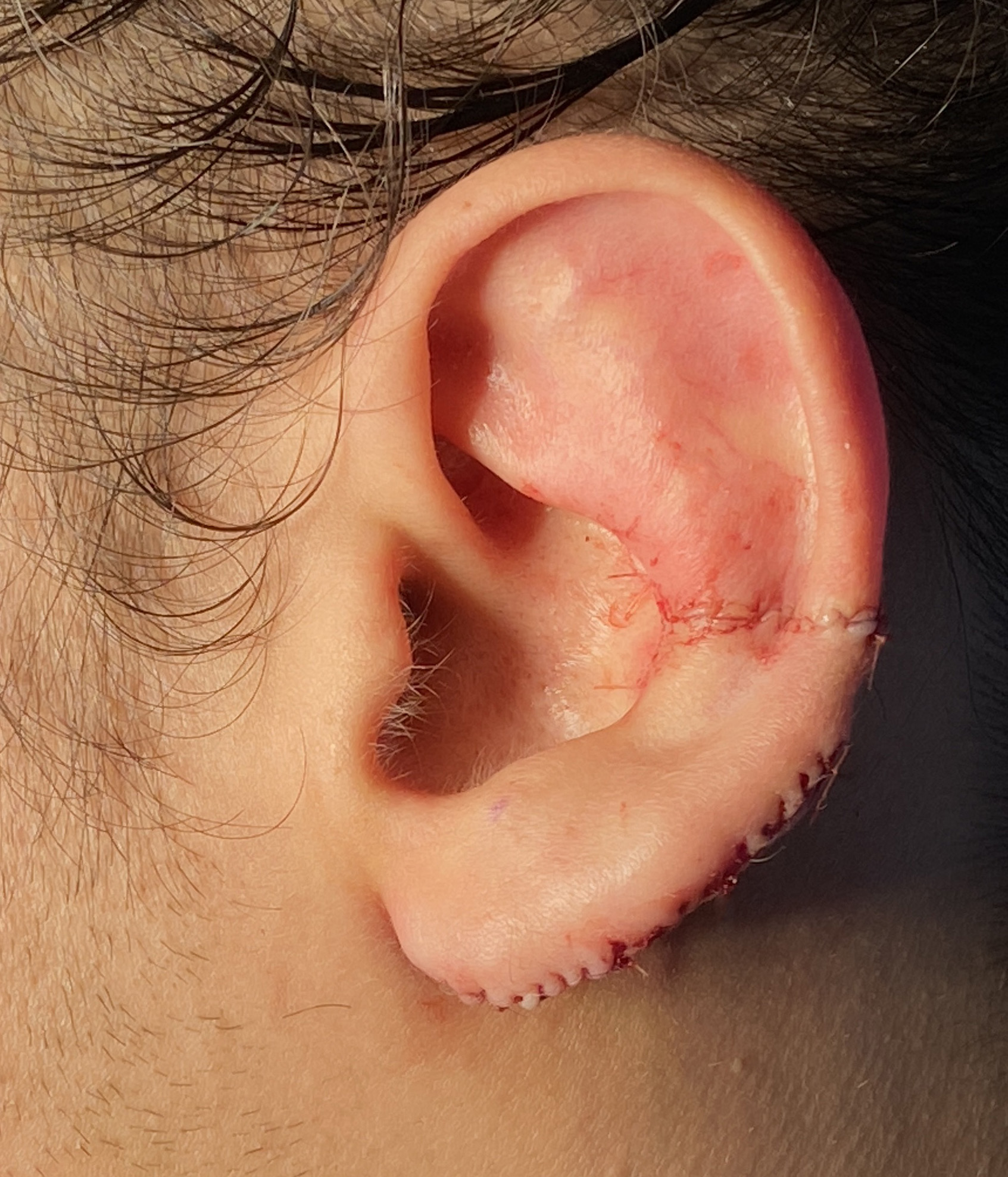
Desire for much smaller ear size.
Macrotia réduction using a combination of earlobe reduction combined with a middle ear resection to reduce the size of the comcha.
Patient 106
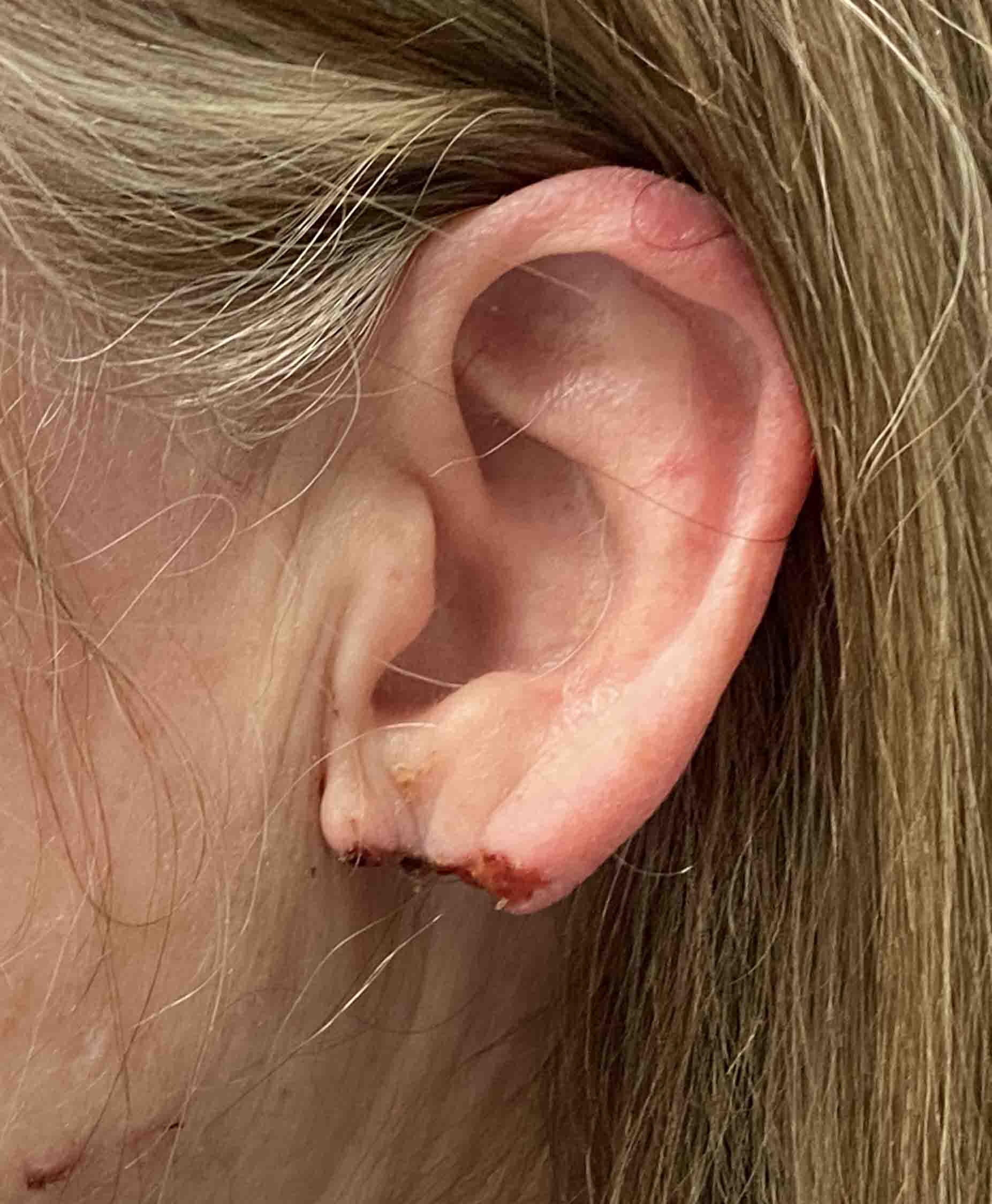
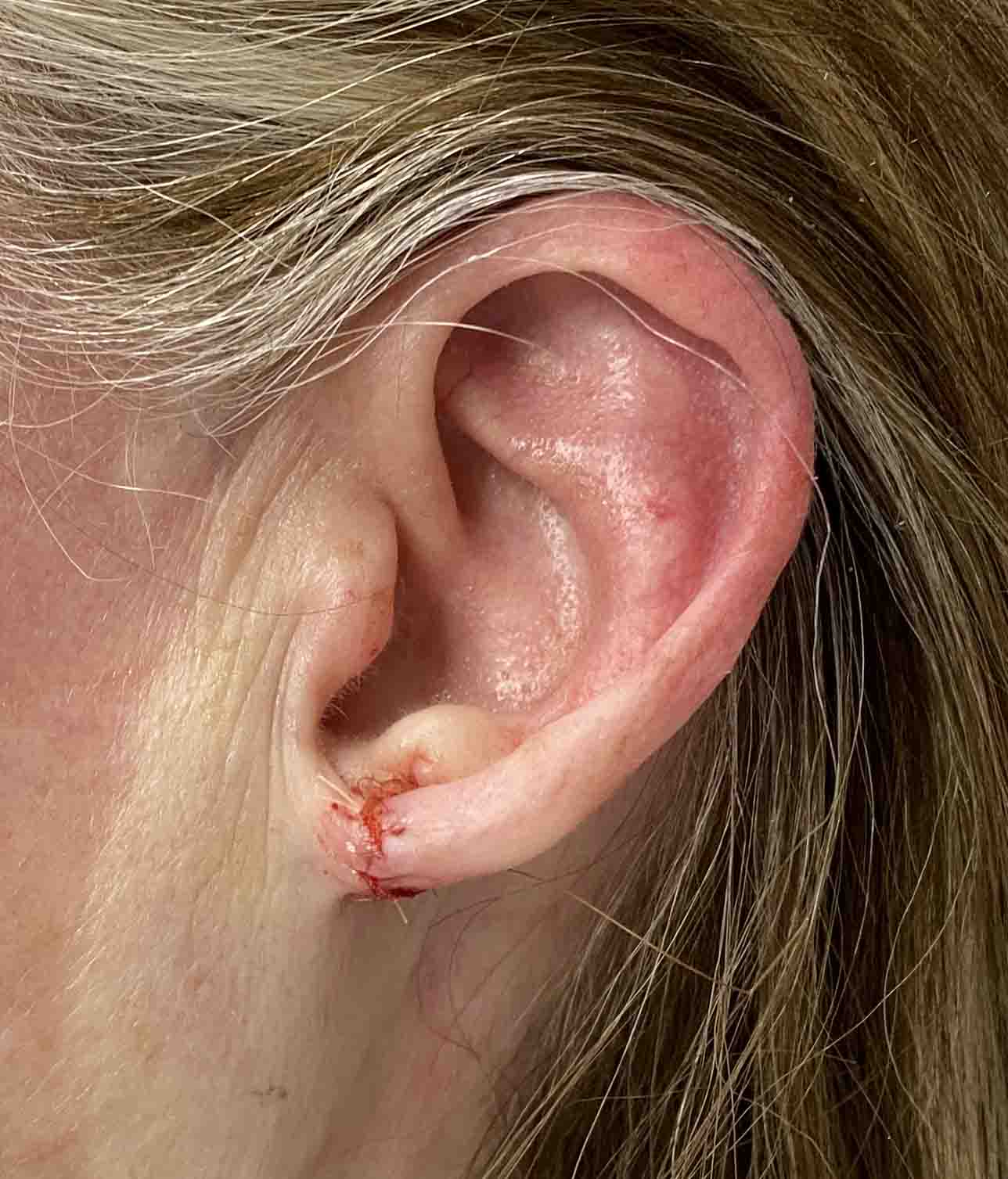
Had a traumatic loss of much of her left earlobe from a dogbite.
Repair of her week old dog bite ear injury. With loss of much over her earlobe length she will the right earlobe subsequently reduced as well.


Had a traumatic loss of much of her left earlobe from a dogbite.
Repair of her week old dog bite ear injury. With loss of much over her earlobe length she will the right earlobe subsequently reduced as well.
Patient 107
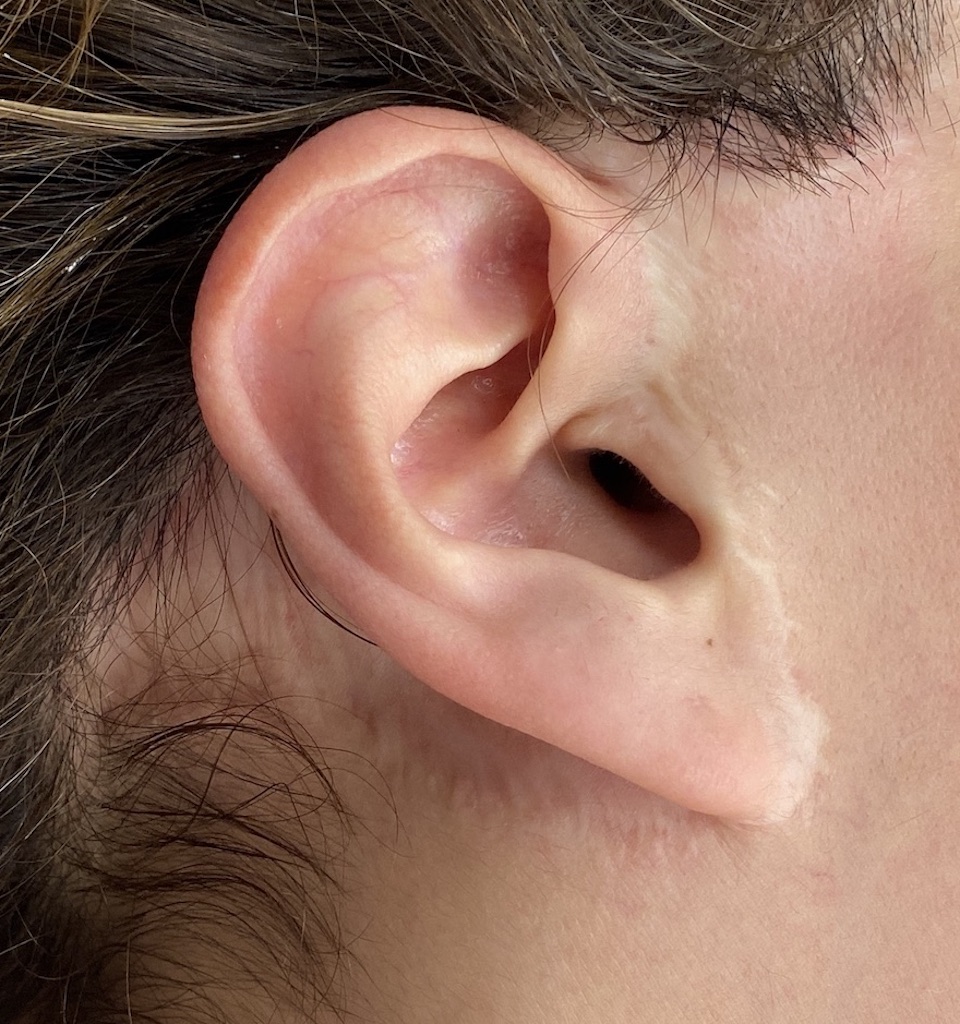
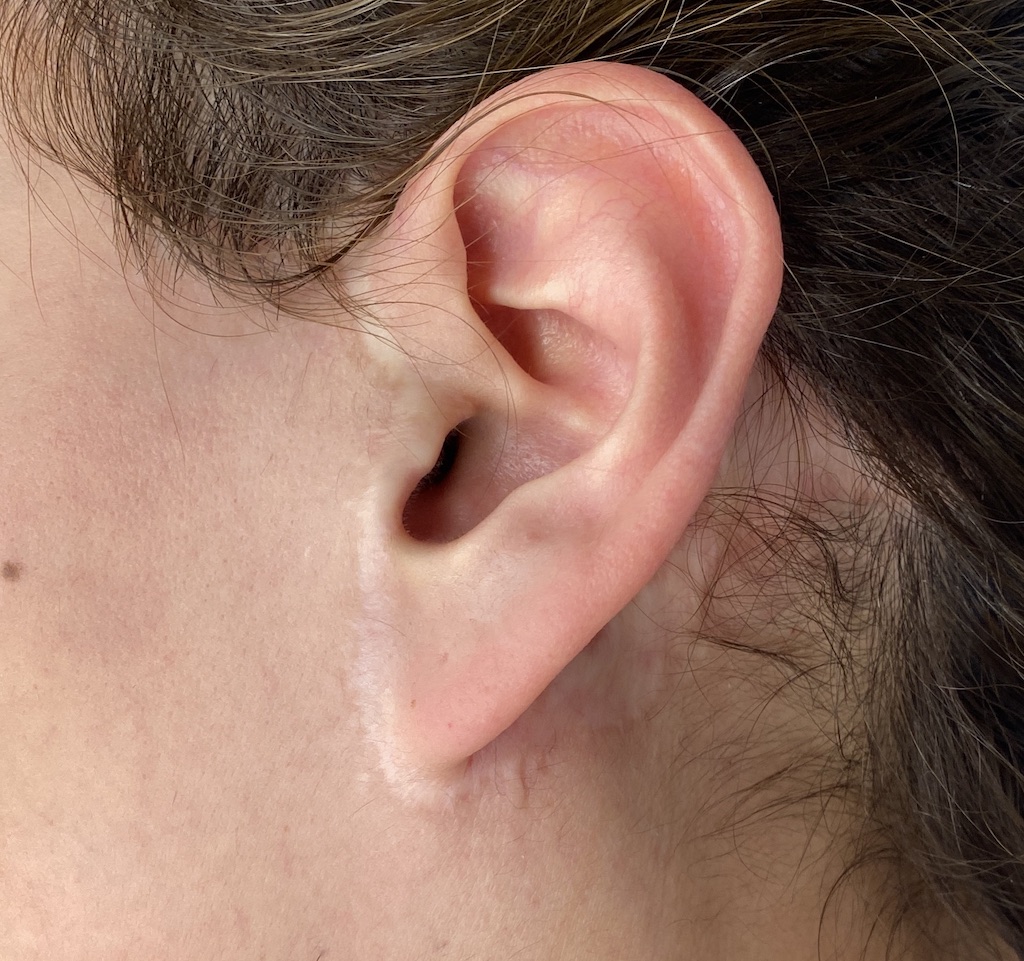
Significant pixie ear deformities from prior facelift.
Pixie ear corrections requiring a secondary facelift with earlobe reductions. her ear height decreased from 78mms down to 65mms


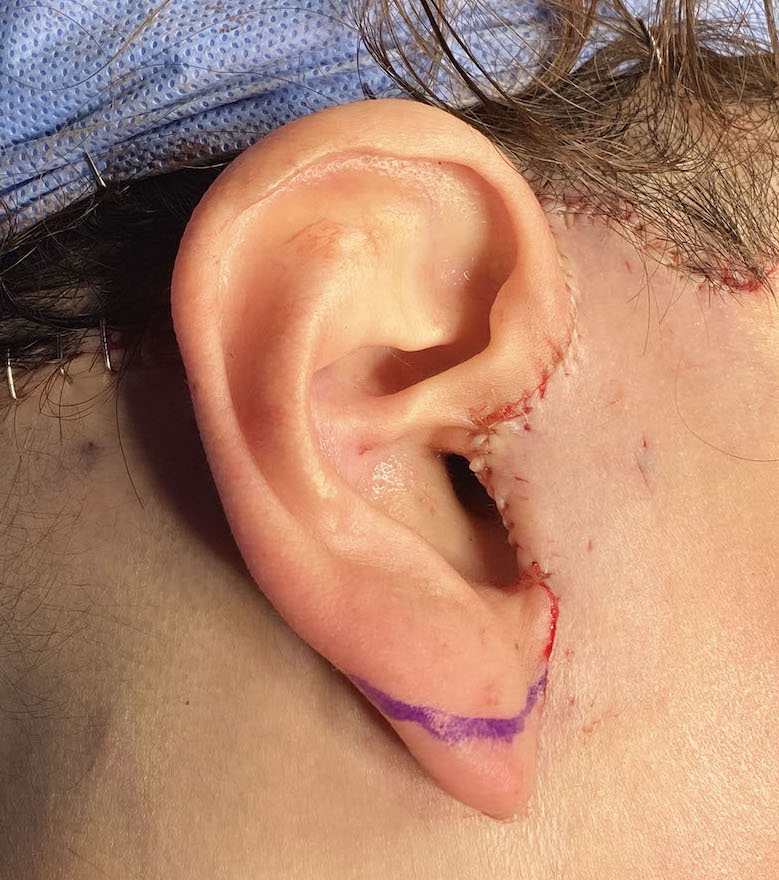
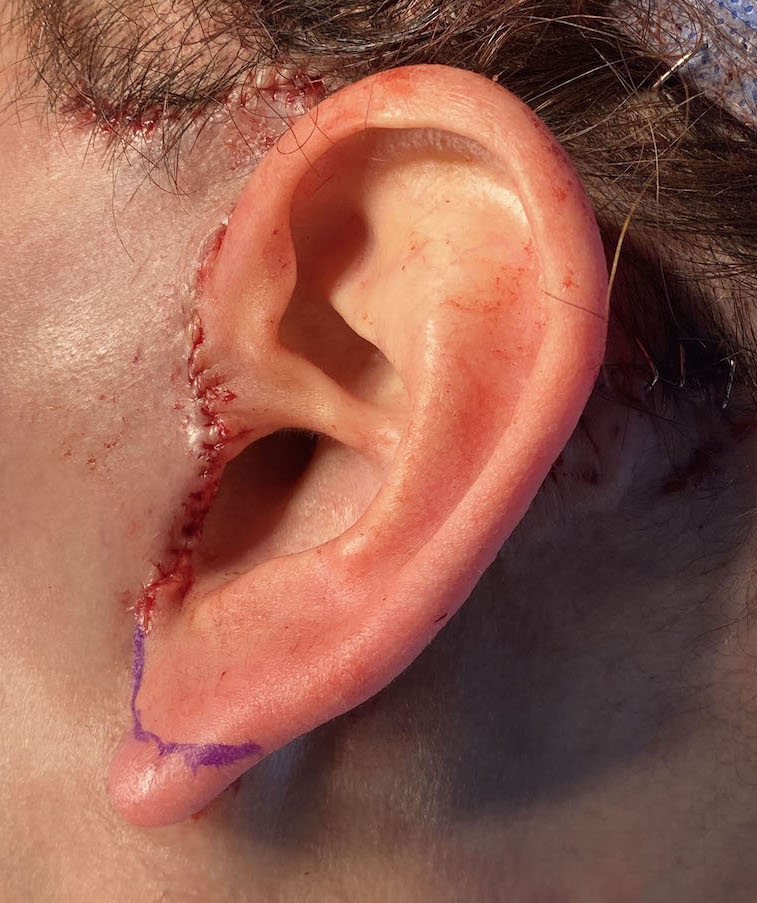
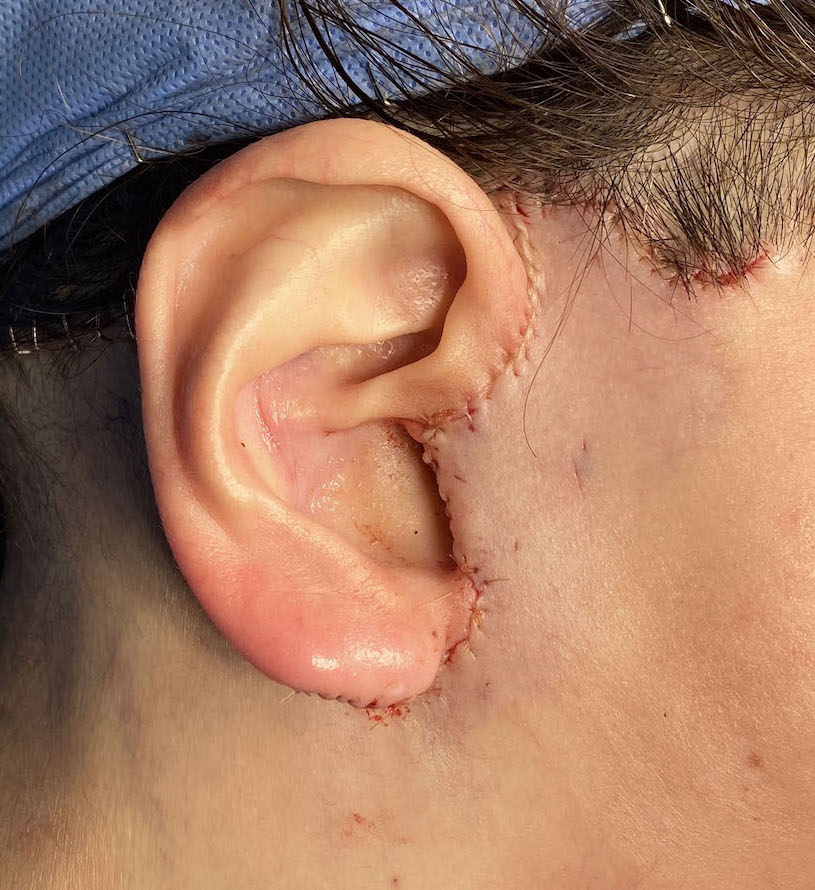
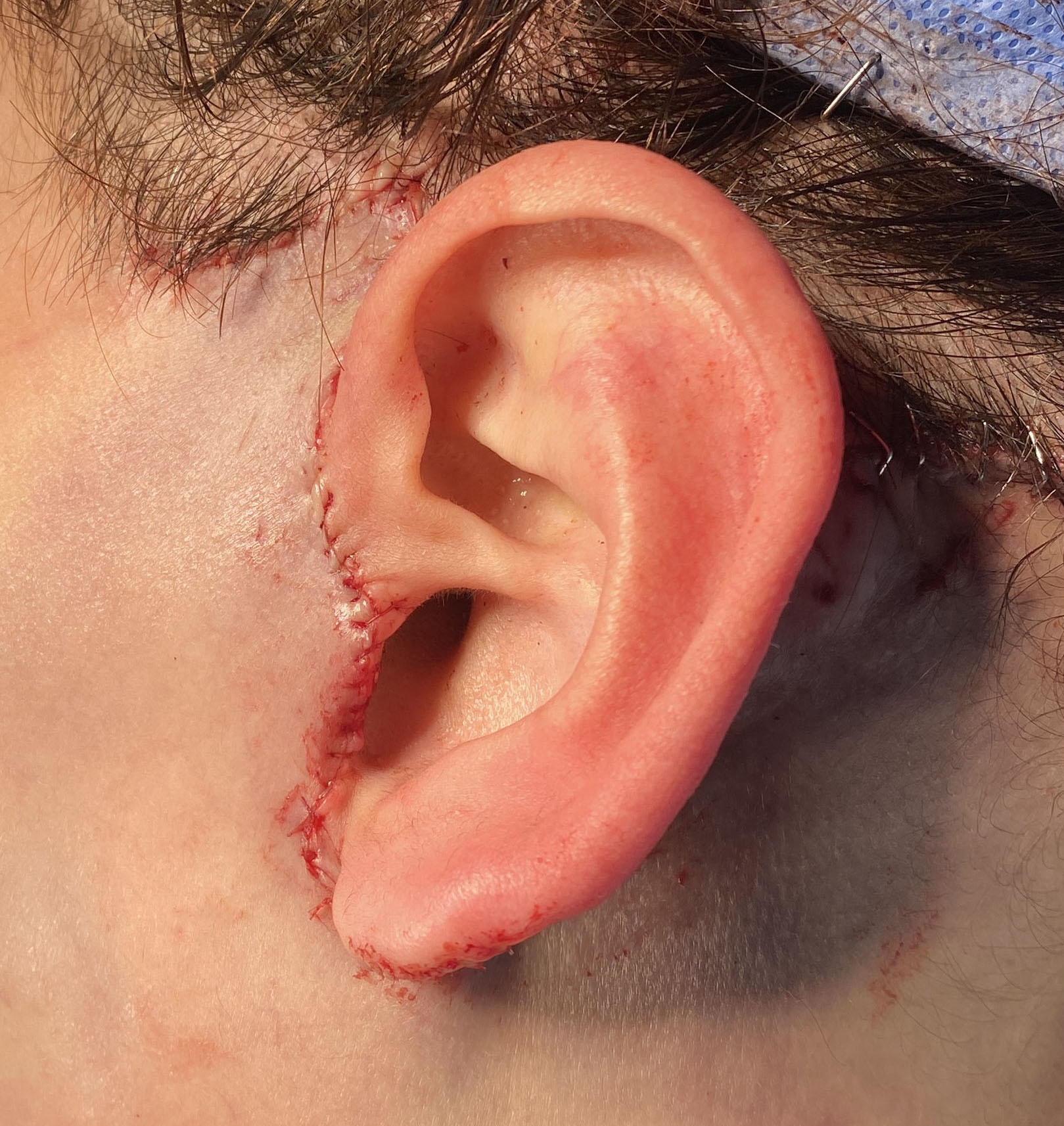
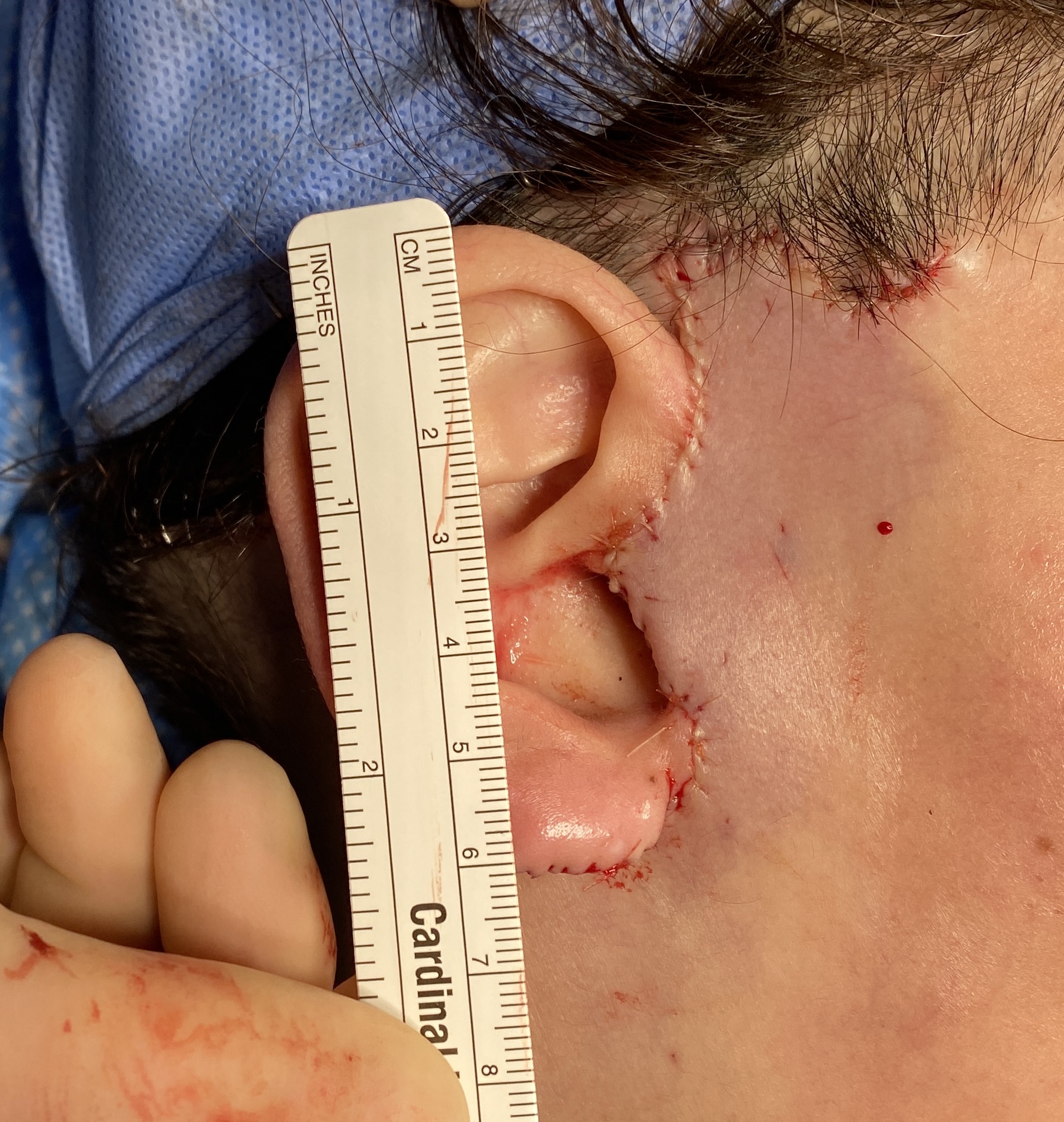
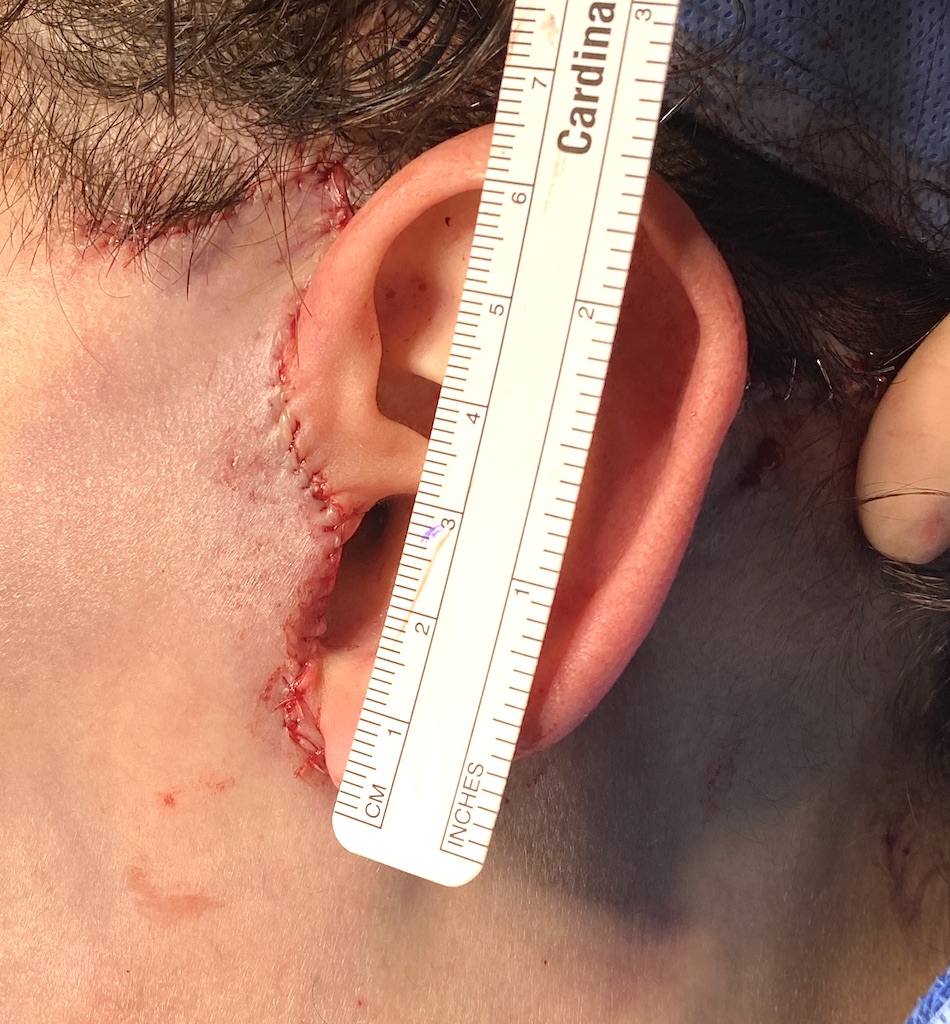
Significant pixie ear deformities from prior facelift.
Pixie ear corrections requiring a secondary facelift with earlobe reductions. her ear height decreased from 78mms down to 65mms
Patient 108
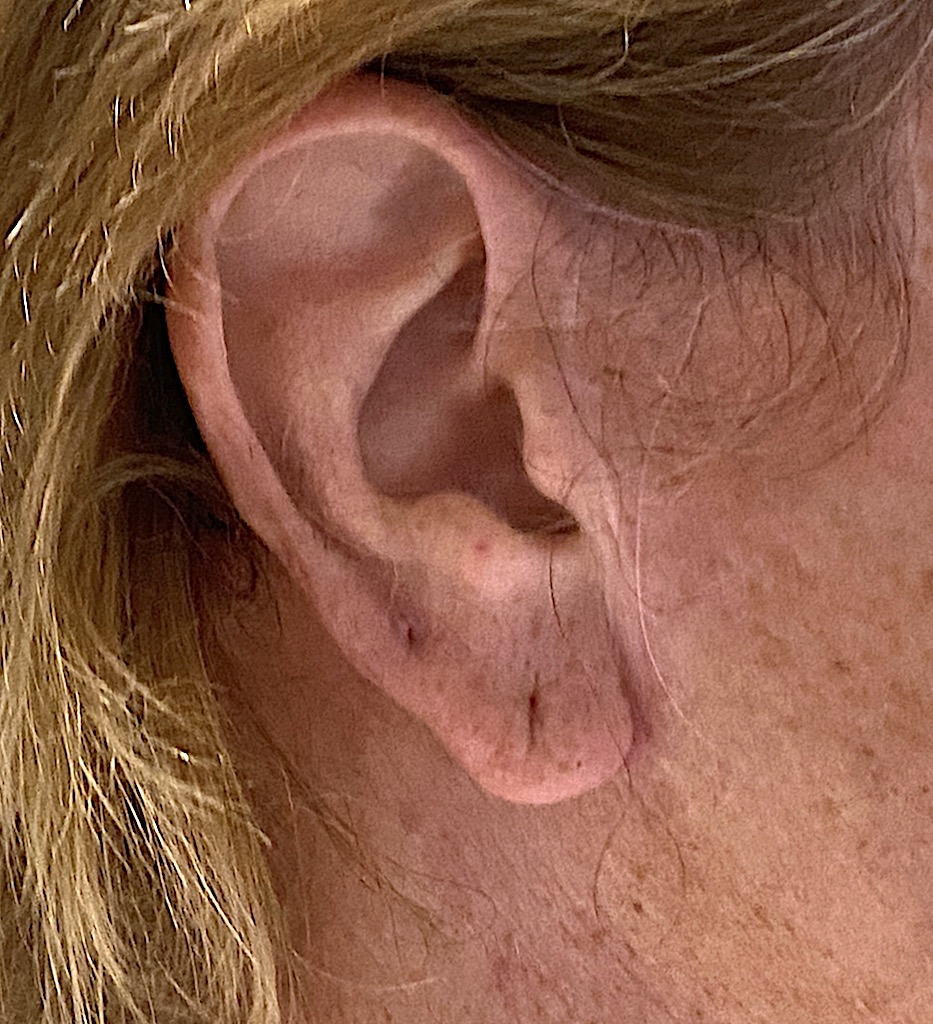
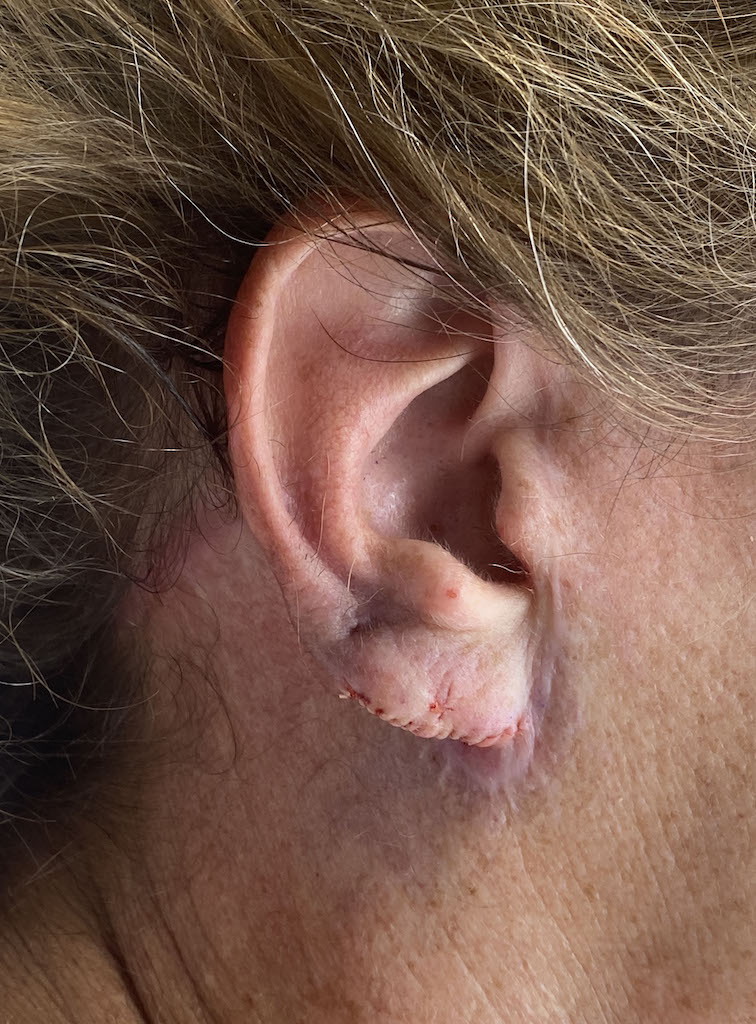
Congenitally long/large earlobes that became more apparent after facelift surgery.
Inferior helical rim excision technique for earlobe reductions combined with piercing closures. (the ear piercings would be too low to use afterwards) New higher piercings can be done six weeks later.


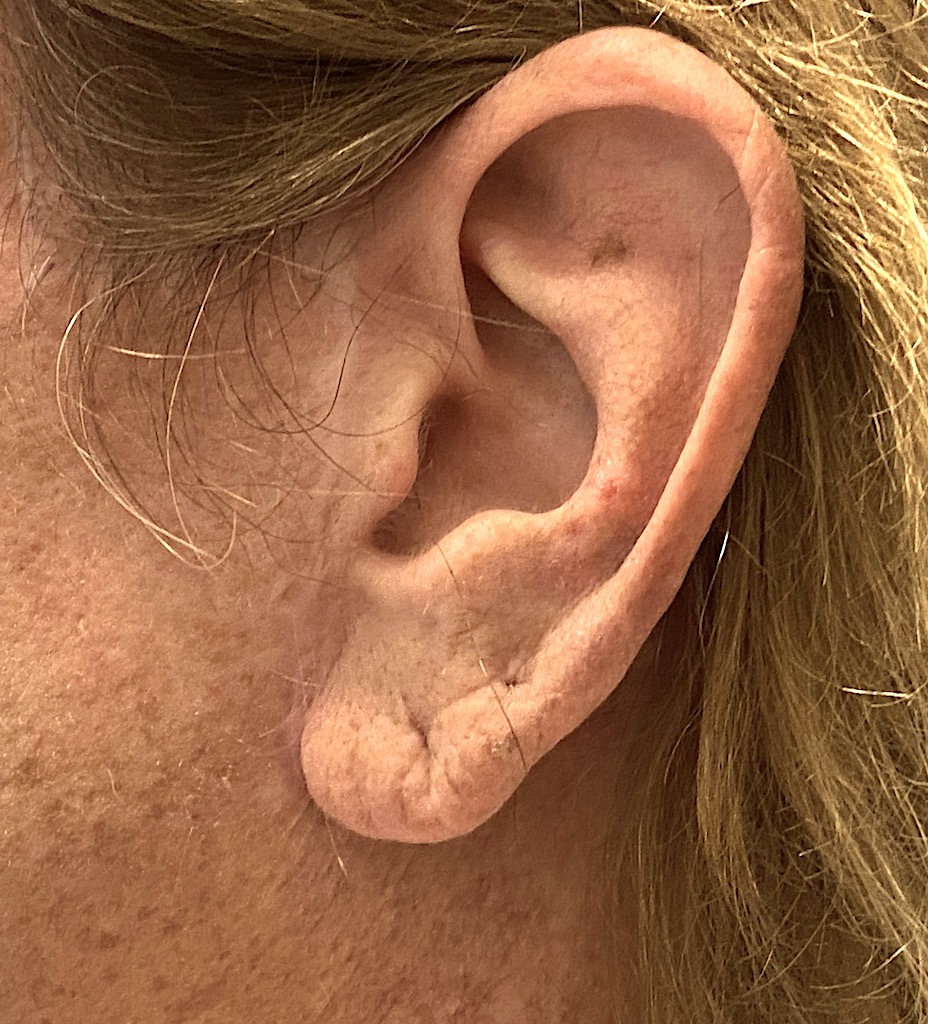
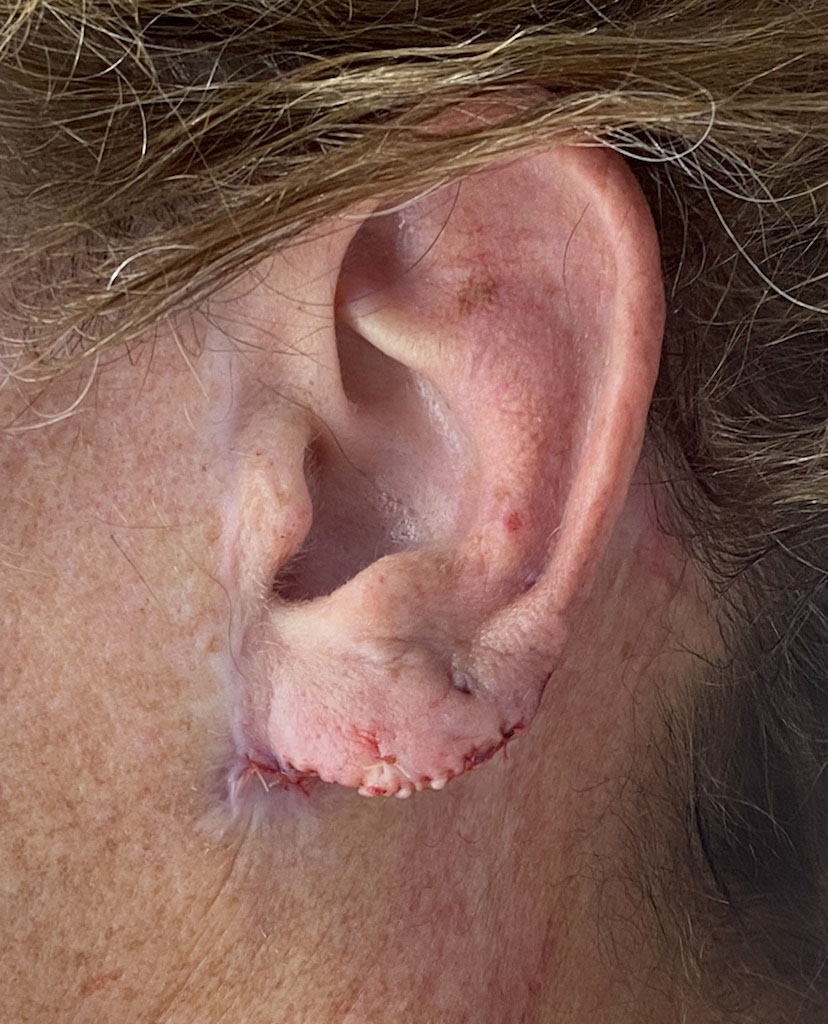
Congenitally long/large earlobes that became more apparent after facelift surgery.
Inferior helical rim excision technique for earlobe reductions combined with piercing closures. (the ear piercings would be too low to use afterwards) New higher piercings can be done six weeks later.
Patient 109
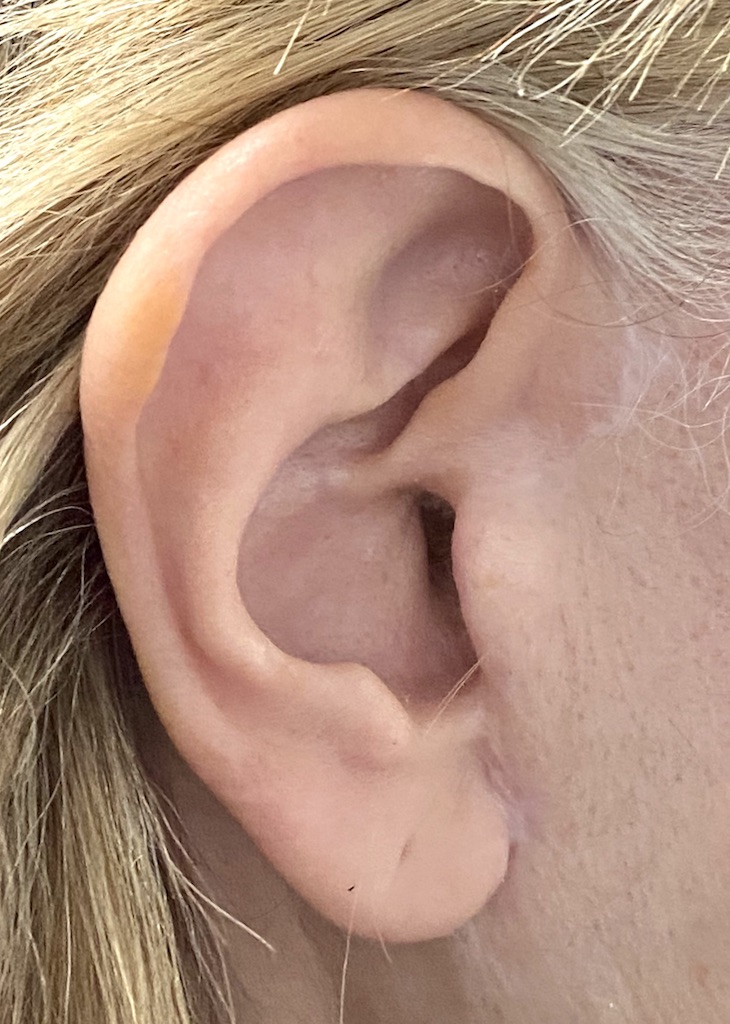
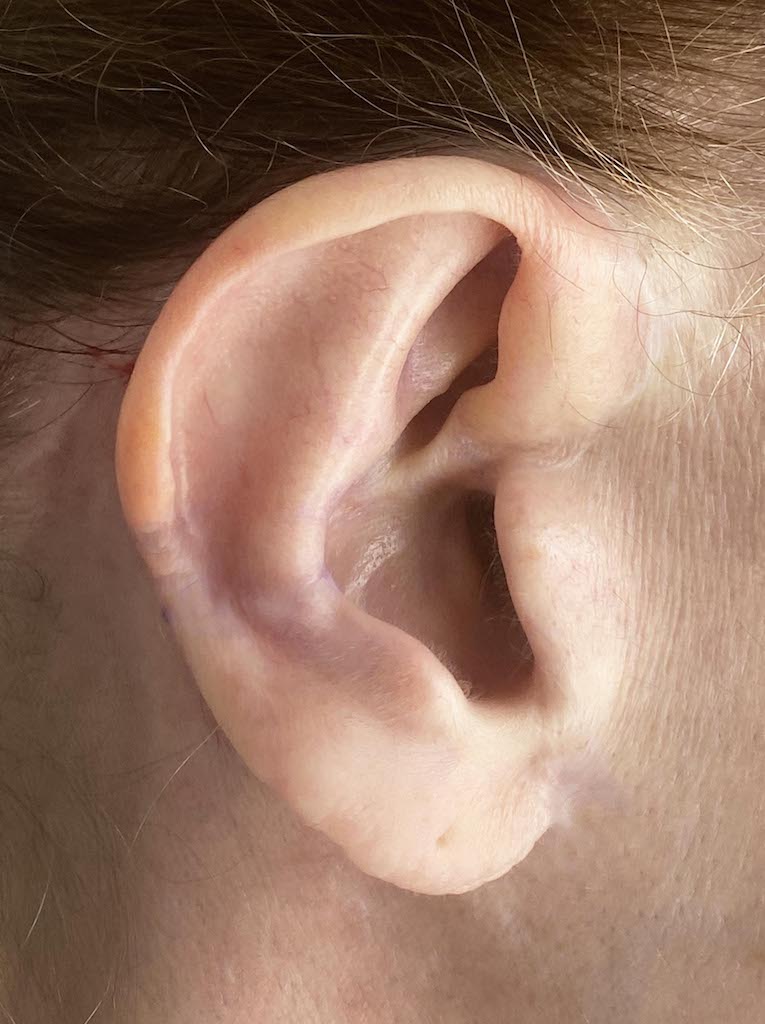
Desire for a 2nd vertical ear reduction after a successful initial vertical reduction using a combined mid-ear and earlobe reductions. (78mm height t0 65mm)(
2nd stage vertical ear reduction with a secondary mid-ear wedge excision combined with an upper setback otoplasty. (now 58mms in height)


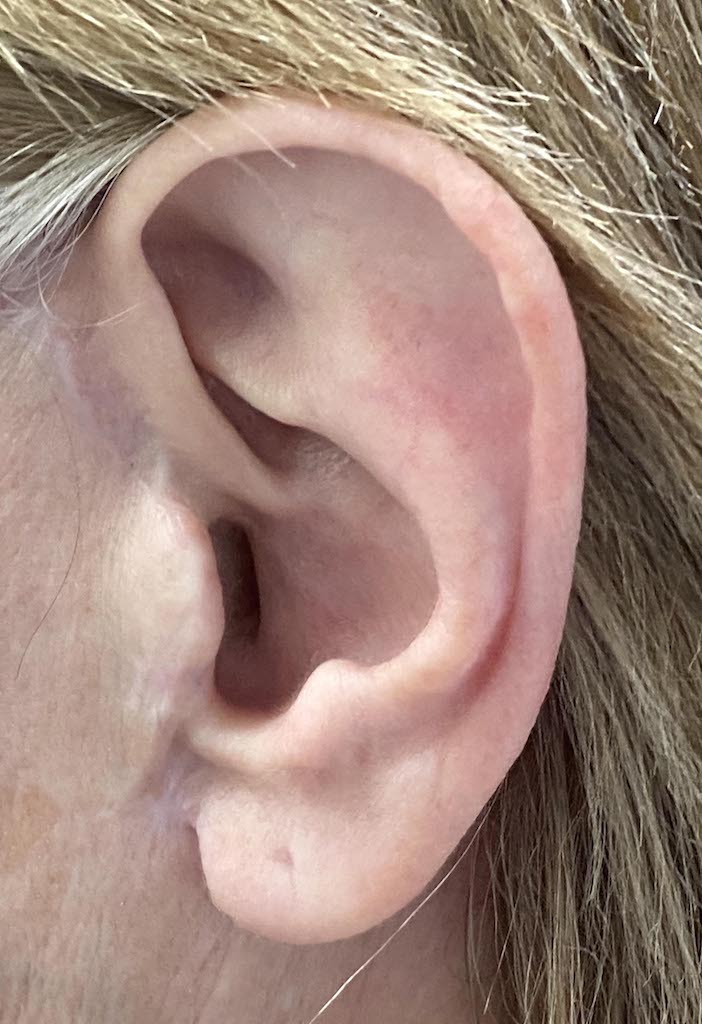
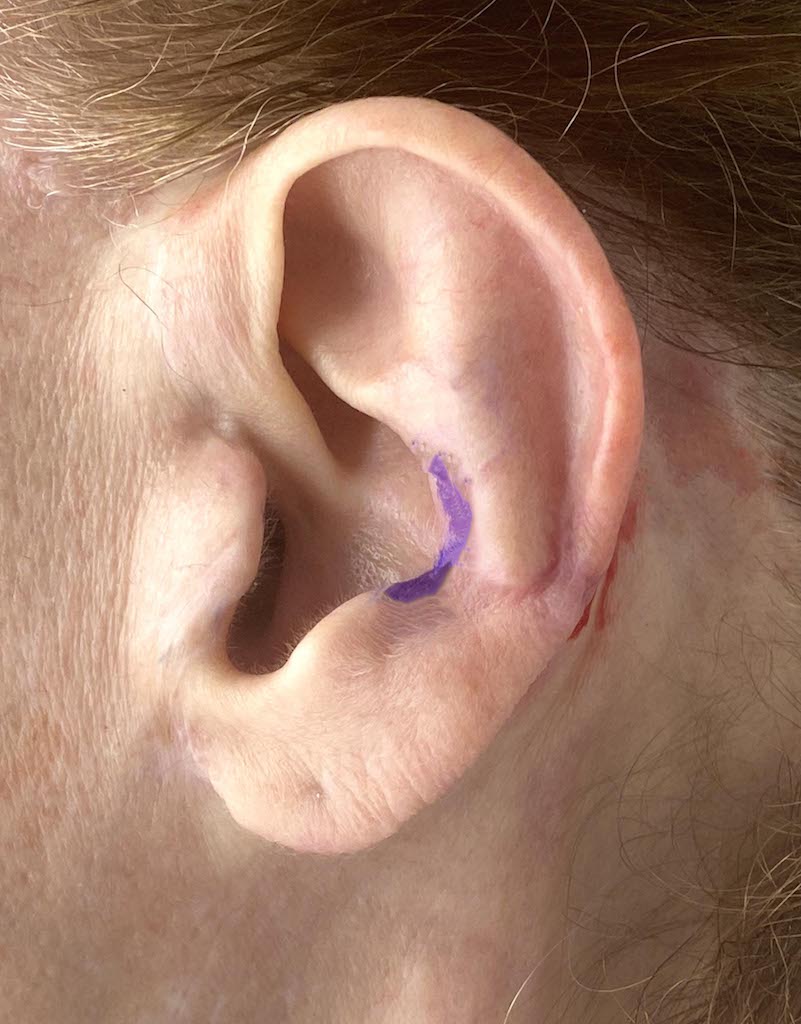

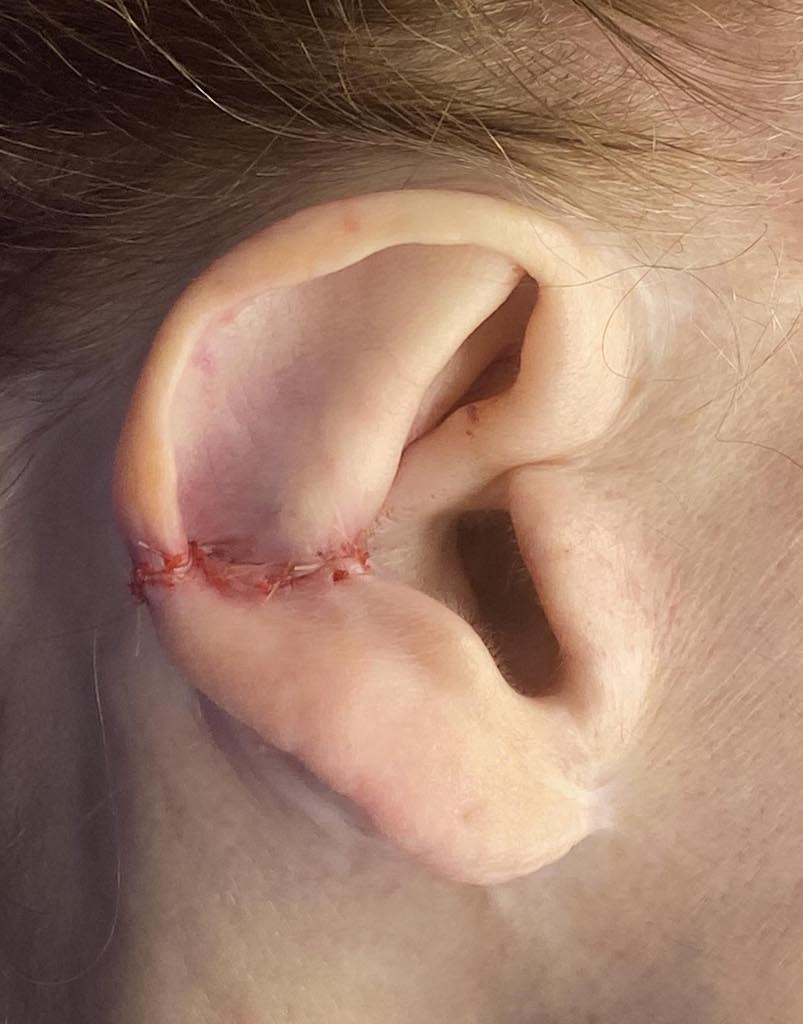
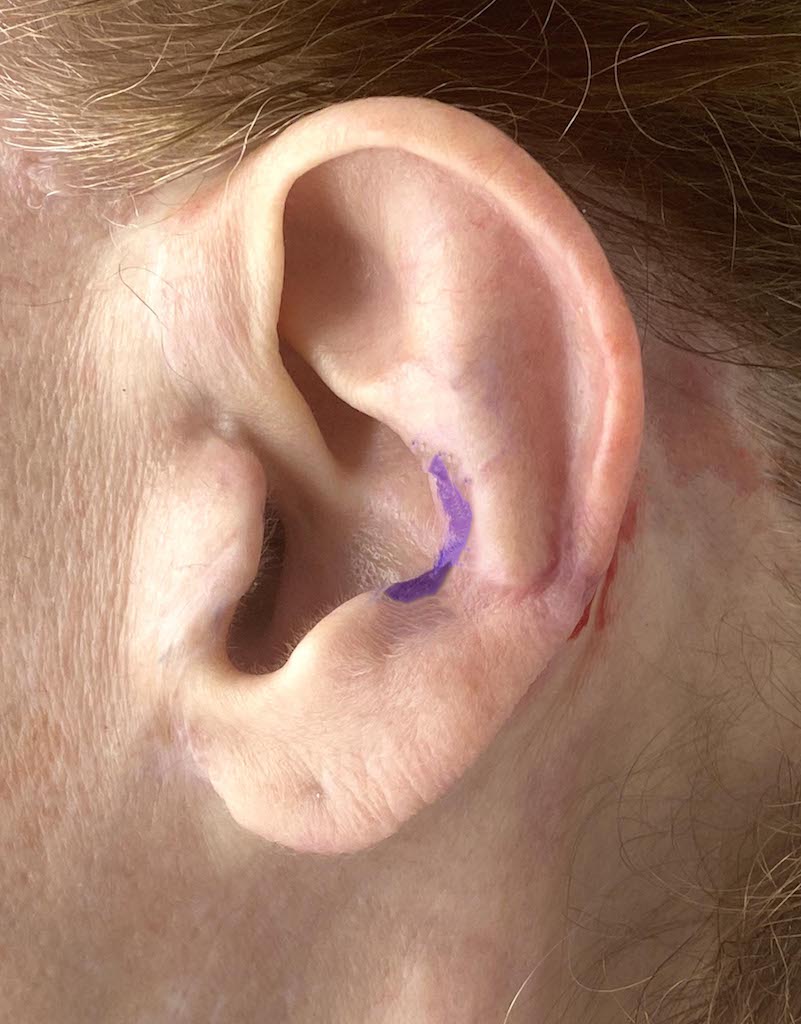
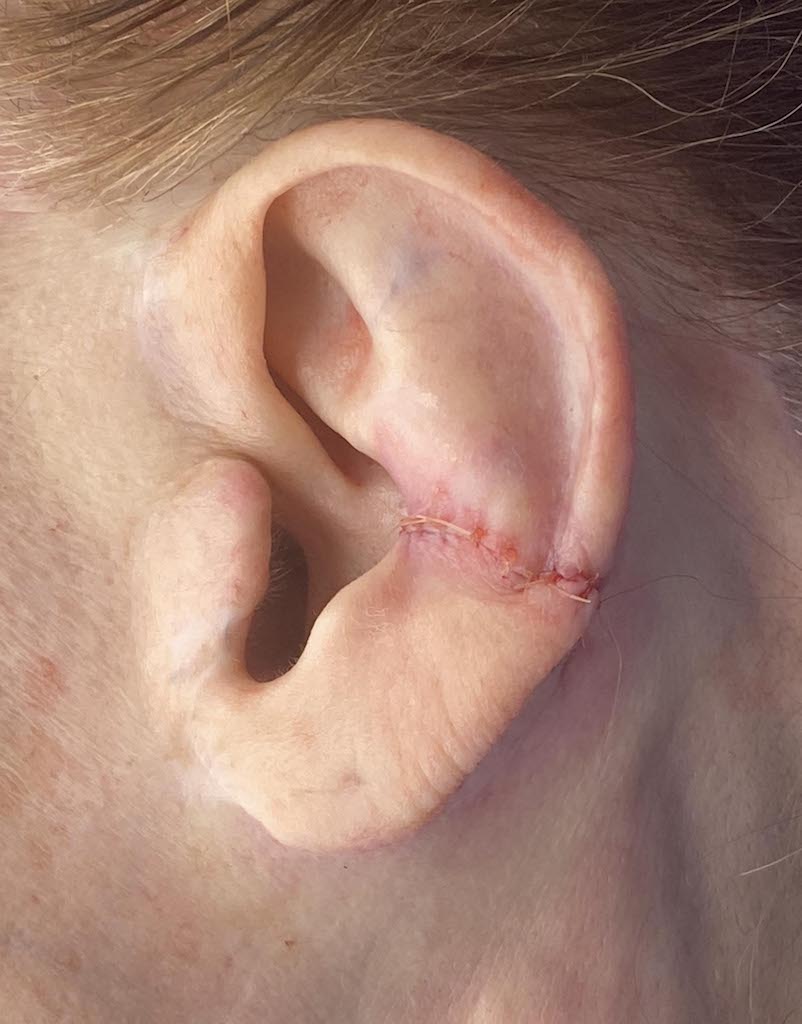
Desire for a 2nd vertical ear reduction after a successful initial vertical reduction using a combined mid-ear and earlobe reductions. (78mm height t0 65mm)(
2nd stage vertical ear reduction with a secondary mid-ear wedge excision combined with an upper setback otoplasty. (now 58mms in height)
Patient 110
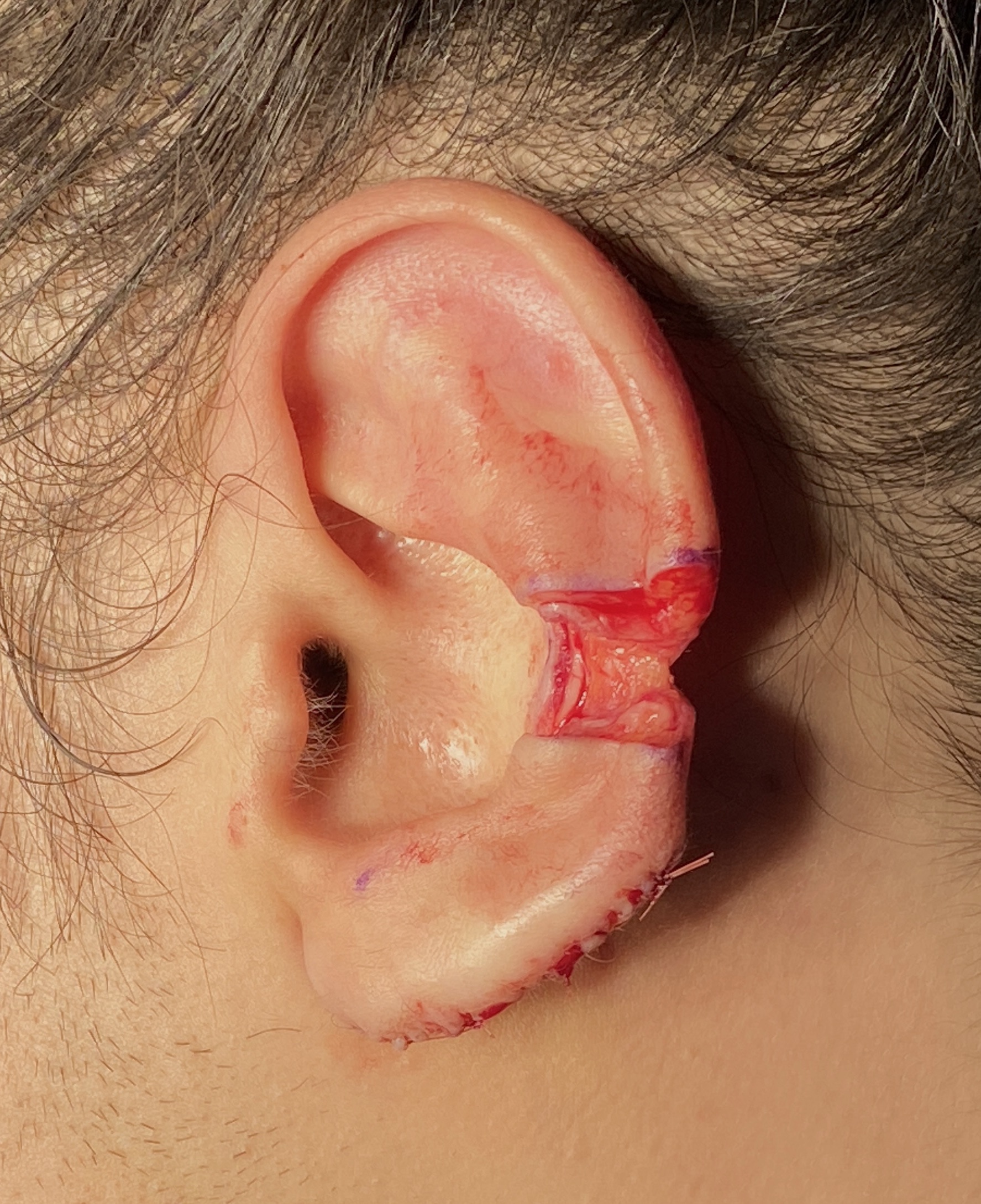
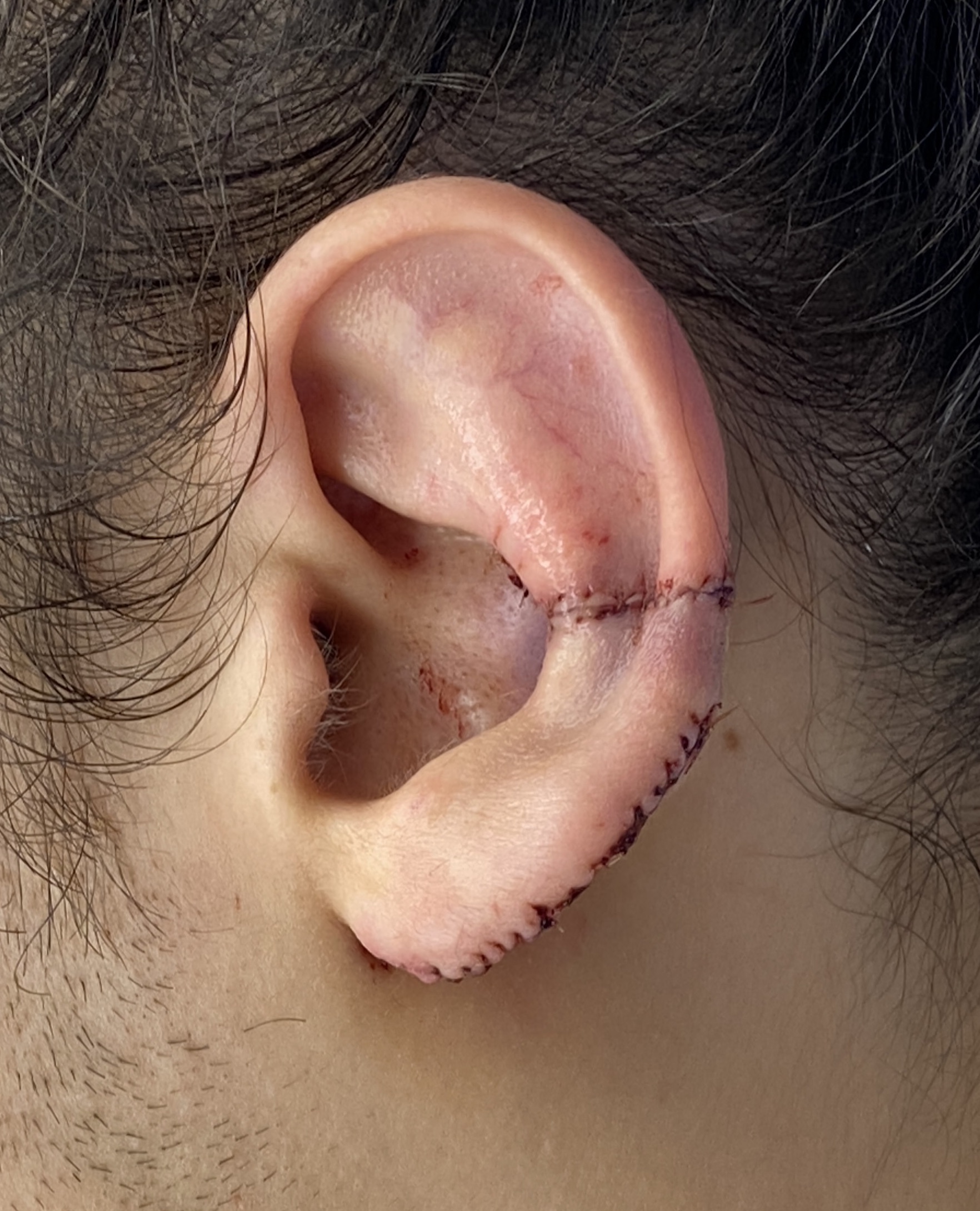
Desire for large vertical ear reduction.
Vertical (macrotia) ear reductions using a combined mid-ear (due to large concha) and earlobe reduction technique. (4 month result)


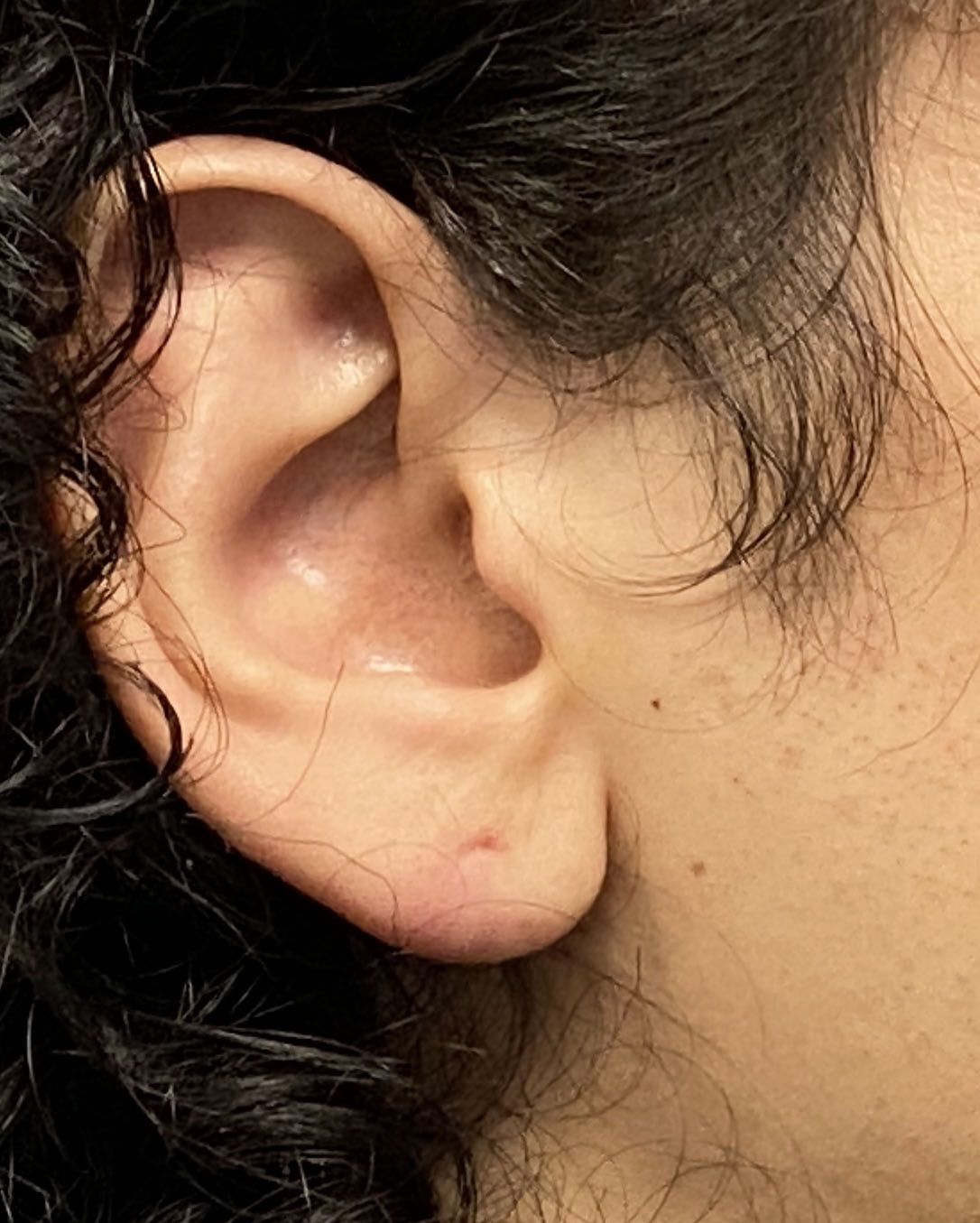
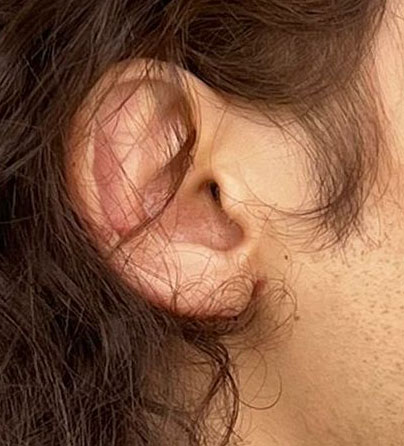
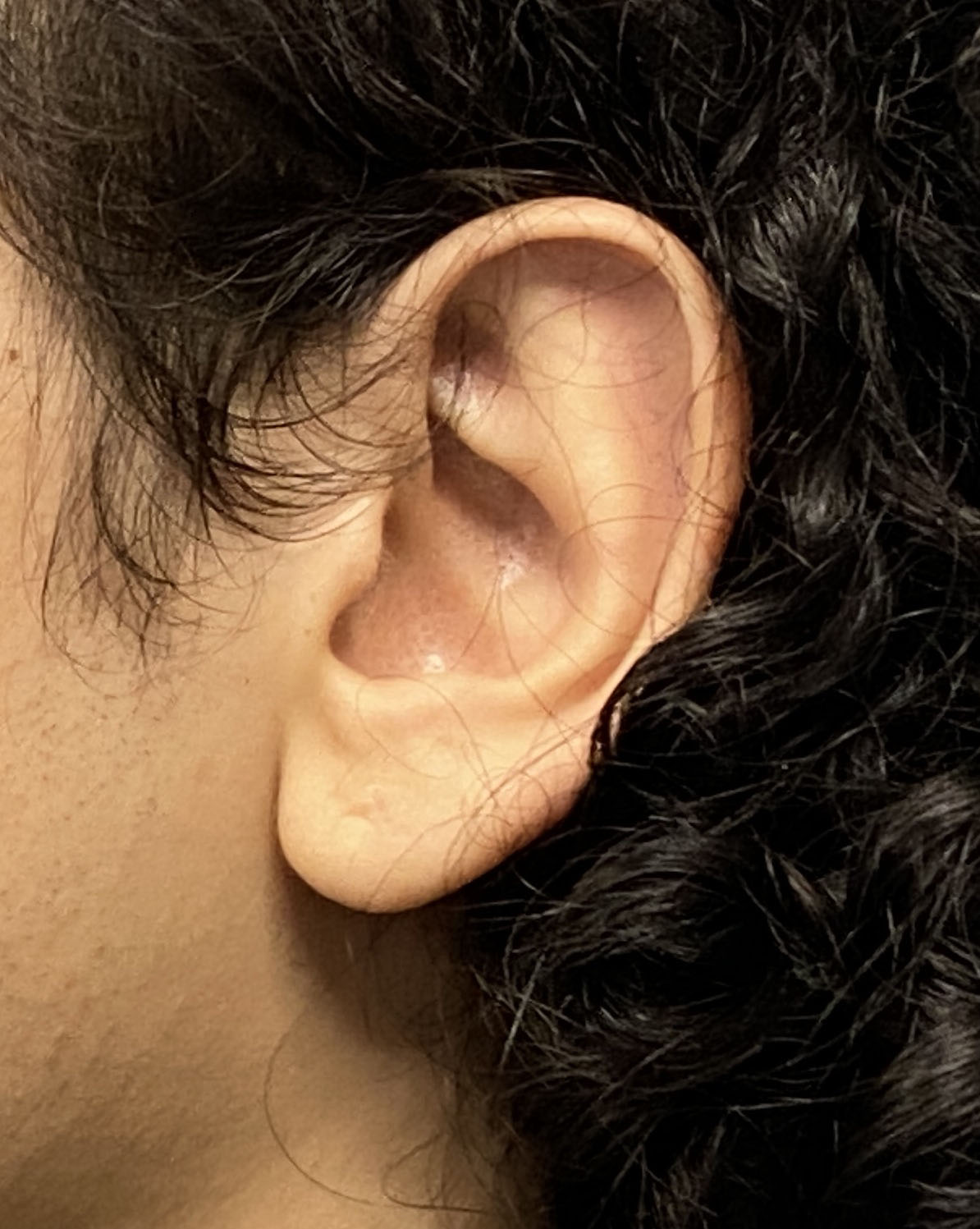
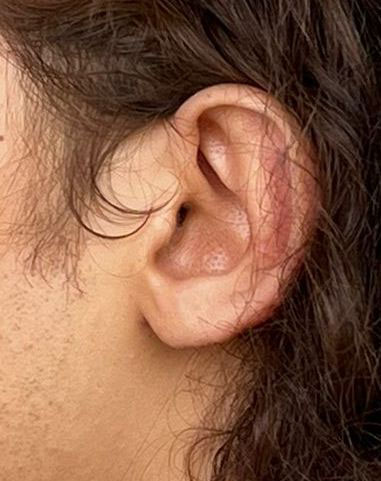
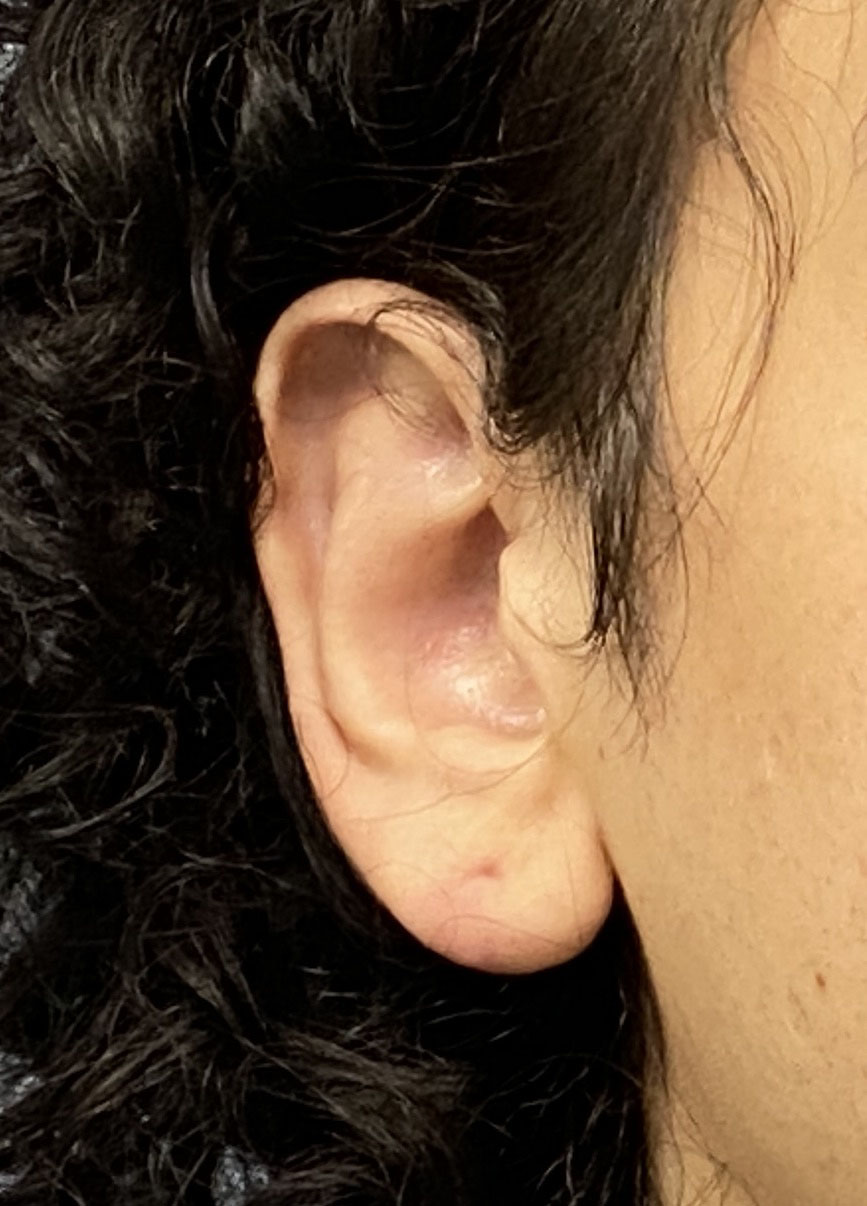
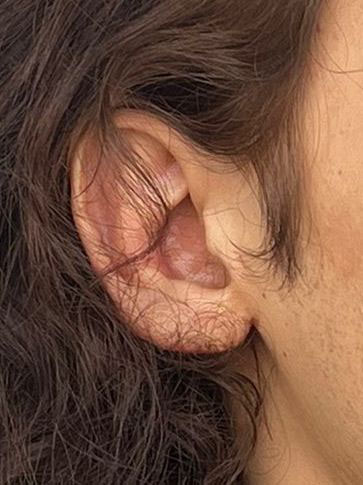
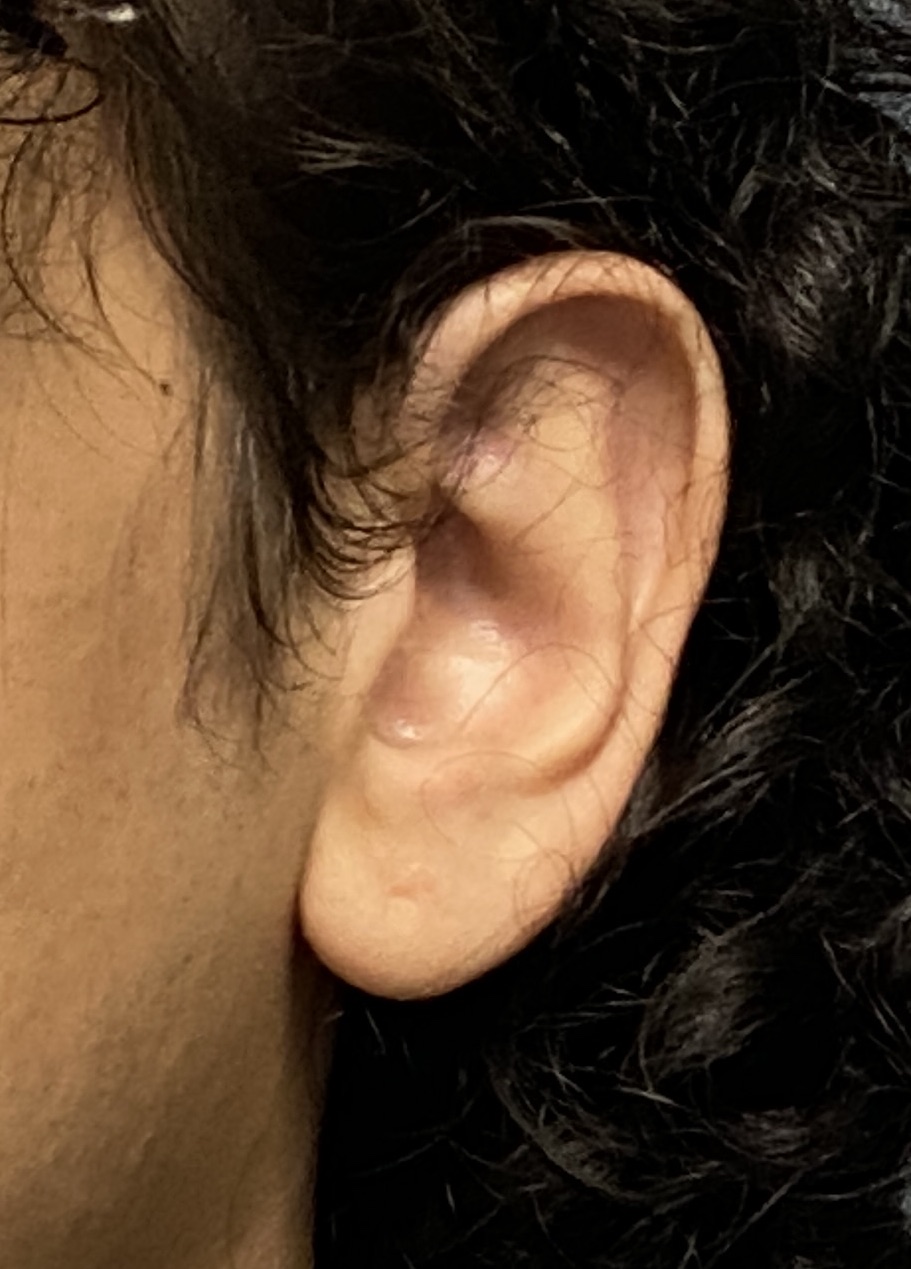
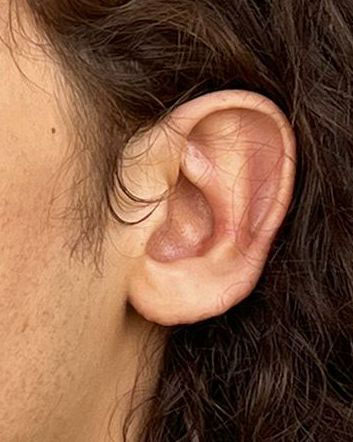
Desire for large vertical ear reduction.
Vertical (macrotia) ear reductions using a combined mid-ear (due to large concha) and earlobe reduction technique. (4 month result)
Patient 111
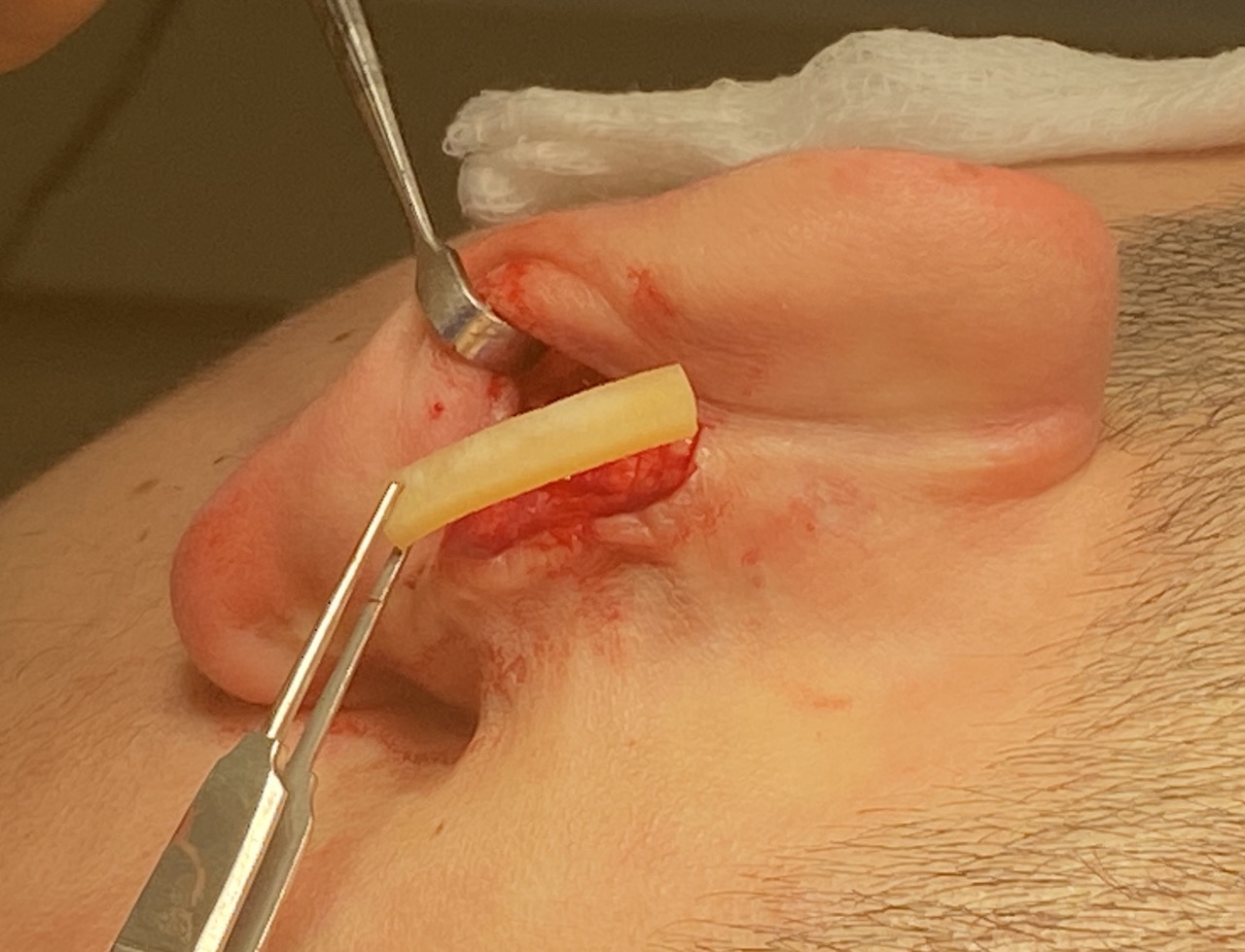
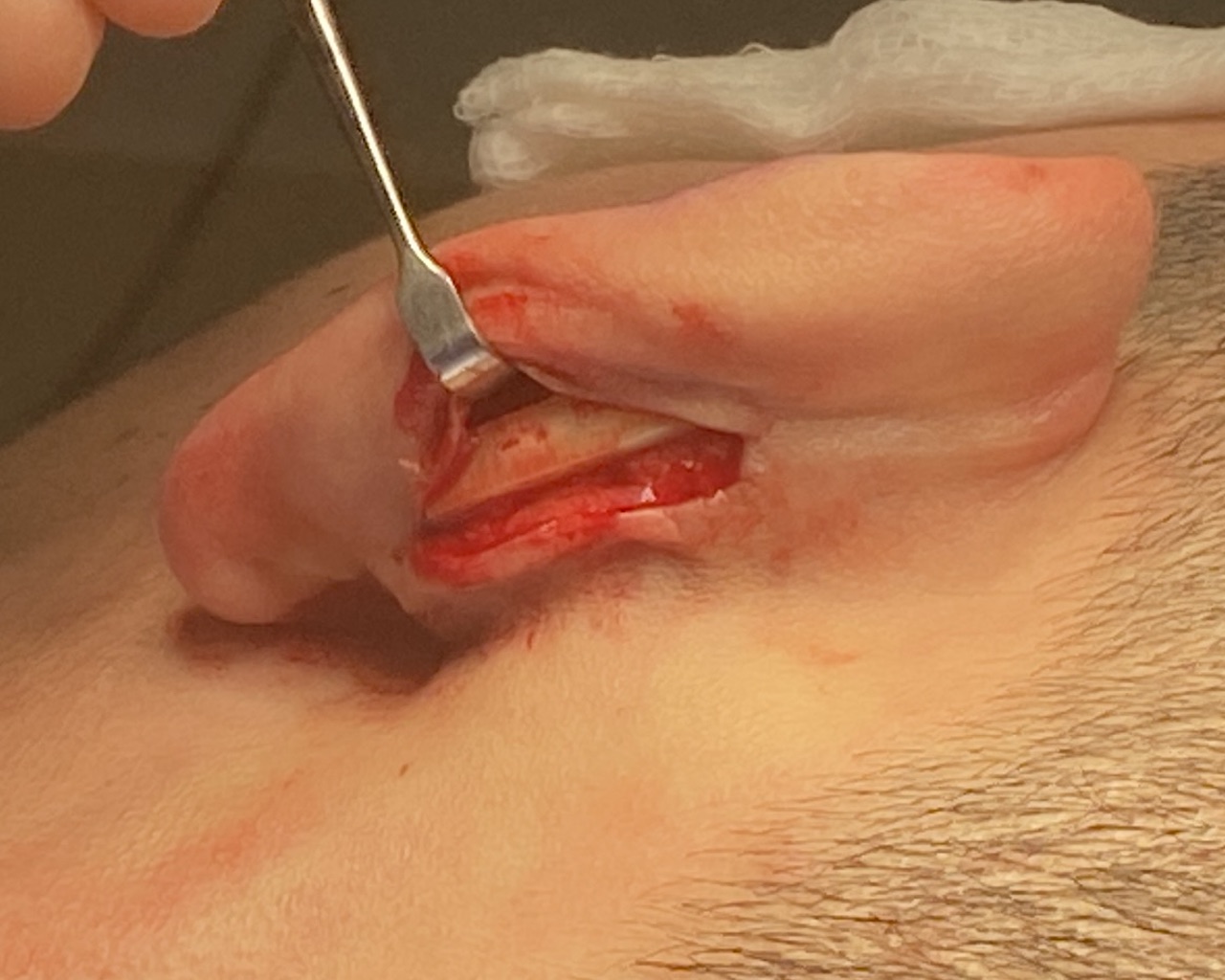
Male who had a setback otoplasty 9 months previously. The center part of his ear was pulled back too far. (loss of helical rim show)
Subtotal reverse otoplasty with a postauricular release and placement of an interpositional cadaveric rib cartilage graft.


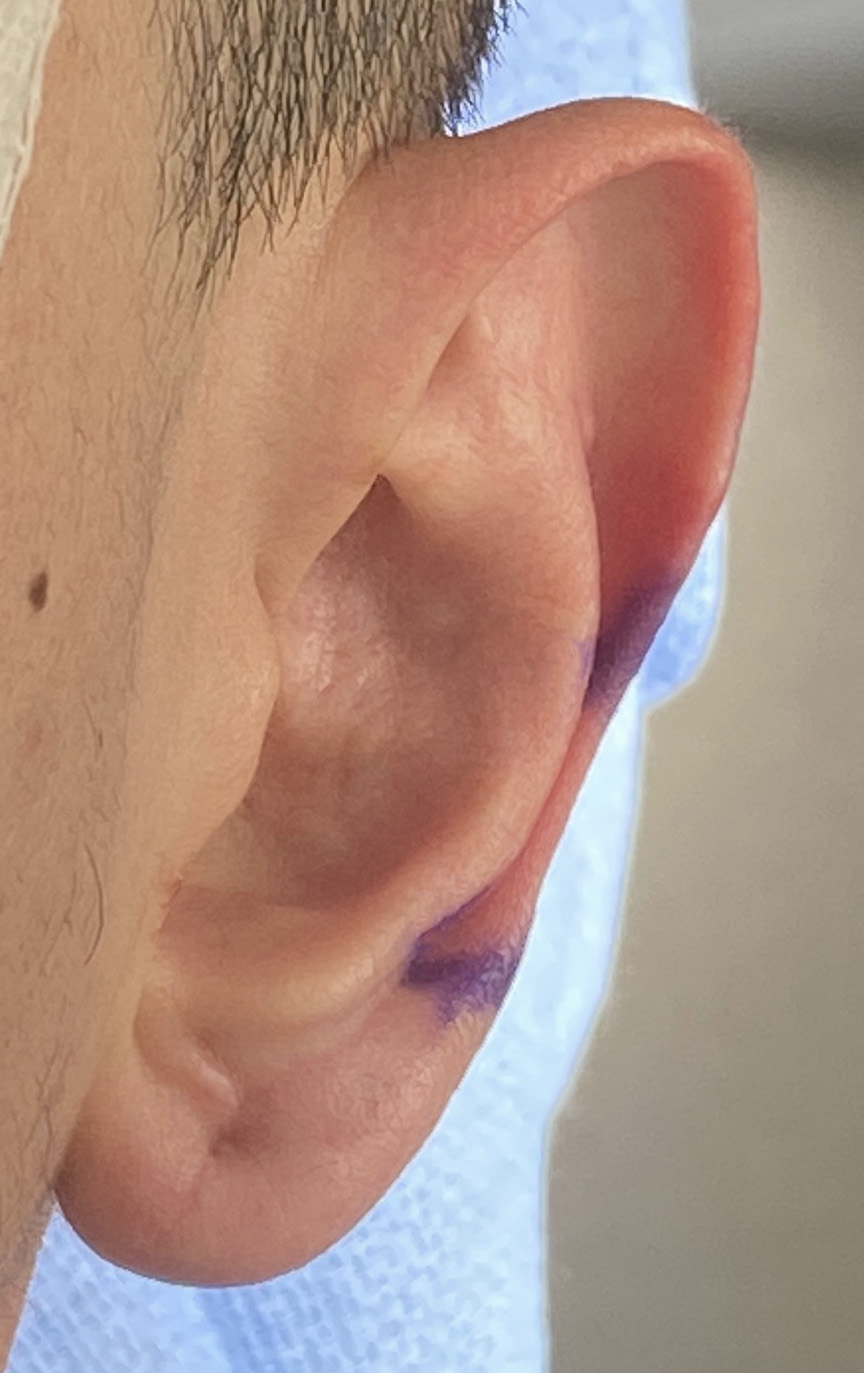
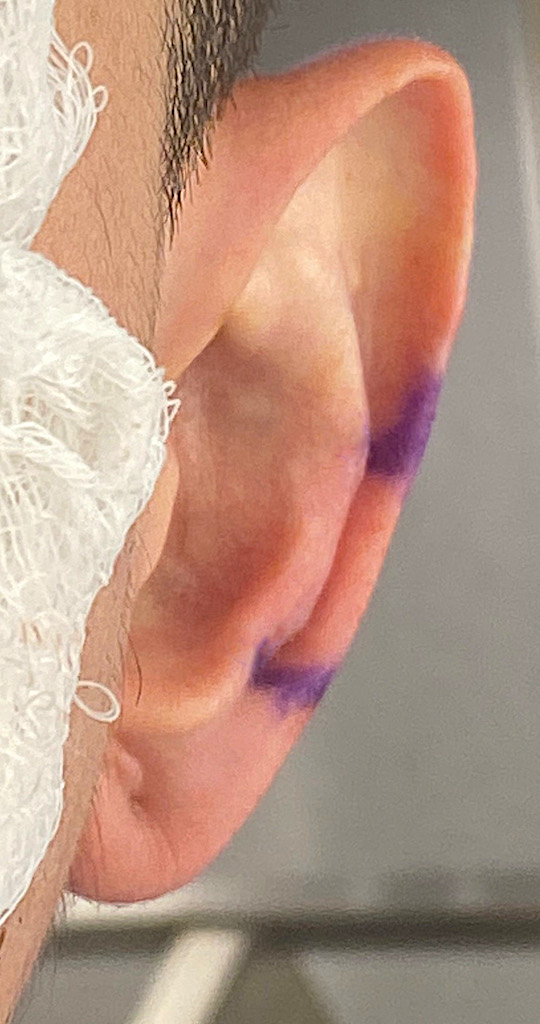
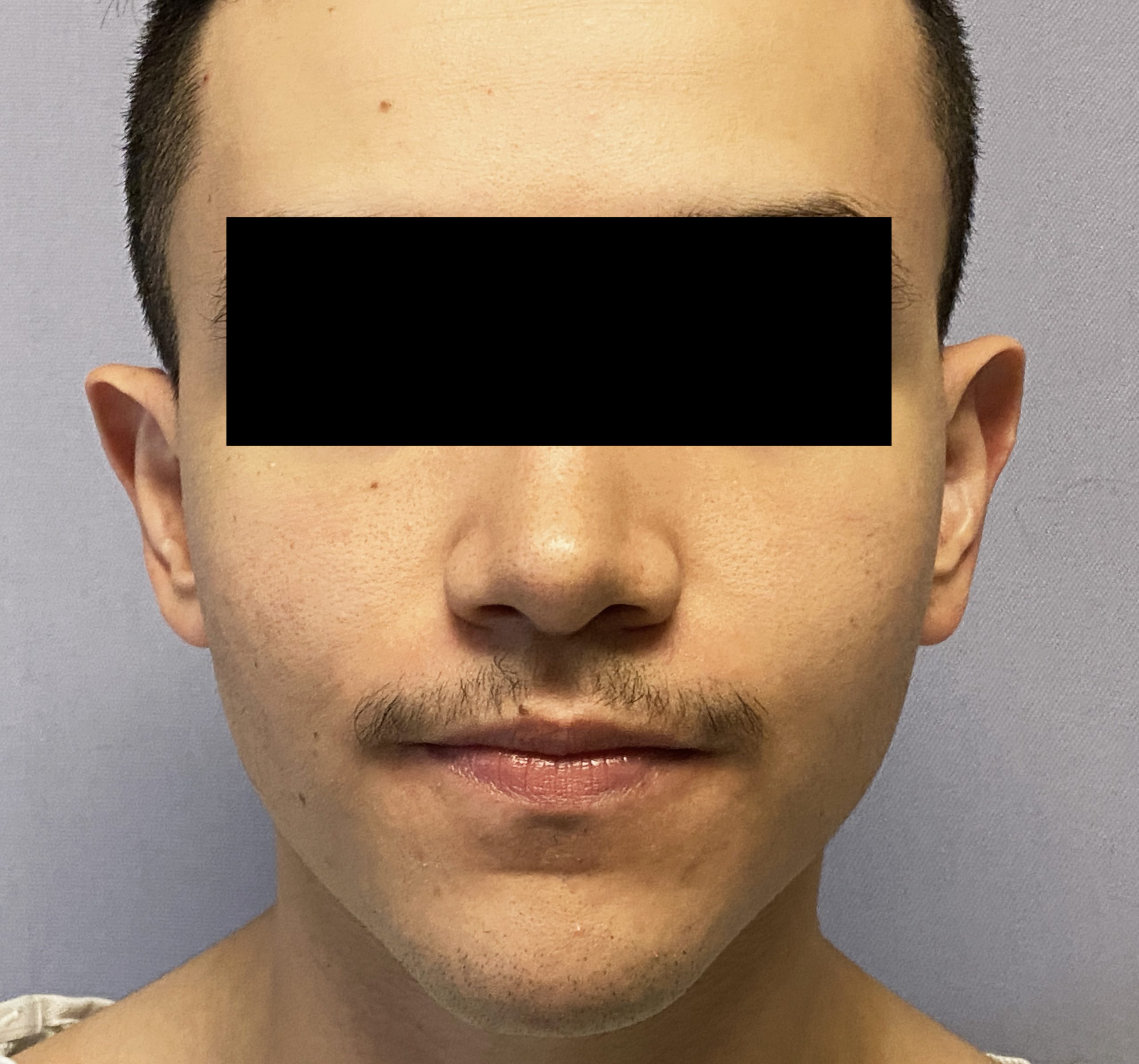
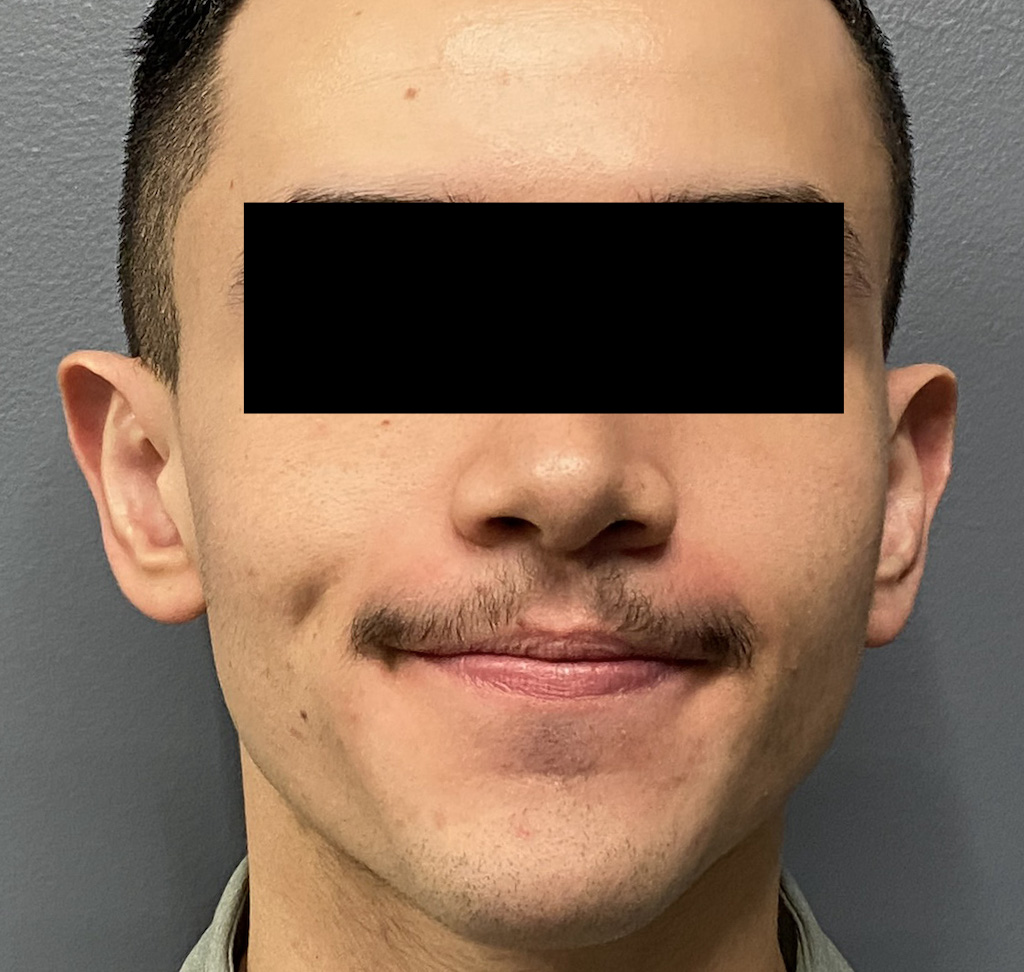
Male who had a setback otoplasty 9 months previously. The center part of his ear was pulled back too far. (loss of helical rim show)
Subtotal reverse otoplasty with a postauricular release and placement of an interpositional cadaveric rib cartilage graft.
Patient 112
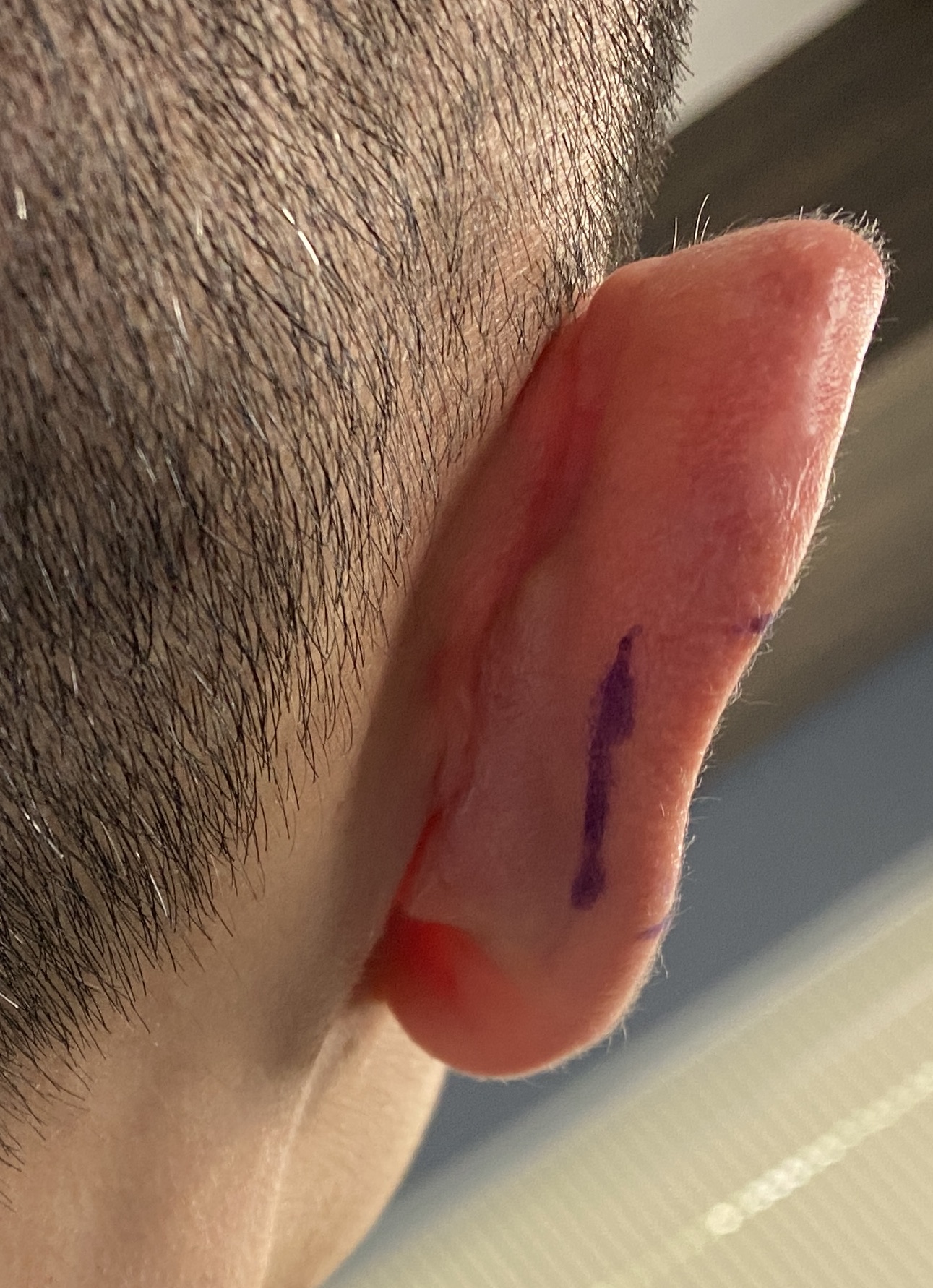
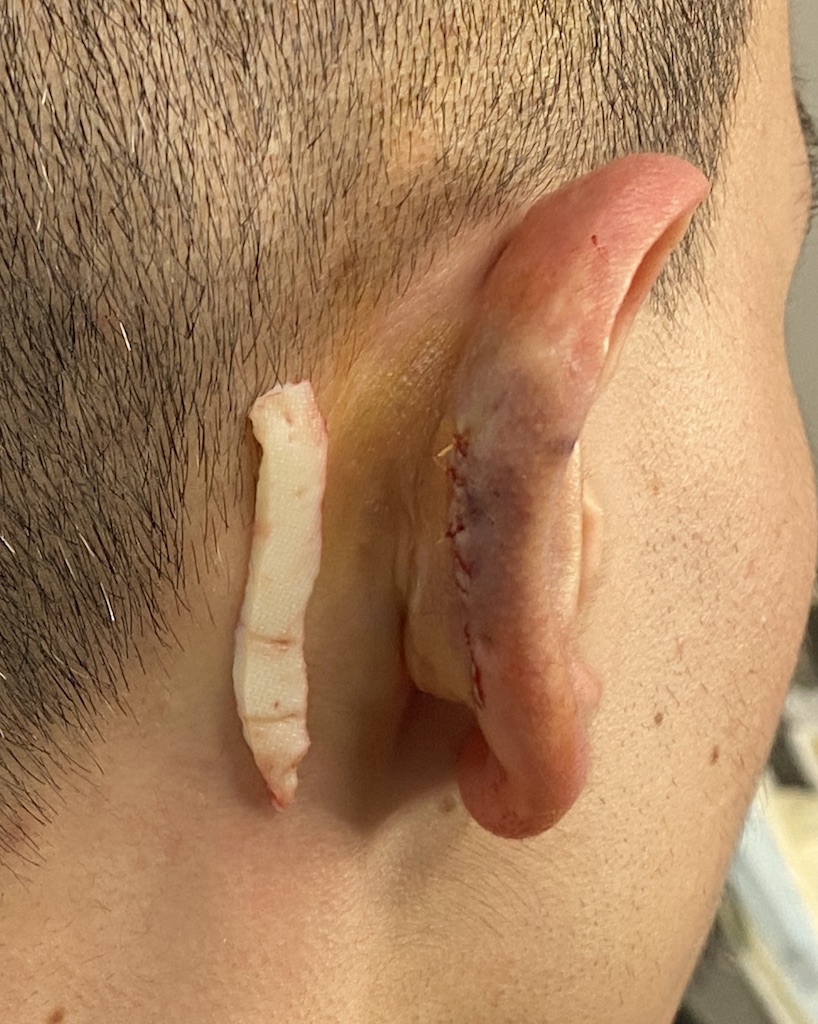
Desire to correct a helical rim indentation of the right ear.
Placement of a dermal graft to the helical rim from a postauricular incision.



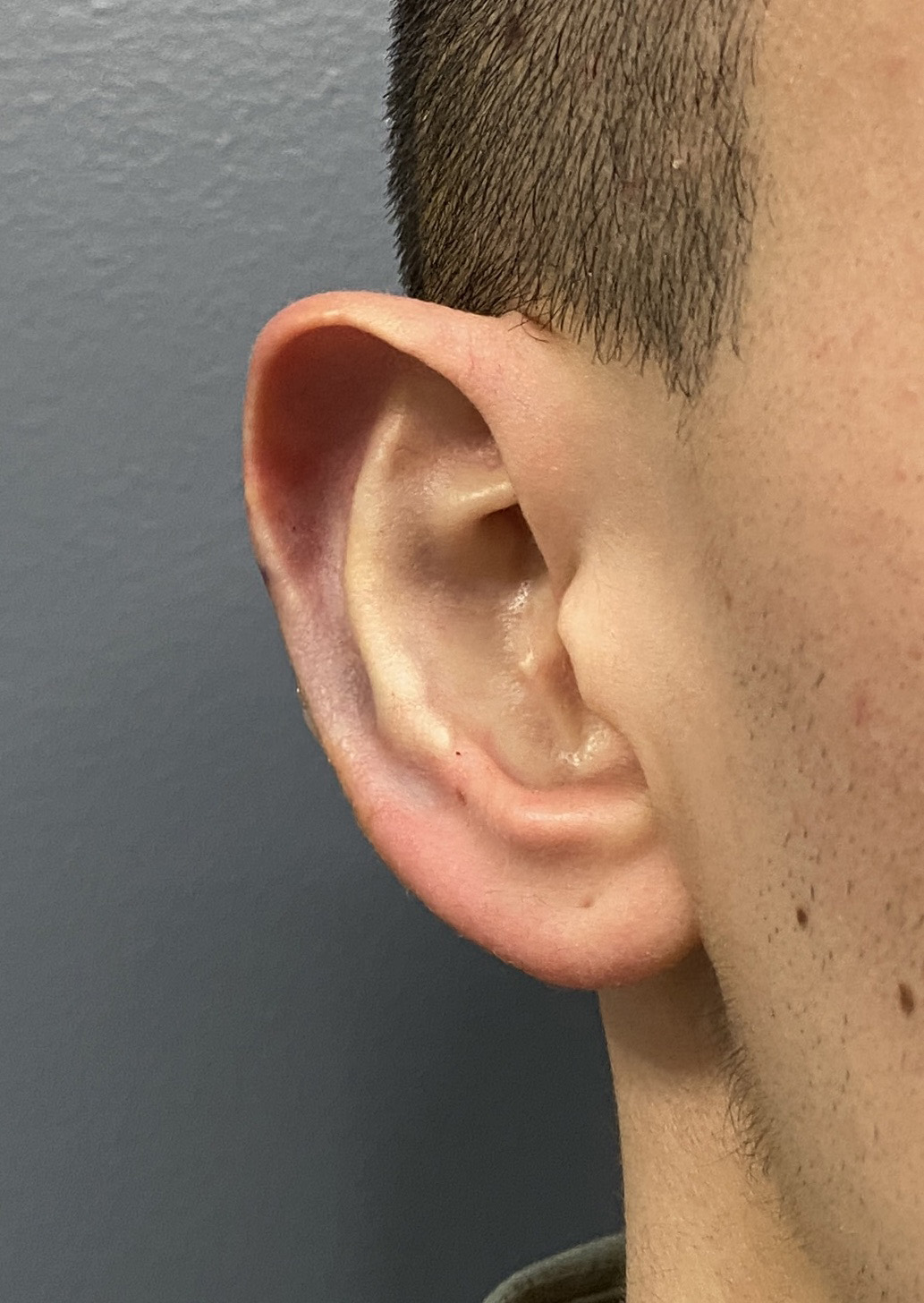
Desire to correct a helical rim indentation of the right ear.
Placement of a dermal graft to the helical rim from a postauricular incision.
Patient 113
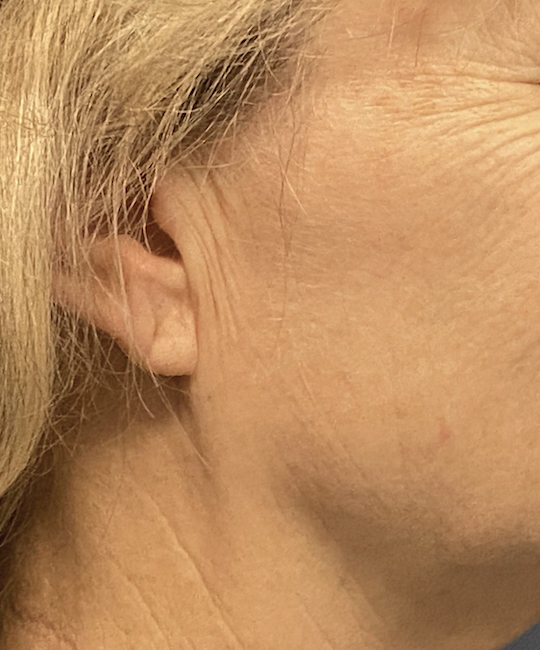
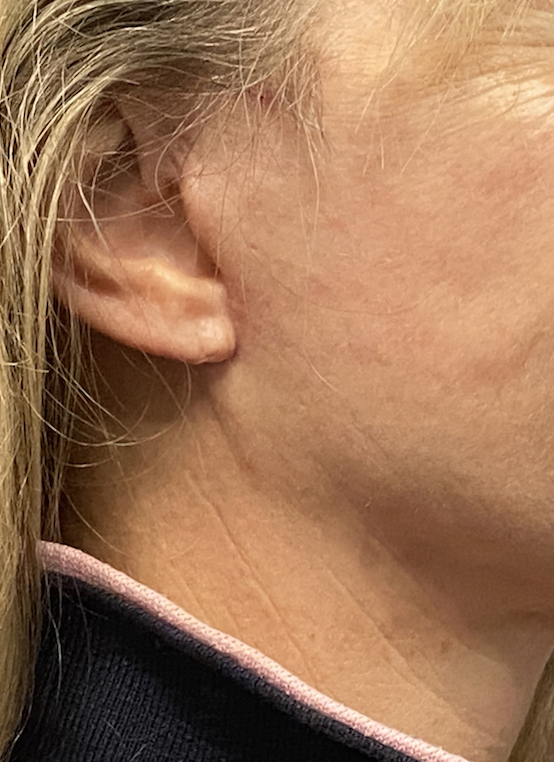
Desire for lower face rejuvenation with long earlobes.
Earlobe reductions as part of a lower facelift procedure.


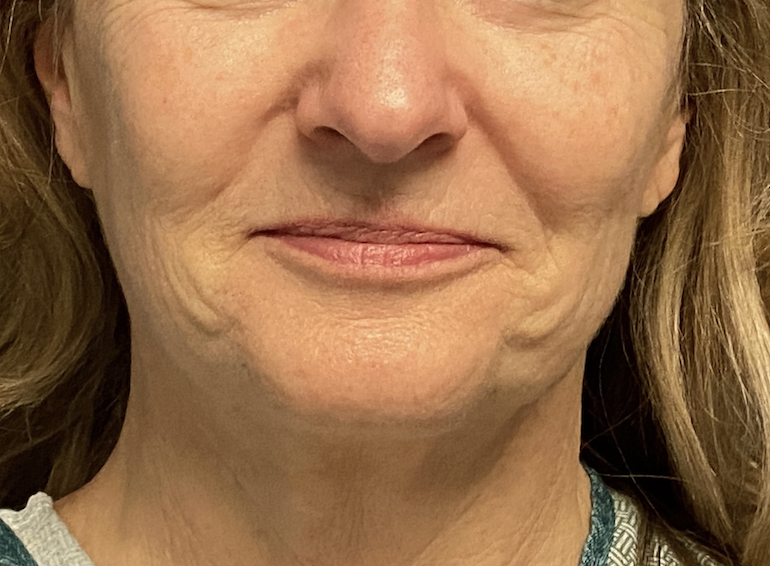
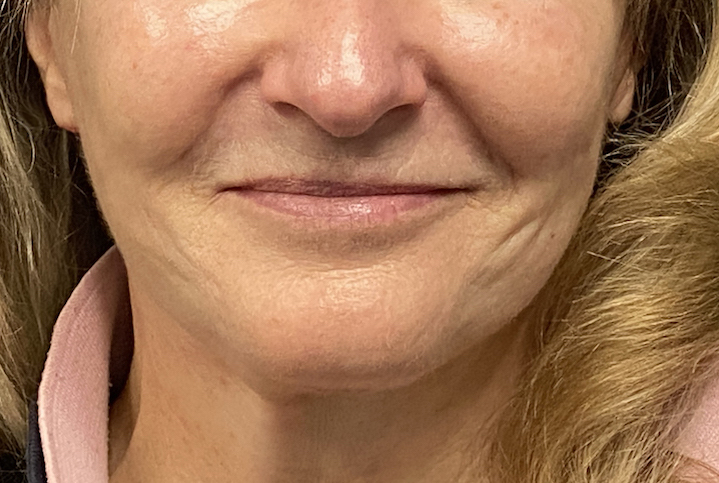
Desire for lower face rejuvenation with long earlobes.
Earlobe reductions as part of a lower facelift procedure.

North Meridian Medical Building
Address:
12188-A North Meridian St.
Suite 310
Carmel, IN 46032
Contact Us:
Phone: (317) 706-4444
WhatsApp: (317) 941-8237
